5 of the best Chile Travel Books and Guides
From its colonial architecture and musical heritage to its culinary delicacies and abundance of natural wonders, South America stirs the imagination unlike anywhere else on earth. Stretching along the continent’s western edge, the nation of Chile has inspired a large volume of travel literature down the years, including both traditional guide books and travelogue-style memoirs.
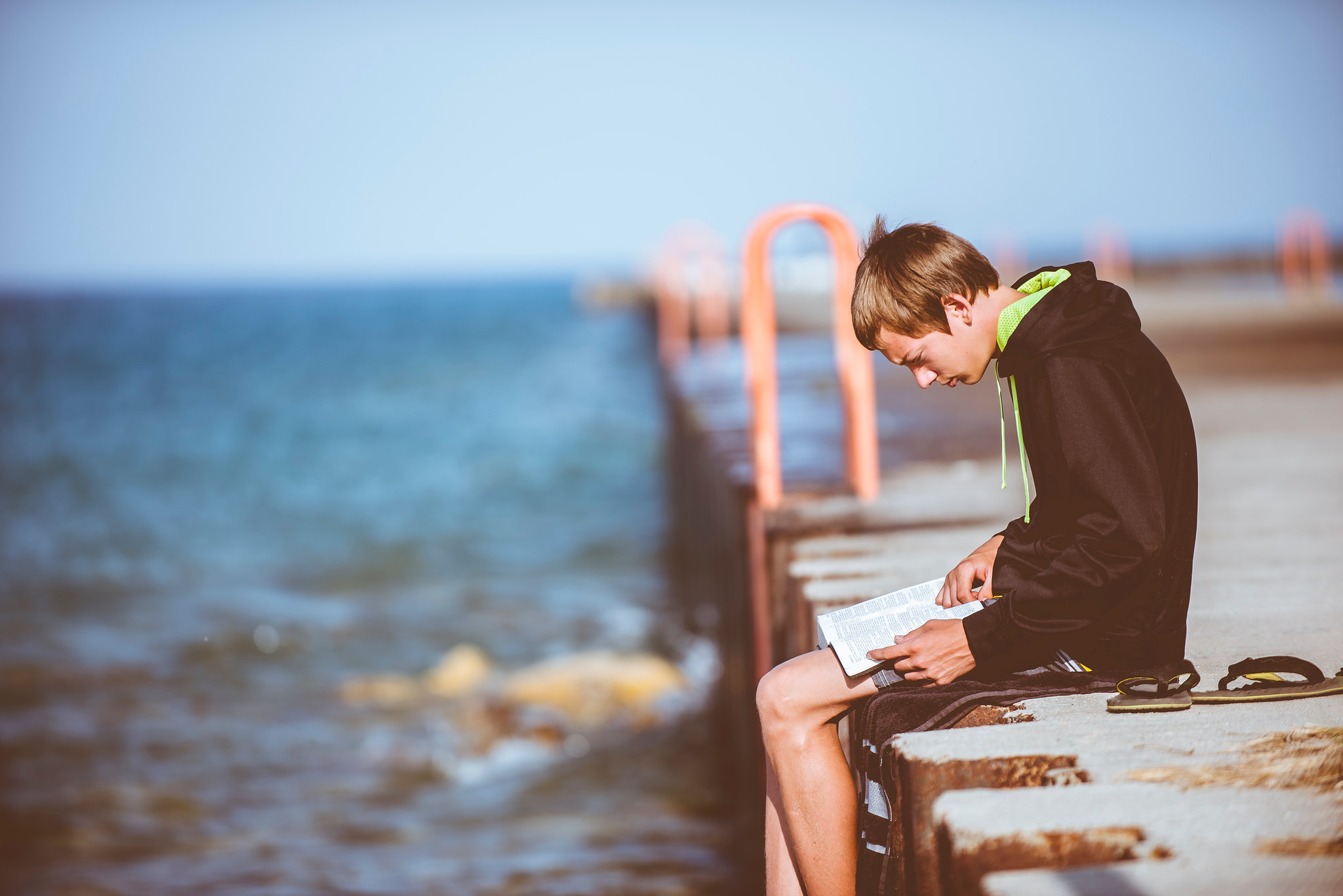
(Photo: perzon seo via Flickr / CC BY 2.0)
If you’re planning to visit Chile’s long, narrow expanse, there’s no better way to prepare than to immerse yourself in its rich culture and history by reading some of the best tomes written about the country. Here are 5 of our favourite non-fiction Chile travel books and guides, including both classics and recent releases.
Lonely Planet Chile & Easter Island (2018)
The latest edition of Lonely Planet’s Chile & Easter Island guide is as comprehensive as we’ve come to expect from the iconic travel publisher. Covering the entire country, from its northern reaches to the icy depths of southern Patagonia, as well as the remote and volcanic Easter Island, the guide provides impartial, up-to-date tips about what to see and do here – as well as what you might want to skip – plus cultural insights and other essential info, catering to all budgets and tastes. There are also colour maps and itineraries to help stir the travel juices.
PUBLISHER Lonely Planet AUTHORS Cathy Brown, Carolyn McCarthy, Kevin Raub & Mark Johanson BUY AT amazon.com
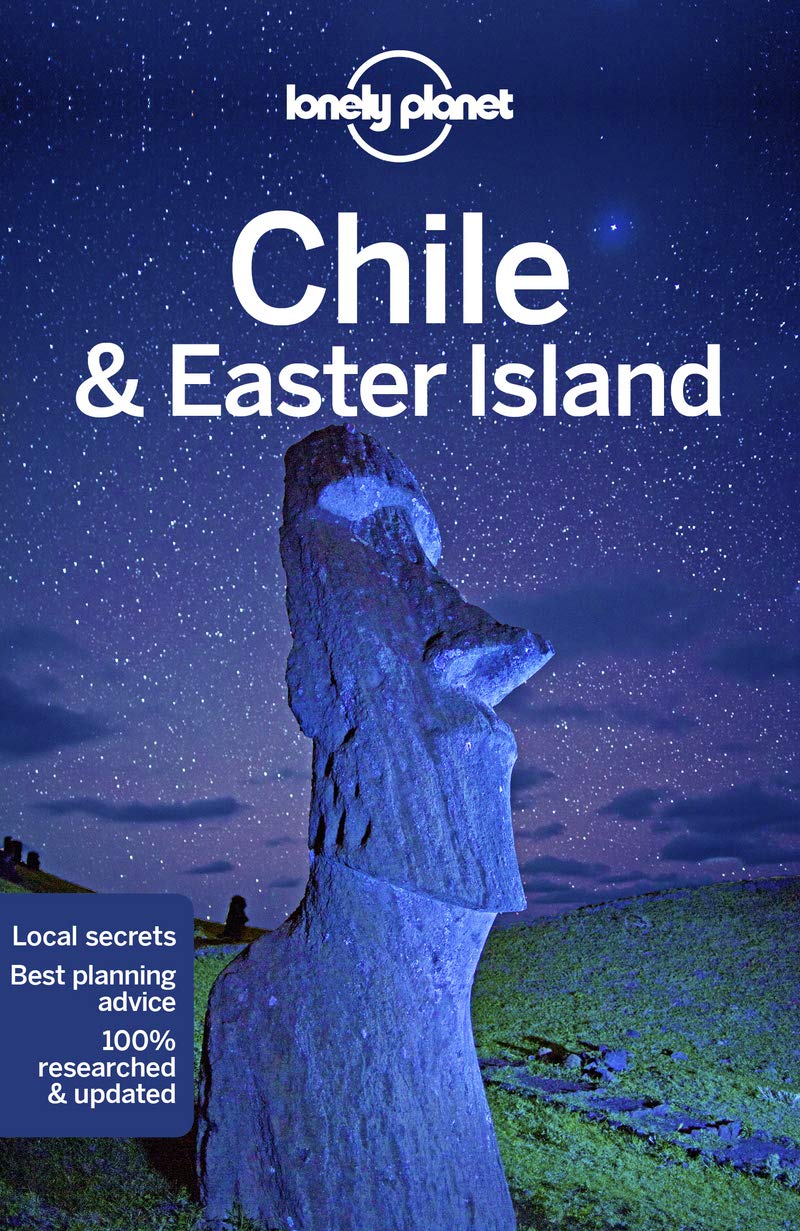
(Photo: Lonely Planet)
Travels in a Thin Country: A Journey Through Chile (2004)
In the late 1990s, prolific author Sara Wheeler travelled alone from the top to the button of Chile, turning her experiences into this acclaimed book. Combining history and humour in equal measure, Travels in a Thin Country reveals her distinct knack for discovering the unexpected as she traverses Chile’s richly diverse landscapes, from the world’s driest desert to the sepulchral wastes of Antarctica, in the process admirably conveying the mood of contemporary Chile.
PUBLISHER Modern Library AUTHOR Sara Wheeler BUY AT amazon.com
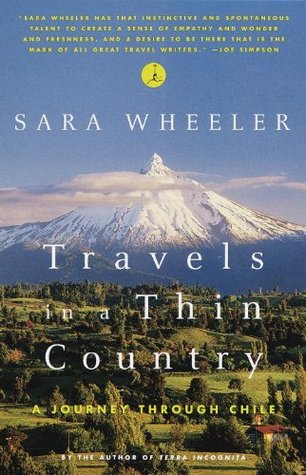
(Photo: Modern Library)
Desert Memories: Journeys Through the Chilean North (2004)
Award-winning Chilean novelist, poet, and human rights activist Ariel Dorfman is better placed than most to write about his homeland and its often tumultuous history, having been forced into exile following the Chilean military coup of 1973. In this book he sets out to explore one of the country’s least known areas – the Norte Grande, said to be the world’s driest desert but also largely responsible for Chile’s modern success thanks to the 19th century discovery of nitrate here. Perhaps most poignantly, Dorfman also searches for traces of his friend and fellow activist, Freddy Taberna, executed by a firing squad in a remote Pinochet death camp.
PUBLISHER National Geographic AUTHOR Ariel Dorfman BUY AT amazon.com
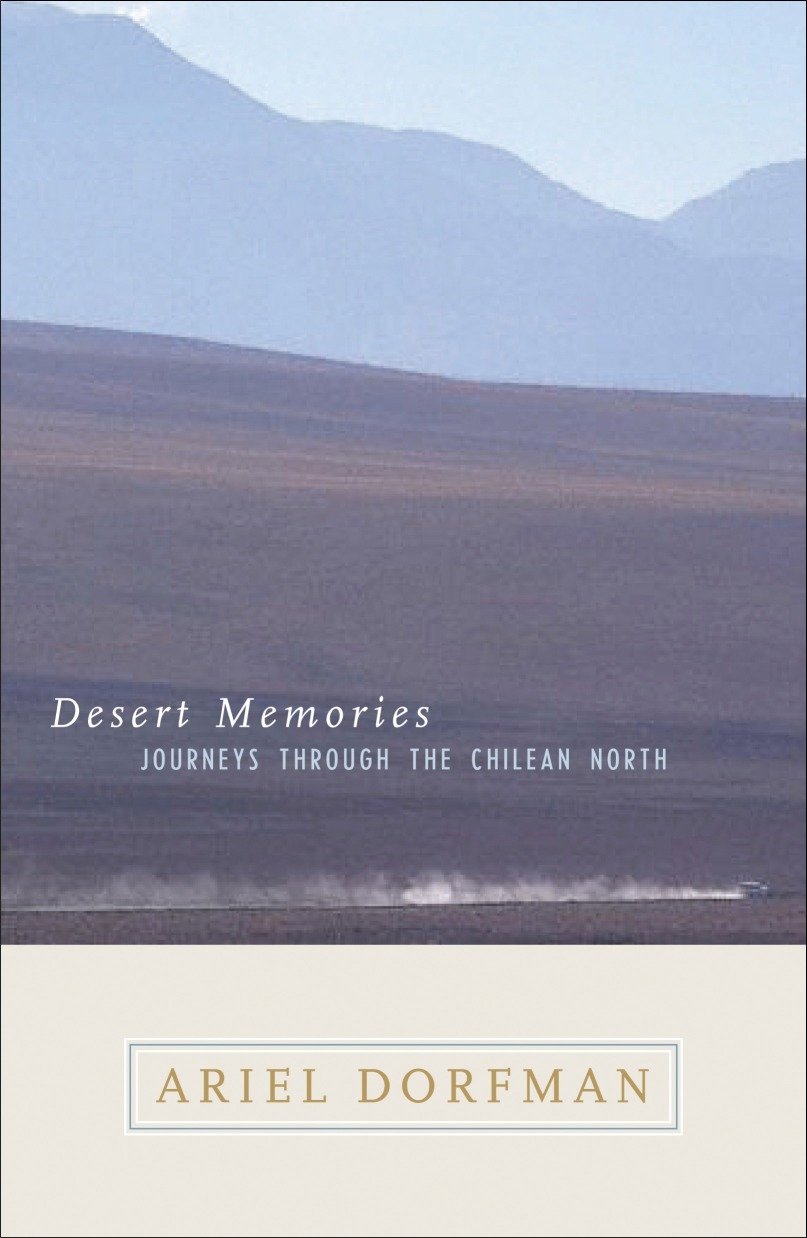
(Photo: National Geographic)
Essential Chile: with Easter Island & Patagonia (2018)
The 8th edition of Fodor’s travel guide to Chile covers the length and (albeit limited) breath of the country, from its capital Santiago to the tourist mecca of Valparaiso, the icebergs of Patagonia, the idyllic coastal resort of Viña del Mar, the imposing Andes Mountains, world class vineyards, and plenty more. Compiled and written by local experts, the latest edition also features updated restaurant and hotel listings, spectacular colour photos, maps and sample itineraries.
PUBLISHER Fodor’s Travel AUTHOR Various BUY AT amazon.com
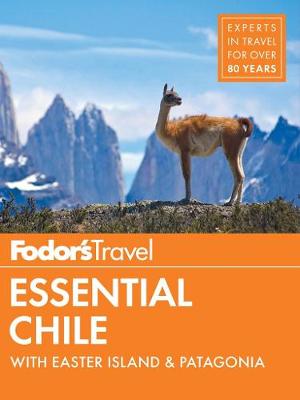
(Photo: Penguin)
Small earthquake in Chile (1990)
A doyen of journalism and international affairs, Alistair Horne’s book became a major hit when it was published at the start of the 1990s. Part history and current affairs, part travelogue chronicling the author’s journey through the continent in 1970, the book’s title is derived from a competition at The Times newspaper in London to find the most boring headline. The classic “Small Earthquake in Chile; Not Many Dead.” emerged as the winner, and Horne went on to use it to underscore the lack of interest in Europe to world events in Latin America.
PUBLISHER Papermac AUTHOR Alistair Horne BUY AT amazon.com
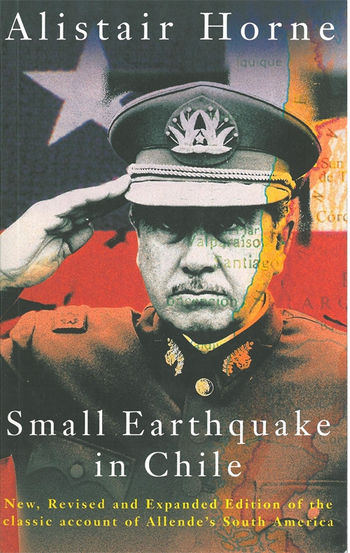
(Photo: Papermac)

Latest Articles
- 10 Fun Things to Do in Salt Lake City April 29, 2024
- A Comparison of Day Tours from Fort Lauderdale to Key West April 29, 2024
- Croatia Yacht Charter: Top 3 Companies April 29, 2024
- Car Rental at Pensacola Airport: the Best Companies April 29, 2024
- 7 Great Bars and Lounges in Accra April 28, 2024
Nomadic Matt's Travel Site
Travel Better, Cheaper, Longer
Chile Travel Guide
Last Updated: August 30, 2023
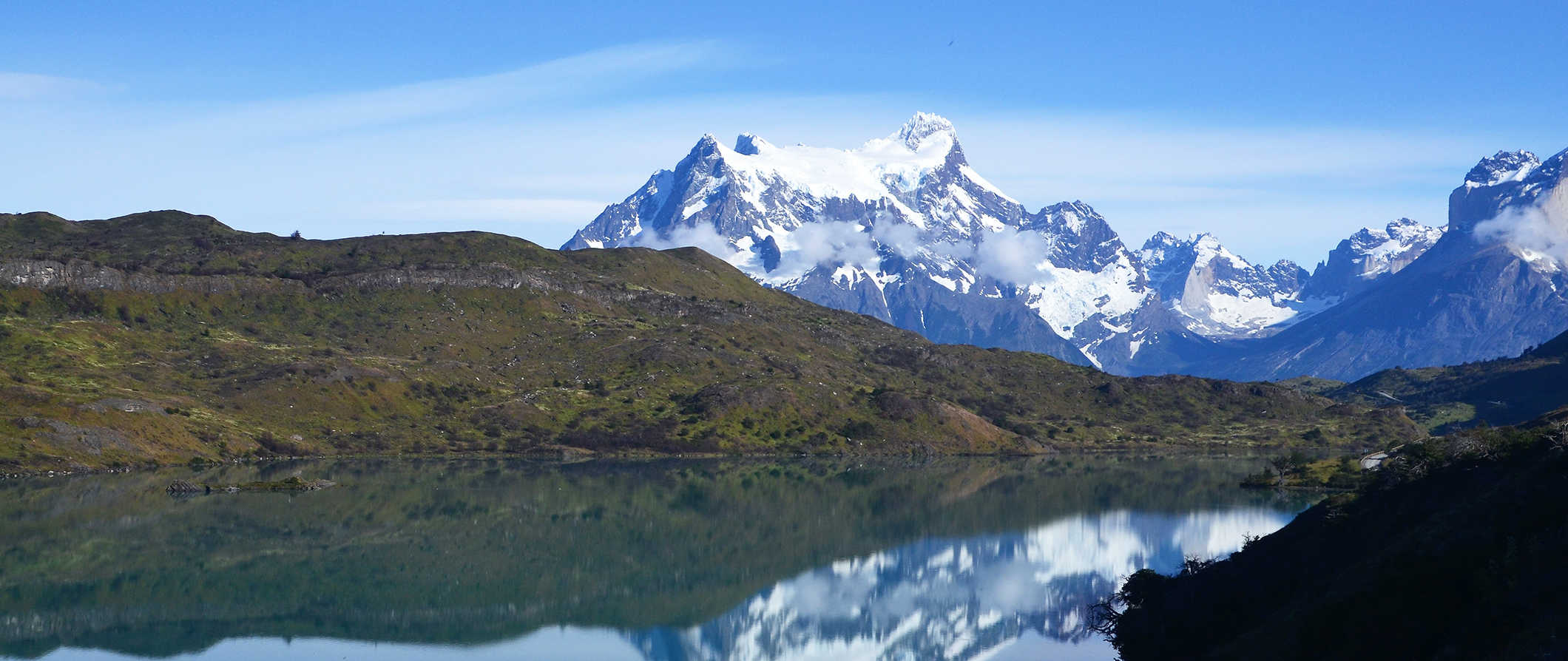
Chile is one of the most slender and longest countries in the world — it’s just 150 miles across at its widest point! From the snow-capped volcanoes of Patagonia and blistering heights of the Andes to world-class wineries and Maoi sculptures of Easter Island , there are a lot of wonderful things to see in Chile.
Traveling to Chile was one of the best experiences I’ve had in South America. It just constantly blew me away. It’s one of the most developed South American countries (the capital, Santiago, is a tech hub for the region), the people were awesome, the food was incredible, and the scenery made me feel in awe of nature.
Not only is there lots to do but the country is budget-friendly, which really rounds it out as a must-see destination.
Use this travel guide to Chile to plan your visit, save money, and make the most out of your trip!
Table of Contents
- Things to See and Do
- Typical Costs
- Suggested Budget
- Money-Saving Tips
- Where to Stay
- How to Get Around
- How to Stay Safe
- Best Places to Book Your Trip
- Related Blogs on Chile
Top 5 Things to See and Do in Chile
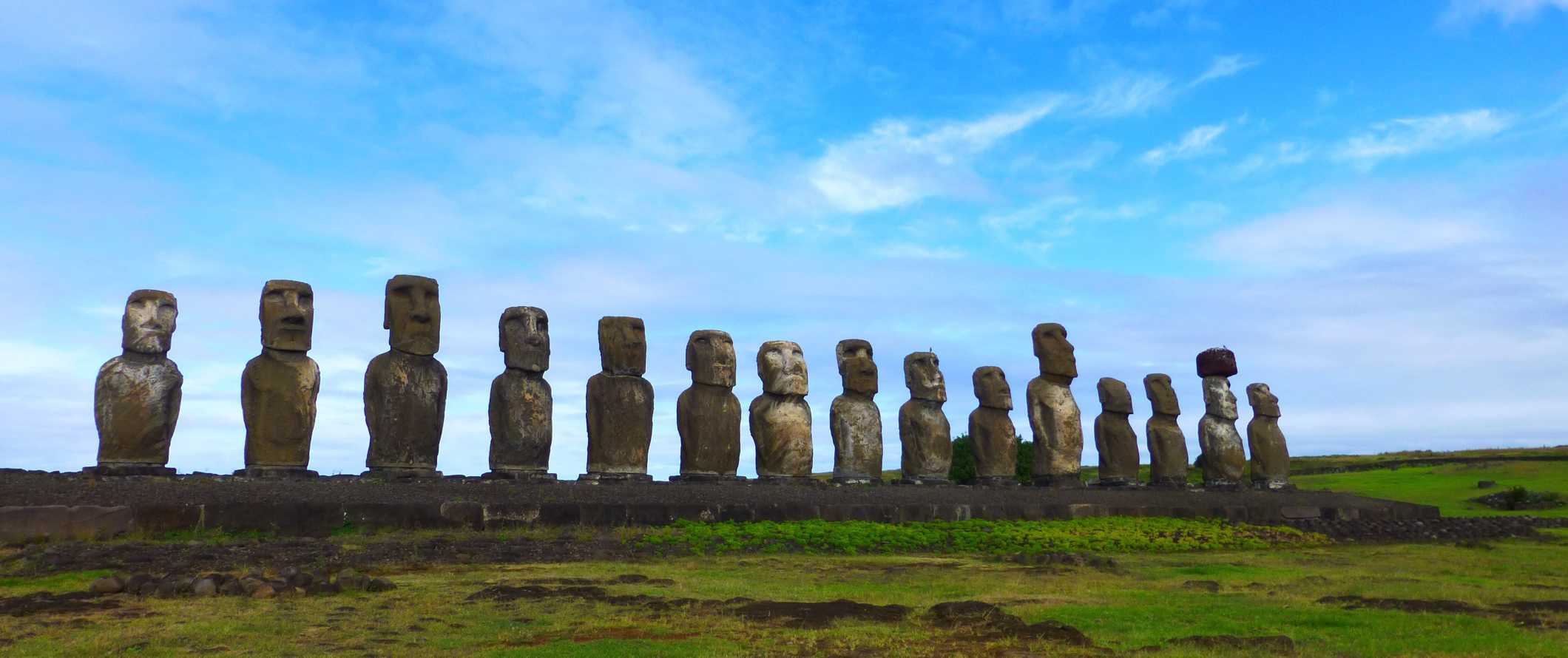
1. See Easter Island
Easter Island, located 3,540 kilometers (2,200 miles) off the coast of Chile, is the most isolated inhabited island on earth and home to the Rapa Nui Polynesian indigenous people that have lived there since 300 CE. Named after explorer Jacob Roggeveen’s ‘discovery’ of the island on Easter Sunday in 1722, this protected UNESCO World Heritage Site is famous for its Moai sculptures (the iconic big faces dotted all over the island). However, there is so much more to the island, including thousands of archaeological sites, volcanic craters and tunnels, pristine beaches, and excellent diving. To explore this magical place, hike around the dramatic cliffs and extinct volcanoes around the Moai archeological sites or around the spectacular Rano Kau crater and the Ana O Keke Cave. Or go sun yourself on Anakena’s beautiful white coral sand beach or Ovahe, a secluded pink sand beach hidden in a little cove with sparkling turquoise waters.
2. Discover Torres del Paine National Park
Torres del Paine lies between the Andes and Patagonian steppe and is made up of snow-clad mountains, glacier lakes, and some of the best hiking in Chile. It also happens to be one of the most beautiful and desolate regions on the planet. There is no end to the scenic views here, including the three rugged, towering peaks of Central, Monzino, and Dagostini as well as the Southern Ice Fields. Be sure to wander around the enchanting Sarmiento Lake and see the Amarga Lagoon and the giant Salto Grande Waterfall. Admission is 29,250 CLP for up to three days for foreigners.
3. Explore Santiago
Chile’s capital is a thriving city and home to a third of the country’s entire population. Founded in 1541, this vibrant capital offers gorgeous panoramas, great restaurants, tasty locally-produced wine, and of course, Barrio Bellavista’s nightlife. There are quite a few must-see attractions in the city: Parque Metropolitano (a large urban park) as well as Cerro San Cristóbal, where you can hike around taking in beautiful views of the city, shouldn’t be missed. The Museum of Human Rights is also a must-visit site, as it chronicles the dark years of Pinochet when thousands of people ‘disappeared’ at the hands of his violent regime.
4. Marvel at San Pedro de Atacama
Located in Chile’s Norte Chico northern region, San Pedro de Atacama is one of Chile’s hottest tourist towns. Literally. Sitting at 2,400 meters (7,874 feet), the ancient town is in the driest desert in the world (it reportedly hasn’t seen rain since 1870). But the rock formations here are stunning, and it’s the perfect place to stargaze. This little town with adobe houses and dirt streets only has 5,000 inhabitants but plenty of tourists visit up to explore the stunning valley landscapes, the Atacama Salt Flats, and the Chaxa and Miniques Lagoons. Don’t miss the famous beautiful jagged geological formations of Valle de la Luna and Valle de la Muerte valleys that can be reached by bicycle from town.
5. Visit colorful Valparaiso
Nicknamed the “Jewel of South America,” this colorful city near Santiago is a mesh of bohemian bars and Victorian architecture along a coastline of sheer cliffs. The laid-back atmosphere and beauty of the area have inspired generations of writers and poets, including poet Pablo Neruda. Be sure to bring your camera because the whole city is painted in vibrant Insta-worthy colors. Take the Ascensor Reina Victoria funicular up to the Concepcion neighborhood and have a cocktail on the hilltop overlooking the city as you try some of the delicious local seafood dishes. Also, be sure to check out two of Chile’s top beaches nearby, the upscale Viña del Mar and the super cool Reñaca.
Other Things to See and Do in Chile
1. see the san marcos cathedral.
The same architect who was responsible for the Eiffel Tower, Alexandre Gustav Eiffel, designed San Marcos Cathedral. The cathedral is in Arica, Chile’s northernmost city, and was built to replace the original cathedral destroyed by an earthquake in 1868. The new cathedral was commissioned in 1876 and is a rare example of Gothic architecture in South America.
2. Get tipsy on a wine tour
Chile’s vineyards have been producing world-class wine for over 400 years. There are plenty of tours available around the country as vineyards stretch the entire length of Chile. I think the best wineries are located near Santiago. Expect to pay around 15,000-20,000 CLP for a basic tour, though fancier tours at more prestigious vineyards can easily be over 55,000-100,000 CLP per person. Most tours last 4-8 hours.
3. Hike a volcano
Chile is home to the world’s tallest active volcano, Ojos del Salado, which lies in the Andes near the Argentine border. Villarica and Osorno are also popular volcanoes (and both lie close to lakes). Most volcanoes in the country have thermal spas at their base too. Experienced hikers can do the trip on their own, though there are plenty of guided tours available for travelers looking for a group tour. Most multi-day tours span 10-14 days and cost millions of pesos. For day trips like the Cajon de Maipo, Osorno Volcano, Termas Colina, and Petrohue Falls, expect to pay 32,000-56,000 CLP per person.
4. Valle de la Muerte
Also known as “Death Valley,” this is an astounding place to hike, go horseback riding, or even go sandboarding. Located in the northeast of the country near San Pedro de Atacama, there are also guided moonlight walks that take you out over the rocky martian landscape. You can rent a sandboard for around 8,300 CLP or go on a sandboard tour for 23,000 CLP per person which includes transportation. There are even tours that sandboard at midnight, using spotlights to light the way (they have a DJ too!). If you’re looking to hike, check out the Corniza Trail. It’s a 7-hour loop that’s relatively easy (many families do it).
5. Santuario de la Naturaleza Valle de la Luna
Also located near San Pedro de Atacama, the “Valley of the Moon” is an otherworldly landscape that is home to stones and sand formations that have developed an extraordinary texture due to thousands of years of winds and flooding. The rock formations look like the surface of the moon, hence the park’s name. It’s a great place to go hiking — just don’t forget to bring water as it can get quite warm. Tours are available for around 26,000 CLP per person.
6. See the El Tatio geysers
A popular tourist attraction, these geysers are incredibly beautiful and well worth a visit as they make up the largest geyser field in the Southern Hemisphere (and they are the third largest in the world). You have to get up around 4am as all the tour companies aim to get you there by sunrise and it’s a 90-minute drive from San Pedro de Atacama. But it’s worth the effort! Bring a swimsuit as there are thermal pools nearby. Tours cost around 33,000-38,000 CLP. You can visit without a tour (admission is 15,000 CLP) but you’ll need to rent your own vehicle to get there.
7. Museo de Bellas Artes
This museum is one of the best in the country. Located in Santiago, it’s home to a wide display of fine art, sculptures, photography, paintings, and digital media. Built in 1910, the building is somewhat small but the architecture is equally as impressive as the collection within (it was built in the Beaux-arts style and has a very Parisian feel to it). Admission is free.
8. Mingle among the wealthy in Viña del Mar
Considered a Chilean Miami, this city next to Valparaiso serves as a hotspot for casinos, upscale cafes, and seaside restaurants. Even if you don’t have money to burn, it’s an interesting place to spend an afternoon people-watching as you wander the beach promenade. You’ll find lots of world-class restaurants here. If you’ve got some money to burn, stay a night!
9. Tour Pablo Neruda’s homes
One of the world’s most famous poets used to call Chile home. With homes in Valparaiso, Santiago, and Isla Negra, this Chilean icon stuffed a lifetime of knick-knacks, literature, and interesting maritime architectural pieces into his three abodes. All of them are open to the public. Even if you’re not a huge fan of his work, his homes alone are an interesting glimpse into Chilean culture as Neruda is a cultural icon and one of the most famous poets of the 20th century. Admission to each home costs around 7,000 CLP and includes an audio-guide system in multiple languages.
10. Get off the beaten path
Some lesser-known treasures worth visiting in Chile are Frutillar (a beautiful lakeside community in southern Chile’s Los Lagos Region), Lonquimay (another gorgeous lakeside town in the Malleco Province of southern Chile’s Araucanía Region), Caleta Tortel (a rugged seaside town with wooden walkways instead of streets in the heart of Patagonia) and Coyhaique (a less pricey Northern Patagonia city that’s a hub for great nature adventures). If you’re looking to beat the crowds, be sure to visit some of these lesser-known destinations.
11. Swim in the world’s largest pool
If you’re looking for some luxury, head to the Crystal Lagoon, home to the world’s largest swimming pool. It’s located at the San Alfonso del Mar resort in Algarrobo, just west of Santiago. The pool is the size of twenty Olympic swimming pools and is the biggest recreational swimming pool in the world, requiring 66 million gallons of water just to fill it! A 1-2 bedroom apartment rental here costs 70,000-120,000 CLP per night.
Chile Travel Costs
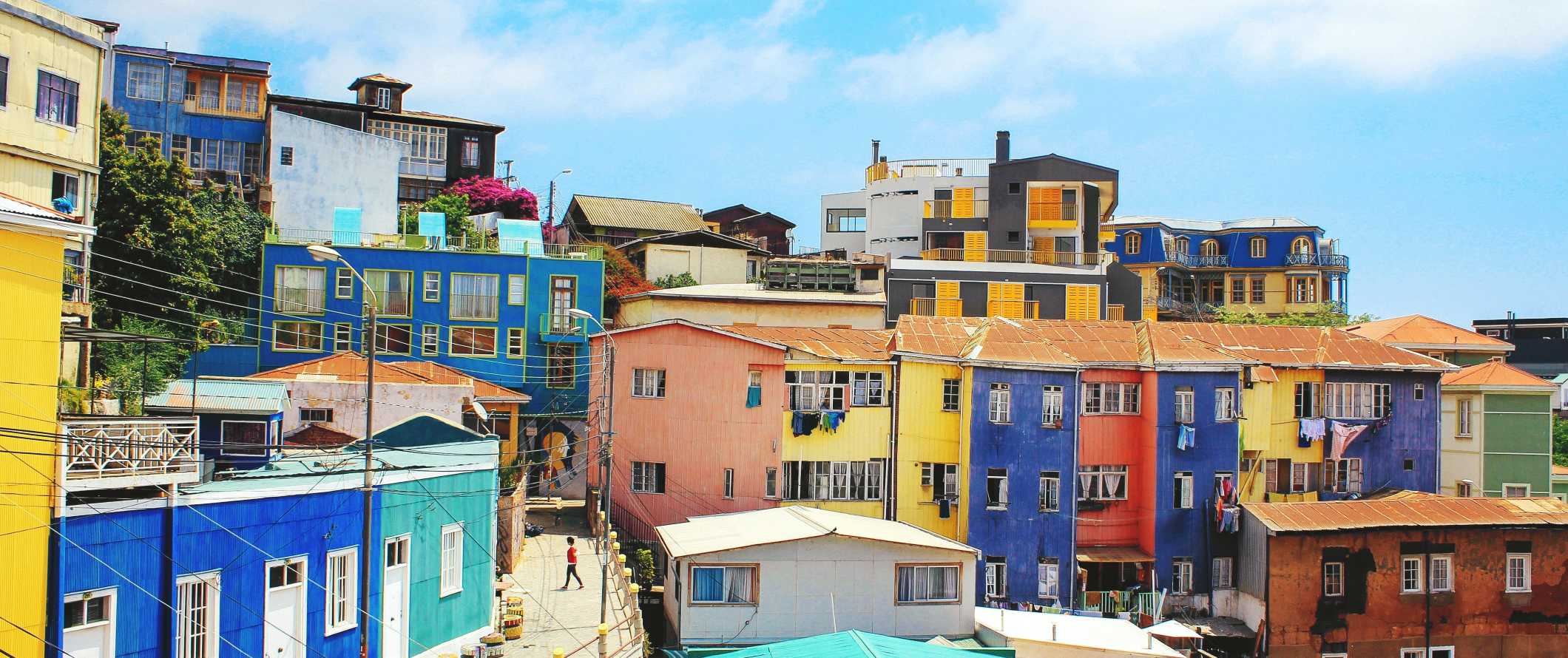
Accommodation – Hostel dorms start around 9,800 CLP per night and private rooms come in at around 22,000-30,000 CLP. Free breakfast and free Wi-Fi are common, and many hostels have self-catering facilities if you want to cook your own food.
Budget hotels are inexpensive in Chile with prices starting at 25,000-35,000 CLP per night for a basic double or twin bed (though expect to pay closer to 55,000 CLP for a nicer budget hotel). Many budget hotels include free breakfast and free Wi-Fi (though not all, so be sure to double-check).
Airbnb is available in the larger cities, with prices as low as 16,000 CLP per night for shared accommodation. If you want a private home or apartment, expect to pay at least 45- 60,000 CLP.
For those traveling with a tent, camping is possible. There are a handful of campgrounds scattered around the country where you can pitch a tent for as little as 5,300-6,000 CLP per night but some with lots of amenities and proximity to the beach are as much as 35,000 CLP.
Food – With an extensive coastline, Chilean cuisine relies heavily on seafood. Cod, salmon, shrimp, lobster, prawn — there are tons of options available. BBQ meat (including alpaca) is particularly popular in the north. Other popular Chilean dishes include churrasco (steak sandwich), machas a la parmesana (clams baked with white wine, parmesan cheese, and butter), and chupe (a hearty seafood stew), and empanadas.
Overall, food in the country isn’t too expensive, though prices get a lot higher the further south you go due to higher transportation costs. Most places in the country offer a set menu for lunch with a starter, main, and drink for about 7,000 CLP. A steak dinner with wine and an appetizer costs around 35,000 CLP while a fast food combo meal (think McDonald’s) costs around 6,000 CLP.
A latte or cappuccino costs 2,300 CLP while a domestic beer can be as cheap as 3,000 CLP. Bottled water is 850 CLP.
Grocery shopping can save you a lot of money if you have access to a kitchen. Expect a week’s worth of groceries to cost around 25,000 CLP depending on your diet. This gets you basic staples like pasta, rice, quinoa, vegetables, and some meat.
As everything must be shipped south, food prices in Patagonia are about 30% higher than elsewhere in the country.
Backpacking Chile Suggested Budgets
How much does it cost to visit Chile? That depends on a few different factors, specifically, what you plan on doing while you’re here as well as your travel style.
On a backpacking budget of 36,000 CLP per day, you can stay in a hostel dorm, cook your own meals, use public transportation to get around, and visit a few museums. If you plan on drinking, you’ll need to add 5,000-8,000 CLP per day.
On a mid-range budget of 105,000 CLP per day, you can stay in a private Airbnb, take buses between destinations, eat out at street stalls and cheap restaurants serving local cuisine, take the occasional taxi, drink at the bar, and do some paid excursions like guided hikes and wine tours.
On a “luxury” budget of 205,000 CLP per day, you can stay in a hotel, hire a rental car to get around, do some guided tours, drink as much as you want, and eat out at nice restaurants for every meal. This is just the ground floor for luxury though. The sky is the limit!
You can use the chart below to get some idea of how much you need to budget daily. Keep in mind these are daily averages – some days you’ll spend more, some days you’ll spend less (you might spend less every day). We just want to give you a general idea of how to make your budget. Prices are in CLP.
Chile Travel Guide: Money-Saving Tips
Chile can be an expensive place to visit, especially if you’re doing a lot of tours and activities. The size of the country also means you can end up spending a lot on transportation. Here are some tips to help you save during your visit:
- Buy wine at the supermarkets – Surprisingly, buying wine from vineyards can be more expensive than in the supermarkets. Buy from the supermarkets if you’re on a tight budget.
- Take the bus – Bus service is inexpensive and efficient here. Night buses are comfortable and a good way to save on a night’s accommodation (they often have lie flat beds).
- Buy food from La Vega Market – La Vega Market in Santiago sells everything you could possibly need and all sorts of local ingredients from Chile and Peru. Shop here for your veggies, fruits, and to get an authentic experience.
- Eat at the local fish markets – In the coastal cities, the local fish markets are usually the best place for a seafood meal. Though the restaurants look cheap and thrown together, they’re delicious!
- Shop around – Haggling is not common and vendors stick to their guns even when called out for price discrimination. So, if you’re quoted an inflated price for being a tourist it’s best to just move around and find alternatives where the prices are already set and visible. Otherwise, you’ll just be wasting your time and energy.
- Ride in a micro or colectivo – Regular buses are for intercity transportation. “Micros” are intracity, and “colectivos” are taxis that drive a specific route once they get four people in the car, and charge a very low rate. If you want to go somewhere, chances are there’s a micro or colectivo that can get you close — just ask a local and they’ll know where to point you.
- Stay with a local – Chile doesn’t have a huge Couchsurfing community, but you can still give it a shot and try to find a host (and get a local friend and a free place to stay). Just be sure to send your requests early!
- Take a free walking tour – There are some great options available when it comes to free walking tours in Santiago, such as Tours 4 Tips or Free Tour Santiago . If you want to explore the city while learning about its history, architecture, and people then be sure to take a free tour. Just remember to tip at the end!
- Stay at a Hola Hostel – Hola Hostels is a network of hostels predominantly in South and Central America. They offer 10% off to their members, as well as other local discounts for food and activities. Joining is free, and their hostels are also committed to environmentally sustainable practices.
- Travel in the shoulder season – Prices in the country are cheaper outside of the high season (which is November-March). This includes admission to parks like Torres del Paine, which charge double during the busy summer months. Beat the crowds and save some money by skipping the high season.
- Bring a water bottle – LifeStraw is a reusable water bottle with a built-in filter that you can use instead of buying single-use plastic bottles. It removes bacteria, parasites, micro plastics, and other contaminants so it’s perfect for cities as well as if you’re out hiking in nature.
Where to Stay in Chile
Hostels can be found in all the major destinations across Chile. Here are my recommended places to stay if you’re on a budget:
- Hostal Forestal (Santiago)
- Poker Hostel (Santiago)
- Hostal Po (Valparaiso)
- Hostal Rural (San Pedro de Atacama)
- Kona Tau (Easter Island)
- Chili Kiwi Lakefront (Pucon)
How to Get Around Chile
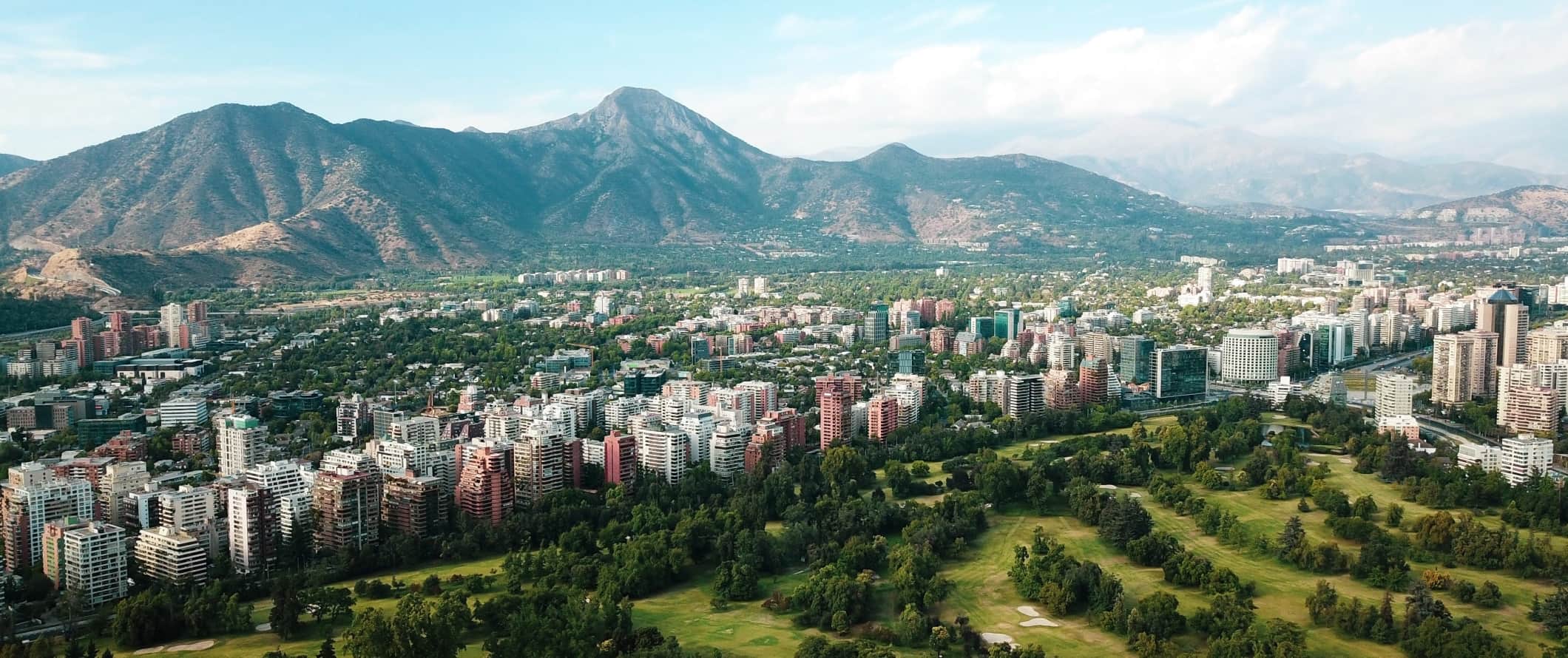
Public transportation – Public transportation, especially in Santiago, is reliable and affordable. In Santiago, you need to purchase a refillable bus pass (BIP Card) for your journeys as individual tickets are no longer available. The card costs around 1,550 CLP with the average ride costing around 700 CLP (prices vary depending on the time of day). BIP cards need a minimum initial credit of 1,000 CLP. You have to pay for your card and top-ups in cash; non-Chilean credit cards are not accepted.
Bus – For intercity travel, buses are the cheapest way to get around — and they are nice too! Reclining seats are common and many even recline almost all the way down. Additionally, some night buses even have a curtain between the seats so you can have a little privacy from your neighbor. The best companies to use are Turbus and Pullman.
Expect to pay at least 38,000 CLP per person from Santiago to Antofagasta. From Santiago to Valparaiso, bus tickets cost around 6,000–10,000 CLP each way. For something like the cross-country journey from Santiago to Punta Arenas, expect to pay at least 60,000 CLP for the 40-hour bus ride (this is an incredibly long distance so you have to change at Osorno or choose flying).
Train – Traveling by train in Chile is virtually non-existent. Much of the tracks have been left to decay beyond repair outside the central region of the country. Trains link Santiago with Curico, Talca, Linares, and Chillan with air-conditioned cars but that’s the extent of Chile’s train infrastructure. You can visit trencentral.cl for the available routes and prices.
Flying – Flying around the country is surprisingly affordable. Expect to pay around 28,000-35,000 CLP for the two-hour flight from Santiago to Antofagasta. Prices are similar for trips from Santiago to:
- La Serena (one hour)
- Calama (two hours)
- Arica (two hours forty-five minutes)
- Concepcion (one hour)
- Puerto Montt (one hour forty minutes)
For a flight between Santiago and Puerto Natales, expect to pay around 40,000-55,000 CLP. Round-trip flights from Santiago to the remote Easter Island cost around 240,000-300,000 CLP.
Car rental – Driving in Chile is much easier (and safer) than driving in other South American countries. Many of the highways are well-maintained thanks to their liberal use of toll roads. While driving in Santiago can be a little chaotic, once you get out of the city things generally become much easier. Expect to pay around 178,000 CLP for a one-week rental. Drivers need to be at least 21 years old.
For the best car rental prices, use Discover Cars .
When to Go to Chile
Since Chile is in the southern hemisphere, the summer months are December, January, and February. With landscapes ranging from desert to tundra, the weather and temperatures can vary tremendously here. Expect daily highs around 28-30°C (82-86°F) in Santiago, while the highs in Torres del Paine are closer to 13°C (55°F).
Winter is not a particularly great time to visit as the temperatures can drop below freezing, with snowfall common in certain regions. Daily lows reach -15 °C (5 F), making it rather unpleasant to be out and about during the day. Unsurprisingly, you can see why most travelers visit during the summer.
Fortunately, the shoulder season is also a fantastic time to visit Chile as you’ll be able to beat the crowds and save yourself some money. It’s an especially good time to visit if you plan on visiting Torres del Paine as there will be fewer hikers here and the park admission will be much cheaper. November and March are usually included in the high season, so aim for late October or early April. The weather won’t be perfect, but it’s a good compromise for travelers looking to dodge the crowds.
How to Stay Safe in Chile
Chile is considered a safe destination and generally ranks as one of the safest on the continent. That said, crimes still do occur so you’ll want to take some precautions during your trip. The most common crimes in Chile are petty theft and bag snatching. Since these are crimes of opportunity, you’ll always want to make sure your possessions are secure. Be extra vigilant when riding the bus and when you’re in areas popular with tourists.
When taking the bus (especially the night bus) make sure you don’t have any valuables in your checked bag. Additionally, keep any valuables secure and out of reach from any would-be pickpockets.
If you’re enjoying the nightlife of Santiago, keep an eye on your drink as drink-spiking can occur.
Be sure to read about the common travel scams to avoid here .
Earthquakes are also common enough in Chile that you’ll want to make sure you are prepared should one occur. Know where your emergency exits are in your accommodation as well as any local evacuation locations for major emergencies. If you have a map downloaded on your phone, save the location of the nearest hospital and airport as well, just in case.
If you need emergency services, dial 113 for assistance.
The most important piece of advice I can offer is to purchase good travel insurance. Travel insurance will protect you against illness, injury, theft, and cancellations. It’s comprehensive protection in case anything goes wrong. I never go on a trip without it as I’ve had to use it many times in the past. You can use the widget below to find the policy right for you:
Chile Travel Guide: The Best Booking Resources
These are my favorite companies to use when I travel. They consistently have the best deals, offer world-class customer service and great value, and overall, are better than their competitors. They are the companies I use the most and are always the starting point in my search for travel deals.
- Skyscanner – Skyscanner is my favorite flight search engine. They search small websites and budget airlines that larger search sites tend to miss. They are hands down the number one place to start.
- Hostelworld – This is the best hostel accommodation site out there with the largest inventory, best search interface, and widest availability.
- Booking.com – The best all around booking site that constantly provides the cheapest and lowest rates. They have the widest selection of budget accommodation. In all my tests, they’ve always had the cheapest rates out of all the booking websites.
- Get Your Guide – Get Your Guide is a huge online marketplace for tours and excursions. They have tons of tour options available in cities all around the world, including everything from cooking classes, walking tours, street art lessons, and more!
- SafetyWing – Safety Wing offers convenient and affordable plans tailored to digital nomads and long-term travelers. They have cheap monthly plans, great customer service, and an easy-to-use claims process that makes it perfect for those on the road.
- LifeStraw – My go-to company for reusable water bottles with built-in filters so you can ensure your drinking water is always clean and safe.
- Unbound Merino – They make lightweight, durable, easy-to-clean travel clothing.
- Top Travel Credit Cards – Points are the best way to cut down travel expenses. Here’s my favorite point earning credit cards so you can get free travel!
Chile Gear and Packing Guide
If you’re heading on the road and need some gear suggestions, here are my tips for the best travel backpack and for what to pack!
The Best Backpack for Travelers
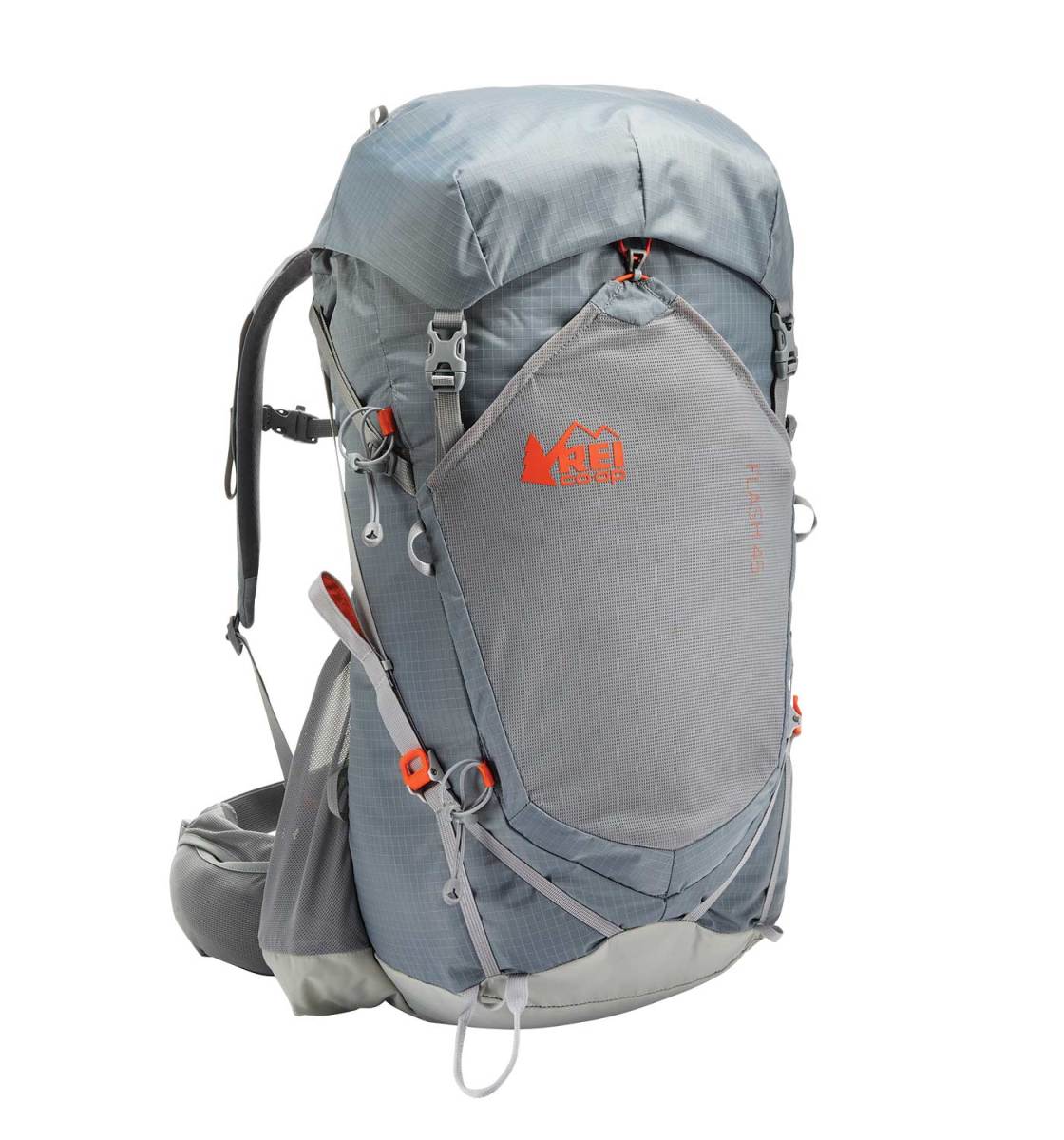
If you want something different, refer to my article on how to choose the best travel backpack for tips on picking a pack and other backpack suggestions.
What to Pack for Your Trip
- 1 pair of jeans (heavy and not easily dried, but I like them; a good alternative is khaki pants)
- 1 pair of shorts
- 1 bathing suit
- 5 T-shirts ( Unbound Merino is my preferred company. If you’re a member of TNN+, you can get 15% off your purchase )
- 1 long-sleeved T-shirt
- 1 pair of flip-flops
- 1 pair of sneakers
- 6 pairs of socks (I always end up losing half)
- 5 pairs of boxer shorts (I’m not a briefs guy!)
- 1 toothbrush
- 1 tube of toothpaste
- 1 package of dental floss
- 1 small bottle of shampoo
- 1 small bottle of shower gel
Small Medical Kit (safety is important!!!)
- Hydrocortisone cream
- Antibacterial cream
- Hand sanitizer (germs = sick = bad holiday)
Miscellaneous
- A key or combination lock (safety first)
- Zip-lock bags (keeps things from leaking or exploding)
- Plastic bags (great for laundry)
- Universal charger/adaptor (this applies to everyone)
- LifeStraw (A water bottle with a purifier)
Female Travel Packing List I’m not a woman, so I don’t know what a woman wears, but Kristin Addis, our solo female travel guru, wrote this list as an addition to the basics above:
- 1 pair of stretchy jeans (they wash and dry easily)
- 1 pair of leggings (if it’s cold, they can go under your jeans, otherwise with a dress or shirt)
- 2-3 long-sleeve tops
- 2-3 T-shirts
- 3-4 spaghetti tops
- 1 light cardigan
- 1 dry shampoo spray & talc powder (keeps long hair grease-free in between washes)
- 1 hairbrush
- Makeup you use
- Hair bands & hair clips
- Feminine hygiene products (you can opt to buy there too, but I prefer not to count on it, and most people have their preferred products)
For more on packing, check out these posts:
- What I Pack For My Travels
- The Ultimate List For Female Travelers
- How to Choose and Buy the Right Backpack
Chile Travel Guide: Related Articles
Want more info? Check out all the articles I’ve written on Chile travel and continue planning your trip:
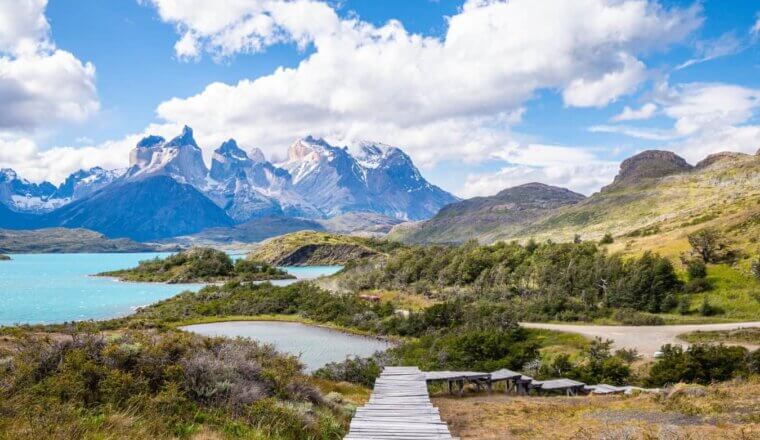
Is Chile Safe to Visit?
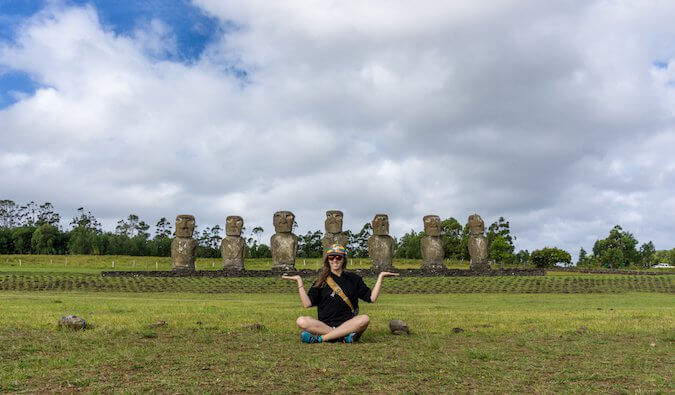
How to Travel Easter Island on a Tight Budget
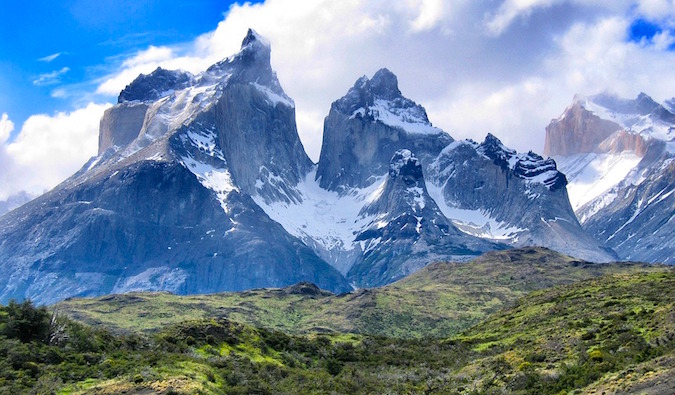
18 of the Best Spots in Patagonia
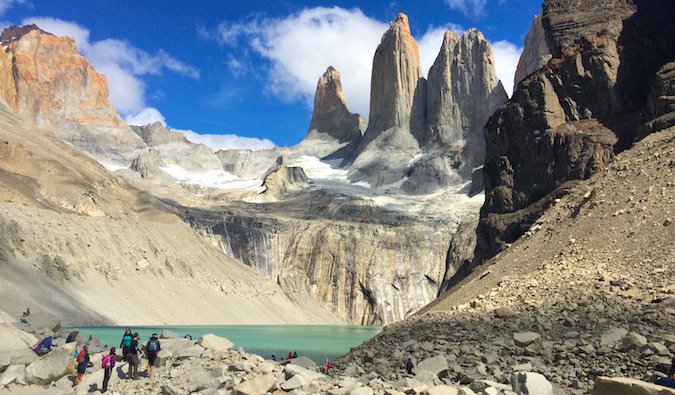
Patagonia: Thoughts on Getting Offline and Trying to Camp
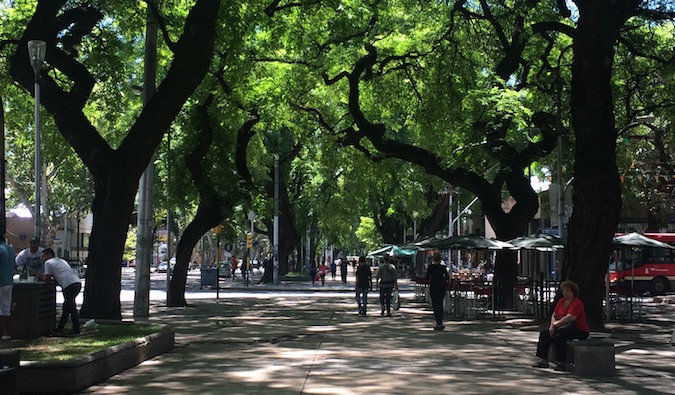
12 Ways to Save Money in Argentina
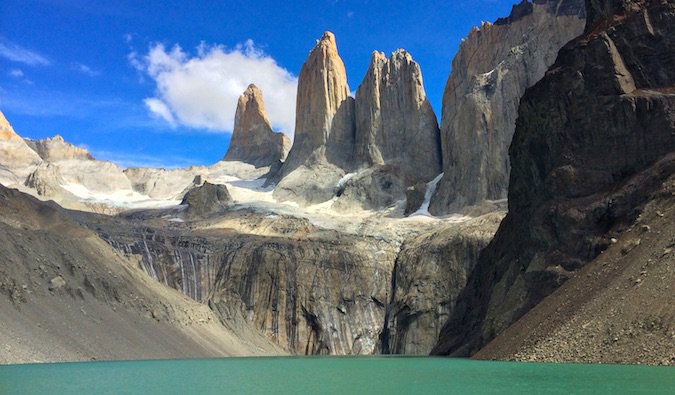
16 Amazing Photos from My Visit to Torres Del Paine
Get my best stuff sent straight to you, pin it on pinterest.
- Where To Stay
- Transportation
- Booking Resources
- Related Blogs
- International edition
- Australia edition
- Europe edition
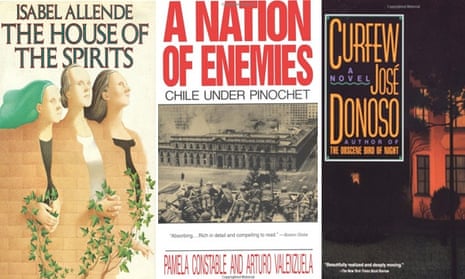
The best books on Chile: start your reading here
Our literary tour of Chile explores political repression under Pinochet through fact and fantasy, and magic realism’s merging of the two
The House of the Spirits by Isabel Allende, translated by Magda Bogin
Allende’s classic, hugely successful family saga is a masterwork of magic-realism. Fusing the personal with the political and fact with fantasy, it tells Chile’s recent history through several generations of the Trueba family, ending with a savage military coup that leads to the death of a president.
The principal protagonist, Esteban Trueba, is used to getting his own way – in his family (as an irascible patriarch), on his farm (as a wealthy landowner), and in the country (as a rightwing senator): “The day we can’t get our hands on the ballot boxes before the vote is counted, we’re done for.”
When a socialist candidate finally wins the presidential election, Trueba backs a coup. But in the ferocious denouement that follows, he finds himself sidelined as brutality and terror spiral under the newly installed military regime.
The novel celebrates the spirit and resilience of the Trueba women, which shine through the political tumult and family turbulence in this clever, witty and stunningly assured debut.
Allende’s father was a cousin of President Salvador Allende, who was overthrown and died during a military coup in 1973. In 1975, the author fled to Venezuela, and later moved to the US. She has said the book is an “attempt to recreate the country I had lost, the family I had lost”.
Curfew by José Donoso, translated by Alfred MacAdam
Donoso’s engrossing novel spans 24 hours in the stifling and oppressive political atmosphere of 1985 Santiago under General Augusto Pinochet’s military regime.
A leftwing singer returns after 13 years of exile in Paris. His fame now faded and his politics softened, Mañungo Vera is no longer the revolutionary he once was. His visit coincides with the death of Matilde Neruda, widow of the Nobel prize-winning poet and icon of the Chilean left, Pablo Neruda .
Vera is reacquainted with old friends and comrades as they prepare for the funeral. But, caught out by the curfew, he is forced to spend an eventful night on the streets with his former lover, during which they have a dangerous run-in with her suspected torturer.
Donoso paints a harrowing picture of life under the repressive regime, and shows how negotiating its daily horrors damages both individuals and society. He also shines a harsh light on the left, as factions squabble and jockey for advantage from the funeral.
This intense, introspective tale reflects the political and spiritual decay of the nation, after more than a decade of dictatorship.
The author lived abroad for 15 years, returning to Chile in 1982 while Pinochet was still in power. Curfew was the first novel he wrote after his return. He died in 1996.
A Nation of Enemies by Pamela Constable and Arturo Valenzuela
Chile’s 9/11 comes in 1973, the date when – with US backing – Pinochet violently overthrows the elected government of Allende.
In a “spasm of military fury”, the regime crushes its perceived foes and begins “a reign of professional state terror”. Constable and Valenzuela show how the post-putsch climate of fear and loathing further polarises class and politics, and turns Chile into “a nation of enemies”.
The regime allows the Chicago Boys, US-trained, evangelical free-marketeers, to impose their “shock treatment” on the economy, bringing boom and bust, and winners and losers – exacerbating the divisions in society.
The authors eschew a chronological account of the 17-year dictatorship, instead offering “a window into each sector of society” through research and interviews with hundreds of Chileans.
The ageing and paranoid dictator is finally forced from office after a referendum, in which he discovers he’s much less popular than he’d imagined. Pinochet’s coup followed some 150 years of constitutional government, and the country is still coming to terms with that aberration.
This is an accessible, balanced and forensic account of how Chile lost and then found its way back to democracy and respect for human rights.
Constable is a former deputy foreign editor at the Washington Post. Valenzuela is a Chilean-American academic and former US assistant secretary of state.
- Check out the other countries in our World Library series: Nigeria , Colombia, Vietnam, Egypt , Brazil , Kenya , Indonesia , Libya , Mexico , the Democratic Republic of the Congo , the Philippines , Iran , Peru , Somalia, China , Afghanistan, Haiti , Sudan , Thailand , Argentina and Algeria
- Global development
- World library
- Pablo Neruda
Comments (…)
Most viewed.
- USA/Canada 1-888-232-3813
- Walking & Hiking
- Wildlife and Nature
- Multiactivity
- Photo Safari
- Excepcional Journey
- Water Adventures
- Food & Wine
- City Escapes
- Winter Adventures
- EcoCamp Patagonia
- Argentine Patagonia
- Chilean Patagonia
- Atacama Desert
- Santiago and Central Valley
- Easter Island
- Lake District
- Multidestination
- Northwest Argentina
- Uyuni Salt Flats, Bolivia
- For Families
- For Couples
- For Friends
- For Solo Travelers
- Central Valley
- Wildlife & Nature
- News & Awards
- Sustainability
- Outdoor Sports
- Yoga & Wellness

4 Books About Chile to Fuel Your Wanderlust for International Book Day
Posts by tag.
- Patagonia (74)
- Inspire (50)
- Wildlife & Nature (28)
- News & Awards (25)
- Food & Wine (20)
- Outdoor Sports (20)
- Central Valley (16)
- Culture (14)
- Atacama Desert (13)
- Sustainability (8)
- Lake District (5)
- Yoga & Wellness (5)
- Easter Island (3)
- Bolivia (1)
As any lover of literature knows, reading takes you to places you’ve never been. This is especially true for travel writing. Weaving personal experience with useful and insightful facts and information, travel books, or “travelogues”, have been a part of travel since the time of Marco Polo. Since then, as humans have traveled and explored the globe, they’ve kept records of their travels to help those who will follow in their footsteps.
Equally, travel writing can also serve as an inspiration, helping readers discover places and cultures they’ve never heard about before, and inspire them to visit for themselves.
With its breathtaking landscapes, fascinating culture, rich gastronomy, and engrossing history, Chile has plenty to offer the avid armchair traveler, whether it’s wandering the pampas of Patagonia, traversing the streets of Chile's many cities, or sitting at a traditional Chilean table for evening “once”. And with so many interesting things to discover in the pages of a book, it’s not long before the armchair traveler becomes a world traveler.
To celebrate International Day of the Book and whet your appetite for a trip to Chile (or remind you of happy memories from traveling here before), here’s 4 books, either written by Chileans or by travelers, extolling the virtues, vices, history, culture, and all-around wonder of this fair country at the far end of the world! Happy reading and happy International Book Da y!
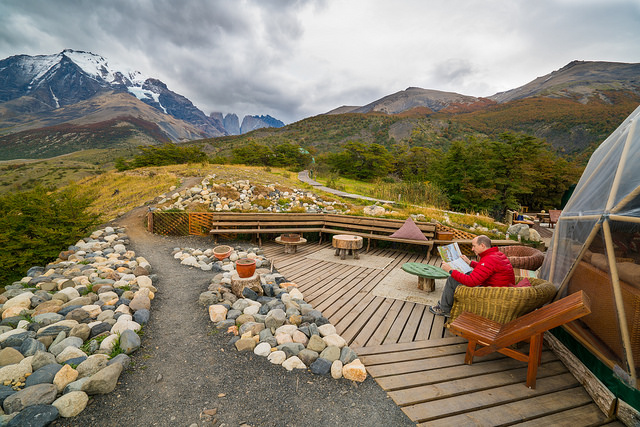
1. Travels In A Thin Country by Sara Wheeler
This first-person account of traveling through Chile by British journalist and writer Sara Wheeler follows her adventures from the tippy top of Chile all the way down to Patagonia in the south, and then even further, to Chile’s outpost in Antarctica, Villa de las Estrellas. Told with classic, dry British wit and peppered with insightful information on Chilean history, culture, and geography, Wheeler goes beyond traditional guidebook fare and the standard “what’s what” of getting to know Chile, hitting all the highlights but also going more in-depth about unknown topics and locations, seeking out the bizarre and unknown, the back-country ghost town as opposed to the affluent seaside resort, striking up conversations with strangers and walking away with memorable stories, such as her successful quest to find one of the almost mystic communes of the Elqui Valley . This book is great for people hoping to explore Chile from the top down, or those looking for interesting information to inform their travels but with a more personable touch, not as cookie-cutter as a guidebook.
2. In Patagonia by Bruce Chatwin
Arguably one of the most beloved travelogues of all time, Bruce Chatwin’s ode to the people and landscapes of Patagonia is one that has padded the backpack of many a Patagonian traveler. Starting out with his childhood fascination with a piece of brontosaurus skin in his grandmother’s cabinet, Chatwin later travels all over Chilean and Argentine Patagonia , chatting with ranchers and sheepherders, uncovering the eery legends of the misty islands of Chiloe , and making his wide through the diverse landscapes of this beguiling part of the world. Exquisitely written and structured in a style to mimic the nomadic wanderings of Chatwin and the lifestyles of those he encounters, “ In Patagonia” is essential reading for lovers of travel writing and visitors to Patagonia alike.
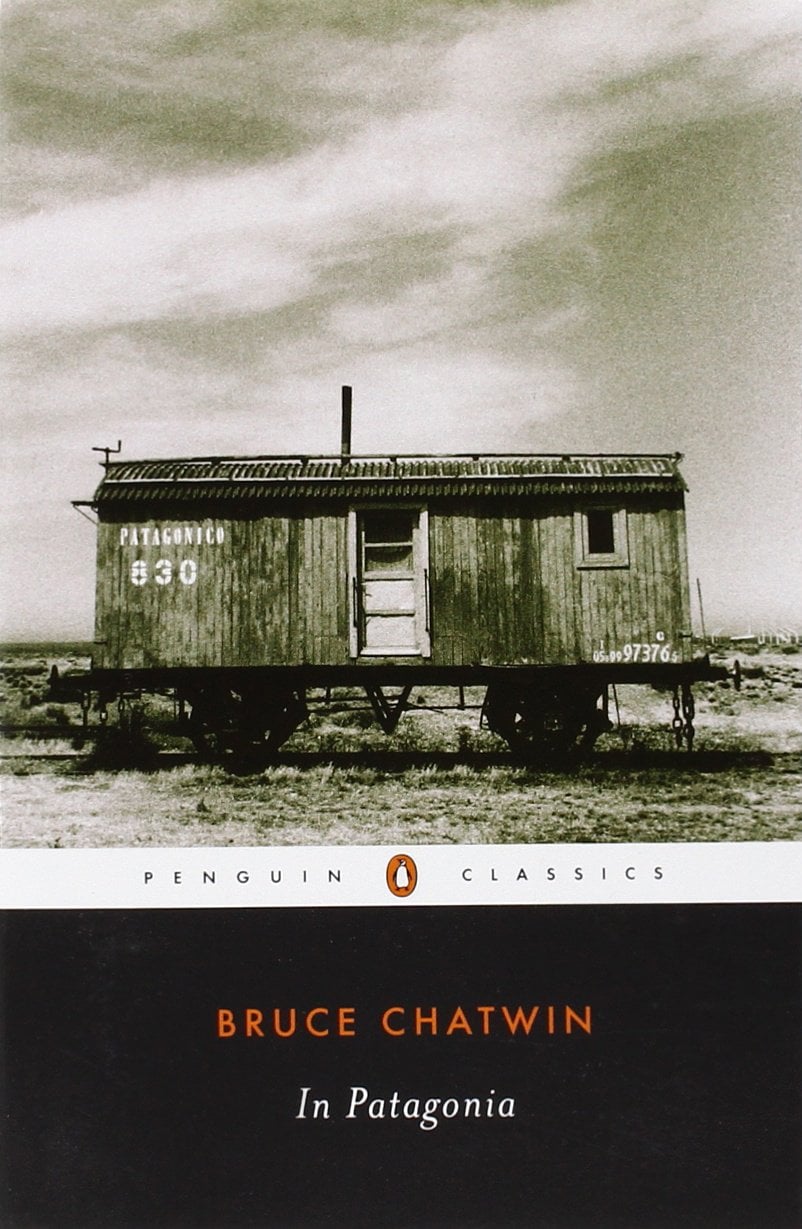
3. Across Patagonia by Lady Florence Dixie
One of Torres del Paine’s first tourists, an English society woman by the name of Florence Dixie , recounts her time living, hunting, and exploring the untamed south of Chile between 1978 and 1979, a time when Patagonia was an almost unexplored wilderness. Tired of life in England, Lady Florence Dixie set sail for South America with her husband and two of her brothers, looking for adventure. The group lived and traveled in the area around Torres del Paine , hunting local wildlife like guanacos for food, a pastime and necessity that Dixie both enjoyed and regretted. However, the most thrilling part of the book involves her discovery of and encounters with the wild horses, or baguales, of the area, including a fearsome but memorable incident with a daring wild stallion. Complete with beautifully detailed black and white sketches of the wildlife and landscapes, “Across Patagonia” is a must for Torres del Paine lovers who want to know more about how the area was discovered and what it was like before it became a popular tourist spot.
4. My Invented Country by Isabel Allende
Written by one of Chile’s modern literary stars, novelist Isabel Allende , “My Invented Country” is a loving but objective look at life in Chile before, during, and after the Pinochet dictatorship through the eyes of a young journalist who grapples with her decision to leave the country. Author of such beloved novels as “Zorro” and “The House of the Spirits,” Allende draws readers into her childhood with her distinct writing style, balancing humor and wit with somber reflections about the life of a expat. Go behind the scenes of the ancient house and family that inspired “The House of the Spirits,” explore the streets of Santiago and the Chilean countryside, sit at the table with a Chilean family, and follow Allende as she struggles to come to terms with the triumphs and tragedies of her life as she leaves Chile and permanently settles in the USA, connected by the events of 9/11, a date of loss and tragedy in both Chile and the US. For travelers hoping to know more about Chilean culture and home life from an insider’s perspective, “My Invented Country” is a must-read.
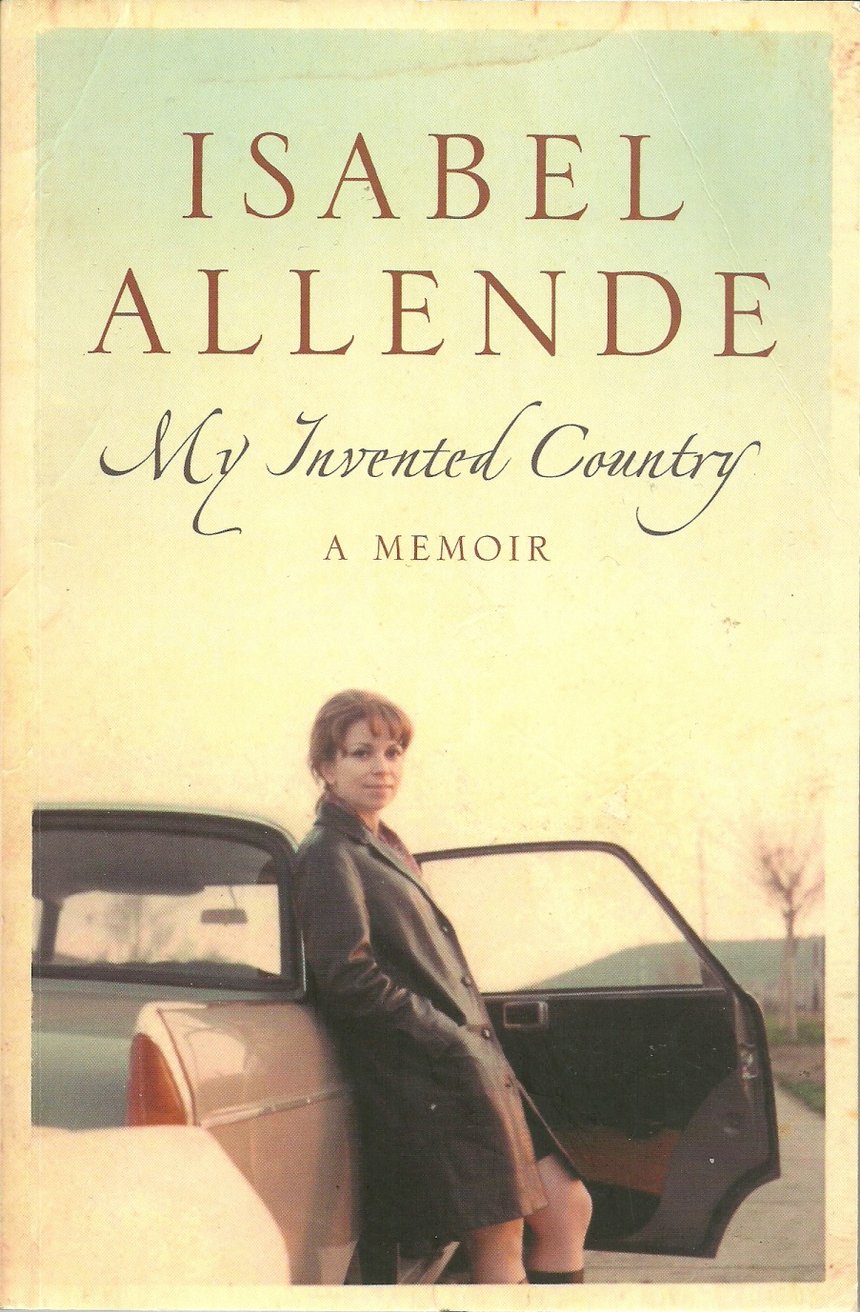
Want to read even more? Check out our blog for more great articles related to travel in South America.
Subscribe to our Newsletter
Related posts.
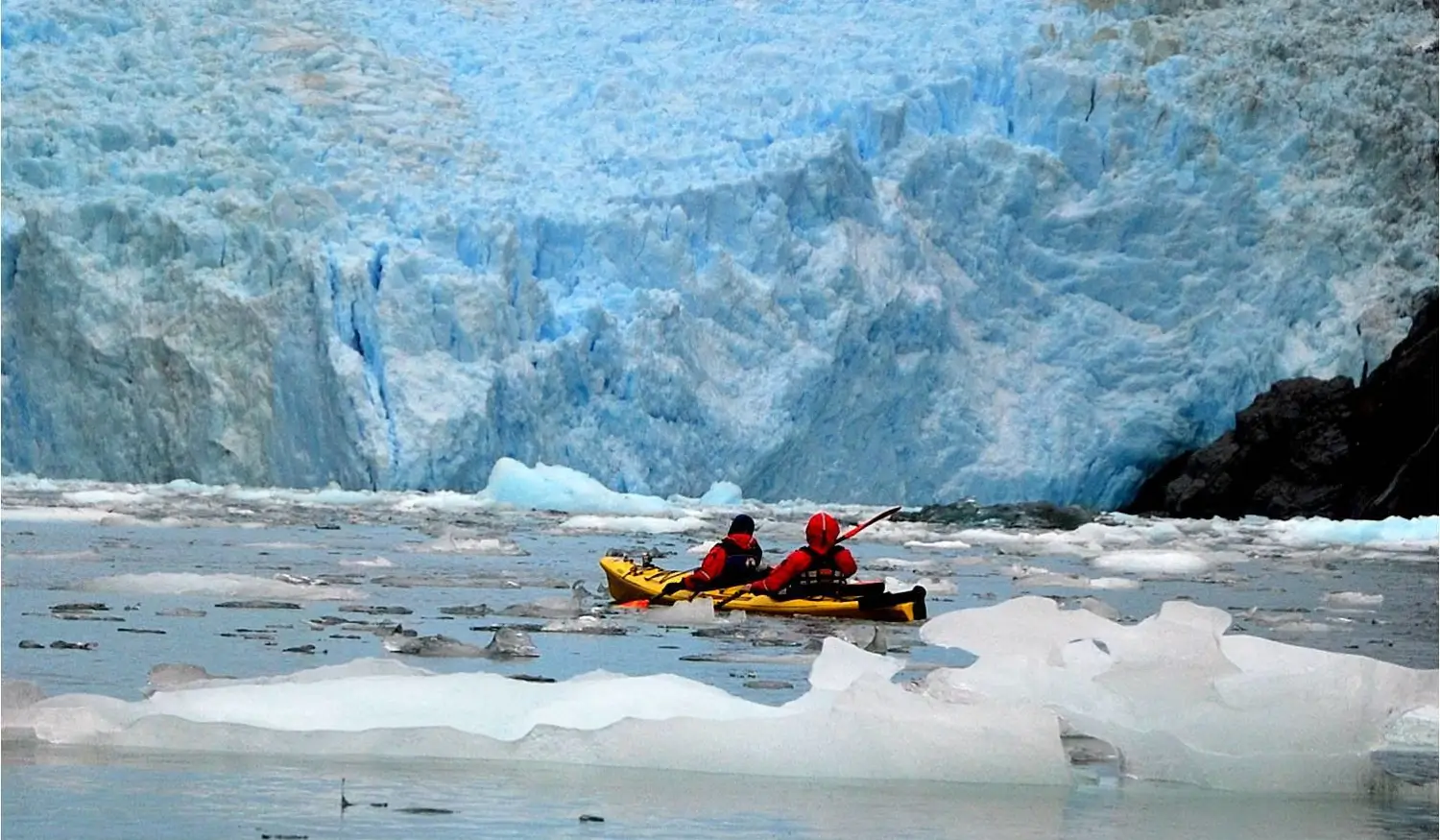
Patagonia's glaciers: worth a visit
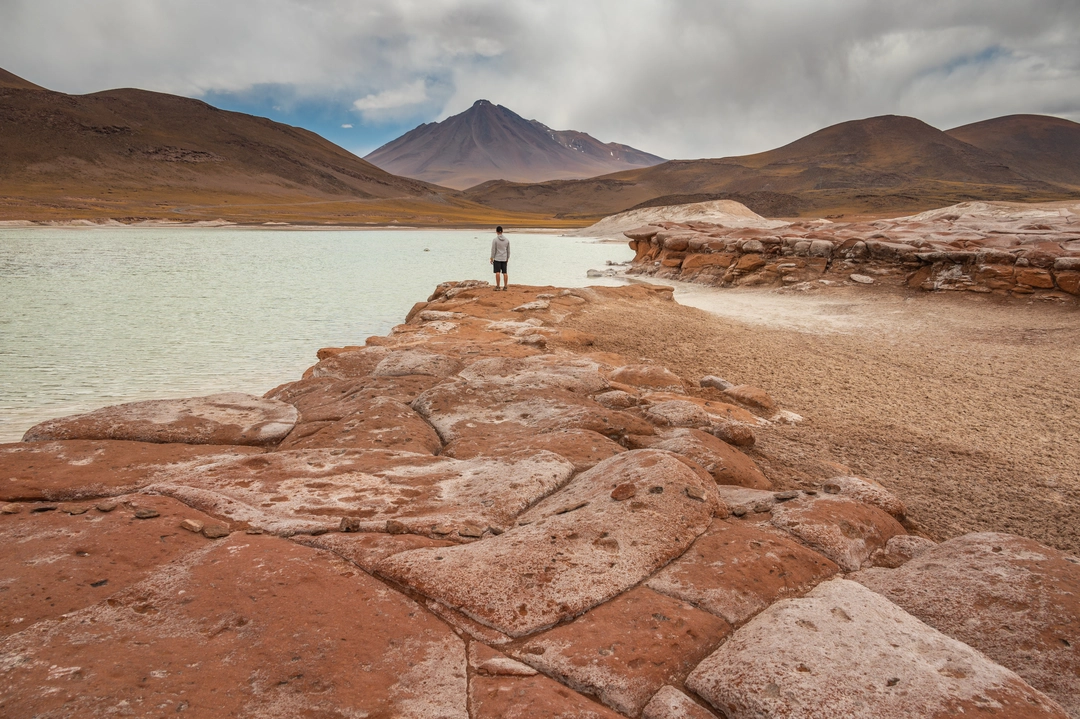
The Best Destinations in Chile for Adventure Travelers
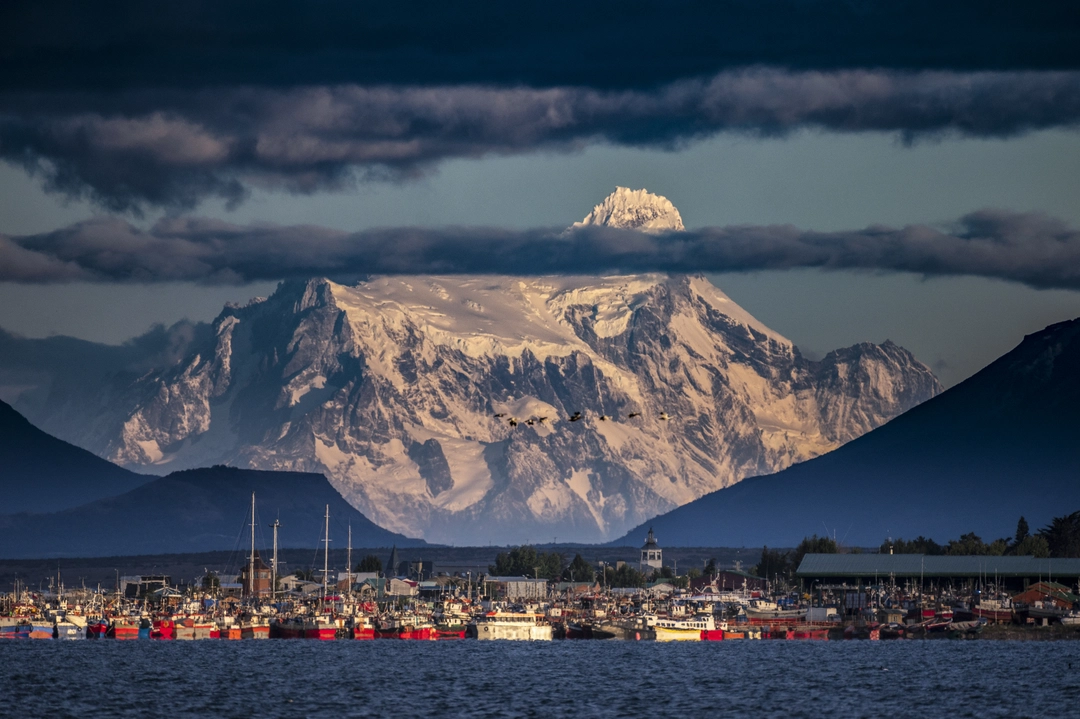
8 Things You Didn't Know About Patagonia

The Chilean Way
Want to learn more about the beautiful country of Chile? Download our insider’s guide to learn all the best travel tips and tricks.

- TERMS & CONDITIONS
- PRIVACY POLICY
Destination
- Multi Destination
- Salta Argentina
Experiences
- Multi-activity
- Exceptional Journeys
SOCIAL NETWORKS

Updated October 4th, 2022
Dear Traveler,
We are very happy to announce that there are currently no travel restrictions in Chile. Together with the above mentioned, it is mandatory to comply with the following requirements:
- You only have to present the vaccination certificate issued in your country when boarding to Chile. Those who do not have their vaccinations must present a negative result in a PCR test dated less than 48 hours from departure to enter Chile. Those who are under 18 years of age do not have any requirements to enter Chile
- A negative PCR upon arrival is not compulsory any more but diagnostic tests will be carried out randomly at the entry point to Chile. Confirmed cases shall be isolated according to the general health regulations.
- Medical insurance covering any expenses caused by COVID-19 is not compulsory any more
- The use of a face mask is voluntary
In case you have any questions, we will be happy to help you!
The Team at Cascada Expediciones & EcoCamp Patagonia
15% off with code APRIL15

- North America
- South America
- Middle East
- Australia & Pacific
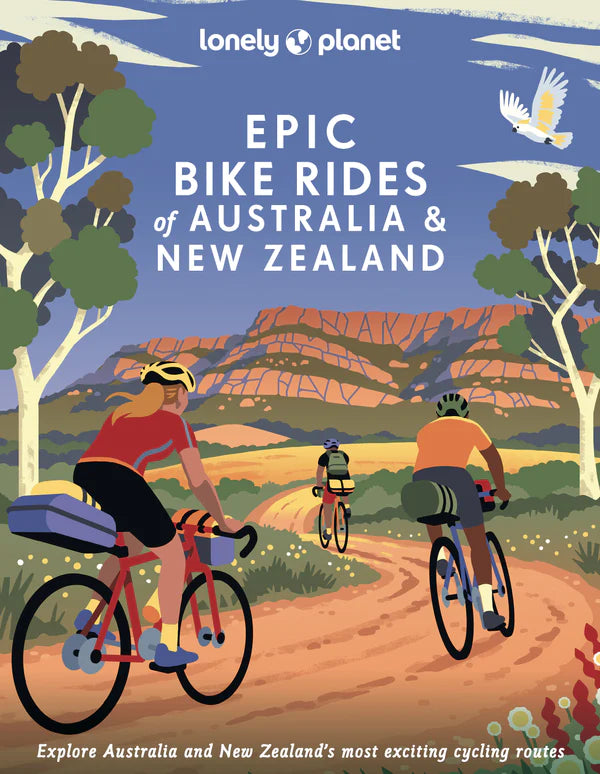
New Releases
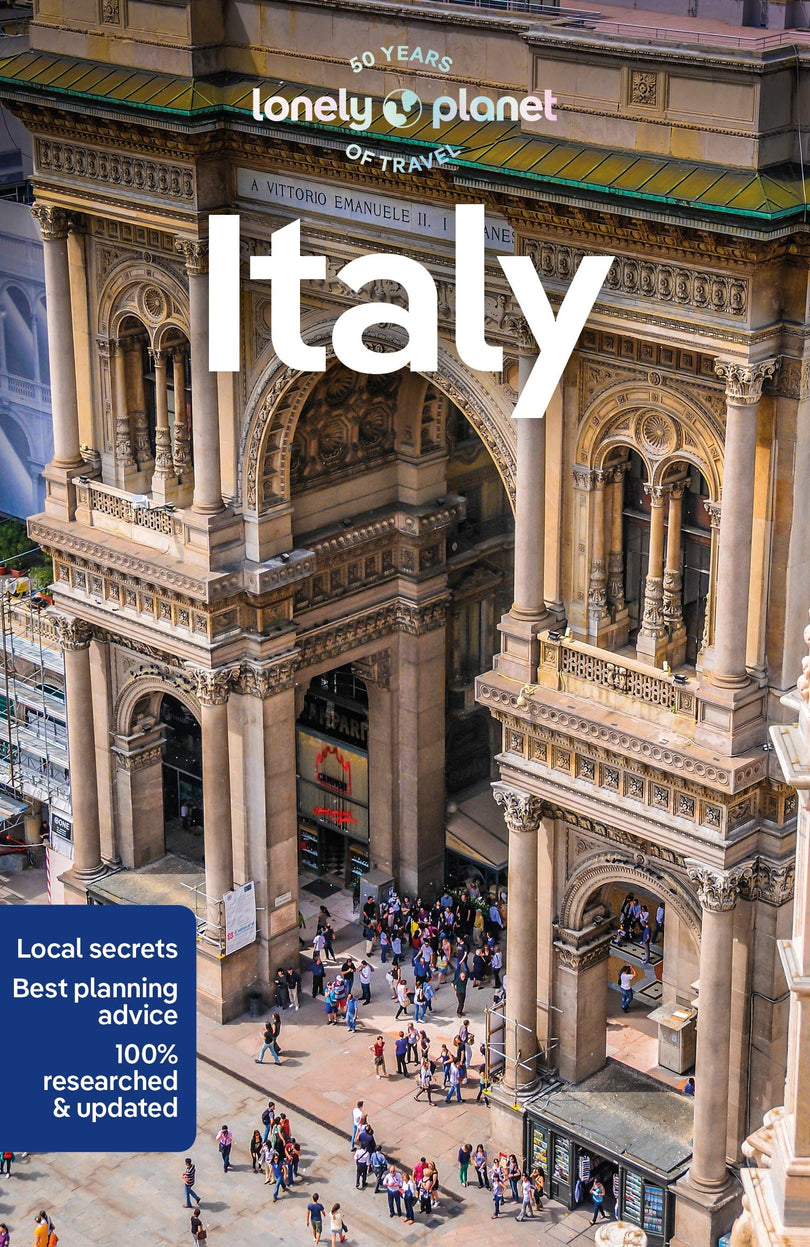
Trending Destinations
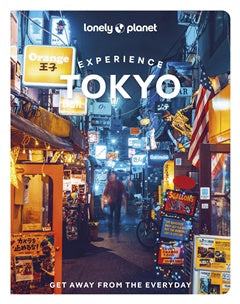
Experience Guides
- Outdoor Travels & Adventures
- Epic Guides
- Food & Drink
- Gifts & Inspiration
- Language Guides
- Lonely Planet Kids
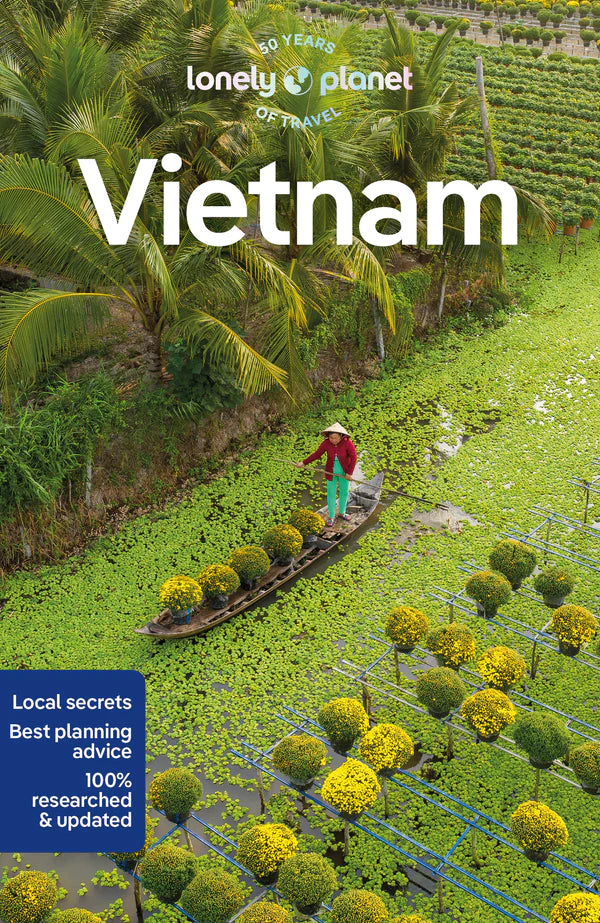
Country Guides
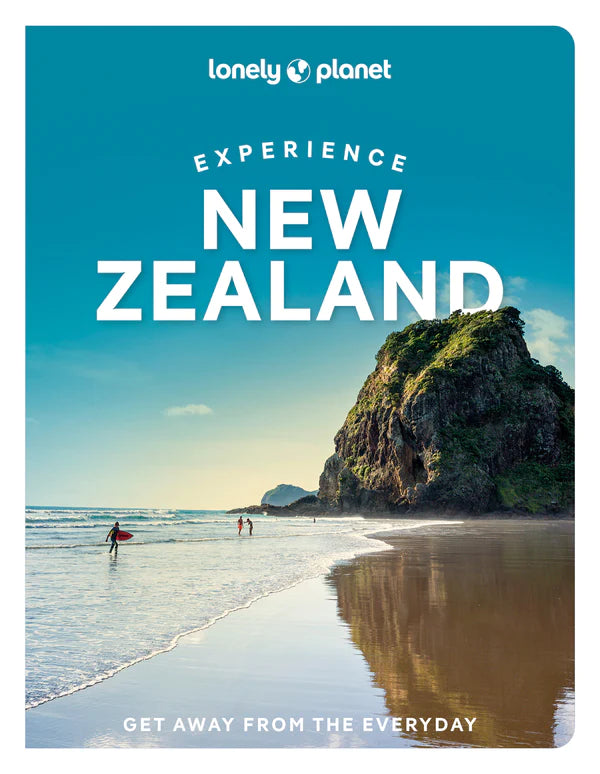
Pocket Guides
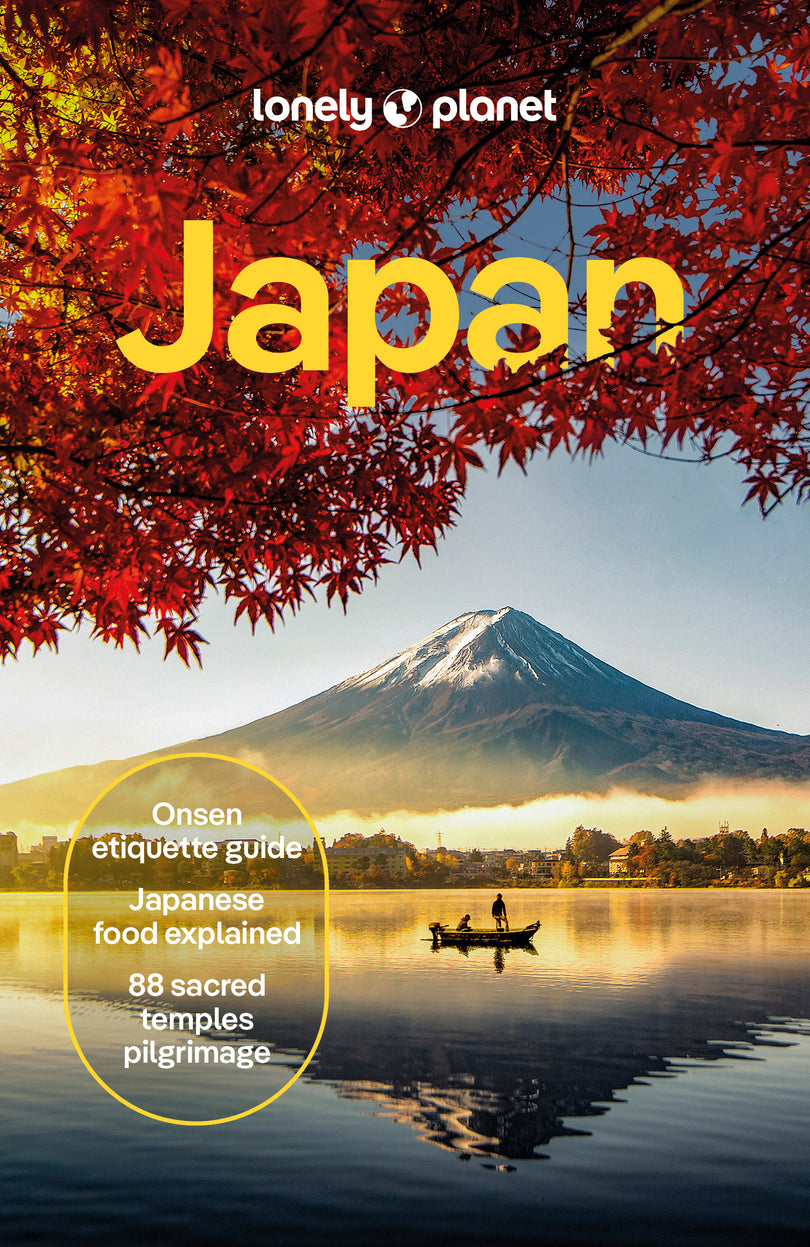
All Guides & eBooks
- Lonely Planet Insider
Your cart is empty

Best Time to Visit
Weather & Climate
Airports in Chile
Best Santiago Hotels
One-Week Itinerary for Chile
Best Places to Visit in Chile
Beach Destinations
Top National Parks
Guide to Chilean Patagonia
Guide to Valparaiso
Guide to Vina del Mar
Best Wineries in Chile
Things to Do in Chile
Things to Do in Santiago
Must-Try Food
Your Trip to Chile: The Complete Guide
South America’s skinniest country spans a volcano-fringed desert, fertile wine valleys, pristine fjords, and glacier stippled mountain ranges making it the ultimate destination for adventure travelers. This guide to Chile is a one-stop-shop for planning, covering everything from must-see places, tantalizing local cuisine, and money-saving tips to help you squeeze the most out of your trip.
Planning Your Trip
- Best Time to Visit: Most trips are timed to make the most of fine weather in Patagonia in the south, with the austral spring, summer, and early autumn (October through April) good months for clear, warm days.
- Language: Chileans speak Spanish but thanks to their penchant for slang and dropping constants at the end of words, bringing a phrasebook is recommended even for advanced Spanish speakers. Most tourist-fronting businesses have good English, as do younger Chileans residing in Santiago.
- Currency: The Chilean peso ($ CLP) is the official currency of Chile.
- Getting Around: Chile has an extensive infrastructure of increasingly low-cost flights that connect most cities across the country and, if booked in advance, are often significantly cheaper than buses. However, most inter-city flights are indirect and pass through the capital, so expect to spend plenty of time in Santiago’s domestic terminal. For local travel, affordable and comfortable bus services cater to short and overnight journeys, while Santiago’s excellent Metro/subway system is an easy and cheap means of exploring the capital. Hiring a rental car is an excellent option in Chile, particularly for exploring Patagonia.
- Travel Tip: Chile is a vast country packed with far more than you can see in a short period of time. We know it’s tempting to cram a whole month’s worth of activities into a far shorter time period, but we strongly recommend stripping your trip down to just a small number of destinations. You’ll spend far fewer hours on flights or overnight buses and come away wowed by the deep and unforgettable moments you’ve had the time and space to experience.
Things to Do
Chile’s remarkable diversity of landscapes and culture means you’re guaranteed to find plenty to fill an action-packed vacation. The north is home to the Atacama Desert, with its world-class stargazing and otherworldly landscapes; Santiago brims with fine museums, trendy new restaurants, and a burgeoning street art scene; the Central Valley is a place of rolling vineyards and classy boutique hotels; while the Lakes region is volcano country, where the intrepid can summit a fiery giant. In the far south, Patagonia is a place of pristine national parks and outdoor adventure, while west across the Pacific brings you to Rapa Nui (Easter Island), a UNESCO World Heritage site dotted with statues of long-lost ancestors.
On a first trip to Chile, don’t miss the following:
- Spend a day exploring coastal Valparaíso ’s tumbling, street art daubed hills, dining on freshly-caught fish in its trendy eateries, and learning about the life and loves of the much-adored Chilean Nobel Prize-winning poet, Pablo Neruda.
- Strap on your hiking boots and discover Patagonia’s most striking wildernesses in Torres del Paine National Park . Clamber up to glassy lagoons or paddle a kayak across icy waters filled with bobbing icebergs to admire vast glaciers. Head out by boat to visit chattering Magellanic penguin colonies or learn how to be a cowboy at a sheep ranch before dining on local specialties of spit-roasted lamb and king crab.
- To appreciate a completely different side to Chile, take the six-hour flight across the Pacific to Rapa Nui—a Polynesian island home to almost 900 moai (stone statues) —to tour these sacred sites, dive into warm, crystalline waters, and sample tuna ceviche.
Get more inspiration with our guide to the top destinations to visit in Chile , the best things to do in Chile , and the best things to do in Santiago .
What to Eat and Drink
Chile might not be known for its dining scene, but prepare to be surprised. This is a country with a tradition of asado (barbecue) and expertly-cooked seafood, while growing indigenous culinary influences promise truly inventive flavors.
Santiago is a hub of increasingly fine dining, with a handful of restaurants that showcase unusual Chilean ingredients now on the world’s best restaurant lists. But it’s not all fancy: traditional markets and no-frills food trucks in the capital are great places for classic Chilean meat and fish stews and savory empanadas. In the south, Chiloé Island is proud of its traditional seafood dishes including curanto (a seafood stew cooked underground), while Patagonia lays claim to juicy lamb roasted for hours over an open fire.
Chile is home to two main alcoholic drinks: wine and pisco. A large proportion of the Central Valley is stippled with vineyards, with Colchagua and Casablanca the most sought after, for their red carménère and white sauvignon blancs respectively, and both offering tours, tastings, and even top dollar dining. Further north in the Elqui Valley, moscatel grapes are fermented to become the grape brandy, pisco, which is best sampled in the zingy cocktail, pisco sour, which any self-respecting bar across the country can whip up.
Learn more about what to eat with our list of must-try Chilean foods .
Where to Stay
Chilean accommodations run the whole gamut of basic campsites to exclusive five-star hotels, with plenty of family-run B&Bs, boutique hotels, and rental cabins in between.
Santiago is home to a wealth of affordable B&Bs and small hotels located right in the heart of the tourist districts of Lastarria, Bellavista, and Italia, granting quick access to the metro, as well as excellent restaurants, bars, and shops on your doorsteps. In more rural parts and in national parks across the country you'll find increasingly stylish chalet-style cabins. They are a hallmark of Chile and a great option for self-catering, with many built to include hot tubs. In Chiloé, you’ll want to stay in an oceanside palafito (a traditional fisherman’s dwelling on stilts) for the best sea views.
In the south, long-distance treks through isolated national parks mean lodgings in campsites or hostel-style accommodation, although many parks are now home to at least one five-star hotel, generally tucked deep into the wilderness and offering outstanding, lavish accommodation. In more remote parts of Patagonia, sheep and cattle ranches, many of which are still operational, also provide comfortable, sometimes rustic lodgings—all with the opportunity to enjoy a traditional Patagonian barbecue feast.
Getting There
Santiago’s one international airport, Comodoro Arturo Merino Benítez, is the hub for all flights into the country with a record-setting 24.6 million people passing through the airport in 2019. Most U.S. airports have connections with Santiago, with many offering direct flights in the summer months. These include American Airlines, Delta, and United Airlines.
If flying from within South America, budget companies including Sky Airlines and Jet Smart, as well as regional mainstay LATAM, provide the most frequent connections from hubs such as Lima in Peru and Buenos Aires in Argentina.
Rickety buses also provide an overland connection to Chile from Peru, Bolivia, and Argentina, although adventure cruise ships from Ushuaia to Punta Arenas in Patagonia in the south are a far more daring means of crossing the border.
For domestic travel, aim for budget carriers Jet Smart and Sky Airlines where possible and plan to book at least a few months in advance for the cheapest fares. If you do, you’ll often find that three-hour flights between cities are the same price, if not cheaper, than 12-hour bus journeys.
Culture and Customs
- Chileans greet family, friends, and visitors alike with a kiss on the right cheek (for women greeting women and men greeting women) or a brief one-arm hug (for men greeting men).
- Much the same as other South American countries, punctuality is not a national strength, and Chileans are known for arriving to social occasions late—although most tour operators and all transport companies pride themselves on their punctuality, so be sure to arrive on time for paid excursions or risk being left behind.
- In restaurants, a 10 percent tip is added to your bill though you’re under no obligation to pay it if the service doesn’t meet your expectations.
- Uber and other ridesharing apps are illegal but widely used in Chile with 85,000 Uber drivers across the country in 2019. Despite the technical illegality, rideshares are a convenient means of getting around and avoiding being scammed by yellow taxi cabs (an unfortunately common occurrence in the capital). Avoid using an Uber from Santiago’s airport to the city, however; police regularly impound Ubers operating here, so you’re better off arranging an official airport shuttle instead.
Money-Saving Tips
- In popular destinations such as Rapa Nui (Easter Island) and Patagonia, prices rise considerably in January and February, so avoid these months for a chance to secure cheaper deals on airfare, hotels, and tours.
- Santiago’s excellent Metro is the fastest and cheapest means of exploring the capital - just keep a close eye on your belongings as pickpockets do operate here.
- Book domestic flights at least a few months in advance to secure the best deals. This is particularly the case for Rapa Nui (Easter Island), where prices can triple closer to the departure date.
- If traveling to Patagonia, take plenty of US dollars with you. Paying in this currency at hotels and tour agencies can save you up to 10 percent off the advertised price.
- Bringing US dollars to switch at exchange houses will also save plenty of cash as ATMs can charge up to US$10 per withdrawal, and these can often be capped at a maximum of US$150 each.
- Request small bills where possible when receiving change. Most national parks accept cash only and may refuse to change large, 20,000 peso notes. If hiring a car, you’ll also want small bills for toll booths on the highways.
Chile Travel. " Currency. "
History.com. " Easter Island ." February 28, 2020.
Arturo Merino Benítez Airport. " Santiago Airport Projects Passenger Traffic to Drop From 24.6 Million to 9 Million by 2020. " September 8, 2020.
Reuters. "Chilean Bank Ordered to Open Uber's Accounts to Taxman." October 15, 2019.
A Guide to Airports in Chile
One Week in Chile: The Ultimate Itinerary
Weather in Chile: Climate, Seasons, and Average Monthly Temperature
The Best Time to Visit Chile
Your Trip to Argentina: The Complete Guide
Your Trip to Ireland: The Complete Guide
The 20 Best Things to Do in Chile
Best Snow Sports in South America
The Best Countries in the World for Adventurous Travelers
Complete Guide to the Great Barrier Reef
Road Trip Ideas Through South America
The Complete Guide to Chilean Patagonia
Top 15 Destinations in Chile
Where to Go in 2021: 10 Future Trips You Can Start Planning Now
Your Trip to San Diego: The Complete Guide
Top 10 South America Travel Destinations
- NONFICTION BOOKS
- BEST NONFICTION 2023
- BEST NONFICTION 2024
- Historical Biographies
- The Best Memoirs and Autobiographies
- Philosophical Biographies
- World War 2
- World History
- American History
- British History
- Chinese History
- Russian History
- Ancient History (up to 500)
- Medieval History (500-1400)
- Military History
- Art History
- Travel Books
- Ancient Philosophy
- Contemporary Philosophy
- Ethics & Moral Philosophy
- Great Philosophers
- Social & Political Philosophy
- Classical Studies
- New Science Books
- Maths & Statistics
- Popular Science
- Physics Books
- Climate Change Books
- How to Write
- English Grammar & Usage
- Books for Learning Languages
- Linguistics
- Political Ideologies
- Foreign Policy & International Relations
- American Politics
- British Politics
- Religious History Books
- Mental Health
- Neuroscience
- Child Psychology
- Film & Cinema
- Opera & Classical Music
- Behavioural Economics
- Development Economics
- Economic History
- Financial Crisis
- World Economies
- Investing Books
- Artificial Intelligence/AI Books
- Data Science Books
- Sex & Sexuality
- Death & Dying
- Food & Cooking
- Sports, Games & Hobbies
- FICTION BOOKS
- BEST NOVELS 2024
- BEST FICTION 2023
- New Literary Fiction
- World Literature
- Literary Criticism
- Literary Figures
- Classic English Literature
- American Literature
- Comics & Graphic Novels
- Fairy Tales & Mythology
- Historical Fiction
- Crime Novels
- Science Fiction
- Short Stories
- South Africa
- United States
- Arctic & Antarctica
- Afghanistan
- Myanmar (Formerly Burma)
- Netherlands
- Kids Recommend Books for Kids
- High School Teachers Recommendations
- Prizewinning Kids' Books
- Popular Series Books for Kids
- BEST BOOKS FOR KIDS (ALL AGES)
- Ages Baby-2
- Books for Teens and Young Adults
- THE BEST SCIENCE BOOKS FOR KIDS
- BEST KIDS' BOOKS OF 2023
- BEST BOOKS FOR TEENS OF 2023
- Best Audiobooks for Kids
- Environment
- Best Books for Teens of 2023
- Best Kids' Books of 2023
- Political Novels
- New History Books
- New Historical Fiction
- New Biography
- New Memoirs
- New World Literature
- New Economics Books
- New Climate Books
- New Math Books
- New Philosophy Books
- New Psychology Books
- New Physics Books
- THE BEST AUDIOBOOKS
- Actors Read Great Books
- Books Narrated by Their Authors
- Best Audiobook Thrillers
- Best History Audiobooks
- Nobel Literature Prize
- Booker Prize (fiction)
- Baillie Gifford Prize (nonfiction)
- Financial Times (nonfiction)
- Wolfson Prize (history)
- Royal Society (science)
- Pushkin House Prize (Russia)
- Walter Scott Prize (historical fiction)
- Arthur C Clarke Prize (sci fi)
- The Hugos (sci fi & fantasy)
- Audie Awards (audiobooks)
World » Americas » Latin America » Chile
Browse book recommendations:
- Latin America
We have recommended books on Chile covering Chilean literature, history, politics and culture. Chile is a country known for its natural beauty and rich and diverse culture.
The country has a strong literary tradition, with notable poets and novelists such as Isabel Allende and Nobel Prize winers Gabriela Mistra l and Pablo Neruda .
When Women Kill: Four Crimes Retold
By alia trabucco zerán & sophie hughes (translator).
*** Winner of the 2022 British Academy Book Prize ***
Read expert recommendations
“It is wholly original. It’s the unpicking of four rather mundane but awful stories of acts of killing involving women. It’s taking the events of many decades ago and reviewing them with reference to a new set of understandings and the values of today. This book has a particular gendered aspect that is incredibly significant in explaining to us the circumstances in which, in Chile, society came down like a ton of bricks on individual women who, for one reason or another, found themselves in a situation in which they were involved in an act of killing…It’s also sublimely written.” Read more...
The British Academy Book Prize: 2022 Shortlist
Philippe Sands , Lawyer
The Soul of a Woman
By isabel allende.
A new memoir (she's already written a couple) from Chilean literary legend Isabel Allende. Now close to 80, she remains exuberant about life and a staunch feminist. Isabel Allende's father was the cousin of Salvador Allende, the Chilean president who was overthrown in the military coup of 1973 that brought Augusto Pinochet to power. It would turn into one of the bloodiest episodes in political history, and Allende herself ended up in exile in Venezuela. But it was there that she started writing her first and probably still most famous book, The House of Spirits .
The Remainder
“A story from Chile, mainly Santiago. It’s highly original, very political, with a totally wonderful use of words. The words are perfectly turned. It’s one of those books where the skill of the wordsmithery tumbles you into new stories, into shared experiences. Again, a very, very lyrical translation as well.” Read more...
The Best Novels in Translation: the 2019 Booker International Prize
Bettany Hughes , Broadcaster
Death and the Maiden
By ariel dorfman.
“It is about a Chilean woman, Paulina, who meets someone through her husband whose voice she recognises as her torturer…I would also say that the reason I selected it is because the play addresses the dilemma of what you do to the torturer and what the torture victim is entitled to when the nightmare of the torture-based regime is over and a state is trying to reorganise itself along democratic and more humane lines. I think the play shows very starkly that kind of dilemma that societies experience.” Read more...
The best books on Torture
Juan Mendez , Lawyer
Andrès Bello
By ivan jáksic.
“Bello was born in Caracas in the 1780s. He was Simon Bolivar’s tutor. He then came to London in 1810 as part of a diplomatic mission to try and persuade the British to support the Venezuelans in their recent struggle with Spain for independence or at least self-government. He then stayed for nearly 20 years in London, living in Euston in conditions of some penury, working with James Mill and Jeremy Bentham…This excellent biography shows – not unlike the Cañizares volume – how ideas were shared to an appreciable degree across North and South Atlantic worlds. Bello’s inaugural speech in Santiago, for instance, is very similar in approach to that of Cardinal Newman’s ‘Idea of a University’.” Read more...
The best books on Latin American History
James Dunkerley , Political Scientist
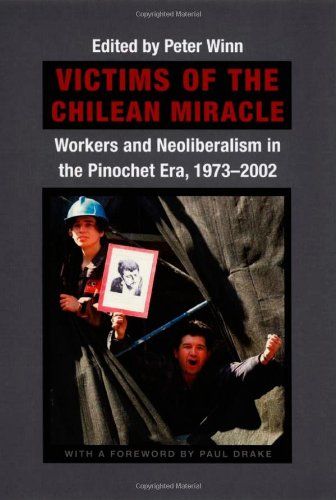
Victims of the Chilean Miracle: Workers And Neoliberalism In The Pinochet Era, 1973–2002
By peter winn.
“He has brought together a group of researchers who look at what happened in various sectors in the economy try to explore what had been the benefits and drawbacks of this period of democracy.” Read more...
The best books on Pinochet and Chilean Politics
Alan Angell , Political Scientist
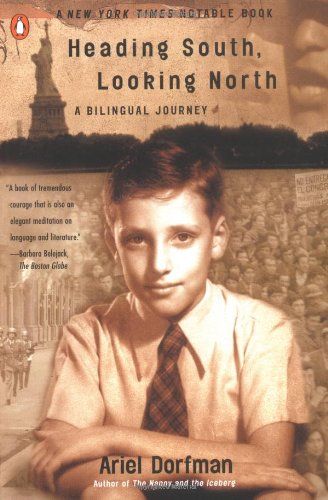
Heading South, Looking North: A Bilingual Journey
“Dorfman is a well-known playwright. People will know about his play Death of the Maiden and he has written a lot of novels. And this is his autobiography. It is the story of a peripatetic intellectual — he wandered all over the place. He was born in Argentina and spent a long time in the United States. I think what he does extremely well is to give us an insider’s view of what is happening. But he also has the perspective of someone who is looking at it from the outside. He speaks and writes in English as well as he speaks and writes in Spanish. He was very involved in the cultural side of the Allende period. A lot of things happened in Chile during the Allende years and one of the impressive ones was the cultural innovations that were taking place in song, painting, theatre and in writing. What this book does is show you what it was like to be an intellectual at a time of great social turmoil. He is looking into where his roots are. It is a very personal as well as a very political book.” Read more...
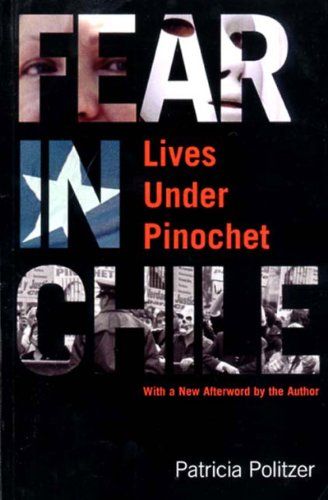
Fear in Chile: Lives Under Pinochet
By patricia politzer.
“Patricia actually wrote it in 1985 towards the end of Pinochet’s regime. So it’s a courageous book because to publish books in Chile which might be seen to contain critical material was not an easy decision to make. What she does is look at a whole spectrum of people: from powerful people with money on the right, to the poorest of the poor peasants. Through their stories she reconstructed their lives and beliefs. I found it an extraordinarily moving book. The last chapter deals with the case of José Tohá, one of Allende’s ministers who was starved to death in a military hospital. His widow, because they were friends of the family, goes to Pinochet to try to find out what happened. I was actually moved to tears in this chapter because it is this woman’s attempt to come to terms with the dreadful things that have happened to her husband at the hands of someone they thought of as a friend.” Read more...
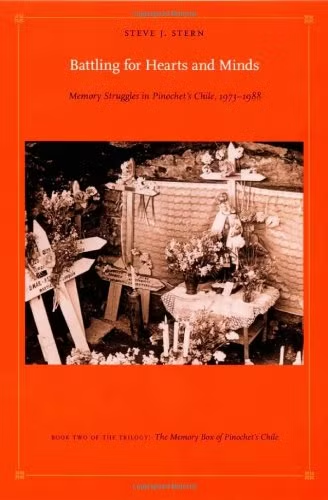
Battling for Hearts and Minds: Memory Struggles in Pinochet’s Chile, 1973–1988
By steve j stern.
“This is an extraordinarily moving book. It tells the story of people who, in the most appalling circumstances, tried to defend liberty. Not people who were necessarily very much on the left, but just ordinary decent democrats…He focuses on key episodes, like the assassination attempt on Pinochet in 1986 and what that meant. There is a great deal on the church. Although the church in Chile is a very conservative institution now, it had a strong line on human rights. For the first ten years of the dictatorship, before the economic crisis of 1982/3, the only real internal opposition to the abuses of the regime came from the Catholic Church.” Read more...

The Pinochet Regime
By carlos huneeus.
“Basically, there have been a number of ways of defending the Pinochet regime. You can say that it was necessary to deal with the turmoil of the Allende years. You can say that Pinochet ran the economy well and so on. What this book does is seek to destroy all these kinds of justifications. Running through the whole book is a sustained attack on the legitimacy of Pinochet’s regime and its attempts to portray itself as a genuine reformer in Chile. There is a lot on the human rights episodes. So it is a very effective demolition of any kind of attempt to justify what went on in those years. It is extraordinarily well-documented and impeccable academically. And it is also very good on how clever Pinochet was at managing to stay in power during all those years. He was the commander-in-chief of the army and nothing happened without his say-so. “ Read more...
The best books on Pinochet and Chilean Politics , recommended by Alan Angell
The pinochet regime by carlos huneeus, battling for hearts and minds: memory struggles in pinochet’s chile, 1973–1988 by steve j stern, fear in chile: lives under pinochet by patricia politzer, heading south, looking north: a bilingual journey by ariel dorfman, victims of the chilean miracle: workers and neoliberalism in the pinochet era, 1973–2002 by peter winn.
Marshalling one of the first ever televised coups, Chilean dictator Augusto Pinochet's legacy is fraught. While some apologists try to justify the dictatorship on economic grounds, his time in office saw innumerable human rights abuses. Alan Angell , Emeritus Fellow in Latin American Politics at the University of Oxford, considers the regime of "a very cruel man."
Marshalling one of the first ever televised coups, Chilean dictator Augusto Pinochet’s legacy is fraught. While some apologists try to justify the dictatorship on economic grounds, his time in office saw innumerable human rights abuses. Alan Angell, Emeritus Fellow in Latin American Politics at the University of Oxford, considers the regime of “a very cruel man.”
We ask experts to recommend the five best books in their subject and explain their selection in an interview.
This site has an archive of more than one thousand seven hundred interviews, or eight thousand book recommendations. We publish at least two new interviews per week.
Five Books participates in the Amazon Associate program and earns money from qualifying purchases.
© Five Books 2024

The Ultimate Chile Itinerary For Ten Days and Two Weeks
By Author Steph Dyson
Posted on Last updated: 8th April 2024
With the piercing peaks of the Andes prominent in the north, glacier-riddled national parks of the south, and fertile, wine-growing valleys of the center, it’s fair to say that Chile has jaw-dropping geographical diversity oozing from every pore.
It’s for this very reason why planning a Chile itinerary for ten days or more of travel might seem a bit of a headache. However, I’ve got plenty of ideas about how to organize a showstopping tour of this truly incredible country – and even wrote a guidebook about it .
Click to navigate this article:
How to use this Chile itinerary
Luckily, Chile has one of the best plane networks and road connectivity in South America, meaning you can – and should – zip between its diverse regions if you’re on a short trip.
Staying here longer? Even better; you’ve got plenty of time to really get under the skin of a country I came to love over the three and a half years I was based here. You can also get inspired by my list of the 31 best places to visit in Chile – which includes not just the “must-sees” but those under-the-radar destinations that few other websites mention.
This Chile itinerary focuses on the things to do in Chile broadly, but you’ll find plenty more details about where to go in Patagonia in the following:
- Four itineraries for one and two weeks of travel in Patagonia
- An itinerary for three or more weeks in Patagonia and free e-book download )
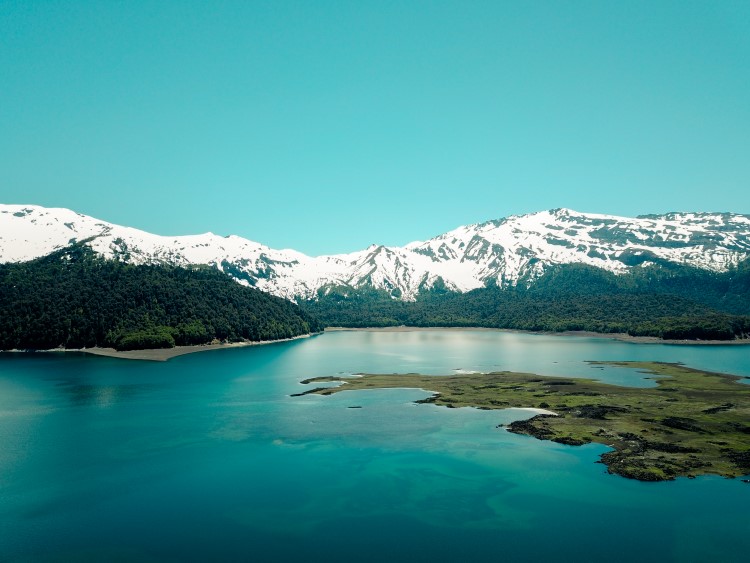
Looking for guidance about what to take with you on a trip to Chile? Check out our detailed Patagonia packing list , as well as our guide to what to pack for South America more generally.
Recommendations for travel in Chile and using this Chile itinerary:
- As a vast, sprawling country, there are plenty of things to do in Chile; it’s always better to slim down your travel itinerary, take it slow and really dig deep into a place than scratch the surface with a whistle-stop tour of all the top attractions. In the latter, you’ll also spend too much time traveling between places which, let’s face it, is not the main idea of a holiday or even longer-term travel.
- Travel in Chile is expensive and while this post doesn’t delve too deeply into how you can travel Chile on a budget, consider booking cheaper types of accommodation, such as local alojamientos or hospedajes (cheap B&Bs) or cabañas (cabins) if you’re in a group, many of which aren’t available to book via hotel booking websites.
- Chile is a safe place to visit. Since the pandemic, parts of Santiago and Valparaiso have become less safe than they used to be (for example, avoid Downtown at night) and the use of Uber or official taxis firm is highly recommended, but once you get out of the city, you’ll find Chile a safe and welcoming place to travel . Patagonia, and pretty much any rural area, is incredibly safe.
- There is a wealth of good hotels and guesthouses across the country. Some of the best had a profound impact on my trips around the country, which is why I’ve pulled together my absolute favorites into this guide to the best hotels in Chile (just 31 of them!!).
- Plenty of hostels and the previously mentioned accommodation types also have kitchens, making it easy to self-cater. Bear in mind that Chile has some excellent restaurants and some surprisingly good local cuisine (even if it might not seem like it at first glance) so make sure to factor in some time and money for eating out!
- Alternatively, camping is relatively easy throughout the country , so pack camping and cooking equipment (see my recommendations in this post about packing for Patagonia ) and use that as a way of seeing Chile on the cheap.
- These Chile itineraries for ten days and two weeks rely on the fact that you will take some long-distance transport to travel between the regions. Yes, flights can be expensive, but if you plan ahead, you can get a good deal with Sky Airline (the low-cost airline) and LATAM (the more upmarket airline). I generally compare prices on Skyscanner and then book directly through the companies themselves.
- Additionally, Jet Smart is Chile’s answer to Easyjet in Europe and has some extraordinarily low fares, although, they don’t yet offer flights to all of the cities and they’re often at slightly more awkward hours. However, they’re definitely worth checking out, particularly as they’re starting to offer direct flights between cities in Chile without having to go through Santiago, which can significantly reduce your flight time (you can see their full list of destinations here ). Be aware that you always have to pay an extra fee for both hold baggage and cabin baggage and they will charge you if you go over the weight limit for either.
- Buses are also an inexpensive and reliable way of traveling through Chile, with long-distance, overnight buses making it easy enough to travel from Puerto Montt to Santiago or Santiago to San Pedro de Atacama in reasonable comfort (although prices of flights, if booked a few weeks in advance, are generally as cheap as bus tickets for these routes). Aim to book a couple of days in advance; websites such as Bus Bud , Viaje en Bus , and Recorrido are really helpful, while you can book off the cuff at the bus terminals in all towns and cities.
- Renting a car is also a great way of traveling. I’ve personally driven through a lot of Chile and it’s much faster than taking buses and gives you the freedom to explore beyond the main tourist destinations. Driving in Santiago is somewhat terrifying and you find drivers don’t pay a lot of attention in most cities and even in rural areas, so you’ll want to keep your wits about you. However, of all the countries in South America, Chile (and Argentina) is definitely the safest place to rent a car. There are lots of tolls on the highways, so make sure you’ve always got cash and download Maps.me for maps available without internet. I always book using Rental Cars , as I find they have the best prices (even better than going directly with companies generally) and have insurance documents in English. Always double-check your insurance documents to ensure your insurance is valid for driving on unpaved roads if you plan on exploring the Carretera Austral , as this is not always guaranteed.
- Uber works in Chile. Uber used to be illegal, but now isn’t. Uber is generally a reliable and safe way of traveling around cities (and better than hailing a cab, which will often try and rip you off or scam you).
- Oh, and I lived in Santiago for close to three years and wrote a guidebook about Chile (you can learn about the project here and buy the book here ), so rest assured that these itineraries stem from some pretty extensive exploration and travel.
Planning Your Trip to Chile?
Save time, stress & money with a customized travel itinerary planned for you by a Chile expert
FAQs about visiting Chile
Chile is a vast country, extending 4,270 km (2,653 mi) from tip to toe and packed with superlative natural landscapes, world-renowned wineries, and remarkable cultural destinations. As a result, the minimum amount of time you want to spend in Chile to truly get a feel for the country is ten days.
Seven days isn’t much time to see this huge country. However, with just seven days, you could spend one in Santiago enjoying the city’s fine restaurants and exploring its museums and street art , before heading out to the Casablanca wine valley to sample the country’s tastiest white wines or to the historic coastal city of Valparaíso .
From there, you can fly three hours south to Punta Arenas, the southernmost settlement in continental South America, where you can see penguins and whales.
Afterward, continue to Puerto Natales (three hours north by vehicle), the gateway town to Torres del Paine National Park . Spend three days in this beautiful protected area kayaking to glaciers, hiking to lofty mountain peaks, and even catching sight of pumas. Then, fly back to Santiago and then home.
January and February mark the hot summer months in Chile, but also the busiest times for tourism. If you want to explore the sights of Patagonia and other popular places around the country without the crowds, the months of November and March are the best times to visit Chile . Expect slightly cooler temperatures but quieter attractions!
Yes I can! While there will be tour agencies operating wherever you’re based in the world, I suggest booking through local company EcoChile Travel , a leading tour operator based out of Santiago.
Because they’re local, they’re far better acquainted with what’s going on in the country and the new, exciting places that should form part of your itinerary than international companies and will also get you the best price.
All of EcoChile Travel’s itineraries can be custom designed and they’ll organize all the logistics of booking your trip, plus set you up with an interactive app with all your travel reservations, and dining recommendations.
If any of the itineraries below tickle your fancy, they you they should be able to turn it into reality for you!
Chile Itinerary for ten days of travel
Day one: santiago.
Arrive at Aeropuerto Internacional Comodoro Arturo Merino Benítez (SCL) in Santiago and take either a transfer ($7,000 with Delfos or TransVIP ; no need to book in advance), Uber or the Turbus airport bus (get off either at Terminal Pajaritos (better if it’s rush hour) or Terminal Alameda and take the metro Line 1 to the centre of town).
Spend your afternoon trotting around Downtown. Visit the Plaza de Armas to see the oldest buildings in the city, some of which date back to the 18th century.
Pop into the Museo Histórico Natural (Natural History Museum) to learn about Chilean history and, more importantly, to take their free tour up to the Reloj de la Torre , the Clock Tower, for incredible panoramas of the entire Plaza de Armas.
Visit the nearby Museo Chileno de Artes Precolombino (Chilean Museum of Pre-Colombian Art), with its incredible collection of pottery, textiles, and artwork covering the pre-Colombian civilizations across Latin America.
You could also spend an afternoon learning about another side of Chile at the Museo de Memoria y los Derechos Humanos (Museum of Memory and Human Rights), which explores the darkest days of Chile’s history: the Pinochet dictatorship.
Finally, read this article about the best things to do in Santiago , this piece about day trips you can’t miss from Santiago , and then listen to my interview on the We Travel There podcast to learn more about my recommendations for visiting Chile’s capital city.
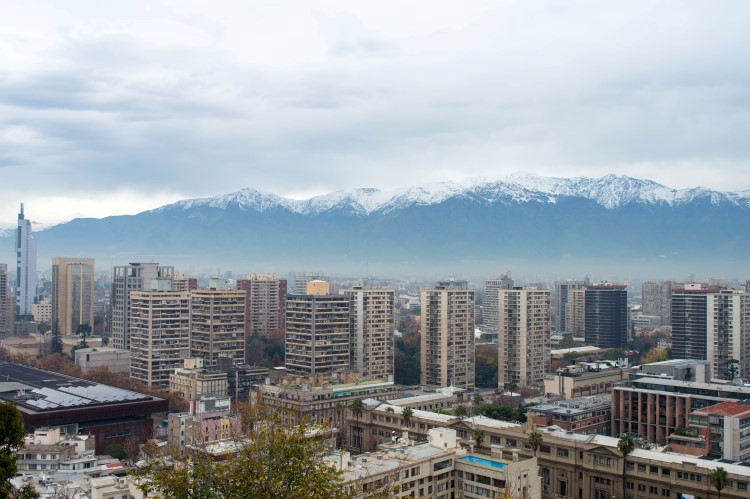
For dinner, you’ve got various options:
- Head to Barrio Bellavista to experience unique, indigenous cuisine at Peumayen or go for gourmet Chilean dishes paired with some of the best Chilean wines at Bocanariz .
- Barrio Lastarria (a couple of blocks west of Plaza Baquedano) is also a good shout for dinner. Learn about Chilean pisco at Chipe Libre or go for traditional Chilean dishes at Liguria , a restaurant popular among local Santiaguinos and even Kate Moss.
- For meat lovers keen to learn about the Chilean art of the asado (barbecue), make sure you head east along Line 1 of the metro for a steak (cooked a punto (medium rare) at Eladio .
Where to stay in Santiago: Stay overnight in Santiago’s first ‘ecoHotel’, Carménère Eco Hotel (Santander 292, double room $155,000 CLP ($196 USD)), which is equally appealing to environmentally conscious travelers and those seeking an authentic Chilean wine experience from their own hotel. It’s in the heart of the hip Barrio Italia, surrounded by a wealth of bars and restaurants and excellent transport links.
Alternatively, read my complete guide to Santiago’s best hotels and hostels for every budget, ordered by neighborhood.
Days Two to Five: San Pedro de Atacama
Head back to Comodoro Arturo Merino Benítez International Airport (SCL) , from where domestic flights leave from a separate terminal. Take a two-hour flight to Calama .
Transfer services at the airport are timed to leave after flights arrive, so hop on one (one hour 30 minutes) to San Pedro de Atacama , one of Chile’s top tourist attractions.
While I explored the region by hire car a few years ago, this isn’t something to do lightly. Elevations are really high and altitude sickness is no joke (trust me, I’ve had it twice), while driving conditions on roads, many of which are unpaved and practically just sand, can be lethal if taken too fast. If you’re in any way unsure, opt instead for a tour.
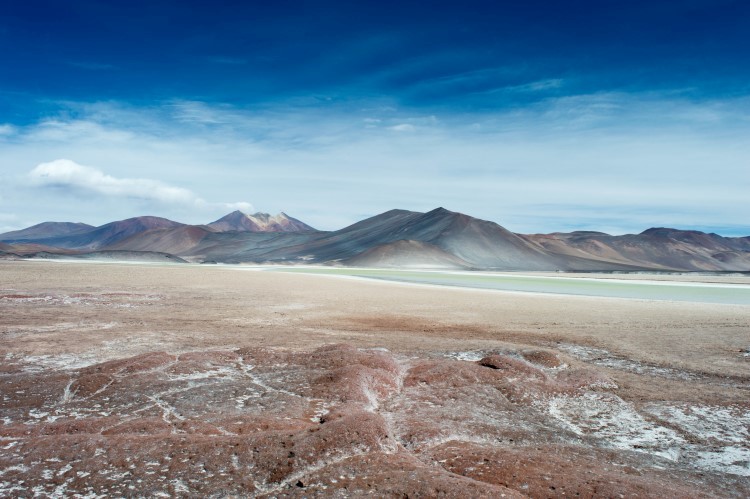
Spend the next two days exploring the region’s top sites, including Piedras Rojas, the Lagunas Altiplanicas and Geisers del Tatio, and spend an evening stargazing and learning what ancient Andean cultures believed lay in the night sky.
I highly recommend taking a tour of the Geisers del Tatio with Trekana , whose guides are borderline obsessed with the wildlife that you can see en route, including two species of flamingoes, a whole host of bird species, beautiful vicunas (the wild cousin of the alpaca), and if you’re lucky, vizcachas (a type of chinchilla with extremely big ears and a penchant for sunbathing).
For more detailed information and inspiration for San Pedro de Atacama read this post on adventurous places to visit in and around San Pedro de Atacama .
Where to stay in San Pedro de Atacama: If you’ve got a bigger budget or are traveling in a couple, stay at Ckuri Atacama (double $63,000 CLP/$80 USD; minimum two-night stay); it’s definitely the nicest accommodation you’ll find in San Pedro. Their three double rooms include private bathrooms, large double beds, a small breakfast area with fridge, cutlery, and plates (breakfast isn’t included – so go and check out Pananderia Franchuteria (Calle Gustavo Le Paige) in town for Chile’s best croissants and other delicious French pastries!).
Where to stay on a budget in San Pedro de Atacama: For smaller budgets, Hostal Lackuntur (dorm $30 USD, $90 USD double) is ideal. It’s got a decent kitchen, loads of hammocks, and a very welcome swimming pool. Its location a few blocks north of the town also ensures it’s nice and quiet during the evenings.
Days Six and Seven: Valparaíso
Return to Calama and take a flight to Santiago. Buses leave from the Terminal Alameda (Av. Alameda 3750) and the Terminal San Borja (San Borja 235) in the city center for Valparaíso (two hours, $3,000 CLP/$4 USD), a historic harbor city set across 42 hills and home to a wealth of street art.
This includes La Sebastiana, the beautiful ship-inspired house of Nobel Prize-winning Chilean poet, Pablo Neruda (well, one of his three), elderly acensores (which are also UNESCO heritage monuments), and a colourful skyline of brightly-painted houses, cobbled streets, and vivid graffiti.
Read all about our favorite things to do in Valparaíso for more information about the city.
If visiting over the summer (be warned: it gets rammed full of Chilean holidaymakers), be sure to hop on a local micro ( bus) and head around the coast towards Viña del Mar where the best beaches are.
The easiest to access is Playa Caleta Abarca as it’s right on the main road that passes through the city, while nearby Reñaca also has a pretty beach.
Viña del Mar is also home to the brilliant Museo de Arqueología e Historia Natural Francisco Fonk , which houses a collection of artifacts from Rapa Nui (Easter Island) – including a 2.9-meter tall moai statue – and is well worth a visit.
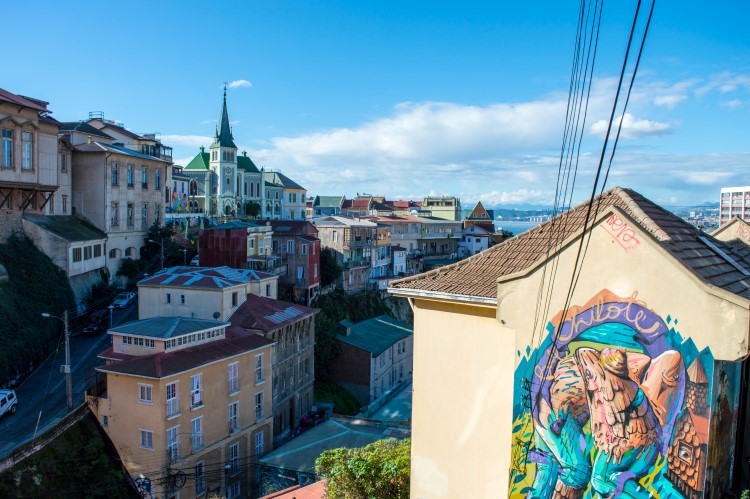
Valparaíso has a reputation for being unsafe, with Cerro Alegre and Cerro Concepción the safest areas to explore during the day, and practically the only areas I would recommend staying at night.
Avoid the bus station where possible (if arriving here, call an Uber to pick you up or arrange a taxi with your hotel) and the area around the harbor. Always stick to areas with plenty of street lights and don’t carry valuables with you.
If driving, look out for your tyres being punctured; it’s a clever trick by thieves, who come and offer to assist you change the type but manage to relieve you of your belongings while they do.
Where to stay in Valparaíso: Winebox (Baquedano 763, $99,000 CLP/$125 USD double) is a truly unique hotel, built entirely from 25 recycled shipping containers. What’s more, they have an urban winery in the basement and a wine bar cum restaurant on the roof (which is open to the public). It’s actually on Cerro Mariposa, so you’ll need to take local colectivos (shared taxis) or taxis to get into the centre at night.
Where to stay on a budget in Valparaíso: For smaller budgets, the pint-sized Puerta Escondida (Templeman 549, $79,000 CLP/$100 USD double room) is a welcoming B&B in the heart of Cerro Concepción. It gets booked up fast, so be sure to reserve in advance.
Days Eight and Nine: Santiago and Colchagua
Return by bus to Santiago and you’ve got two options for exploring another of Chile’s top attractions: vineyards (which, in our opinion, make Chile the best country in South America for wine ).
- For bigger budgets: rent a car and drive to winery Casa Silva, just north of San Fernando.
- For smaller budgets: take the bus from the Terminal Santiago ( Av. Alameda 3850) operated by Nilahue to Santa Cruz (3 hours, $7,000 CLP),
1. For bigger budgets
One of the most awarded wineries in the country and on the northern tip of the Colchagua Valley, Casa Silva not only has a wonderful setting (think rolling hills covered with neat rows of vines and a colonial-style bodega overlooking their polo field) but also an excellent restaurant.
Where to stay: I stayed in their gorgeous accommodation, Hotel Casa Silva (double $181,000 CLP/$210 USD) and spent a day eating in their two fine restaurants, wine tasting in their wine shop, and wandering their vineyards.
You can stay one day at Casa Silva, and then on the next, drive to Santa Cruz, the main town for the Colchagua wine valley, and spend an afternoon exploring some of Chile’s top vineyards (see below).
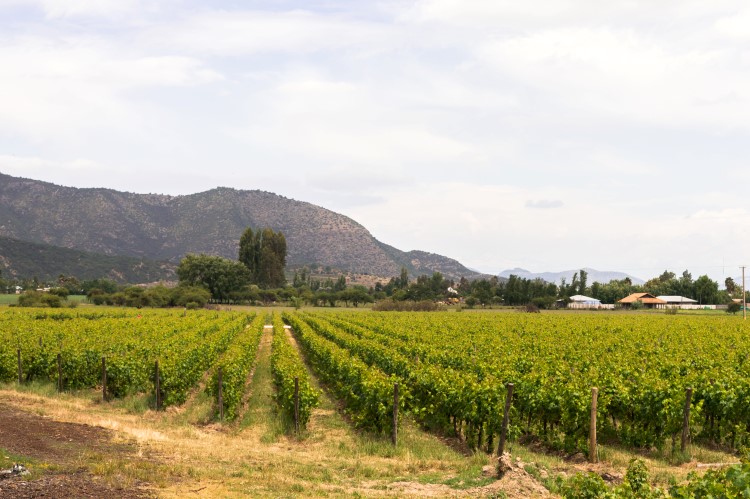
2. For smaller budgets
Take a bus to Santa Cruz where you can rent mountain bikes, complete with panniers, from Casa Suiza ($40,000 CLP/$51 USD double, $19,000 CLP/$24 USD dorm) to explore the local vineyards of the surrounding Colchagua Valley at your leisure.
For all budgets
All of the wineries in the Colchagua Valley offer tastings, tours and many even have fine-dining restaurants (in beautiful settings, surrounded by vines), so I strongly suggest you aim to have lunch at one of the restaurants.
The valley is also known for its carménère wine , a grape similar, and for a long time, confused with Merlot, so make sure you sample plenty while you’re here.
My favorite is Montes , which lies ten kilometers north of Santa Cruz. It’s a renowned winery (they age their wine to the sound of Gregorian chant in an amphitheater-shaped cellar) with tours (from $10,000 CLP/$14 USD), tasting (from $2,000 CLP/$3 USD per glass) and the truly sensational Fuegos de Apalta restaurant.
I had the best steak of my life in their dining room, which surrounds a circular iron grill where you can watch the chefs at work. It doesn’t come cheap (expect to pay $20,000-$24,000 CLP/$28 USD-$34 USD per main) but their lomo liso (sirloin) and entraña (skirt steak), washed down with a Cabernet Sauvignon is an experience you’ll never forget.
Other wineries to visit from Santa Cruz include:
- Boutique winery Laura Hartwig , which you can easily walk to for a tasting as it’s on the outskirts of Santa Cruz. They produce very small quantities of wine each year and while it can sometimes be hit-and-miss, they often strike gold. You can sample glasses for just $1,000 CLP/$1.5 USD).
- Eight kilometers east of Santa Cruz, Viu Manent is a winery set within a beautiful old hacienda. Their star grapes are Carménère and Malbec and they have tours of the vineyard via horse-drawn carriages (from $15,000 CLP/$21 USD) as well as tastings (from $12,000 CLP/$17 USD) and great food in their restaurant Rayuela Wine & Grill ($9,000-$14,000 CLP/$13-$20 USD mains).
Where to stay in Santa Cruz: Hotel TerraViña (Camino a los Boldos, $166,000 CLP/$210 USD double) has a charming location overlooking rows of vines from cast-iron balconies and a swimming pool. The added benefit is they’re a short walk through the vines to the Laura Hartwig winery, which can be reached by a short vine-lined path.
Where to stay on a budget in Santa Cruz: Small budgets will enjoy staying overnight in Casa Suiza (Los Libertadores 199, $40,000 CLP/$51 USD double, $19,000 CLP/$24 USD dorm). There are plenty of places for unwinding, including a grassy garden, plus kitchen access, and owners who run cycling tours to tiny boutique wineries.
Day Ten: Santiago
Spend a final day in Santiago. Dedicate at least three hours to exploring the Museo de Memoria y los Derechos Humanos (Museum of Memory and Human Rights), an excellent museum dealing with a grizzly topic: the Pinochet dictatorship that lasted from 1973 to 1990.
If you want to learn first-hand about the Chilean love of the sanguche , head to La Fuente Alemana for a traditional churrasco (beef or pork sandwich) – just ask them to go easy on the mayo. Alternatively, sample some other key Chilean dishes in Santiago with the help of this guide to Chilean food .
Head over to nearby Barrio Lastarria ( barrio means neighborhood) and take the short hike up to Cerro Santa Lucia for views across the city and the omnipresent Andes Mountains beyond.
For even more impressive cityscape views, take the funicular up to Cerro San Cristóbal in Parque Metropolitano (don’t walk; there have been reports of muggings of people hiking up the hill and those straying from the trails).
Finally, listen to my interview on the We Travel There podcast to learn more about my recommendations for visiting Chile’s capital city.
Return to the airport and fly home.
Chile itinerary for two weeks of travel : Santiago and the Lakes District
In this itinerary, I talk you through how you can organize it yourself. However, if you want someone to take care of the logistics and plan a once-in-a-lifetime trip, then reach out to my recommended local tour operator, EcoChile Travel . They’re experts in planning trips in Chile and can custom design the itinerary to suit you and your budget. Their Chilean Lakes District itinerary follows a similar route to this itinerary. Mention Worldly Adventurer to get a 5% discount off this trip.
Arrive at Comodoro Arturo Merino Benítez International Airport (SCL) in Santiago and take either a transfer ($7,000 with Delfos or TransVIP; no need to book in advance, Uber, or the Turbus airport bus (get off either at Terminal Pajaritos (better if it’s rush hour) or Terminal Alameda and take the metro Line 1 to the center of town).
For more inspiration, read this article about tourist attractions you can’t miss in Santiago .
Where to stay: Splurge on your hotel and stay overnight at the foot of Cerro Santo Lucia in Hotel Magnolia (Huérfanos 539, $276,000 CLP ($350 USD) double) in the heart of the Barrio Lastarria and surrounded by a wealth of bars and restaurants, plus excellent transport links.
Alternatively, read my complete guide to Santiago’s best hotels and hostels for every budget (including much more affordable than Hotel Magnolina), ordered by neighborhood or learn about other things to do in Santiago .
Days Two to Five: Chiloé
The fastest way to reach Chiloé is with a direct flight between the domestic terminal of Comodoro Arturo Merino Benítez International Airport (SCL) and Aeródromo Mocopulli (MHC; just outside of Castro).
This cuts your travel time down considerably, as flying to Puerto Montt means a four-hour journey (including a 30-minute ferry across the Canal de Chaco).
It’s not the most scenic of journeys, either, and you’ll be doing it on the way to Puerto Varas, so save yourself time by flying directly to Chiloé. There are far fewer daily flights to this airport, however, so book early.
From the airport, it’s a short taxi ride to Castro, where you can organize to pick up a hire car .
Chiloé is a small island, however rural public transport – like in most of Chile – isn’t the most frequent nor the most reliable. As a result, I would highly recommend hiring a car for your time here, giving you the freedom of seeing multiple parts of the island in one day – and also handy if you want to stay at one of the more remote lodges (which I highly recommend!).
Driving in Chiloé is straightforward and easy; roads are generally one two lanes and other drivers are relaxed (unlike those in Santiago). There are also no toll booths that require cash to contend with, although I do recomend having Chilean pesos on hand for dining at more rural restaurants and for entering the national parks and reserves.
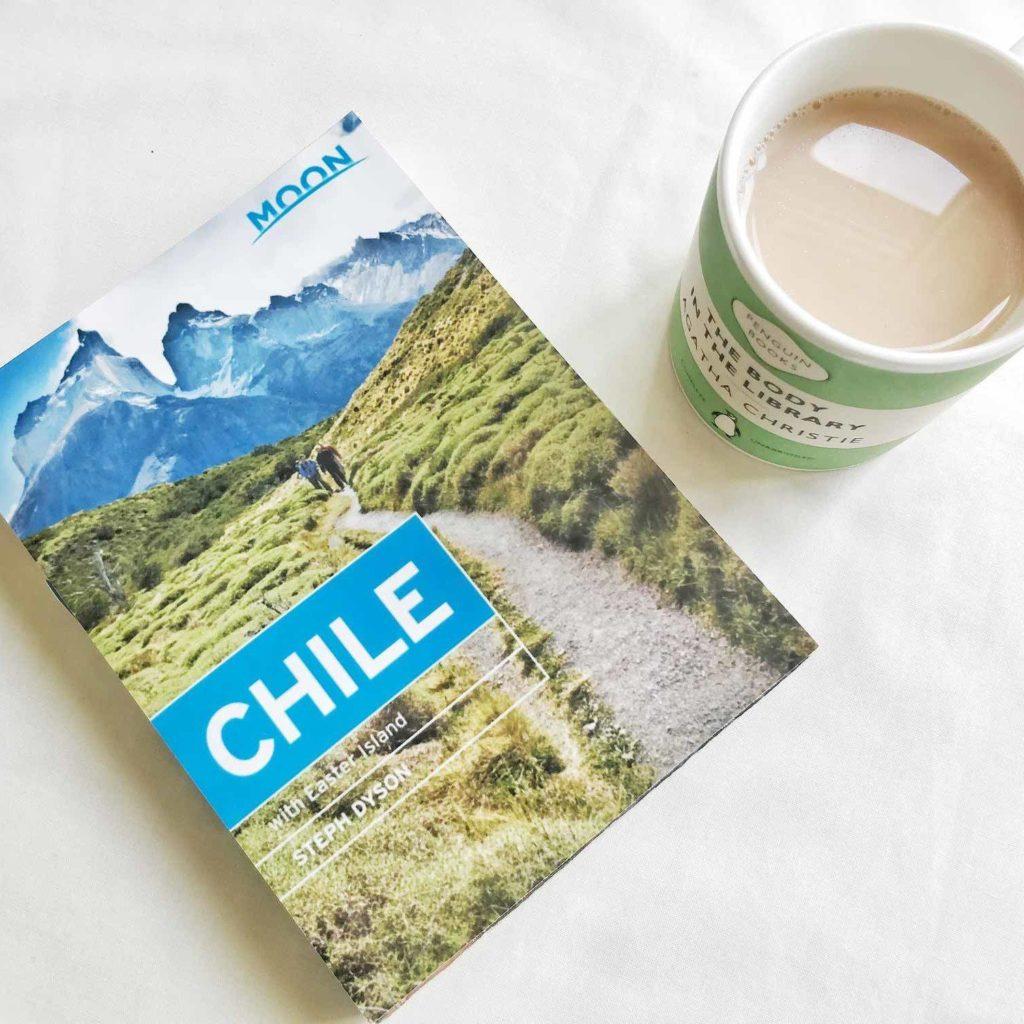
Need more inspiration?
You’ll find even more detailed itineraries, off-the-beaten-path gems, hiking routes and accommodation, restaurant and tour recommendations to suit your travel style in my brand-new guidebook, Moon Chile.
Alternatively: Fly from the domestic terminal in Comodoro Arturo Merino Benítez International Airport (SCL) to Aeropuerto El Tepual (PMC) (one hour 40 mins), the airport just outside of Puerto Montt . Rent a car from the agencies at Aeropuerto El Tepual and drive to Chiloé Island. Puerto Montt airport has some of the cheapest car rents in Chile (from $30 USD per day) and you can book using Rental Cars , who provide insurance documents and all contracts in English.
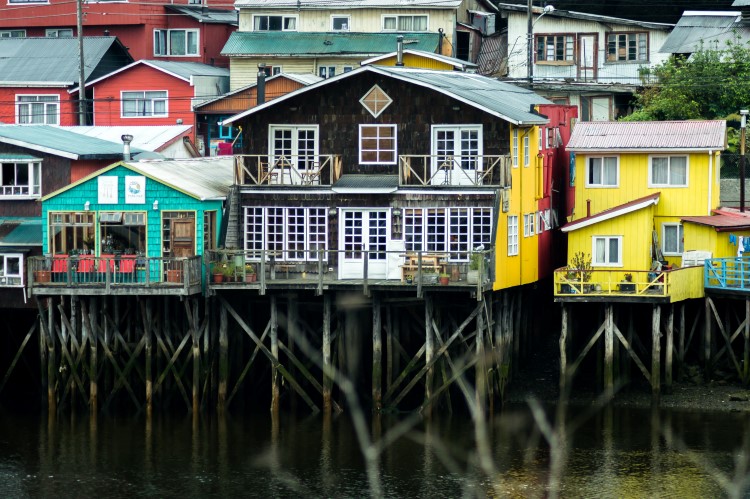
Castro , the capital of Chiloé is famed for its vibrant palafitos: colorful, traditional fishermen’s houses on stilts that line the harbor overlook the bay at two places, just off Calle Ernesto Riquelme and another accessed by Calle Puerto Montt.
However, the best place to appreciate them in all their colorful glory is across the river from Calle Ernesto Riquelme at Mirador Gamboa .
Another unmissable stop in Castro is at the Feria Artesanal (Lillo s/n, just before the harbor), a craft market where you can find both local woolen crafts to buy and a cheap lunch of empanadas (stuffed with seafood or cheese and prawns) or huge plates of fish.
Nip out the back to meet the resident sea lion population, who’ll also be fighting over their lunch – scraps of fish thrown into the sea by the fishermen.
Where to stay in Castro: If you fancy finding out what it’s like inside a palafito, stay at the brown-shingled Palafito 1326 (Ernesto Riquelme 1326, $79,000 CLP/$100 USD double). Rooms are spacious, with crisp white linens and those overlooking the water have a balcony from which you can watch the ocean.
Alternatively, I can’t sing the praises of Refugio Pullao ($185 USD double) enough. Run by its Santiaguino owners, this tiny hotel is located on the Peninsula Rilan, across the bay from Castro, and has astounding views east out towards the ocean. Tierra Chiloé , a five-star hotel a little further around the shore, charges four times the price for the same view (although, admittedly, this includes tours and all-inclusive (and exceptional) dining). The latter is beautiful, but definitely only for those with a very large budget.
Where to stay on a budget in Castro: La Minga Hostel (dorm $16,000 CLP/$20 USD, $25,000 CLP/$40 USD double) is a proper backpacking hostel (run by the wonderful Camila, a Brazilian and former backpacker herself) that is small but perfectly-formed. Rooms are fairly tiny and there aren’t that many bathrooms to go around, but it’s got a really sociable atmosphere without being a party hostel. Camilia also has great local knowledge and can help with suggestions for local things to do.
Spend the rest of your time on Chiloé exploring the churches; my favorite was definitely Tenuan , which you could reach by bus from the terminal in Castro (one hour 10 mins, $1,600 CLP/$2 USD).
If there’s a group of you, take a wander along the shore and you can try negotiating a small boat to take you to Isla Mechuque, which also has its own church and a small museum and is supposed to be stunning.
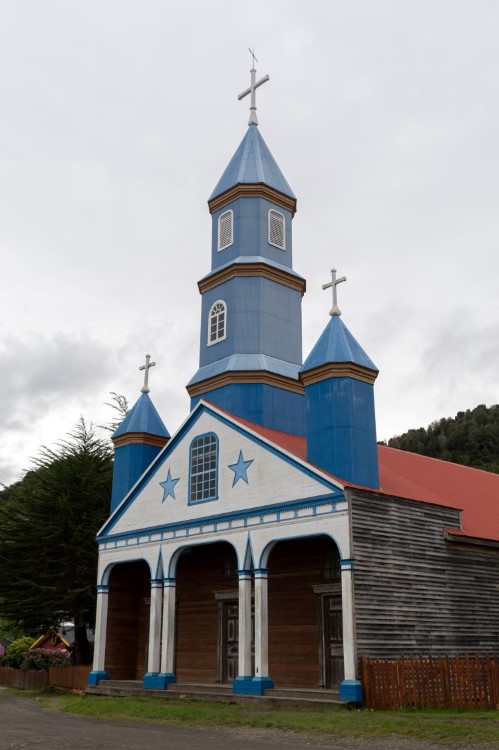
Cucao, a one-hour bus journey (again from the local bus terminal in Castro), is one of my favorite places on the island and has the mind-blowingly beautiful Palafito Cucao ($55,000 CLP/$130 USD double).
Not only is this place hugely comfortable (it has lovely double rooms), it’s the living room area and outdoor terrace with views across Lago Cucao that make this place one of the most sensational places I’ve ever stayed in Chile. I even saw a giant otter swimming past one day.
Palafito Cucao is close to the Muelle de las Almas , a destination that has shot to fame in Chile in recent years.
While it is beautiful – it’s an art installation shaped like a pier that appears to jut out over the cliff edge and into the ocean on a desolate hillside – it’s now so overrun that much of the magic is lost.
If you do want to go, make sure you get here as early as possible in the morning, as 45-minute queues for photos with the muelle are unfortunately common.
Another option, instead, is to visit the Muelle de la Luz near Chepu, another of the artist’s sculptures. Again, this can get very busy with tour groups and, for the boats to run to the muelle, it requires at least 10 people.
There’s not a huge amount there, just the muelle and beautiful views across the beach below – which admittedly ranks among the most beautiful on the island.
Insider tip: Muelles have sprung up all over Chiloé, after the original Muelle de las Almas was constructed by Santiago sculptor Marcelo Orellana Rivera. Note that there are only three original muelles : Muelle de las Almas, Muella de la Luz, and Muelle del Tiempo. All the rest are imitations, designed by local people to capitalize on the craze for selfies on them.
Days Five and Six: Puerto Varas
Drop the car back in Castro and then take the bus to the terminal in Puerto Montt and then take a small micro (a blue local bus) from the terminal to Puerto Varas (20 mins, $1,000 CLP/$1 USD).
Hiring a car for this part of the itinerary: Alternatively, I recommend hiring a car from Puerto Montt; some of the most interesting things to do in the Lakes Region are served by fairly infrequent public transport, so it can really help to have your own vehicle. Book a one-way rental from Puerto Montt to Temuco; this is surprisingly affordable (Puerto Montt is the cheapest place in the country to rent a car) and the one-way free doesn’t add much to the overall rental price.
Known locally as the City of Roses for its abundant blooms in summer, this lovely lakeside town sits beneath the shadow of Volcán Osorno, a volcano that, thankfully, hasn’t erupted since 1869.
There’s not a whole lot to do in the town; the main attractions lie in the activities in the surrounding national parks, lakes and rivers.
If you’ve just got an afternoon here, the somewhat eccentric collection of artwork and accumulated bric-a-brac in Museo de Pablo Fierro , run by enthusiastic owner and artist Pablo Fierro is definitely worth an hour of your time,
I’d also suggest heading to La Mesa Tropera for a pizza and locally brewed beer plus the best views of the lake and the volcano, or, if you’re a wine lover, La Vinoteca has a brilliant selection of wine by the glass, a range of Chilean dishes, and an excellent attached wine shop.
For hikers, you’ve got plenty of options nearby. Alerce Andino National Park has a range of different hikes, including one to a 3,000-year-old alerce tree, and can be reached without 4WD (although bear in mind that both routes include a gravel section of the road (and the southern entrance is in particularly poor condition).
The Llanquihue National Reserve is another beautiful protected area, with a mix of Valdivian temperate rainforest and lava floes from Volcan Calbuco, which erupted in 2015 and closed the reserve until just last year.
Again, this park is accessible without 4WD, but with roads in a similarly poor condition, so drive slowly and carefully.
Another option is to head to Petrohué on the banks of Lago Todos los Santos where there are a handful of treks.
The most interesting is Paso Desolación , which goes around the edge of the volcano, taking you above the tree line with beautiful views of the Osorno volcano and Lago Llanquihue below, over an around eight-hour return hike (23km/14.2mi).
A shorter, 11km (6.8mi) route takes a path along the edge of the lake before heading back in a loop and offering views of the volcano and the valley, with a walking time of around three hours.
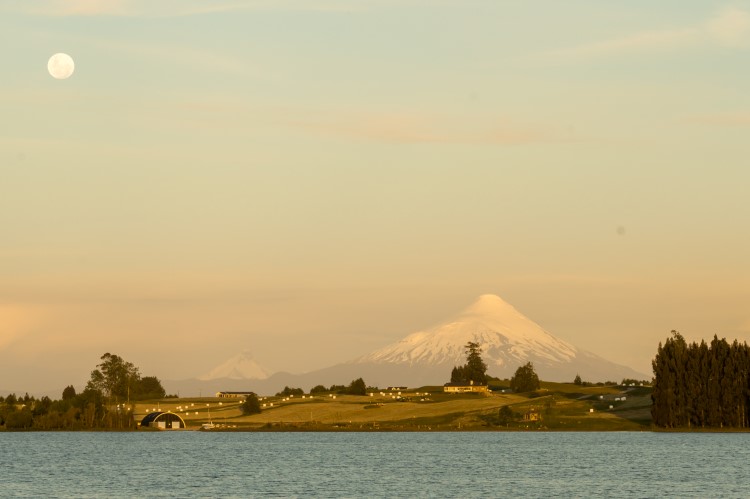
Don’t miss the Museo Pioneros Petrohué ($2,000 CLP/$3 USD), which is run by Petrohué Lodge and details the various “pioneers” who ventured to this once remote part of the Chilean lakes district across history, including explorers and German settlers.
If it’s not open (which it probably won’t be), nip into the Expeditions Office next door to ask to be allowed in.
Another popular attraction here is the Saltos de Petrohué ($4,000 CLP/$6 USD) where the raging, crystalline waters of the Río Petrohué churn over the rocks in a series of waterfalls, with a stunning backdrop of the Osorno volcano.
There are a handful of worthwhile trails to different viewpoints here but be warned: they are absolutely crammed throughout the season (even in October they were busy), so get here early doors. The entrance opens at 9am.
You can also get here by cycling. Lago Llanquihue has a cycling trail that extends from Puerto Varas north. You can hire bikes in Puerto Varas itself or, if you don’t want to have to drive back, Birds of Chile offers an e-biking tour, which can be combined with a half-day hike along the El Solitario trail through Valdivian temperate rainforest and volcanic ash.
Their guides have plenty of fascinating information about the flora and fauna of the region, which contains some of the final remaining tracts of Valdivian temperate rainforest on the planet.
Watersports are another part of Puerto Varas’ adventure offerings. You can also raft down the class II and IV rapids of the Río Petrohué with AlSur Expediciones , a local kayaking and rafting specialist operator.
Alternatively, book a sea kayaking tour out into the Chilean fjords for dramatic, volcano-studded landscapes (AlSur also specialize in epic, multi-day sea kayaking adventures into Pumalin National Park at the northern tip of the Carretera Austral – a must-do tour if you’re a keen kayaker!).
For a more relaxed afternoon, hop on a bus to Fruitillar (from the same place in Puerto Varas) to try locally baked kuchen , a German dessert brought, and cooked, by the German descendants who started this town.
There’s also a really good museum, the Museo Colonial Alemán , with its collection of artifacts brought over from Germany with the settlers and the history of founding the different towns around the lake.
There’s also Frutillar’s elegant, lakeside theatre, Teatro del Lago (they have performances from all across the globe and the building is renowned for its acoustics).
Where to stay in Puerto Varas: It’s definitely pricey, but the location right on the shores of Lago Llanquihue of AWA ($350 USD double) makes this a truly remarkable place to stay. Bedrooms are huge, while the restaurant serves up delicate dishes showcasing local ingredients – all with a serving of volcano views. I’ve stayed here twice now and it’s definitely my favorite hotel. Bear in mind, you’ll need a car – or to organize tours with a local operator – due to it being a 20-minute drive from Puerto Varas. FYI don’t do your laundry here. I almost wept when they gave me the $50 USD bill.
Where to stay on a budget in Puerto Varas: The wonderful Compass del Sur (camping $17,000 CLP/$21 USD, $24,000 CLP/$30 USD dorm, $54,000 CLP/$68 USD double), with its cozy sitting room with wood fire, breakfast room, and huge new kitchen, it’s my personal favorite when I’m in town. Their owners are very knowledgeable about activities to do in the local area and bedrooms are large, most of which now have their own private bathrooms after extensive renovations in 2017.
Days Seven to Ten: Pucón
Drive four hours or take a bus to Pucón (five hours, $17,500 CLP/$22 USD) from the bus terminal for Buses Jac in Puerto Varas.
Pucón is one of Chile’s best-known adventure destinations thanks to a range of highlights, including an active volcano that you can hike up, accessible national parks, and a whole host of other activities to get your pulse racing.
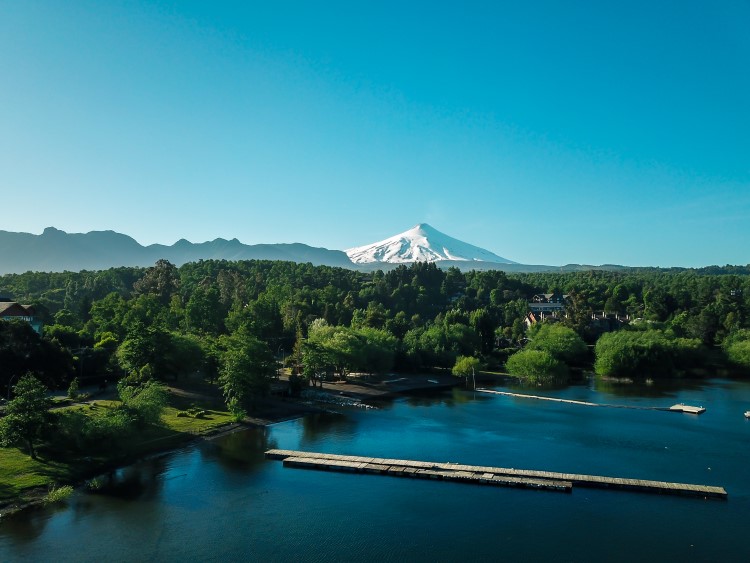
One of the best day trips you can take from Pucón is to nearby Parque Nacional Huerquehue , a one-hour bus ride or drive from the town with Buses Caburgua (they have their bus station at Uruguay 540).
There are five trails in the park, the most exciting being the Sendero Los Lagos , which goes past a pair of impressive waterfalls and ends with glorious views across the lakes at the top of the mountain.
The most challenging (and with the best vistas ) is Sendero San Sebastian , where you’ll see not one, not two but NINE volcanoes and 14 lakes from the top. Uh, yes please!
You can also stay within the park, either camping (there are various places, including Camping Olga ($18,000 CLP/$23 USD for two people, minimum two-night stay) or at the basic Cabañas Tinquilco ($50,000 CLP/$63 USD per night; minimum stay four nights between December and March.
It’s also impossible to visit Pucón without hiking up Volcán Villarrica , the snow-topped volcano that dominates the landscapes surrounding the town and is easily one of the top Chile attractions for visitors.
It’s a tough climb (you start around 6-7am from Pucón and are at the crater by lunchtime), but not one that requires technical expertise; you will need to go with a guide unless you have all of your own equipment (ice axes, crampons etc.). Bear in mind, this trail is packed with other tourists, so can feel like you’re queuing up the side of the mountain, rather than hiking it.
Patagonia Experience is the most recommended of all the agencies in the town. Expect to pay upwards of $80,000/$132 USD.
And don’t miss Termas Geometricas , some really beautiful hot springs located on the southern flanks of the volcano. Unless you’ve got a car, you’ll need to take a tour ($35,000/$58 USD) – but it’s worth the cost as you get to spend an afternoon relaxing in these stunning pools.
Where to stay in Pucón: Another personal favorite, if you’re willing to splash some cash, is the Maison Nomade B&B (double $90,000/$120 USD – but email them as they can offer cheaper prices), which is a few kilometers away from Pucón but has glorious views of the volcano from their huge garden, a swimming pool, beautiful modern rooms decorated with the handicrafts that Carolina, one of the owners, makes, plus a kitchen for guests. Alain, the other owner, also runs an orientation meeting to help you decide what you plan to do during your stay (and he knows the region like the back of his hand).
Where to stay on a budget in Pucón: Having visited this place as part of my research for Moon Chile , I can back up the general consensus that Chili Kiwi (dorm $20,000 CLP/$25 USD, $49,000 CLP/$67 USD hobbit hole) is one of the best hostels in Latin America. I stayed in both a hobbit hole and a treehouse (the hobbit hole was a bit roomier and had its own tiny private terrace, which was a nice touch), but they’ve genuinely thought of everything here: from their private bar to their three kitchens, huge lockers for people who’ve checked out but need somewhere to store their bags and just the enthusiasm of the owners and the staff who can answer practically any question you have about travel in the region (and beyond). It’s not a party hostel, but it does attract a youngish crowd.
Days Eleven to Thirteen: Parque Nacional Conguillio
From Pucón, start early for the three-hour drive to Parque Nacional Conguillio .
Alternatively, get an early bus to Temuco (one hour forty minutes) and catch the 10.30am Nar Bus to Parque Nacional Conguillio (leaves from the Terminal Rural de Temuco only in January and February, two and a half hours). It’ll drop you off right at the campsite and main ranger office for the park.
From here, there are a number of different day hikes that pass through the park’s incredible ancient scenery of thousand-year-old Araucania trees, black lava flows from looming Volcán Llaima, and gloriously blue lakes.
It’s one of my top three national parks in Chile (Patagonia National Park and Torres del Paine National Park take the other two spots) and one I highly, highly recommend.
Travel tip: The park is actually quieter and more beautiful to visit in November and December, when the weather’s warming up, or in April, to see the forests turn shades of autumn yellows and golds. The easiest way to get here in these months (or a faster means than taking the bus in high season) is hiring a car from the rental agencies in the arrivals terminal of Aeropuerto Araucanía (ZCO) in Temuco. You can get to the airport with a taxi (around $15,000 CLP/$21 USD from the bus terminal in Temuco).
You can get hold of maps from the ranger station here. The bus returns back to Temuco at 1pm (soon after it arrives).
Out of season, your only options are to take a taxi from nearby Curacuatin or rent a car in Temuco .
There’s a small shop at the campsite, but otherwise, you’ll need to bring food with you (unless staying at La Baita , who can prepare meals for you).
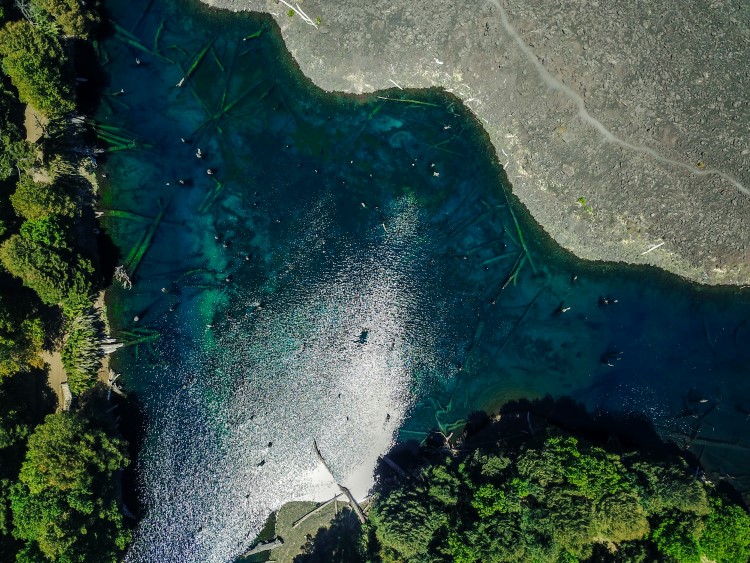
Where to stay in Parque Nacional Conguillio: There are a number of campsites run by Sendas Conguillio . The best of these, if you’re traveling in a pair or alone, is Camping El Estero ($6,500 CLP/$11 USD pp), which you cannot book (but there is normally space). If you’ve got a vehicle, La Baita (double $90,000 CLP/$150 USD) is spectacular, with stylish, wooden bedrooms, cozy communal living room with wood fire, and hot tubs. Outside of the summer, the prices are cheaper (but they’re closed in June).
Drive back to Temuco to return the car or hop the bus back to the city. Fly from Temuco airport to Santiago or take the bus overnight (eight hours).
Chile itinerary for two weeks of travel : The highlights
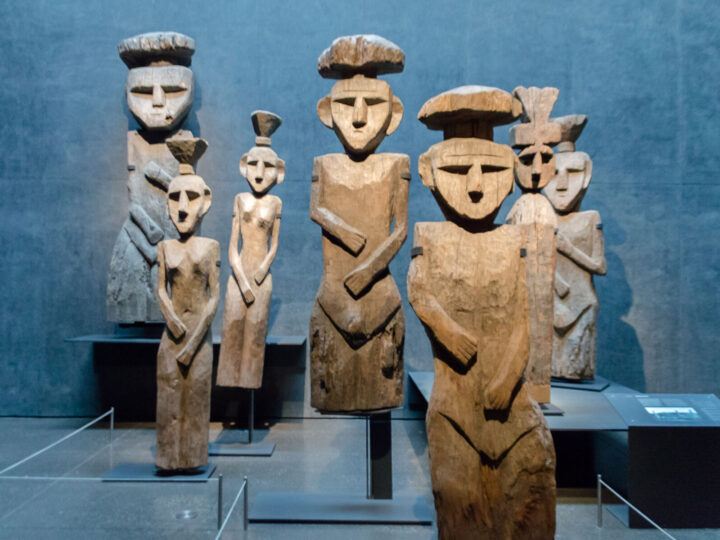
Days Two and Three: Valparaíso and the Casablanca Valley
Either hire a car or hop on a bus from the Terminal Alameda (Av. Alameda 3750) and the Terminal San Borja (San Borja 235) in the city center to Valparaíso (two hours, $3,000 CLP/$4 USD), a historic harbor city set across 42 hills and home to a wealth of street art.
This includes La Sebastiana , the beautiful ship-inspired house of Nobel Prize-winning Chilean poet, Pablo Neruda (well, one of his three), elderly acensores (which are also UNESCO heritage monuments), and a colorful skyline of brightly-painted houses, cobbled streets, and vivid graffiti.
If visiting over the summer (be warned: it gets rammed full of Chilean holidaymakers), be sure to hop on a local micro ( bus) and head around the coast towards Viña del Mar where the best beaches are.
The easiest to access is Playa Caleta Abarca as it’s right on the main road that passes through the city, while nearby Reñaca also has a pretty beach. Alternatively, you can drive further north to the pretty beaches of surf-town Maitencillo , secluded and beautiful Cachagua , or exclusive Zapallar .
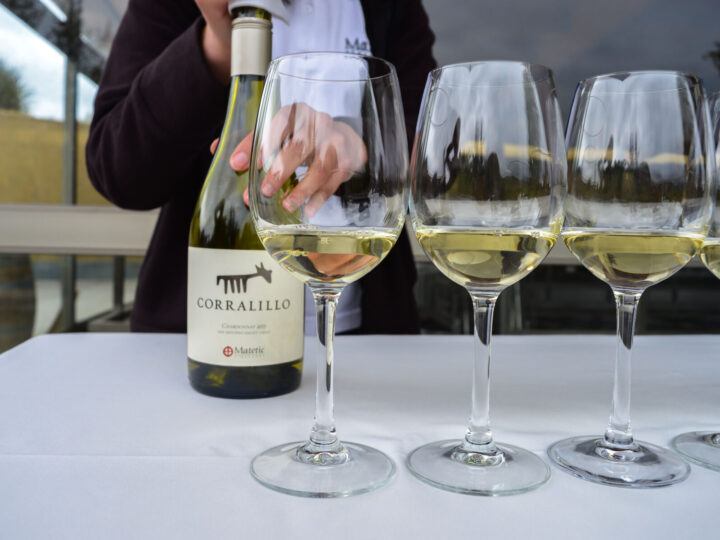
The following day, head out to the Casablanca Valley , Chile’s premier white wine-producing region. A bus to Casablanca and then a taxi can take you around some of the best wineries, including Casas del Bosque (which has a brilliant restaurant), Viña Mar (which is known for its sparkling wines, Bodegas RE (which produces unusual blends), and Emiliana (an organic, sustainable winery).
Alternatively, drive south via Isla Negra (the prettiest of poet Pablo Neruda’s houses) to reach the Valle de San Antonio , where first-rate wineries offer outstanding wines and stunningly-located accommodations.
The best are Matetic and Casa Marin , the latter of which produces delicious sauvignon gris.
Where to stay in Valparaíso/nearby: Winebox (Baquedano 763, $99,000 CLP/$125 USD double) is a truly unique hotel, built entirely from 25 recycled shipping containers. What’s more, they have an urban winery in the basement and a wine bar cum restaurant on the roof (which is open to the public). It’s actually on Cerro Mariposa, so you’ll need to take local colectivos (shared taxis) or taxis to get into the centre at night. Alternatively, stay in La Casona ($774 USD double) Matetic winery’s stylish 10-bed hotel, set within the vineyard and with a welcome swimming pool or at the more affordable Bungalow Miramar ($167 USD one-bedroom bungalow) that has sweeping views across the vineyards of equally brilliant Casa Marin.
Days Four to Seven: Rapa Nui (Easter Island)
Head back to Comodoro Arturo Merino Benítez International Airport (SCL) and take a six-hour flight west across the Pacific Ocean to Rapa Nui (Easter Island).
Having captivated archaeologists and tourists alike for decades, Rapa Nui – while still being part of Chile – lives and breaths the Polynesian culture of its inhabitants: the Rapanui.
After landing on the runway of Matavari International Airport (IPC) , take a transfer with your hotel into Hanga Roa, the island’s only town and the location of most lodgings.
Spend the afternoon snorkeling off Playa Pea on the lookout for Green Pacific, leatherback, and hawksbill turtles, before catching the sunset at Ahu Tahai, where various ceremonial platforms known as ahu play host to the angular stone heads (moai) for which the island is famed.
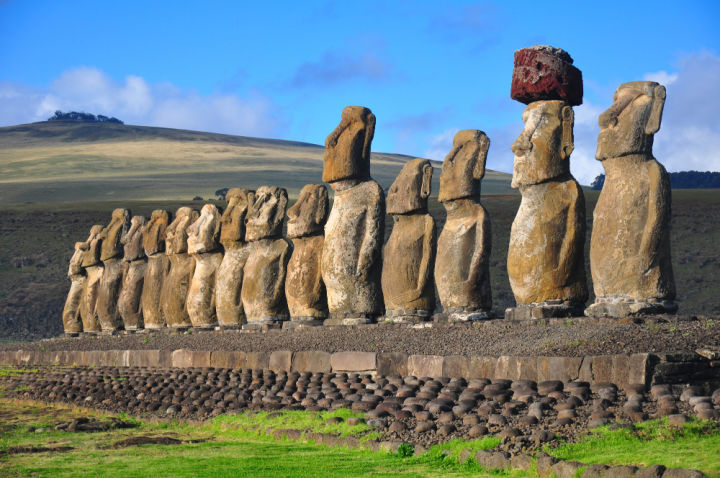
The following day, head out to Parque Nacional Rapa Nui , where the majority of the moai are located. New rules mean you’ll need a guide, who can show you around key locations across the island.
Don’t miss Rano Raraku , the volcanic crater and quarry where the moai were carved, or nearby Ahu Tongariki . With 15 moai statues, it’s the largest of the platforms and ideal for sunrise.
Read our guide to visiting Rapa Nui for more detailed information about getting to the island, as well as recommendations for what to do and where to stay , and the best time to visit Easter Island .
Where to stay in Rapa Nui: The stunning sea views from certain suites and bungalows make Hotel Boutique La Perouse ($210 USD suite; $288 bungalow) an excellent choice for accommodation on Easter Island. Situated right at the heart of Hanga Roa, but with a tranquil setting, this is a great place to relax after a day of touring the island, while a delicious breakfast will ensure you’ve got the fuel you need.
Where to stay on a budget in Rapa Nui: If price is your number one factor when it comes to finding accommodation on Easter Island then look no further than Camping y Hostal Tipanie Moana ($57 USD double room with shared bathroom, $14 USD camping). Offering private rooms (some with shared bathrooms), it’s hard to quibble over the price here, which grants you clean and spacious bedrooms – some with mini-fridges – and a sociable atmosphere among the other guests staying here.
Days Eight to Nine: Punta Arenas
Fly back to Santiago’s Comodoro Arturo Merino Benítez International Airport (SCL) and then hop on a flight to Punta Arenas, a three-hour flight south.
The gateway to Patagonia, Punta Arenas is where the first colonizers landed in southern Chilean Patagonia and is home to some of the best wildlife-watching opportunities.
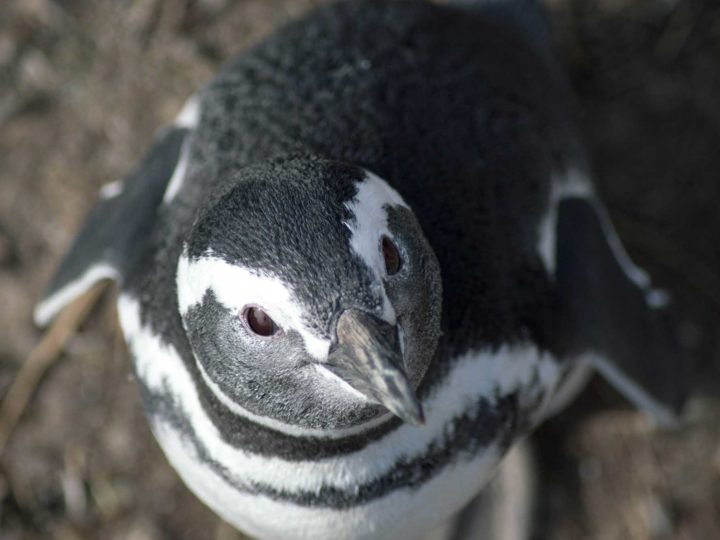
You’ll have time for at least one tour. Head out to Isla Magdalena for a half-day visit to the 120,000-strong Magallenic penguin colony that resides on this island.
Alternatively, take a tour with Solo Expediciones to Parque Marino Francisco Coloane (Francisco Coloane Marine Park) to catch a glimpse of the many species of whales that come here to breed, including humpbacks and sei whales.
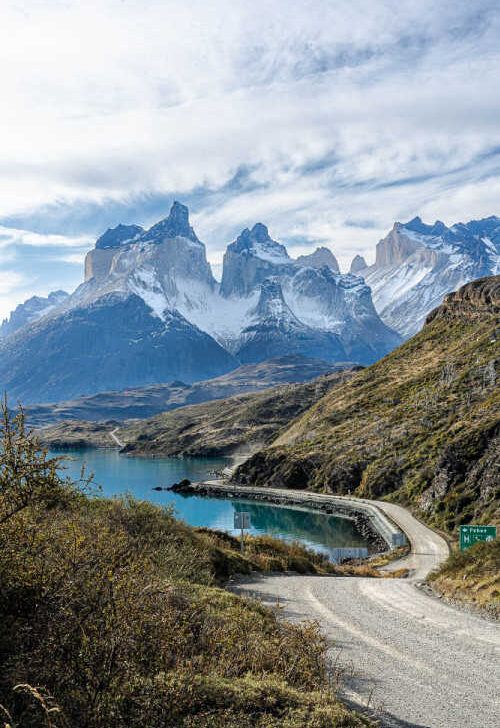
Want a custom-made Chile itinerary, but without the effort of planning it?
Get it planned by an expert (me!) with my travel itinerary planning service ; you’ll give me an overview of your ideal once-in-a-lifetime trip to Chile and/or Patagonia, and I’ll put together a custom itinerary just for you using my expert knowledge of the destination.
Alternatively, if you’re looking for a local operator to plan and book your trip, I recommend our trusted partner EcoChile Travel. They design and book tours throughout the country, such as this 12-day highlights of Southern Patagonia itinerary – and offer Worldly Adventurer readers a 5% discount on their services!
Book here to claim your discount.
At the end of your second day, hop on a public bus to Puerto Natales (three hours).
Where to stay in Punta Arenas: Easily the smartest choice in Punta Arenas is the luxurious La Yegua Loca ($160 USD double), where antique wooden furniture rubs shoulders with superb views of the Strait of Magellan. Don’t miss the restaurant on the ground floor, which specialises in local specialties such as king crab.
Where to stay on a budget in Punta Arenas: Budget digs don’t get much better than the family-run Hostal Aventura Austral ($57 USD double), which has small but comfortable rooms and brilliant hosts.
Days Ten to Fourteen: Torres del Paine National Park
Unless you’re planning on hiking the W or the O Circuit , the best way to explore Torres del Paine National Park is with a rental car .
From Puerto Natales, head north along Ruta 9 and then northwest along the Y-290 to enter Torres del Paine National Park from its southern entrance, where you’ll get the best views of the Los Cuernos mountains that dominate the park.
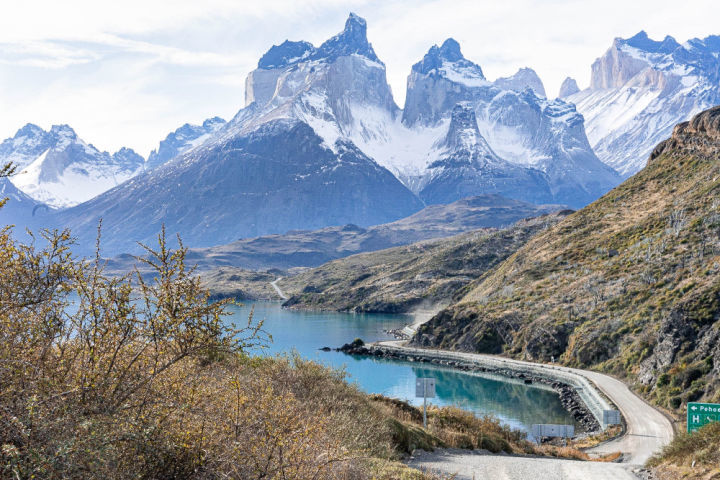
Over the next few days, you’ve got time to hike the park’s ubiquitous route up to Mirador Las Torres where you’ll stand beneath the three sky-spearing shards of granite after which the park is named.
Day hikes and shorter routes to viewpoints abound in the national park, with the steep climb up to Mirador Ferrier for 180-degree views across the park and the short meander along Sendero Mirador Cuernos for dazzling views of Los Cuernos among the best.
Read our guide to day hikes in Torres del Paine National Park for detailed route information.
There’s plenty more to do in Torres del Paine, including tracking pumas , with the park believed to be home to the highest concentration of these big cats in the world.
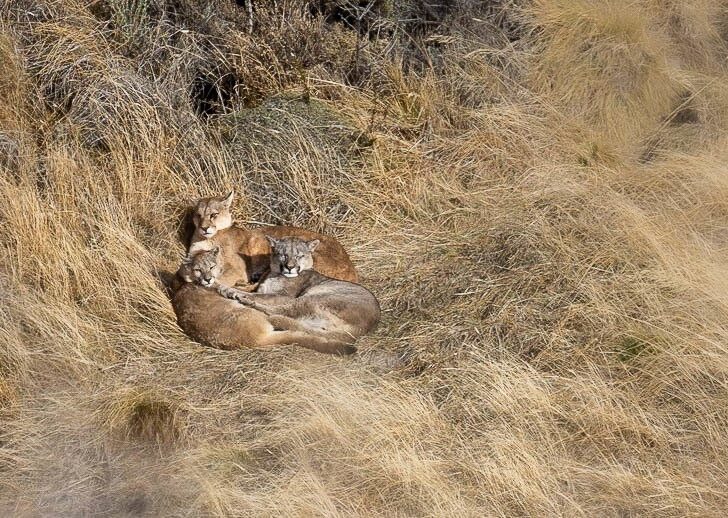
The best way is on a two-day tour with Chile Nativo (use the referral code “Worldly Adventurer” for a 5% discount), which takes you along some of the paths most frequented by the cats and has a close to 100% success rate for seeing them.
Return to Puerto Natales and then fly back to Santiago.
Where to stay in Torres del Paine National Park: With its cluster of 20 deluxe yurts, Patagonia Camp ($2,160 USD double all-inclusive for two nights) sits pretty on the southern shore of Lago Toro as a top luxury accommodation option just 15 kilometres from the park entrance. There’s no TV or internet connection in the rooms, but who needs WIFI when you’ve got a private terrace with panoramic views, and even a jacuzzi in the suites?
Where to stay in Torres del Paine National Park on a budget: Restaurant costs within Torres del Paine have skyrocketed with the park’s popularity. Stock up on food in Puerto Natales and head to Cabañas Lago Tyndall ($110,000 CLP ($160 USD) four-person cabin), which is situated on a bend in the Río Serrano and a short drive from the southern entrance to the park.
Our complete guide to what to do in Torres del Paine National Park is packed with plenty more information about how to visit this incredible place, while our detailed Patagonia itineraries contain recommendations for exploring Southern Patagonia, plus how to combine a trip to Torres del Paine National Park with Argentine Patagonia, including the Perito Moreno glacier and hiking capital, El Chaltén.
How to amend this two-week itinerary
Rather than heading to Rapa Nui, you could spend three days in the Atacama Desert. San Pedro de Atacama is the region’s main hub and jumping-off point for Mars-like scenery and wildlife-packed protected areas, such as the Reserva Nacional Los Flamencos.
We’ve got a full guide to what to do in San Pedro de Atacama , while, if you want to avoid the hassle of organizing your trip, EcoChile Travel can help you plan a four-day trip to the region , including visits to local indigenous communities to learn more about the unique culture of the region. Mention Worldly Adventurer for a 5% discount on the tour.
Itinerary for one or two weeks in Patagonia (Chilean and Argentine)
I’ve written a whole guide to where to go and what to do in Patagonia, so head over to this one- and two-week Patagonia itinerary or these three- and four-week itineraries .
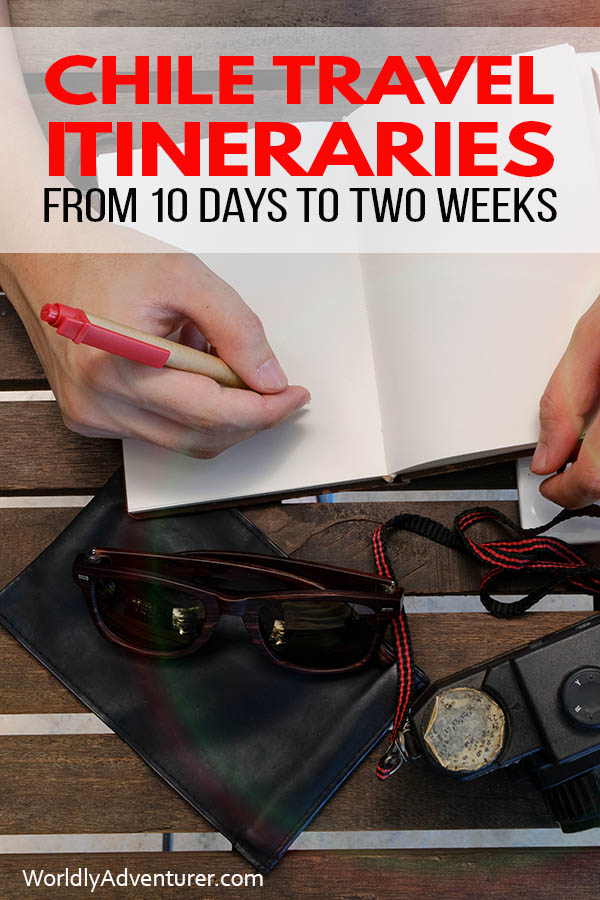
Tuesday 23rd of July 2019
Great article. I love this piece of writing. Thanks
Thursday 13th of June 2019
Hello Steph,
Thank you for your detail guide and the itineraries of 10 and 14 days. My husband and I are planning to go to Chile 10/11 days on late October or early November. I had planned to go to Ecuador but considering the high altitude that we probably couldn't stand.
There are so many blogs on Pinterest just telling me how great the attractions there but very few itineraries provided. So happy that I found yours
Here I have a few questions for the 10 days itinerary: 1) Any tours around the hostels to the attractions @ San Pedro de Atacama (my husband hates driving on vacation and I don't have a license)? 2) any other suggestions for the day 8 to 9 if not going to the vineyard? Thank you in advance!
Steph Dyson
Friday 21st of June 2019
Hi Sarah, yes you can find tour companies for destinations around San Pedro de Atacama on the main drag in the town - there are loads of them! Try and negotiate several tours with one company as this will help you get a discount. Whipala Expedition and 123 Andes Chile Conectado (both have websites) are recommended companies. There are plenty of other destinations to visit in San Pedro. Check out this article for more ideas! Enjoy your trip :)

Getty Images
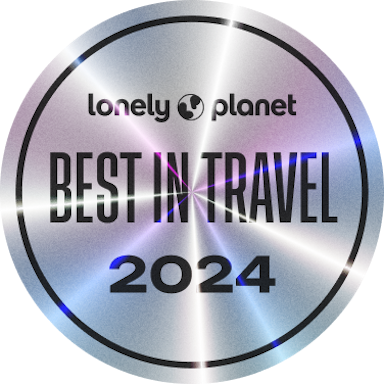
Check out this year's Best in Travel winners
Chile is nature on a colossal scale, but travel here is surprisingly easy if you don't rush it.
Best Time to Visit
Best places to visit, leave the planning to a local expert.
Experience the real Chile. Let a local expert handle the planning for you.
Attractions
Must-see attractions.

Parque Nacional Patagonia
Northern Patagonia
Dubbed as the Serengeti of the Southern Cone, the 690-sq-km Parque Nacional Patagonia features Patagonian steppe, forests, mountains, lakes and lagoons…
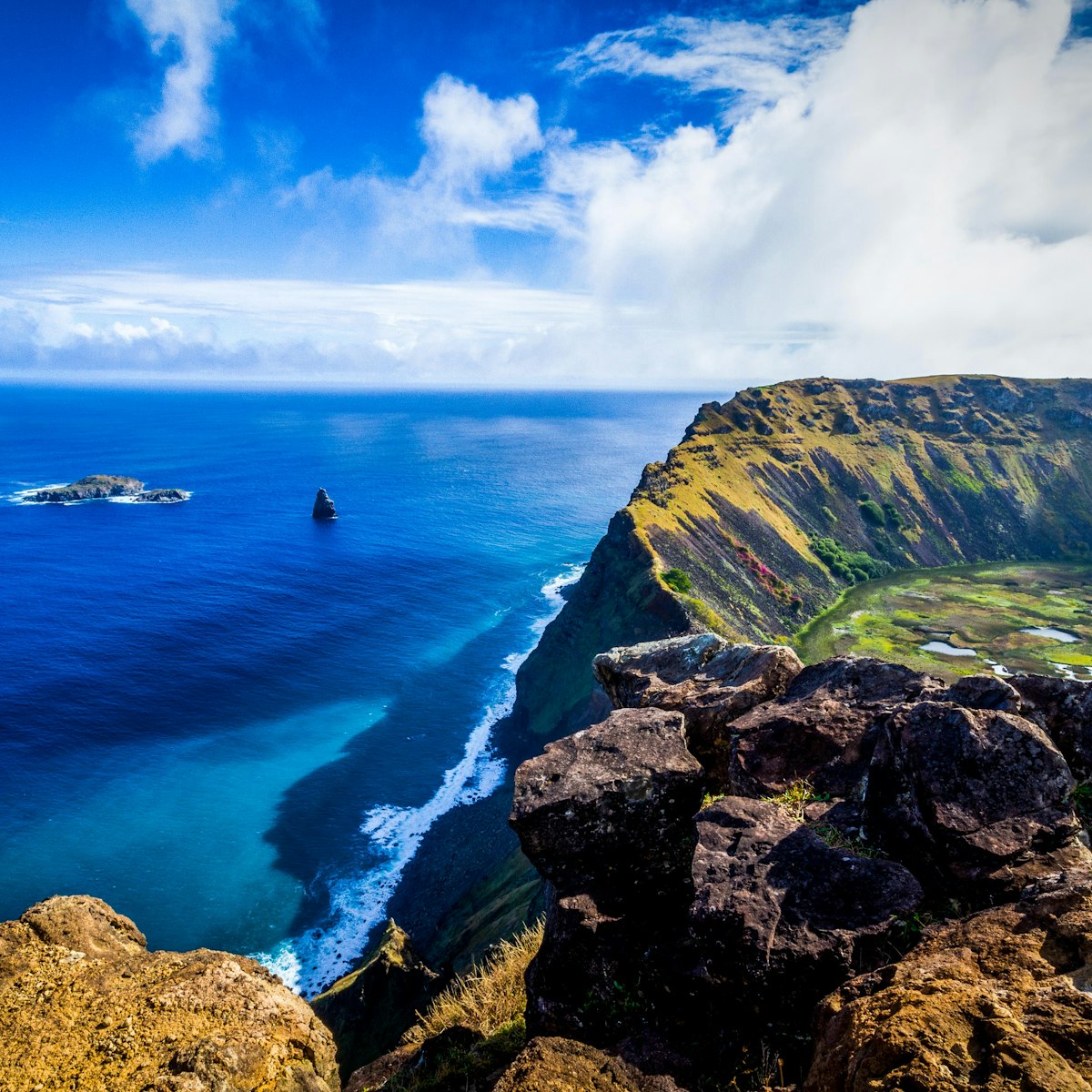
Orongo Ceremonial Village
Rapa Nui (Easter Island)
Nearly covered in a bog of floating totora reeds, the crater lake of Rano Kau resembles a giant witch's cauldron and is a wild greenhouse of endemic…

Rano Raraku
Known as 'the nursery,' the volcano of Rano Raraku, about 18km from Hanga Roa, is the quarry for the hard tuff from which the moai were cut. You'll feel…

Ahu Tongariki
The monumental Ahu Tongariki has plenty to set your camera's flash popping. With 15 imposing statues, it is the largest ahu ever built. The statues gaze…

Centro Gabriela Mistral
This striking cultural and performing-arts center – named for Chilean poet Gabriela Mistral, the first Latin American woman to win the Nobel Prize in…

Beach bums in search of a place to wallow will love this postcard-perfect, white-sand beach. It also forms a lovely backdrop for Ahu Nau Nau, which…

Casa de Isla Negra
Middle Chile
The spectacular setting on a windswept ocean headland makes it easy to understand why Isla Negra was Pablo Neruda’s favorite house. Built by the poet when…

Cerro San Cristóbal
The best views over Santiago are from the peaks and viewpoints of the Parque Metropolitano, better known as Cerro San Cristóbal. At 722 hectares, the park…
Top picks from our travel experts
The 14 best things to do in chile, from volcano climbs to sampling pisco sours.

Ascensor Concepción
The city's oldest funicular, Ascensor Concepción takes you to Paseo Gervasoni, at the lower end of Cerro Concepción. Built in 1883, it originally ran on…

Ascensor Reina Victoria
This funicular dates back to 1902 and connects Av Elias to Paseo Dimalow.
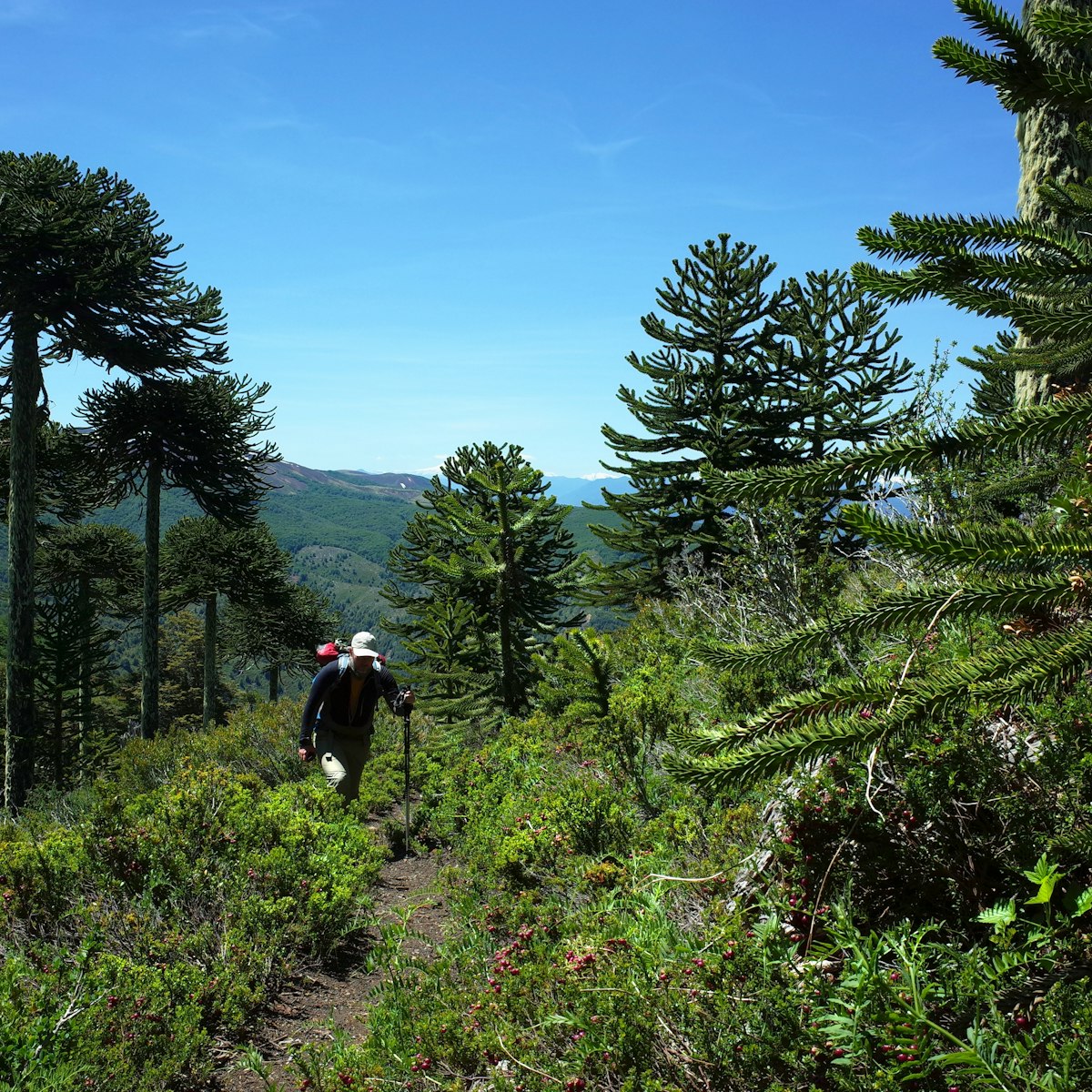
Parque Nacional Villarrica
Towering over the adventure capital of Pucón, Volcán Villarica is the centerpiece of Parque Nacional Villarrica, one of the most popular parks in Chile…

Ascensor El Peral
The recently revamped Ascensor El Peral starts from near the Tribunales (Law Courts) just off Plaza Sotomayor and continues to Cerro Alegre, home to the…
Planning Tools
Expert guidance to help you plan your trip.
Best Things to Do
With its puffing volcanoes, pounding surf, silent salt flats and gleaming glaciers, Chile is the ultimate wonderland for adventures. Here's where to begin.
Things to Know
Chile is an accessible destination, but there are customs, social rules and safety issues to keep in mind. Here's what you need to know.
Transportation
With Chile's epic scenery, getting around is always an adventure. Here's the lowdown on the best ways to navigate your way up, down and all around Chile.
Visa Requirements
Looking to visit Chile? Here's a useful guide to entry requirements to ensure a seamless journey in and out of the country.
Money and Costs
A guide to daily costs in Chile, along with some tricks and tips to help keep more of those colorful Chilean pesos in your wallet.
Traveling with Kids
With some patience – and a bit of basic Spanish – the thin South American nation of Chile can be the perfect setting for a family adventure.
Best Road Trips
Chile's best road trips take in rolling vineyards, serene lakes, deep fjords, towering volcanoes and bone-dry deserts. Here are our top Chilean drives.
Plan with a local
Experience the real Chile
Let a local expert craft your dream trip.
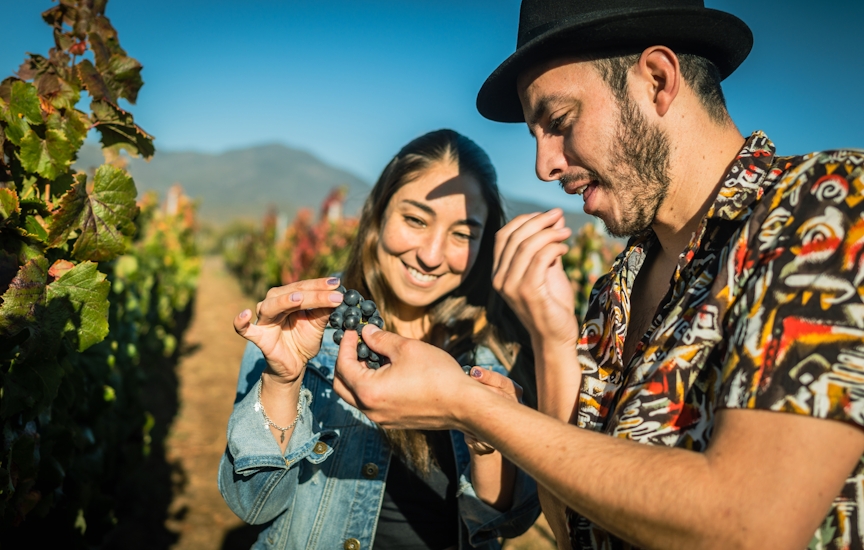
Latest stories from Chile
Filter by interest:
- All Interests
- Adventure Travel
- Art & Culture
- Beaches, Coasts & Islands
- Food & Drink

Family Travel
Sep 23, 2023 • 7 min read

Sep 21, 2023 • 7 min read

Sep 17, 2023 • 7 min read

Aug 26, 2023 • 7 min read

Aug 23, 2023 • 9 min read
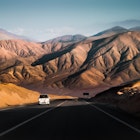
Aug 23, 2023 • 4 min read
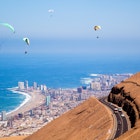
Aug 22, 2023 • 7 min read

Aug 20, 2023 • 8 min read

Aug 12, 2023 • 3 min read
in partnership with getyourguide
Book popular activities in Chile
Purchase our award-winning guidebooks.
Get to the heart of Chile with one of our in-depth, award-winning guidebooks, covering maps, itineraries, and expert guidance.
Chile and beyond

- South America
- An Introduction To Chilean Literature...
An Introduction to Chilean literature in 10 books

Though it’s known as the country of poets , there are plenty of top-tier novelists out of Chile that have made noteworthy contributions to the world’s literary scene. Discover the beauty and tragedy of this forgotten Latin American country by checking out some of Chilean literature’s most important novels.
The house of the spirits by isabel allende.
This moving novel by prolific Chilean novelist Isabel Allende launched her career when it was published in 1982. The book is mainly told through the perspectives of Esteban Trueba and his granddaughter Alba, and follows the tumultuous lives of four generations in the Trueba family. Using elements of magical realism, Allende explores the social and political unrest occurring in her home country of Chile and the lives impacted by these events.

Curfew by José Donoso

Seeing Red by Lina Meruane
One of Chile’s leading female authors, Lina Meruane, mixes autobiography and fiction to explore the limitations of the body and human relationships in Seeing Red . An unsettling exploration of the inner life of a Chilean woman who finds herself going blind in a new city, the book follows the protagonist’s impediments and subsequent rage with poignant eloquence.

My Tender Matador by Pedro Lemebel
Written by Chile’s most prolific queer novelist Pedro Lemebel, My Tender Matador gives its readers a unique perspective on life in Santiago during the transformative mid-eighties. The book takes place around the time the military dictator Augusto Pinochet was nearly fatally attacked and anti-regime protest movements gained momentum. In a Santiago working-class barrio, the gay and aging Queen of the Corner offers up his home to the young, attractive Carlos to use as a gathering space for the resistance.

The Savage Detectives by Roberto Bolaño
This 1998 novel by Roberto Bolaño is divided into three different parts, with frequent changes in narrator. The book follows two decades of adventures of realist poets Arturo Belano and Ulises Lima, from Chile and Mexico, respectively. As the poets cross continents in search of the poet Cesárea Tinajero, who has mysteriously disappeared, they encounter a diverse array of characters that each add a unique perspective to this lively novel.

The Postman by Antonio Skarmeta
Ardiente Paciencia , released in English-language markets as The Postman , is a treasured romantic novel set in the years leading up to Chile’s military dictatorship. The protagonist Mario Jiménez is a shy teenager working as a postman in the Chilean town Isla Negra, where Chilean poet Pablo Neruda also lives. After delivering Neruda his letters, Jiménez befriends the famous poet who subsequently educates the youth and helps him woo the daughter of the local bartender.

The Shrouded Woman by María Luisa Bombal
As Ana María lies dead in her coffin, her transition into the afterlife is haunted with vivid memories and surreal sensory experiences. Surrounded by the people closest to her that mourn her death, the protagonist relives some of her most defining moments as the reader slowly discovers her complex relationships and identities.

Ways of Going Home by Alejandro Zambra
Alejandro Zambra writes exquisitely about life in Chile during and after the country’s 17-year military dictatorship in Ways of Going Home, a tall order in a country that tends to keep quiet about Pinochet’s rule. Told from the perspective of a Chilean author who creates a fictitious narrator to discuss the realities of the dictatorship, Zambra uses metafiction to explore the phantoms of Chile’s dark past and how they haunt the country’s increasingly stable present.

The Absent Sea by Carlos Franz
This striking novel by Carlos Franz includes vivid details of the brutality experienced during Chile’s 1973 military coup. The book’s protagonist – the youthful and passionate judge Laura – is forced to flee her hometown in northern Chile after enduring unspeakable acts of violence. The story continues with Laura’s homecoming twenty years after her exile.

The Old Man Who Read Love Stories by Luis Sepulveda
Set in a small town in the Ecuadorian jungle, Chilean author Luis Sepulveda’s captivating novel follows protagonist Antonio José Bolívar, who takes solace in romantic literature. However, no matter how much he reads, Antonio ultimately finds it impossible to ignore the outsiders slowly disrupting the town’s isolated harmony.

Since you are here, we would like to share our vision for the future of travel - and the direction Culture Trip is moving in.
Culture Trip launched in 2011 with a simple yet passionate mission: to inspire people to go beyond their boundaries and experience what makes a place, its people and its culture special and meaningful — and this is still in our DNA today. We are proud that, for more than a decade, millions like you have trusted our award-winning recommendations by people who deeply understand what makes certain places and communities so special.
Increasingly we believe the world needs more meaningful, real-life connections between curious travellers keen to explore the world in a more responsible way. That is why we have intensively curated a collection of premium small-group trips as an invitation to meet and connect with new, like-minded people for once-in-a-lifetime experiences in three categories: Culture Trips, Rail Trips and Private Trips. Our Trips are suitable for both solo travelers, couples and friends who want to explore the world together.
Culture Trips are deeply immersive 5 to 16 days itineraries, that combine authentic local experiences, exciting activities and 4-5* accommodation to look forward to at the end of each day. Our Rail Trips are our most planet-friendly itineraries that invite you to take the scenic route, relax whilst getting under the skin of a destination. Our Private Trips are fully tailored itineraries, curated by our Travel Experts specifically for you, your friends or your family.
We know that many of you worry about the environmental impact of travel and are looking for ways of expanding horizons in ways that do minimal harm - and may even bring benefits. We are committed to go as far as possible in curating our trips with care for the planet. That is why all of our trips are flightless in destination, fully carbon offset - and we have ambitious plans to be net zero in the very near future.

Places to Stay
The best hotels in la serena, chile, for every traveler.


The Best Hotels to Book in Puerto Natales, Chile

Hotels in Chile Where You Can Sleep Under the Stars

The Unstoppable Rise of Mon Laferte: An Interview With the Chilean Musician

5 Chilean Musicians Shaping a New Urban Scene

See & Do
Explore puerto williams: the earth’s southernmost city.

Health & Wellness
Enhancing wellbeing in nature: five of the world's best national parks.

Guides & Tips
Stay curious: experience chile from your living room.

The Best Resorts to Book in Chile

The Best Hotels in Punta Arenas, Chile

Chilean Artists Remember Victims of Dictatorship Through Virtual Portraits

Meet the Young Female Scientist From Chile Who Discovered Three Planets
Culture trip spring sale, save up to $1,100 on our unique small-group trips limited spots..

- Post ID: 1089173
- Sponsored? No
- View Payload
- Meet the Team
- Work with Us
- Czech Republic
- Netherlands
- Switzerland
- Scandinavia
- Philippines
- South Korea
- New Zealand
- South Africa
- Budget Travel
- Work & Travel
- The Broke Backpacker Manifesto
- Travel Resources
- How to Travel on $10/day
Home » Gear » books to read while travelling
The Ultimate List of the 50 Best Books to Read While Traveling (Updated 2024!)
One of my favourite things about traveling is that I suddenly have time to read. When I’m hitching, camping or riding a 24 hour train whilst backpacking around the world, I often manage to read two or even three books a week. So over the course of the last year I’ve got through a fair few, some have been frankly life changing, others have been just as much of a slog as an overnight bus!
As travelers, we understand the transformative power of exploration, the allure of the unknown, and the magic of a well-told tale. It’s for this reason I have put together a list of the best travel books to read when backpacking!
Many of these travel books are best read when you’re actually in the country they are set in; for example, reading Shantaram in India is a really fantastic experience and you will get a lot more out of the book. Same goes for books about backpacking in general, they just seem to make the experience much more reflective and relatable.
From dog-eared classics to hidden gems, the best travel books serve as compasses guiding us through distant lands, exotic cultures, and incredible new experiences. They can fuel our wanderlust, ignite our imagination, and remind us of the infinite possibilities that await on the road.
And so, in no particular order, here we go with the 50 best books to read while traveling… The world is waiting – let’s explore it together, one page at a time.

REI is one of America’s biggest and most-loved outdoor gear retailers.
Now, for just $30, get a lifetime membership that entitles you to 10% OFF on most items, access to their trade-in scheme and discount rentals .
#1 – On the Road
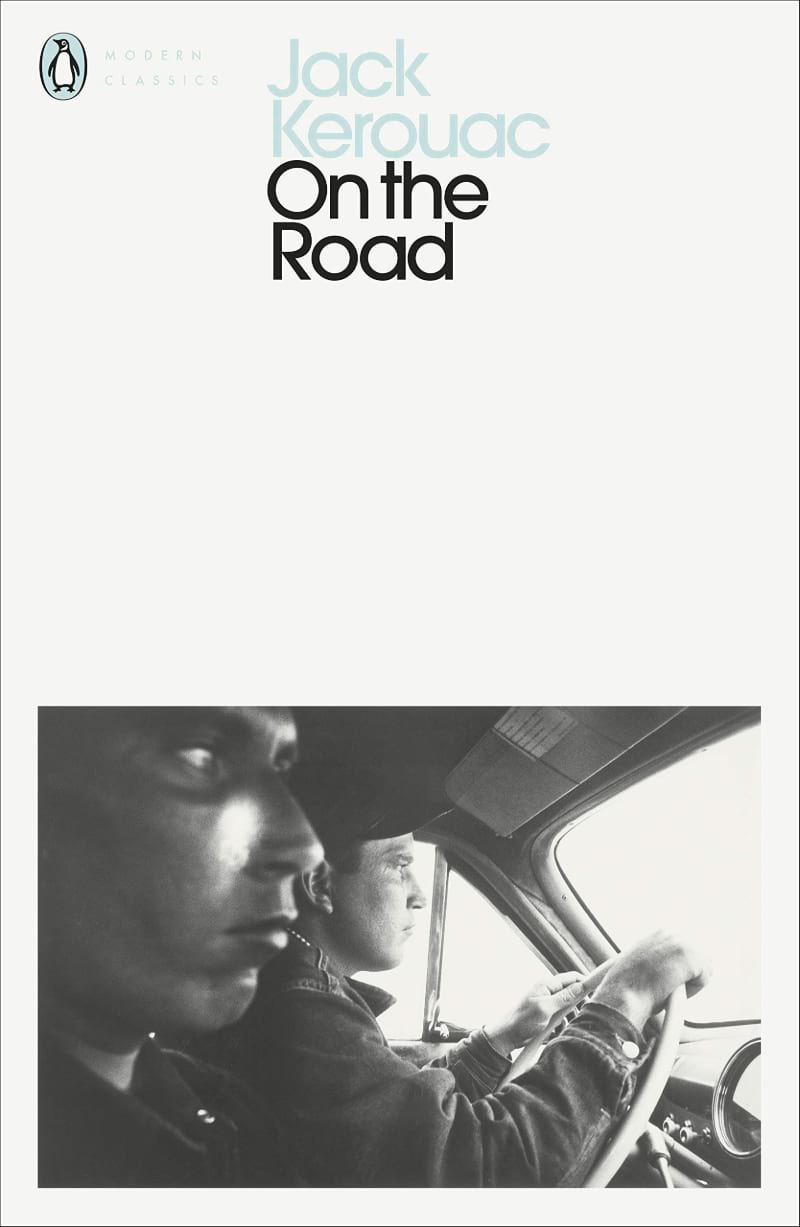
Jack Kerouac’s seminal novel should be compulsory reading for all nomads, backpackers and folks who want to live off the grid. In ‘On The Road’ discover 1950s underground America as Kerouac hitches backwards and forwards across the states in search of Jazz, drugs, sex and the meaning of life. Definitely, one of my favourite books to read while travelling and one of the best backpacking books out there.
#2 – The Cloud Garden
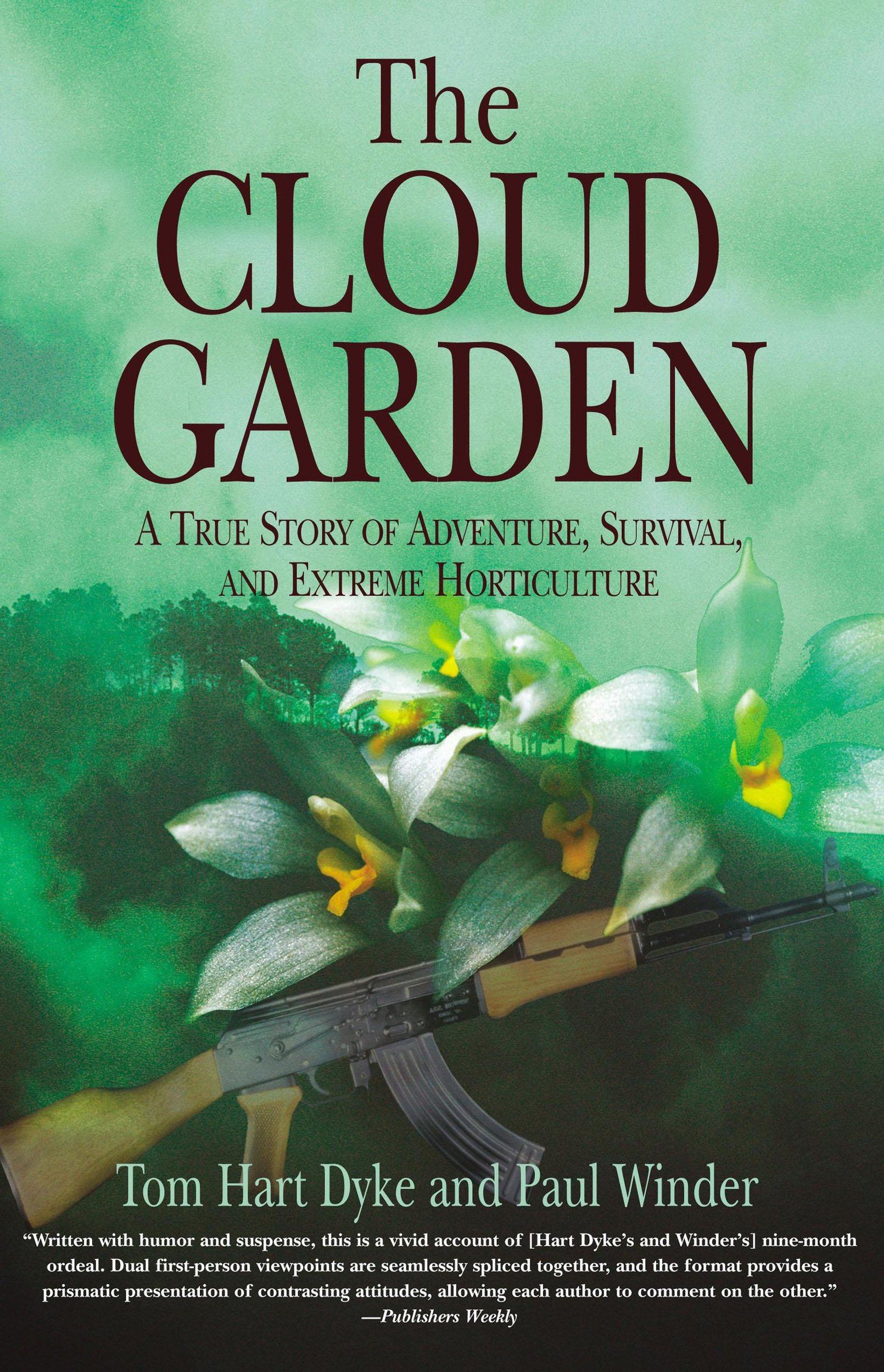
The Darien Gap is a place of Legend. The only break in the Pan-American highway, which runs from Alaska to the tip of South America. The gap is often seen as an almost impregnable strip of swamp, jungle and cloud forest inhabited by FARC gorillas.
This fascinating book tells the story of two unlikely travellers who team up and try to get through the gap from Panama to Colombia, on foot. After a gruelling journey, they are just hours from success when they are captured by FARC fighters and held prisoner in the jungle for nine months. Ok, so you might not want to literally follow in their footsteps but it’s one of the most inspirational books about traveling the world.
#3 – Shantaram
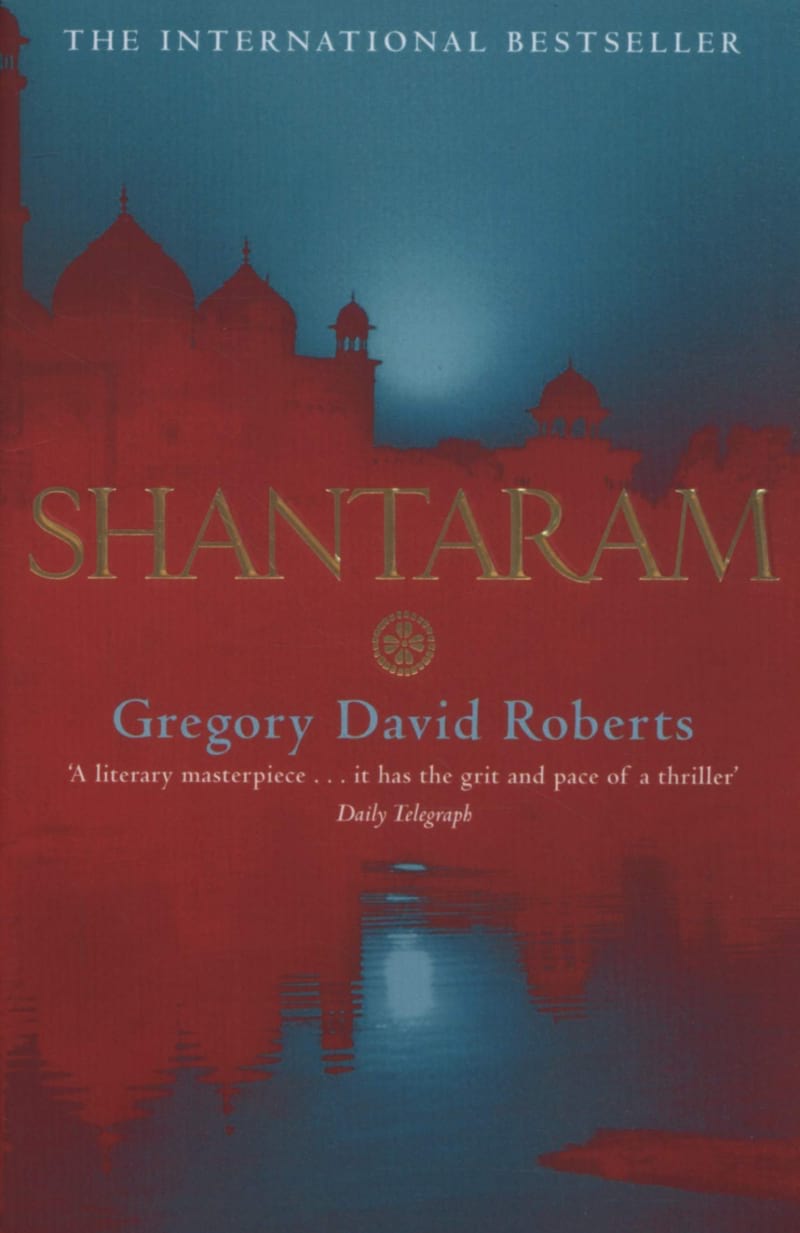
The first book I ever read on India, Shantaram inspired me to book a one-way flight to Delhi and travel around India for 14 months. It might just be my favourite book about traveling around the world if I’m honest!
The book follows the possibly true, possibly exaggerated, story of an escaped Australian convict who finds his way to India where he falls in love, works for gangsters, fights the Russians in Afghanistan, gets imprisoned in Bombay, becomes a professional forger and an amateur doctor and experiences life in an Indian slum.
One of the best books to read while travelling in India, it is extremely well written and paints an accurate, although somewhat rosy, picture of life in India.
#4 – Last Man in Tower
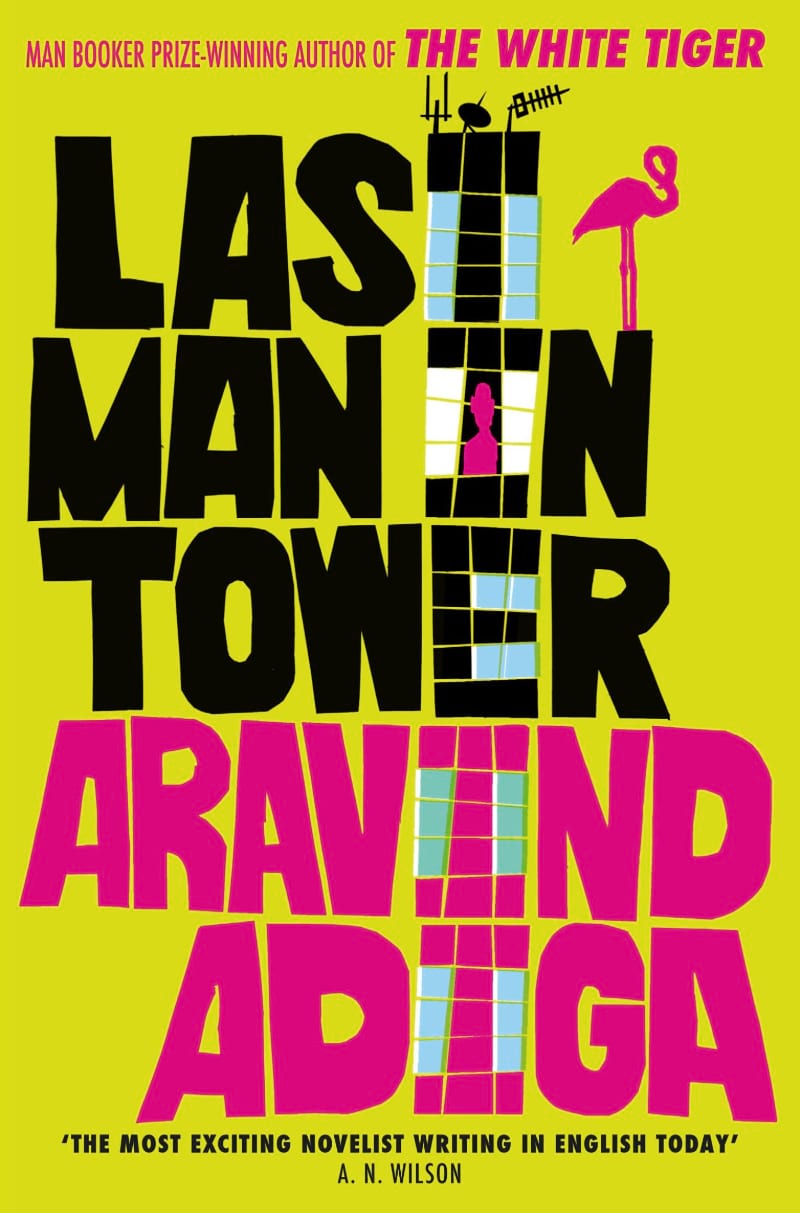
21st Century Mumbai is a city of new money and soaring real estate, and property kingpin Dharmen Shah has grand plans for its future. His offer to buy and tear down a weathered tower block, making way for luxury apartments, will make each of its residents rich – if all agree to sell.
But not everyone wants to leave; many of the residents have lived there for a lifetime, and many of them are no longer young. As tensions rise among the once civil neighbours, one by one those who oppose the offer give way to the majority, until only one man stands in Shah’s way: Masterji, a retired schoolteacher, once the most respected man in the building.
Shah is a dangerous man to refuse, but as the demolition deadline looms, Masterji’s neighbours – friends who have become enemies, acquaintances turned co-conspirators – may stop at nothing to secure their money. This is really one of the most poignant books to read while travelling in India, it changed how I viewed the country irreversibly.
#5 – A Long Petal of the Sea
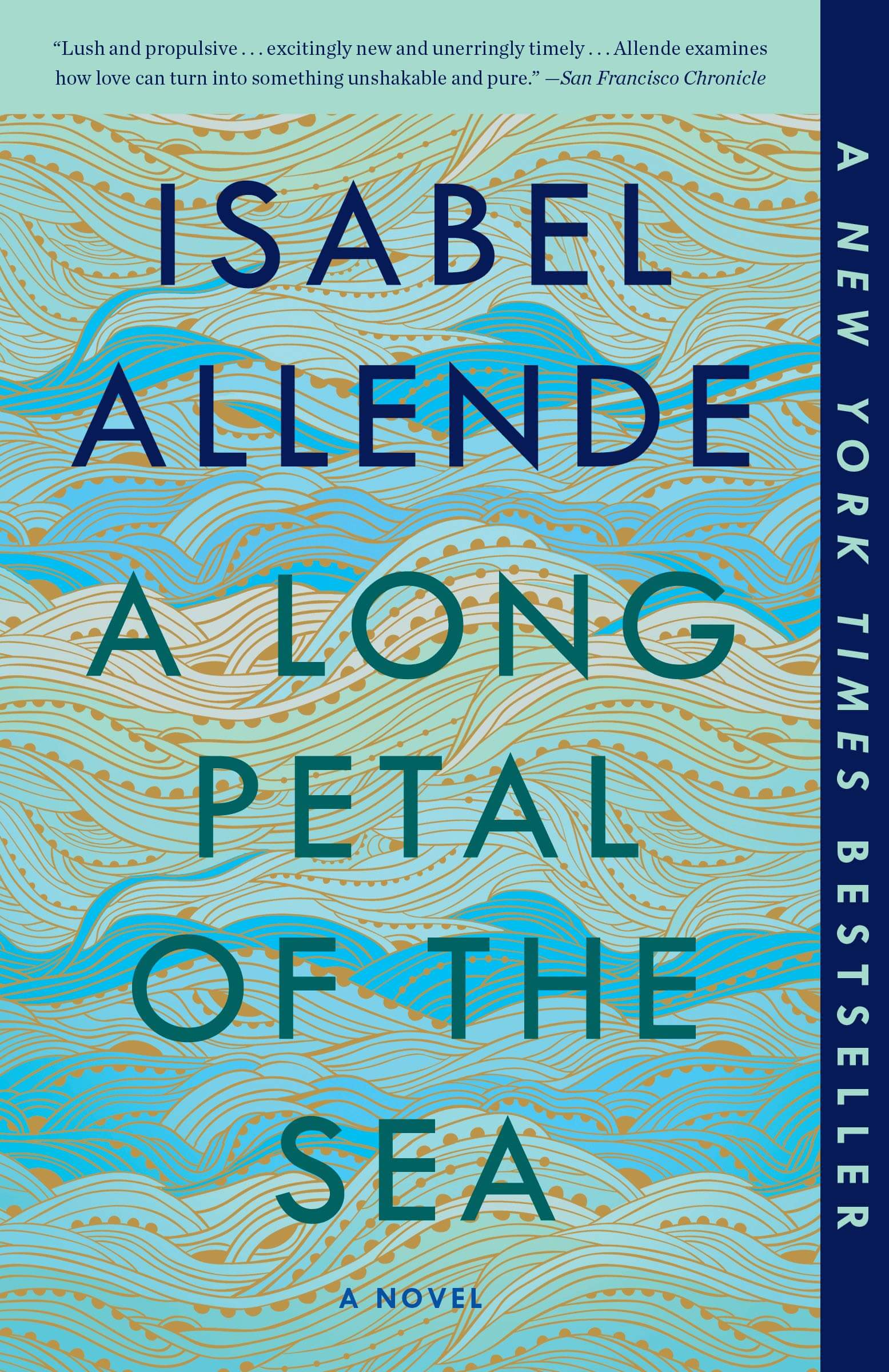
Backdropped by the ongoing unrest of the Spanish Civil War, A Long Petal of the Sea offers a tale of love in the face of hardship, a complex cast of characters interwoven into the plot, and the daily struggle to survive. This was one of my absolute favourite reads of 2024 and an awesome bit of travel reading – another gem by Isabel Allende!
#6 – Mumbai to Ventiane
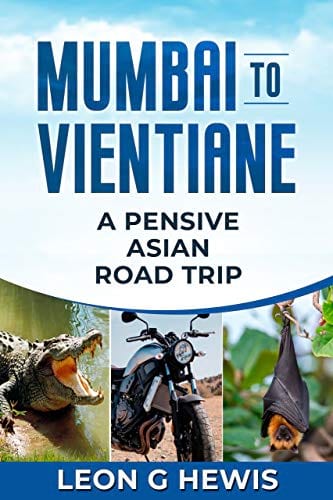
Need more India? I loved my 2 years in this country and Leon G Hewis similarly had an awesome adventure that began on this mysterious subcontinent.
His self-published travelogue-slash-thought-diary gives a refreshing look into South and Southeast Asia. He fully captures the feeling of being on the road and confronting new ideas and creatively working yourself out of situations you’d never encounter on your couch at home. If you’re looking for a definative book about traveling the world and the experiences that come with it then this is the one.
#7 – On a Shoestring to Coorg
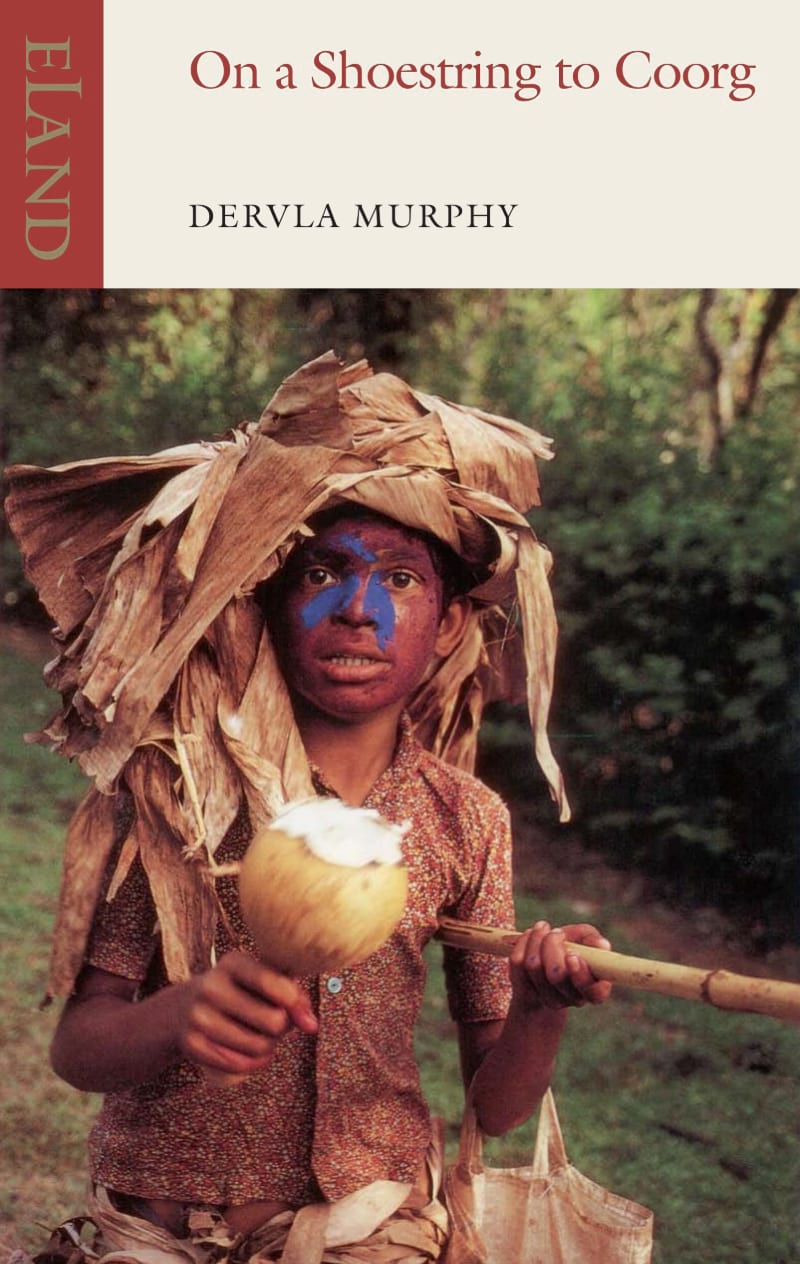
This is the first travel book that tested the idea that a five-year old daughter makes for a decent travelling companion. A really interesting read on the now-defunct Indian state of Coorg, this book gives a fascinating insight into the origins of backpacker travel in India.
#8 – The Kite Runner
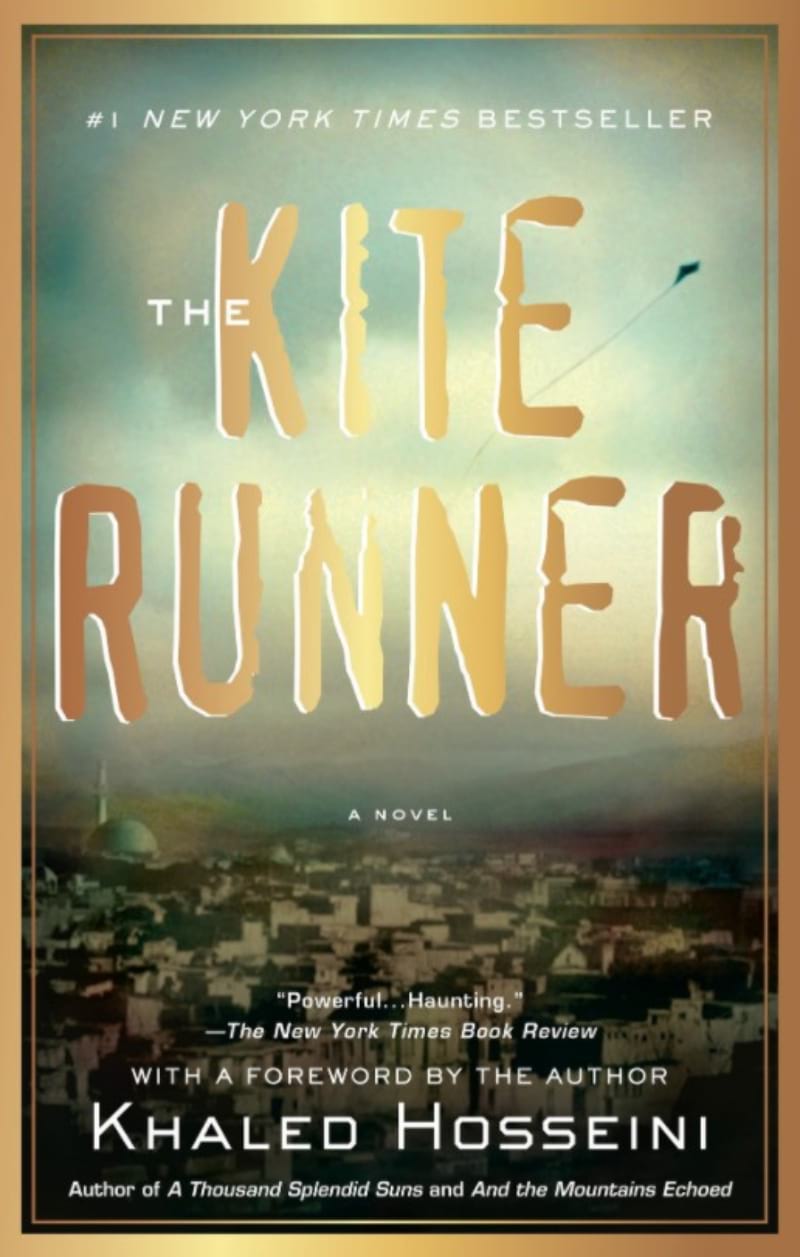
A fascinating, sometimes painful, read about Afghanistan under Taliban rule. The story follows the fate of two young boys, one of whom is able to escape to America whilst the other, of the Hazara minority group, is forced to stay behind.
#9 – A Thousand Splendid Suns
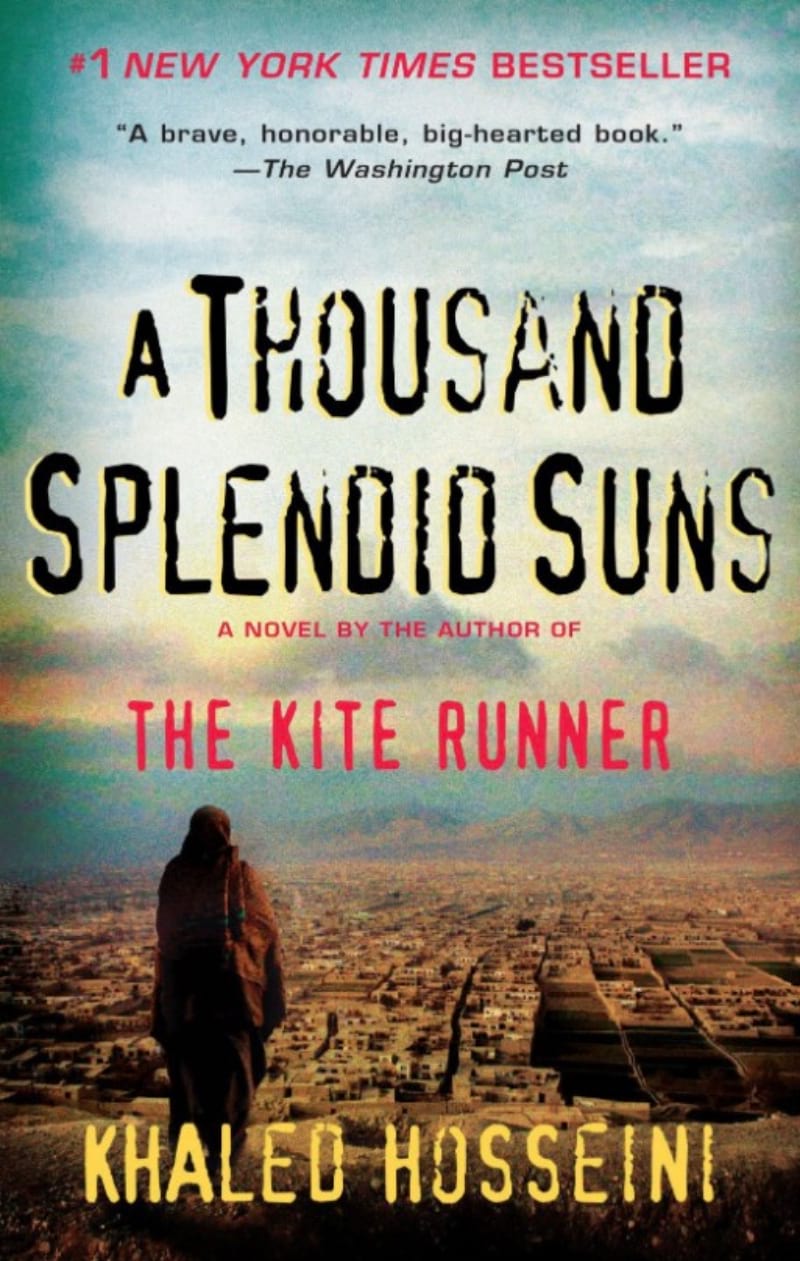
One of the most inspirational books to read while travelling, I felt that this gave me a real insight into the little known women of Afghanistan and the events that have shaped the country over the last thirty years.
#10 – Born to Run
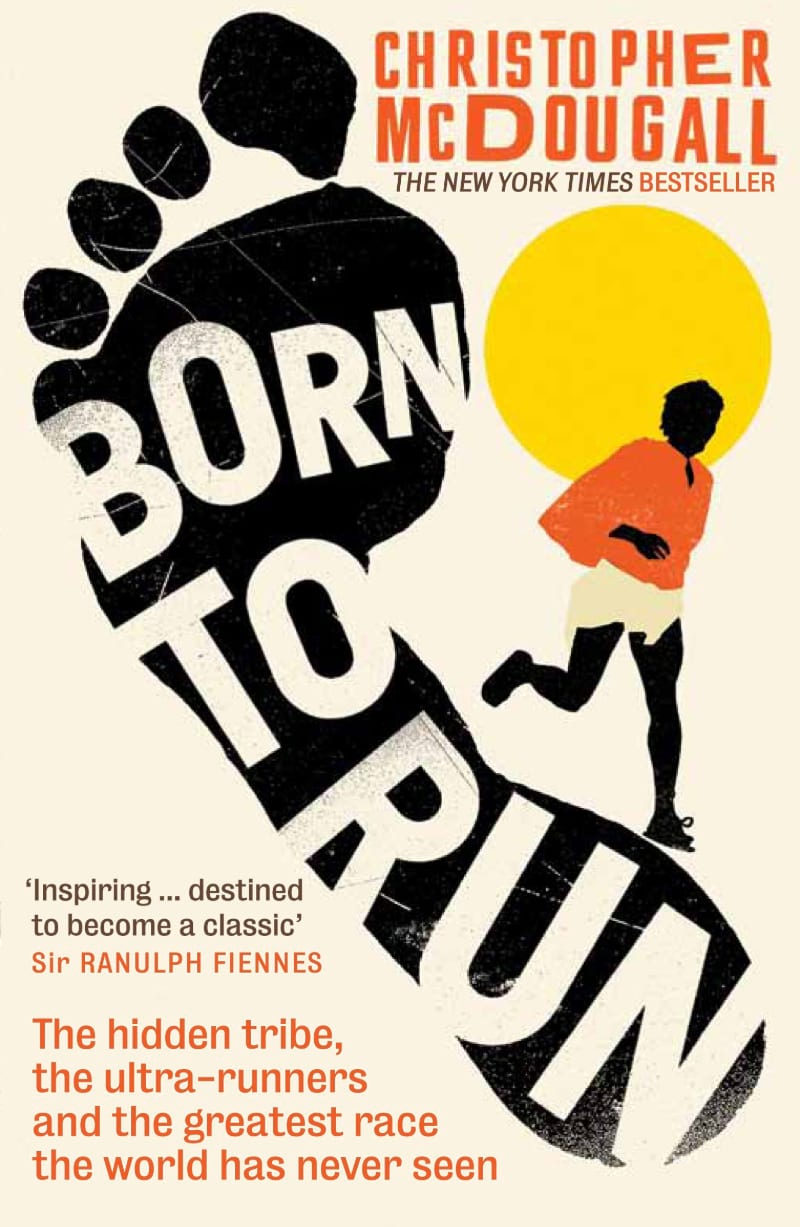
A tale of a mysterious tribe of Mexican Indians, the Tarahumara, who live hidden in canyons and are reputed to be the best long distance runners in the world.
#11 – The Electric Kool-Aid Acid Test
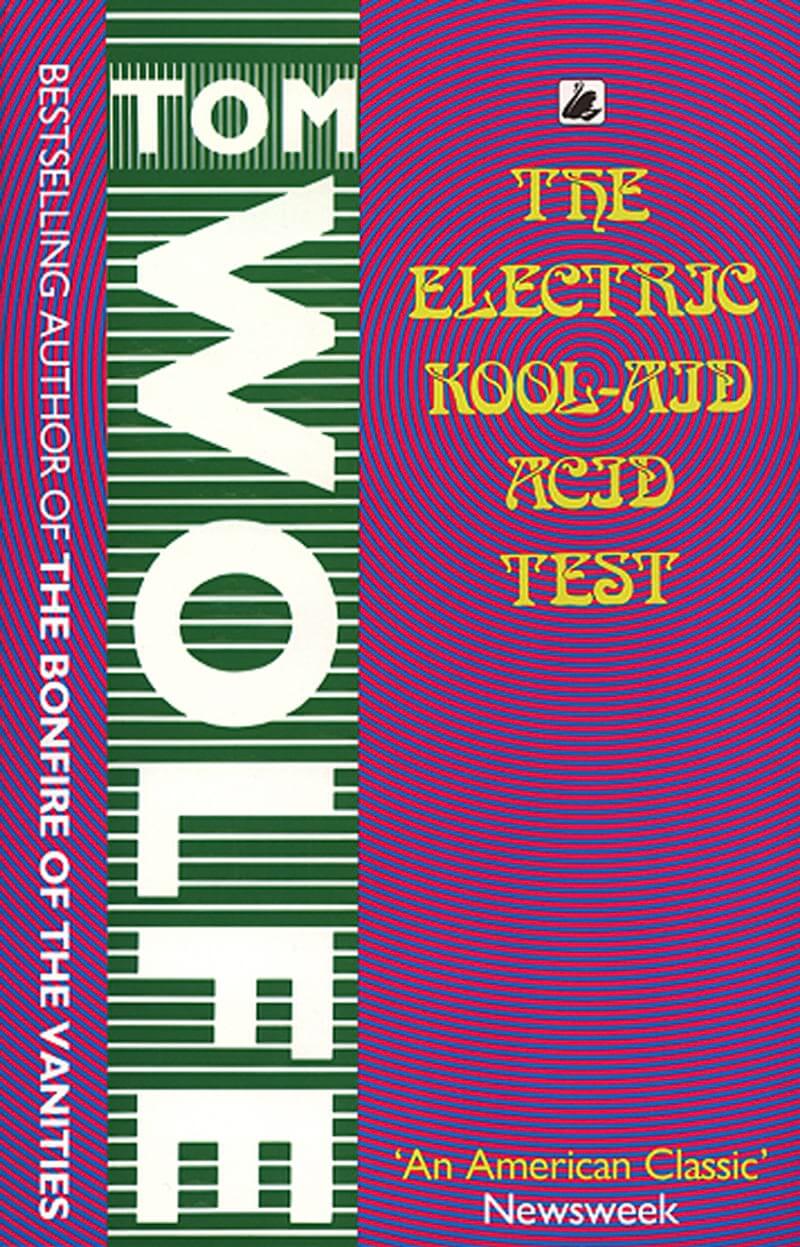
This is THE book to read if you are interested in how the psychedelic movement began, squats, hippy culture or experimenting with LSD.
Follow Ken Kesey, author of One Flew over the Cuckoos Nest, as he leads his band of Merry Pranksters across America fermenting a revolution unlike any other. Definitely, one of the best books to read on the road.
#12 – The Lost City of Z
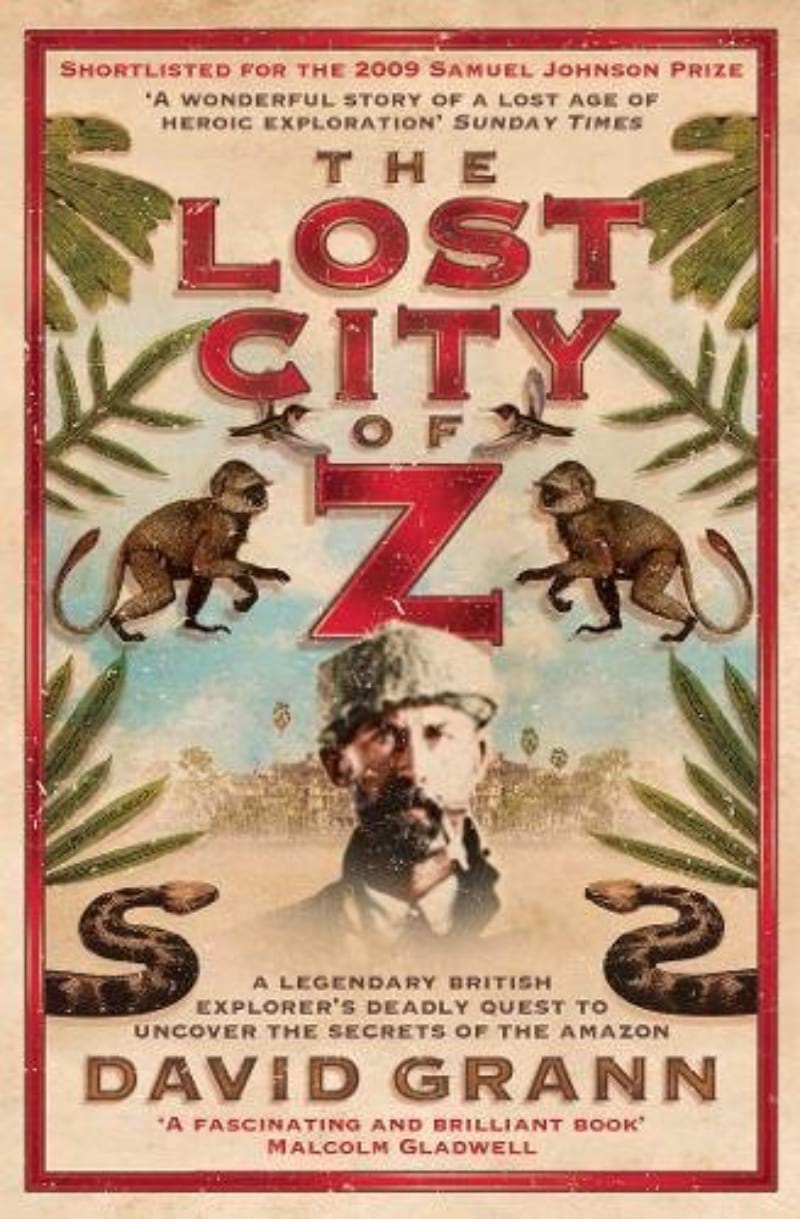
This is THE book you want to read if you are headed into the Amazon. The book tells the tale of an eccentric British explorer, Percy Fawcett, who spent his life leading expeditions into the Amazon in search of the legendary lost City of Z.
The book recounts his life, his encounters with un-contacted tribes and his final expedition, from which he did not return.
#13 – Indonesia, Etc. Exploring the Improbable Nation
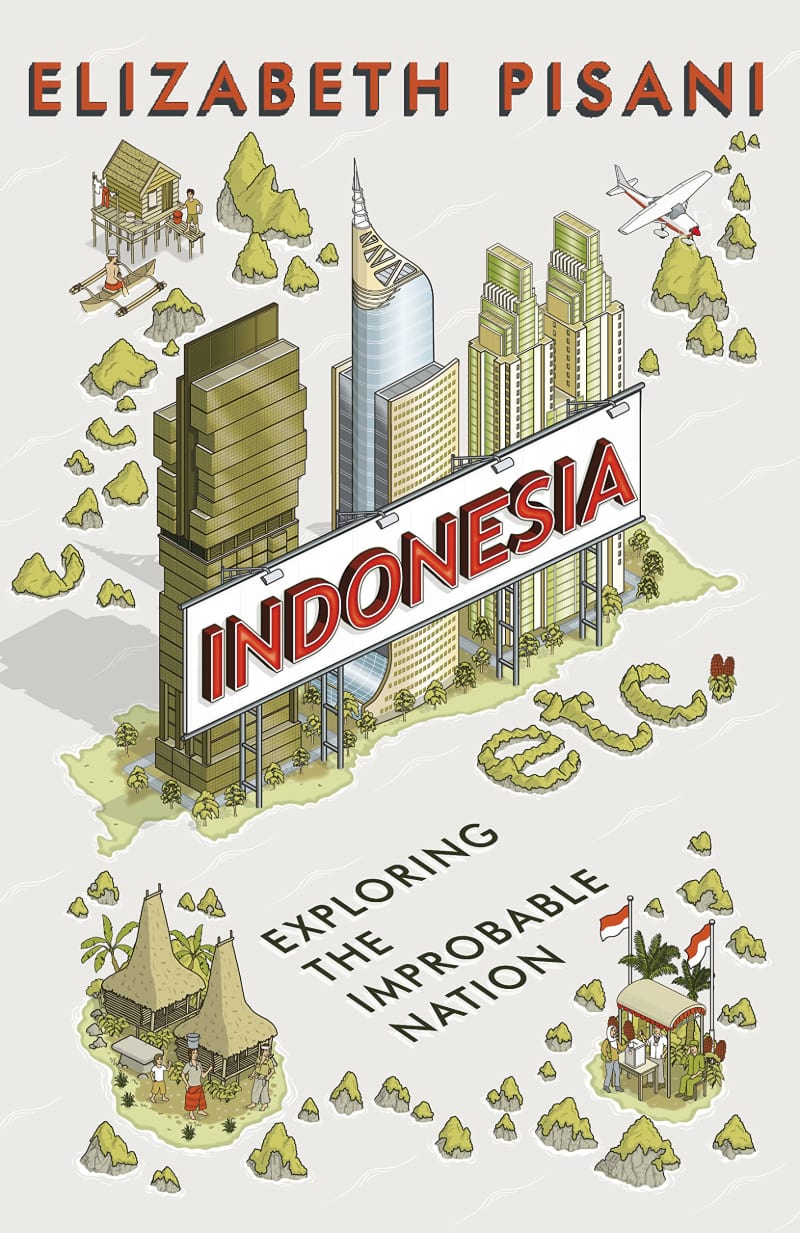
In Indonesia Etc, Pisani weaves together the stories of Indonesians encountered on her journey with a considered analysis of Indonesia’s recent history, corrupt political system, ethnic and religious identities, stifling bureaucracy and traditional ‘sticky’ cultures.
Fearless and funny, she gives a compelling and sharply perceptive account of a captivating nation.
#14 – The Motorcycle Diaries

A travel classic, these are the diaries of Che Guevara in which he travels around South America by motorbike. A book that is ALWAYS on the list of best books to read while travelling.
#15 – The Killing Fields
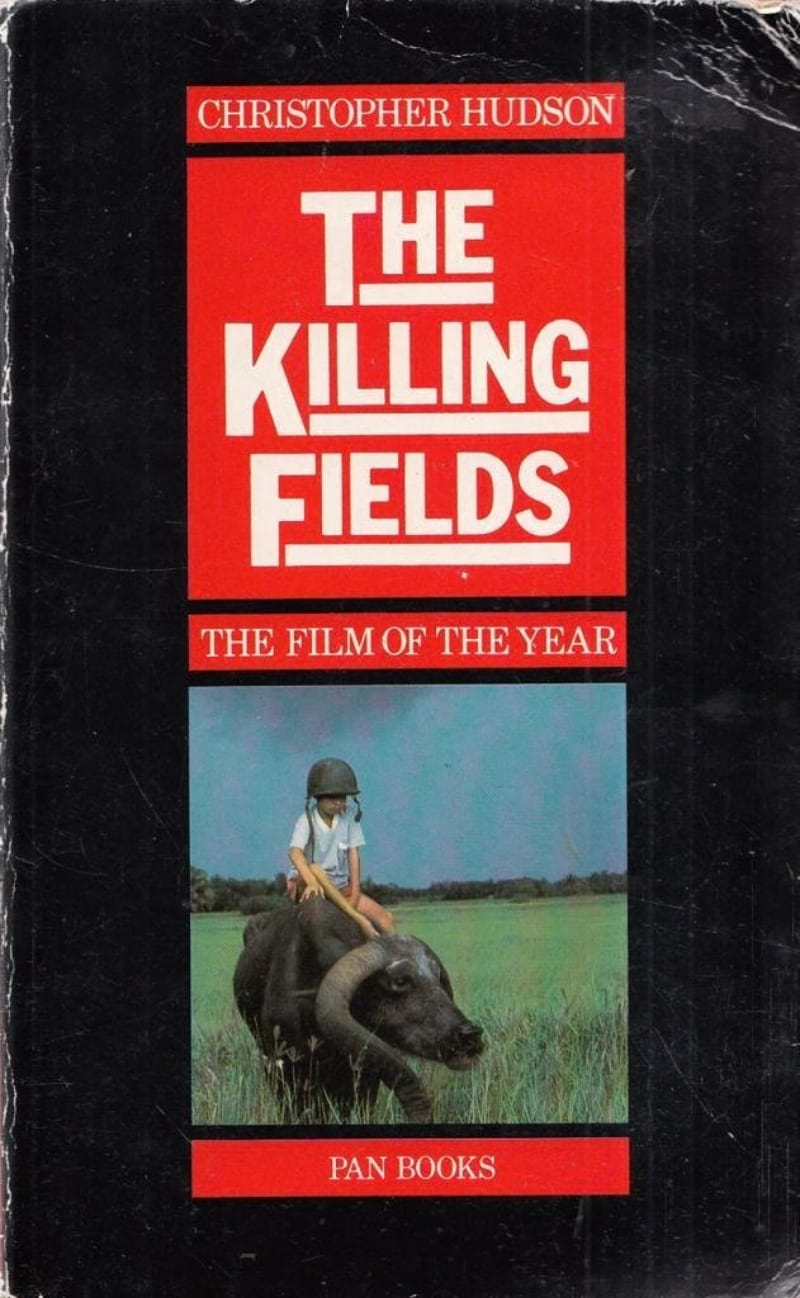
Hands-down THE best book you can read about Cambodia under the rule of the Khmer Rouge. Heartbreaking, beautifully written and historically accurate, this book will change how you perceive Cambodia forever.
#16 – First they Killed my Father
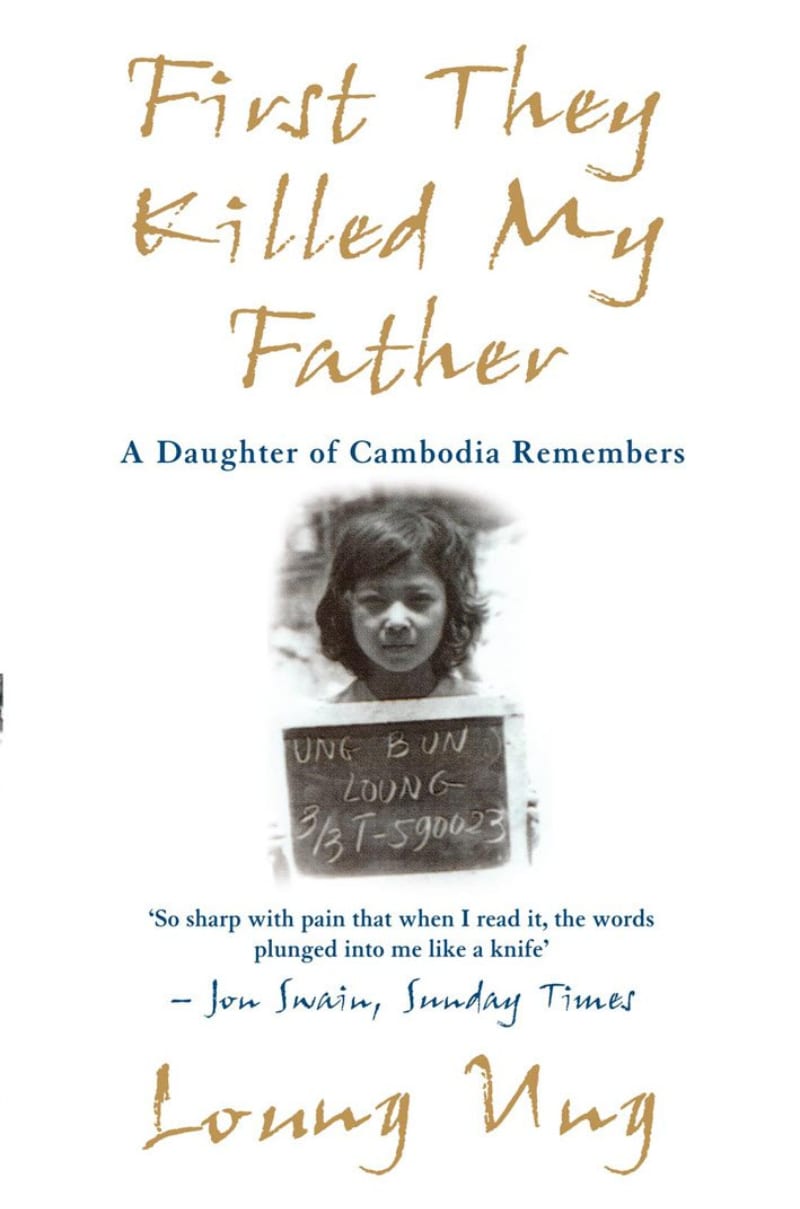
The personal account of a young girl who was taken from her family and trained as a child soldier by the Khmer Rouge.
#17 – The Waiting Land
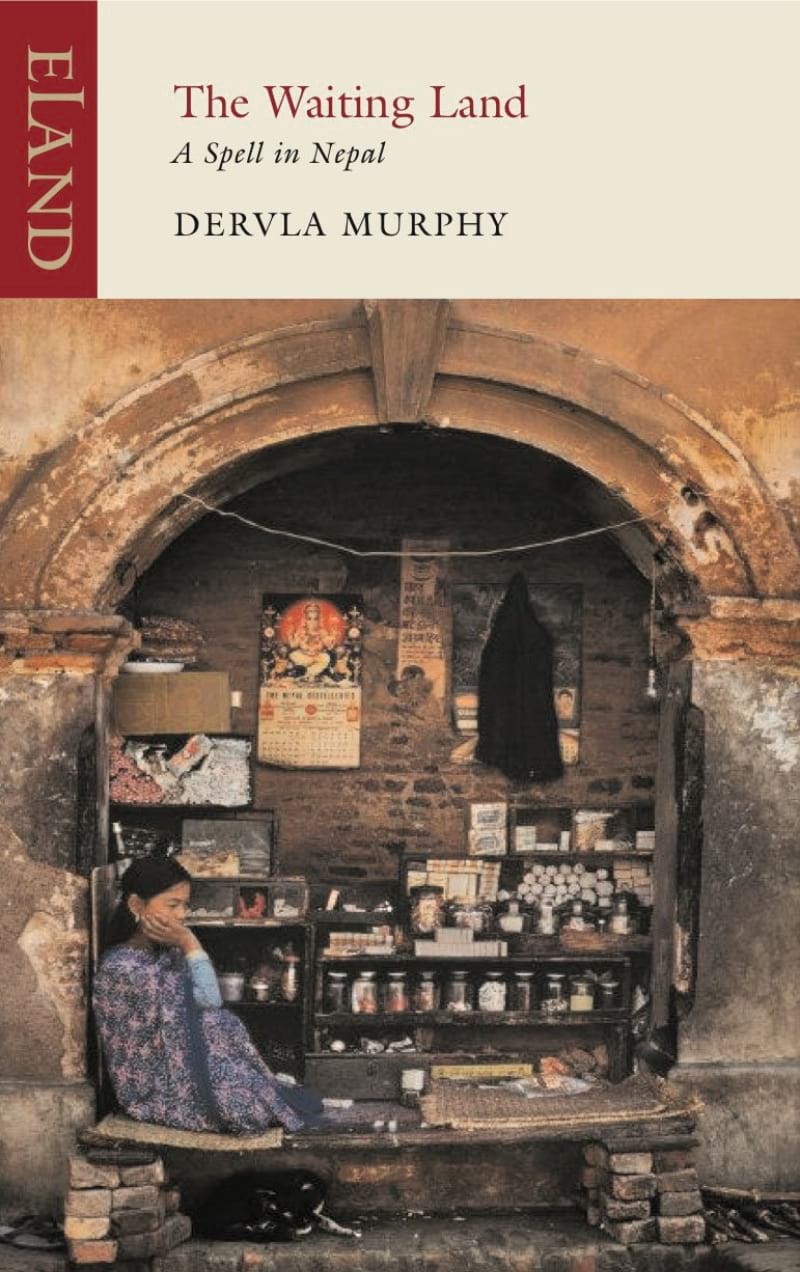
It’s about an Irish writer volunteering in Nepal in the 1960’s. The innocent Nepal she writes about it is the one which hordes of travellers each year are still trying to find but which is sadly now gone forever.
#18 – Mud, Sweat and Tears

The inspiring autobiography of Bear Grylls in which he recovers from a broken back and goes on to become one of the youngest climbers to scale Mount Everest. One of the best books to read while travelling anywhere! It truly inspires you to challenge yourself.
#19 – Nine Lives
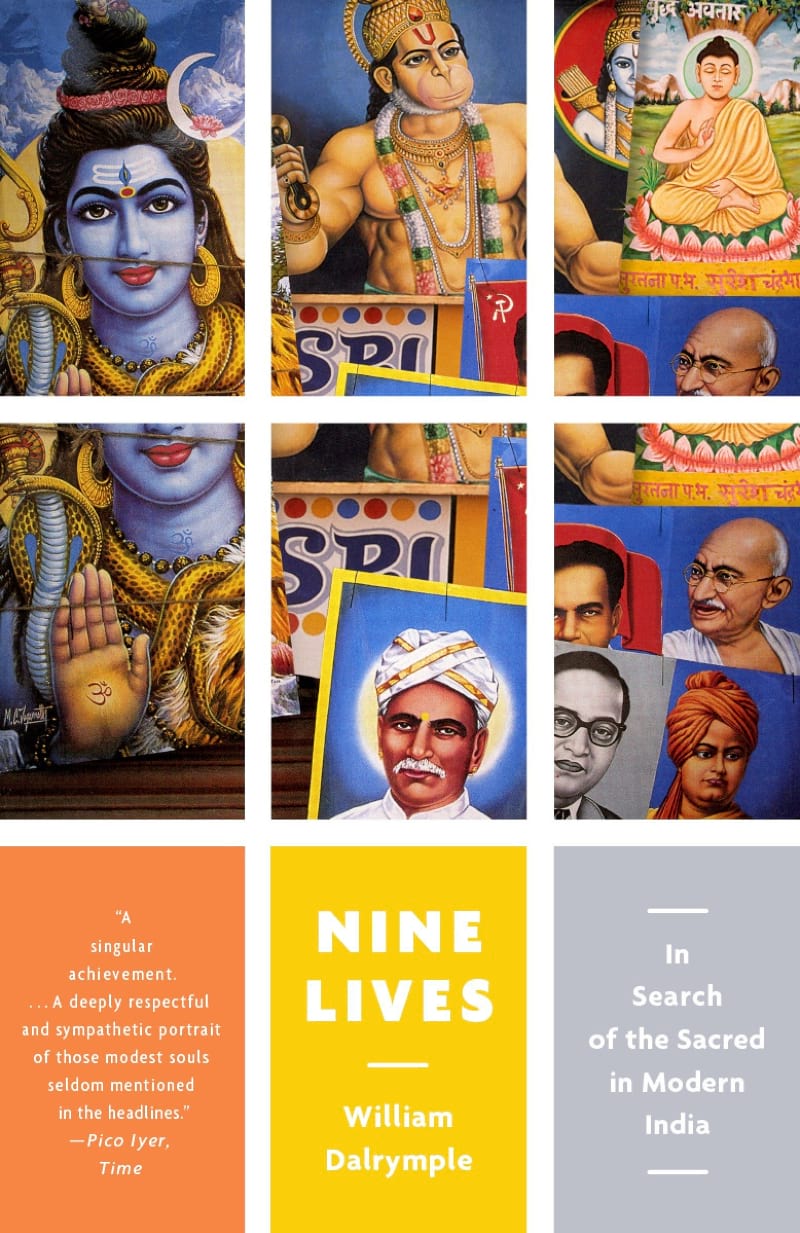
A Buddhist monk takes up arms to resist the Chinese invasion of Tibet – then spends the rest of his life trying to atone for the violence by hand printing the best prayer flags in India. A Jain nun tests her powers of detachment as she watches her best friend ritually starve herself to death.
Nine people, nine lives; each one taking a different religious path, each one an unforgettable story. William Dalrymple is one of the best writers when it comes to offering an insight into Indian culture and I highly recommend reading everything he has written.
#20 – Heart of Darkness
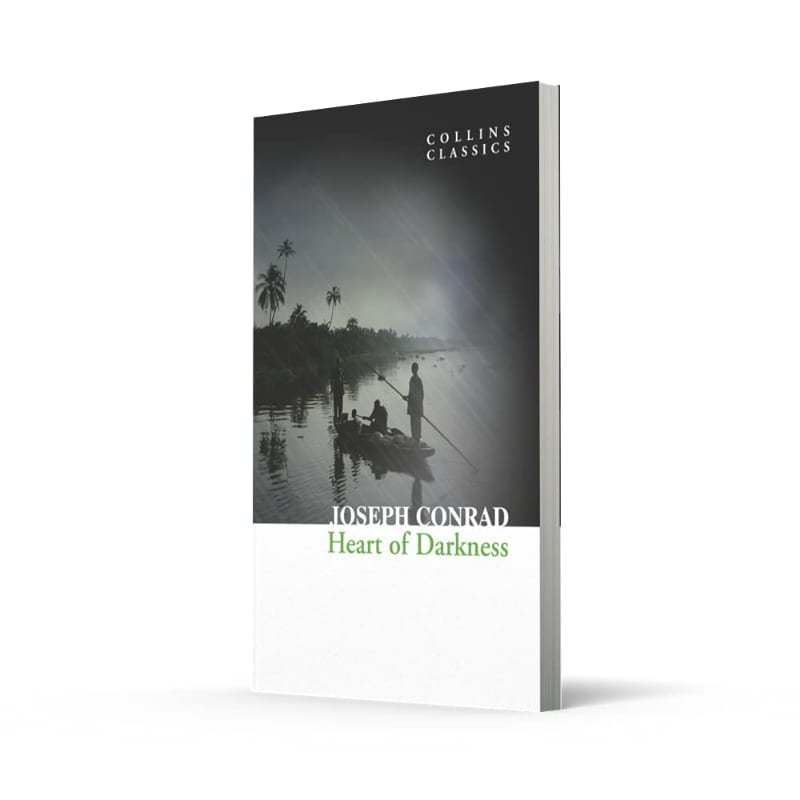
At the peak of European Imperialism, steamboat captain Charles Marlow travels deep into the African Congo on his way to relieve the elusive Mr Kurtz, an ivory trader renowned for his fearsome reputation.
On his journey into the unknown Marlow takes a terrifying trip into his own subconscious, overwhelmed by his menacing, perilous and horrifying surroundings.
#21 – Blood River
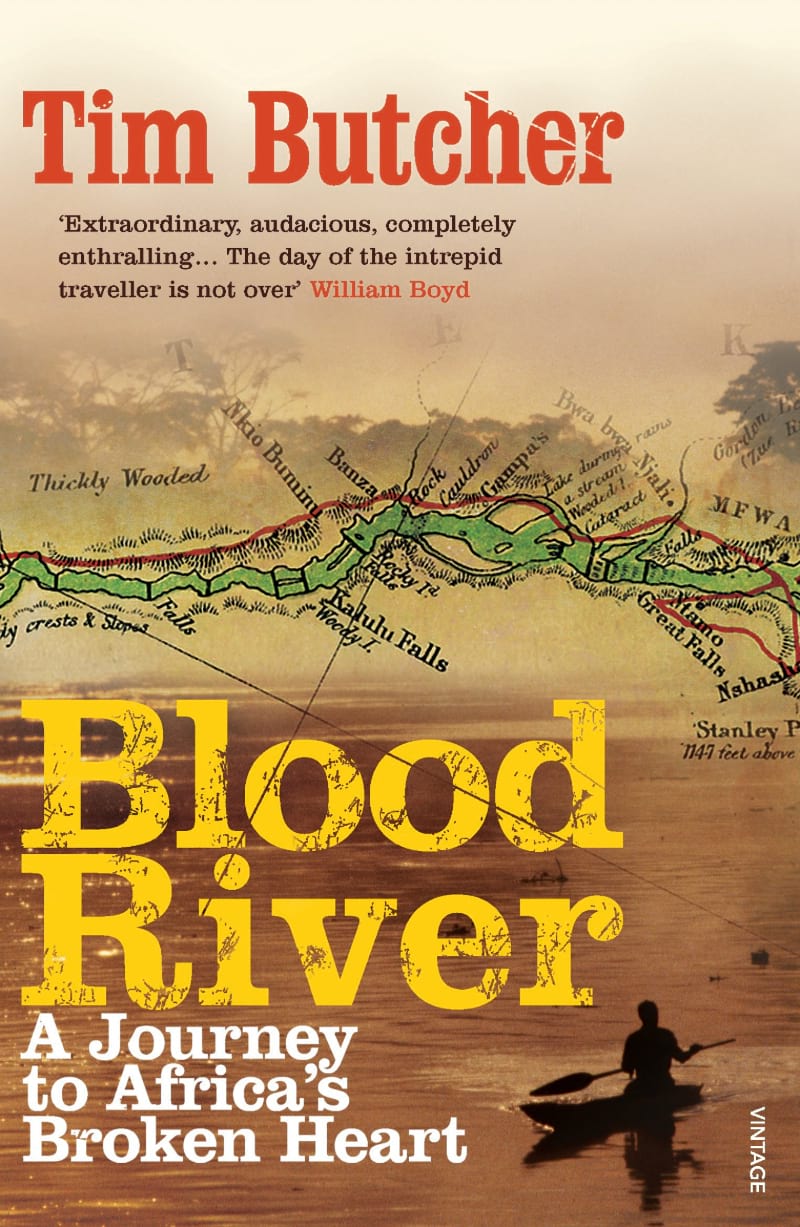
When Daily Telegraph correspondent Tim Butcher was sent to cover Africa in 2000 he quickly became obsessed with the idea of recreating H.M. Stanley’s famous expedition – but travelling alone.
Despite warnings that his plan was ‘suicidal’, Butcher set out for the Congo’s eastern border with just a rucksack and a few thousand dollars hidden in his boots.
Making his way in an assortment of vessels including a motorbike and a dugout canoe, helped along by a cast of characters from UN aid workers to a campaigning pygmy, he followed in the footsteps of the great Victorian adventurers. This is an epic book for anyone, but it’s epecially of of the best books to read while traveling alone.
#22 – Stranger in the Forest
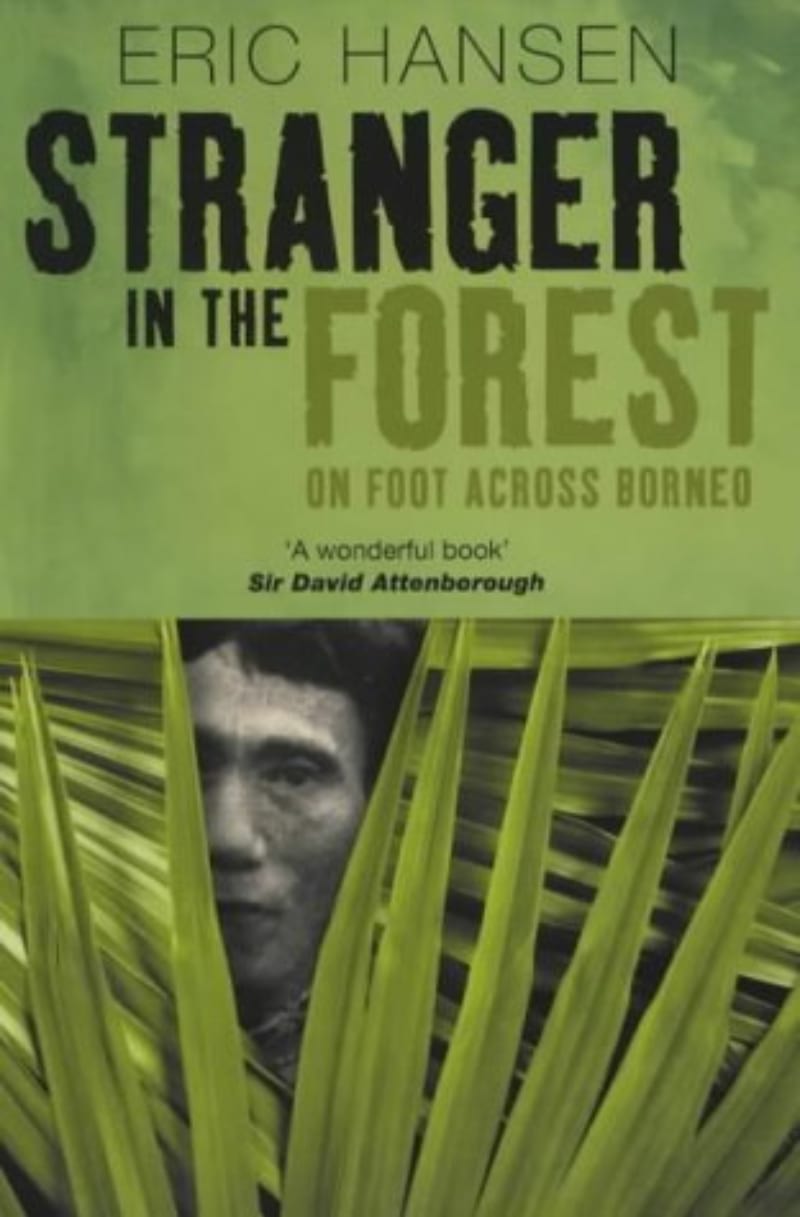
The best account of an adventure expedition that I have ever read. Stranger in the forest recounts the humorous story of the author’s travels in Borneo where he made lifelong friends with the Penan, jungle people who can catch fish with their feet, imitate the cry of the elusive barking deer, and survive in a fearsomely inhospitable environment.
With their help Hansen learned to hunt pigs, danced in the tribal rituals, discovered the eye watering nature of Penan sex aids and was given the ceremonial name “Rajah Kumis”: King of the Moustache.
He conveys how he came face to face with himself in the patch of map marked “un-surveyed”, and records the experience of living in a proud and ancient tribal community based on mutual respect. One of the most interesting books to read while travelling.
#23 – Absurdistan
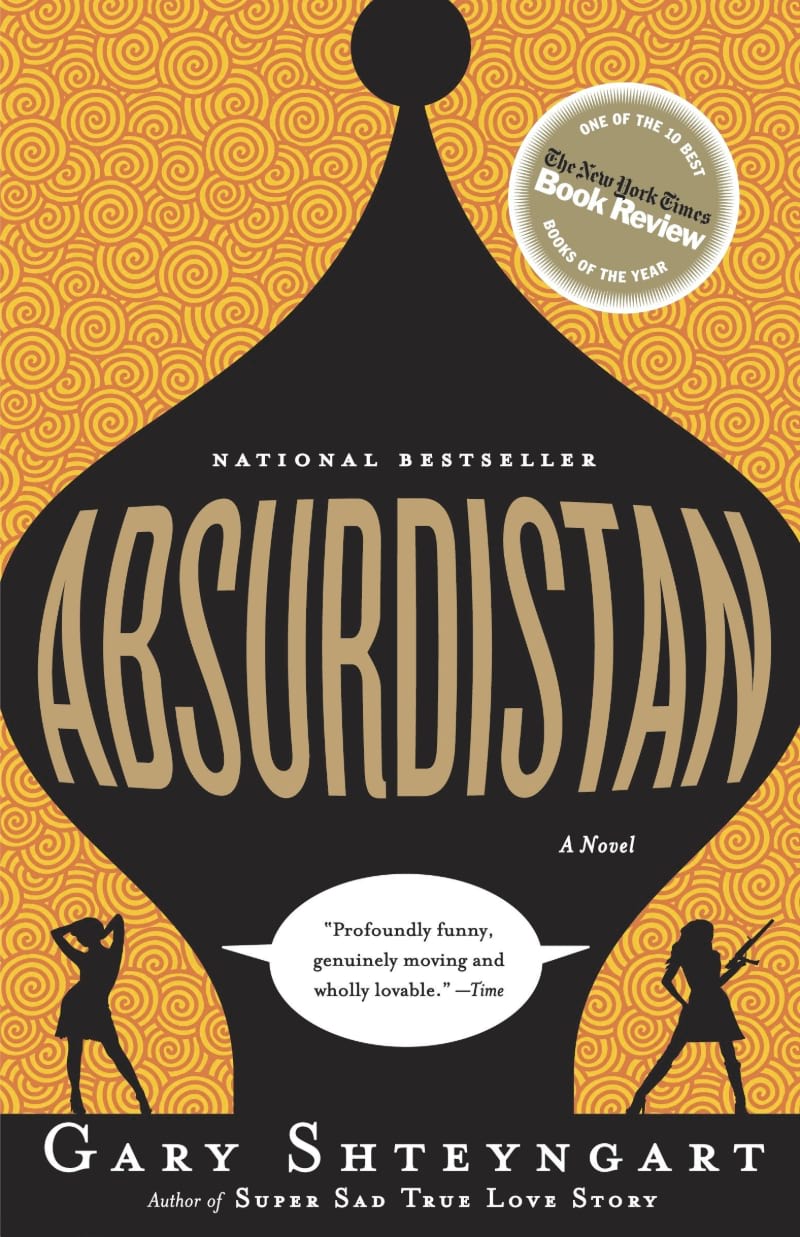
Award-winning foreign correspondent Eric Campbell has been stoned by fundamentalists, captured by US Special Forces, arrested in Serbia and threatened with expulsion from China.
He’s negotiated dating rituals in Moscow, shared a house with a charismatic mercenary in Kabul and taken up smoking at gunpoint in Kosovo.
#24 – Speed Bump Himalayas
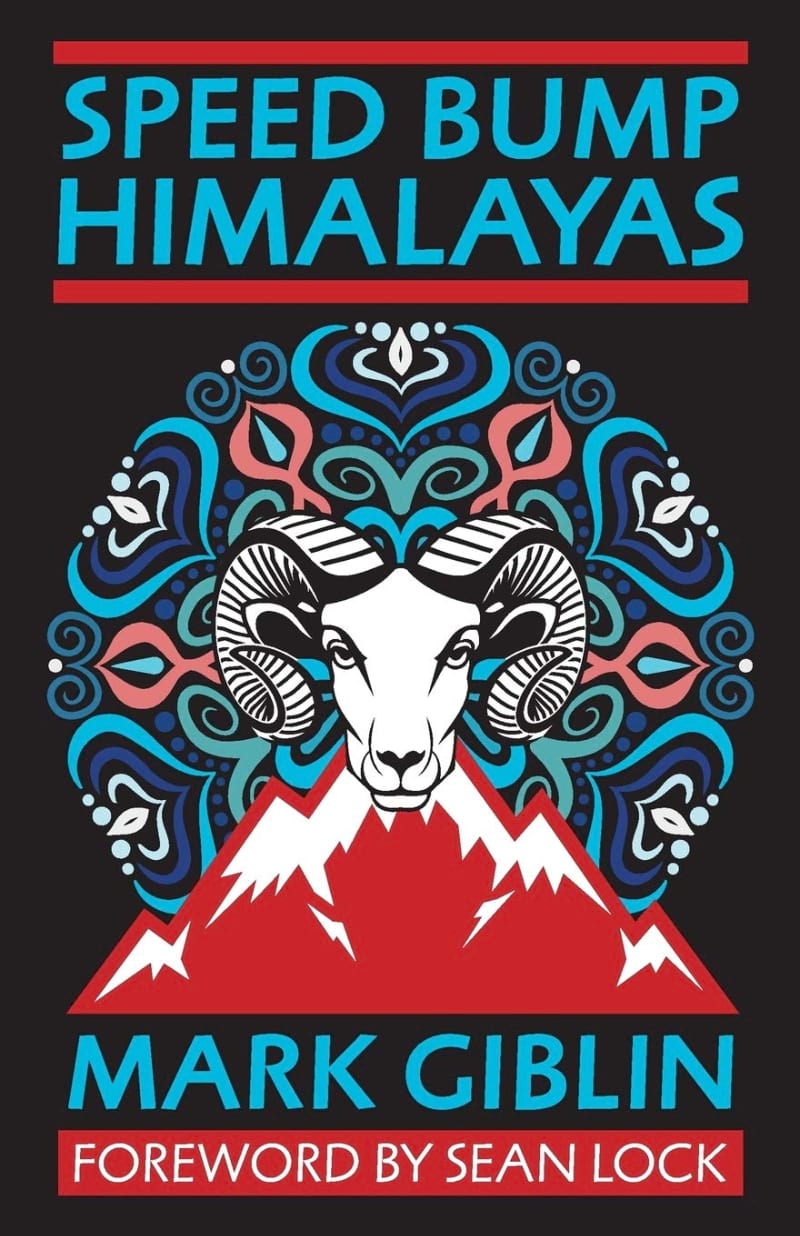
A hilarious and moving true story of trials and tribulations from a time before mobile phones ruined travel. Mark escapes dreary England in search of adventure and washes up in India with his buddy Sean in tow.
Together, they head into the mountains of Nepal on an ambitious trek but Mark is doomed from the start and embarks upon one of the longest survival journeys I have ever heard of… A rollercoaster ride of amusing cultural observations along the hippie trail, pure survival grit and living the nomad dream.
#25 – Travels on My Elephant
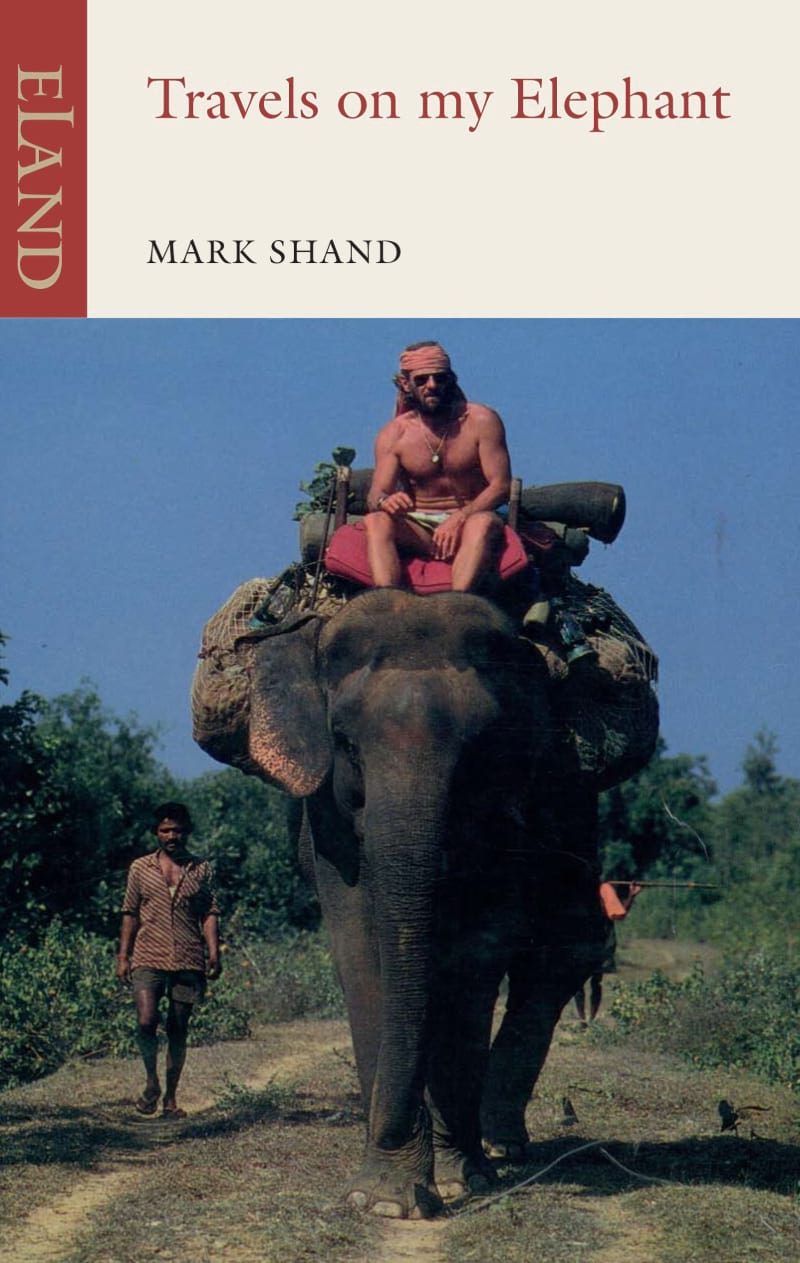
With the help of a Maratha nobleman, Mark Shand buys an elephant named Tara and rides her over six hundred miles across India to the Sonepur Mela, the world’s oldest elephant market.
From Bhim, a drink-racked mahout, Shand learned to ride and care for her. From his friend Aditya Patankar he learned Indian ways. And with Tara, his new companion, he fell in love.

Do You Want to Travel FOREVER??
Pop your email in below to get a FREE copy of ‘How to Travel the World on $10 a Day!’.
Need more inspiration? Here’s 25 more of the best travel books…
Faq about the best books to read while travelling, final thoughts, #26 – chasing the devil.
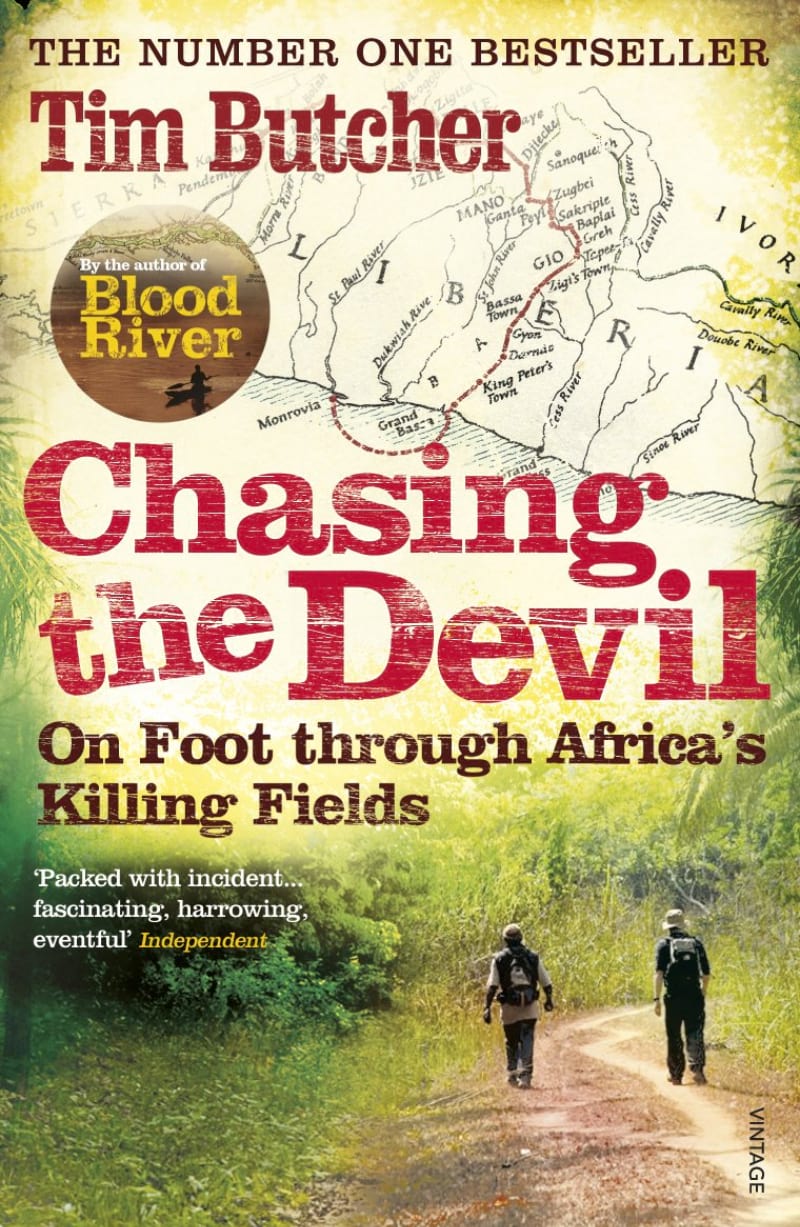
For many years, war made Sierra Leone and Liberia too dangerous for outsiders to travel through. Facing down demons from his time in Africa as a journalist, Tim Butcher heads deep into this combat zone, encountering the devastation wrought by lawless militia, child soldiers, brutal violence, blood diamonds and masked figures who guard the spiritual secrets of remote jungle communities.
#27 – A Walk in the Woods
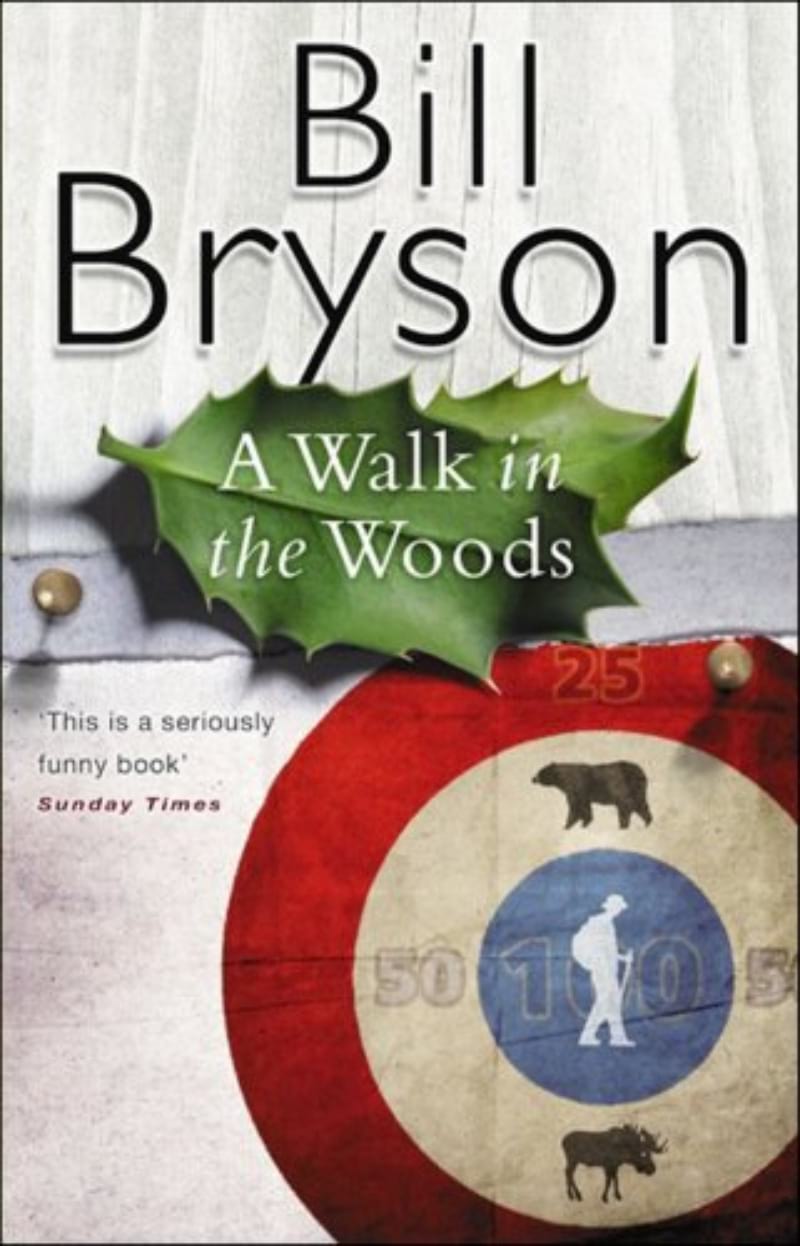
For those of you not familiar with Bill Bryson, he is point blank one of the most amusing travel writers out there. In this tale of walking and woe, Bryson attempts to traverse the Appalachian Trail, one of the longest continuous footpaths in the world which crosses tangled woods and heady peaks.
#28 – Royal Road to Romance
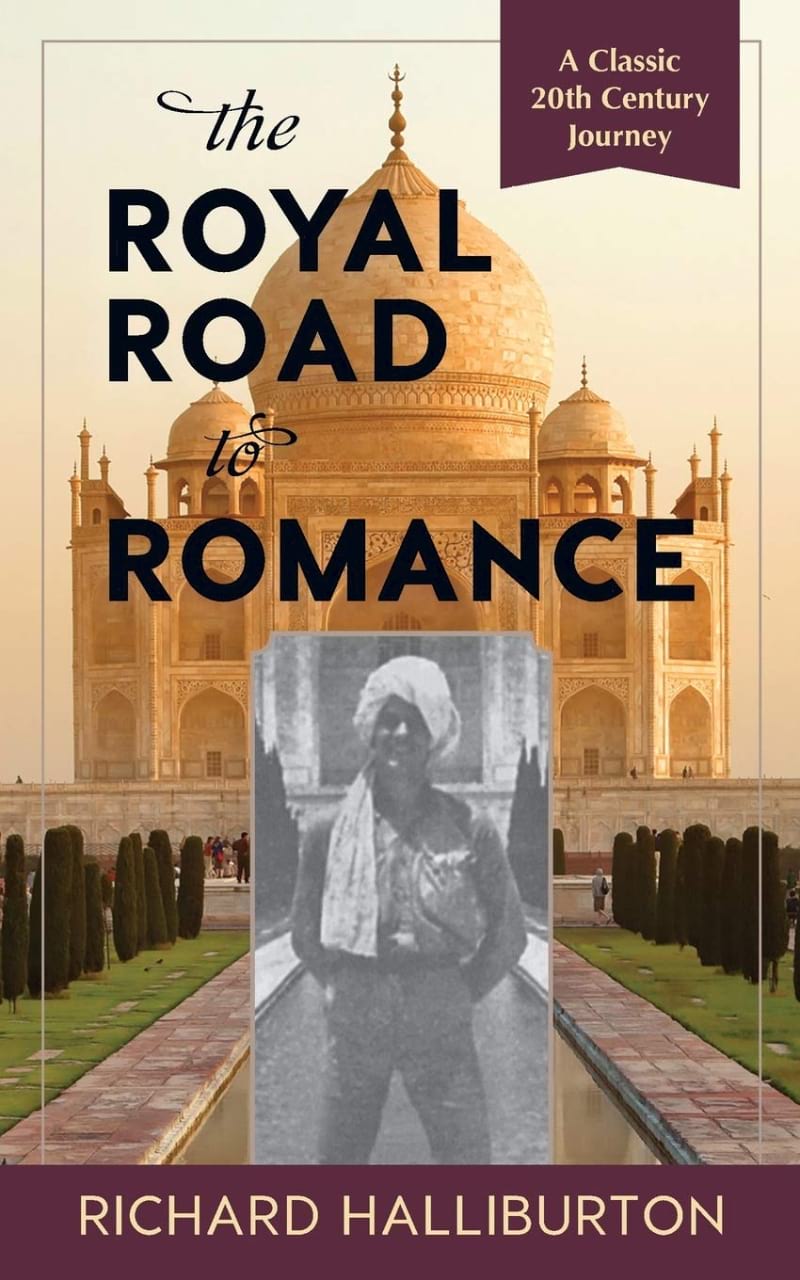
When Richard Halliburton graduated from college, he chose adventure over a career, travelling the world with almost no money. The Royal Road to Romance chronicles what happened as a result, from a breakthrough Matterhorn ascent to being jailed for taking forbidden pictures on Gibraltar.
#29 – The Great Railway Bazaar; By Train Through Asia
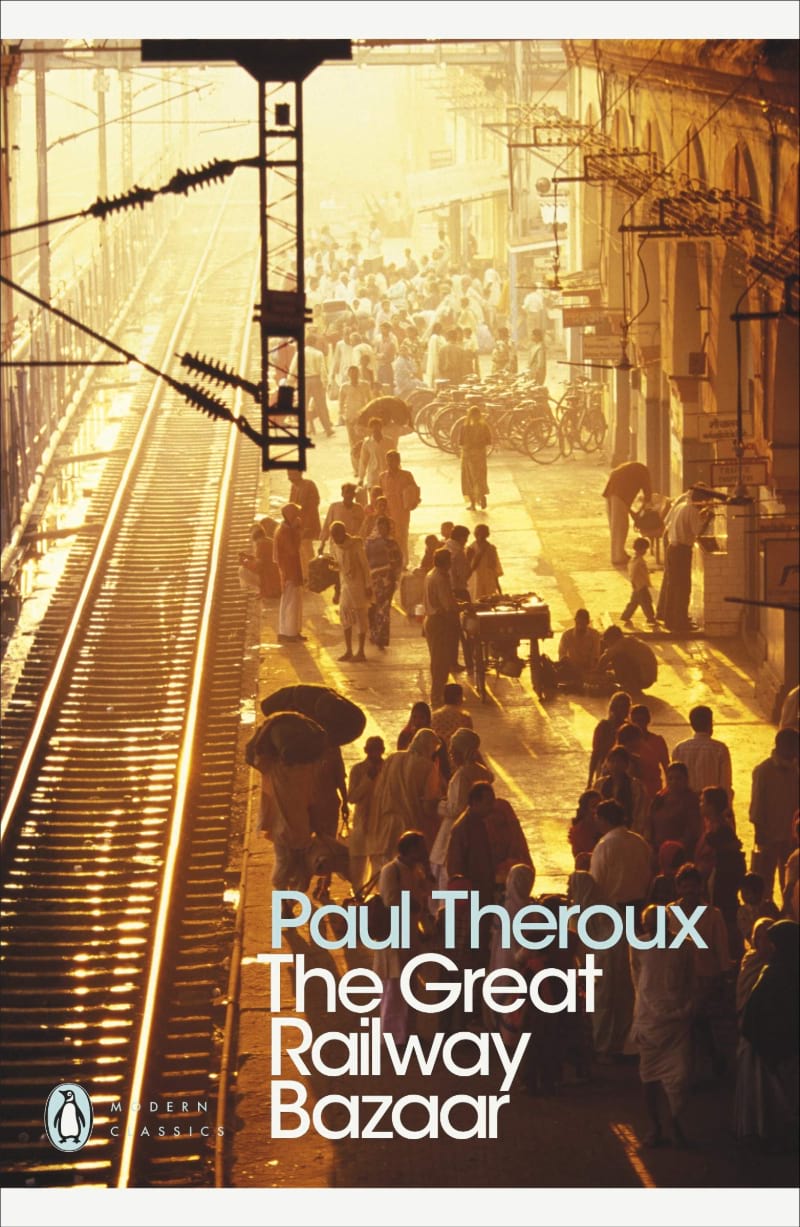
Paul Theroux’s account of his epic journey by rail through Asia. Filled with evocative names of legendary train routes – the Direct-Orient Express, the Khyber Pass Local, the Delhi Mail from Jaipur, the Golden Arrow to Kuala Lumpur, the Hikari Super Express to Kyoto and the Trans-Siberian Express – it describes the many places, cultures, sights and sounds he experienced and the fascinating people he met.
Here he overhears snippets of chat and occasional monologues, and is drawn into conversation with fellow passengers, from Molesworth, a British theatrical agent, and Sadik, a shabby Turkish tycoon, while avoiding the forceful approaches of pimps and drug dealers.
#30 – Just a Little Run Around the World
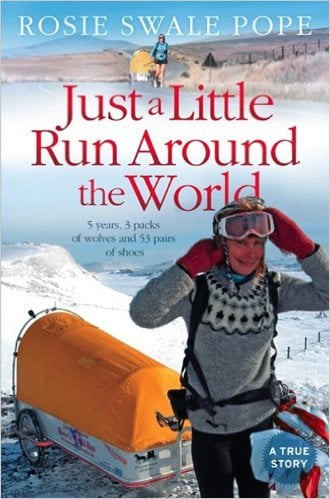
After her husband died of cancer, 57-year-old Rosie set off to run around the world, raising money in memory of the man she loved. Followed by wolves, knocked down by a bus, confronted by bears, chased by a naked man with a gun and stranded with severe frostbite, Rosie’s breathtaking 20,000-mile, 5 year, solo journey is as gripping as it is inspiring.
#31 – Black Lamb and Grey Falcon, A Journey Through Yugoslavia
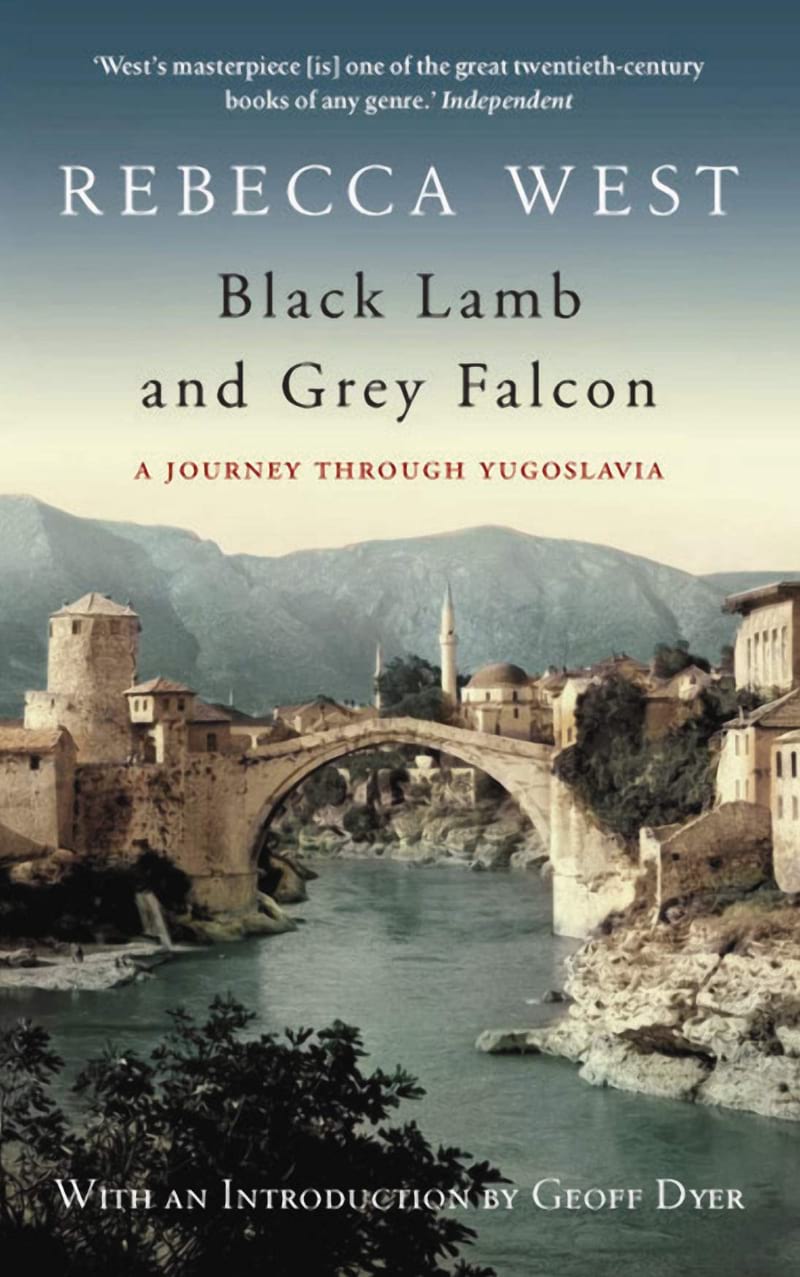
Rebecca West’s epic masterpiece is widely regarded as the most illuminating book to have been written in the former state of Yugoslavia. It is a work of enduring value that remains essential for anyone attempting to understand the enigmatic history of the Balkan states and the continuing friction in this fractured area of Europe.
#32 – Mad, Bad and Dangerous to Know

One of the first books I ever read about expedition-ing, I was inspired to start travelling and to get involved in trekking, climbing and rafting. Ranulph Fiennes has travelled to the most dangerous and inaccessible places on earth, almost died countless times, lost nearly half his fingers to frostbite, raised millions of pounds for charity and been awarded a polar medal and an OBE.
He has been an elite soldier, an athlete, a mountaineer, an explorer, a bestselling author and nearly replaced Sean Connery as James Bond. In his autobiography, he describes how he led expeditions all over the world and became the first person to travel to both poles on land.
He tells the tales of discovering the lost city of Ubar in Oman and attempting to walk solo and unsupported to the North Pole – the expedition that cost him several fingers, and very nearly his life.
#33 – The Worlds Most Dangerous Places
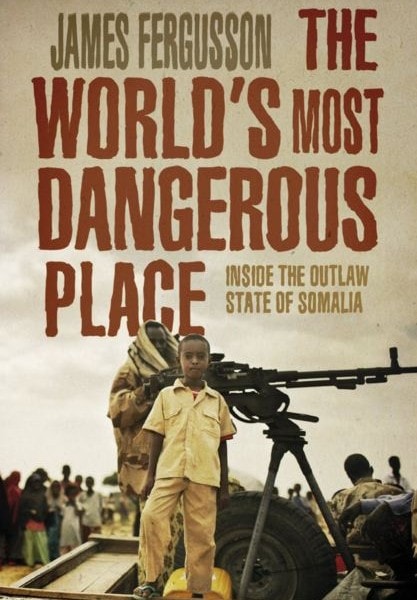
A serious read for the serious explorer, packed full of practical advice on how to travel in some of the world’s most dangerous places. Brace yourselves for one of the darkest books to read while travelling.
#34 – The Dharma Bums
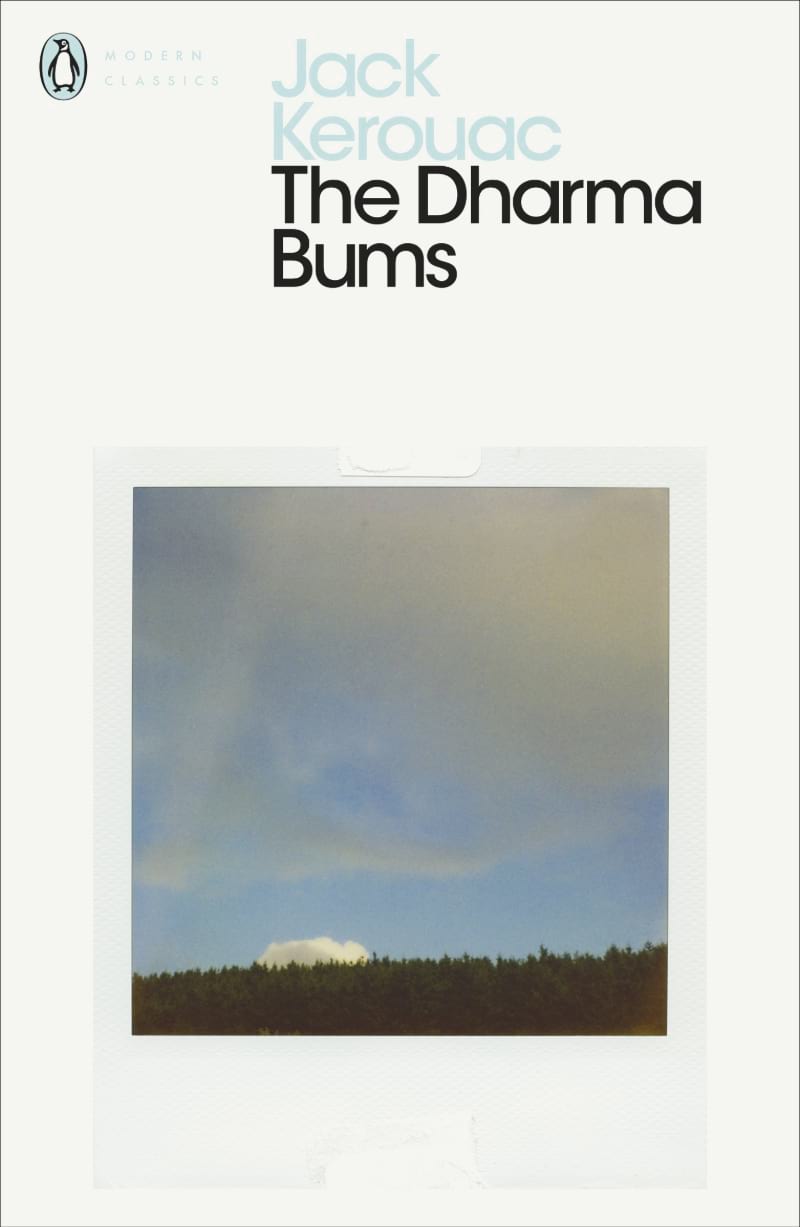
Another Kerouac classic, The Dharma Bums is a journey of self-discovery through the lens of Zen Buddhist thought. Essential reading for all aspiring explorers. Another MUST in the list of best books to read while travelling.
#35 – The Piano Tuner
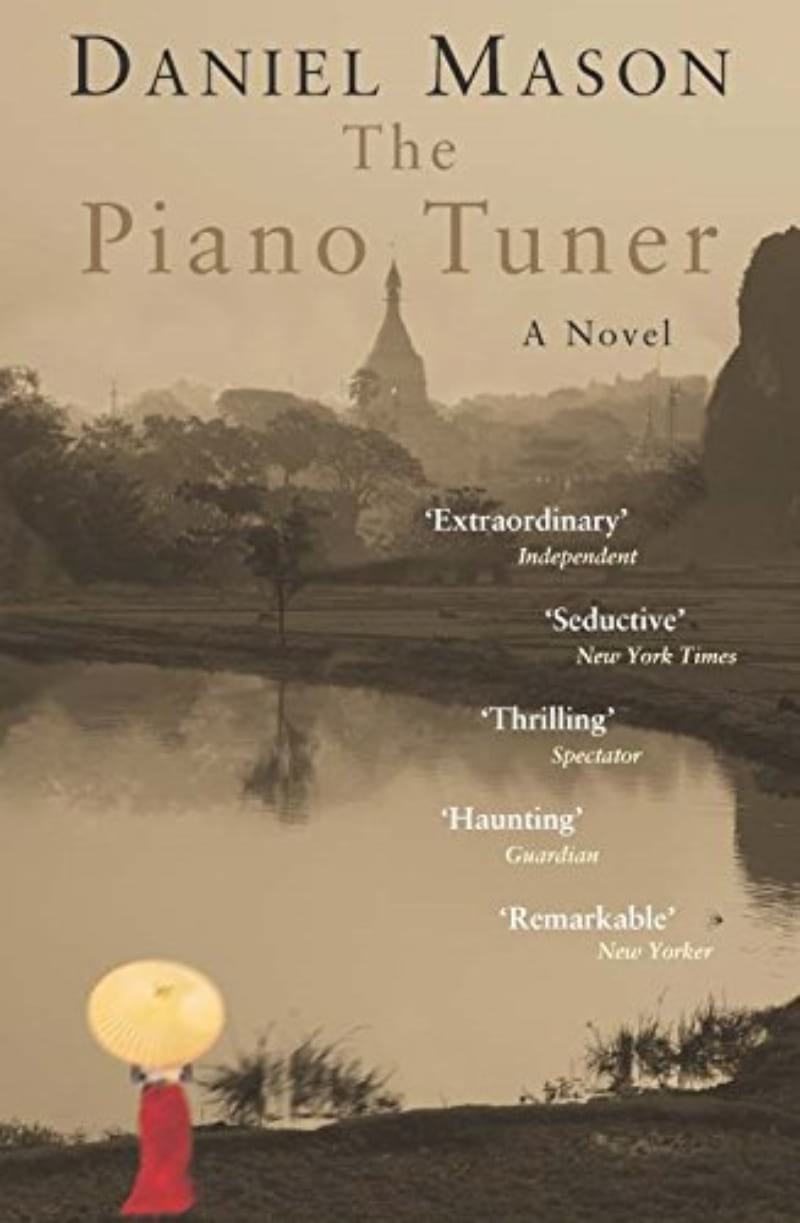
I read this whilst backpacking in Myanmar, it is beautifully written and enabled me to get a lot more out of my time in this stunning country. The story follows a quiet piano tuner, Edgar Drake, who is ordered by the War Office to travel to the jungles of Burma to tune a rare grand piano for an eccentric British officer renowned for his peace making methods in the war-torn Shan states.
#36 – Walking the Amazon: 860 Days
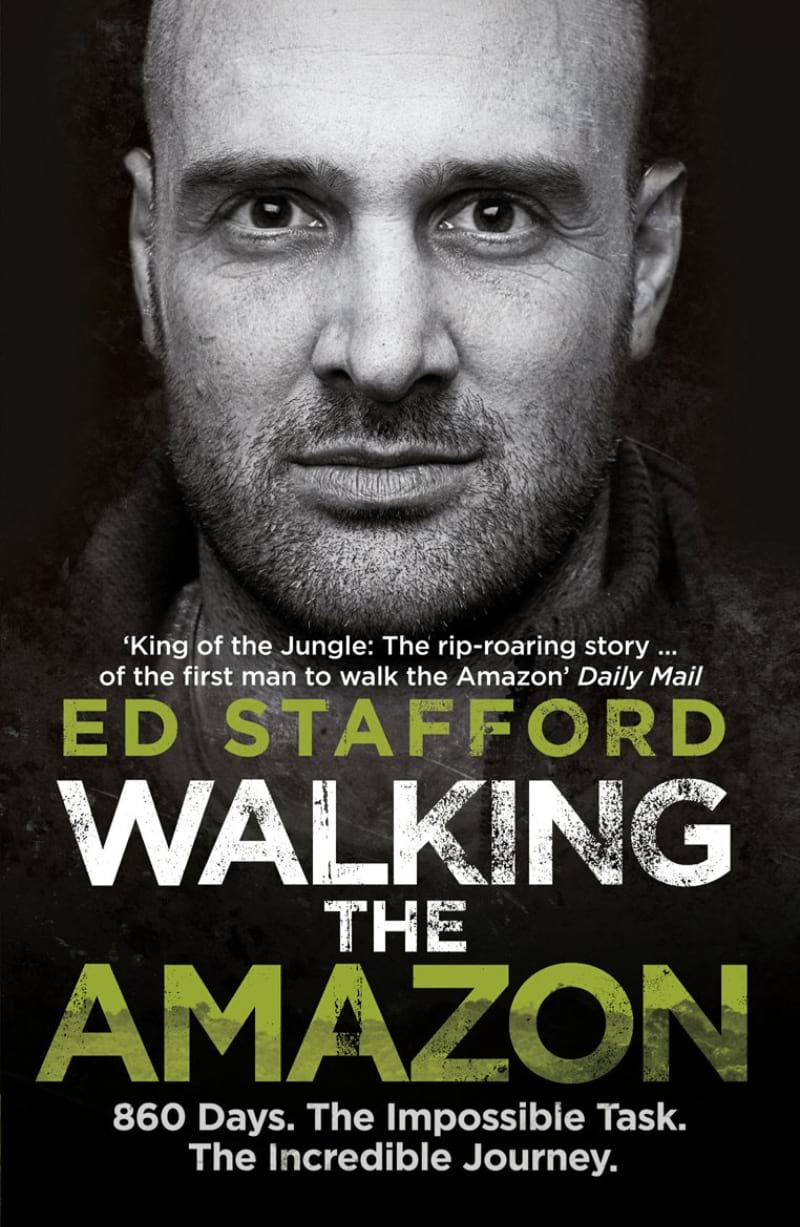
In April 2008, Ed Stafford began his attempt to become the first man ever to walk the entire length of the River Amazon. Nearly two and a half years later, he had crossed the whole of South America to reach the mouth of the colossal river.
With danger a constant companion – outwitting alligators, jaguars, pit vipers and electric eels, not to mention overcoming the hurdles of injuries and relentless tropical storms – Ed’s journey demanded extreme physical and mental strength.
Often warned by natives that he would die, Ed even found himself pursued by machete-wielding tribesmen and detained for murder.
#37 – The Carpet Wars
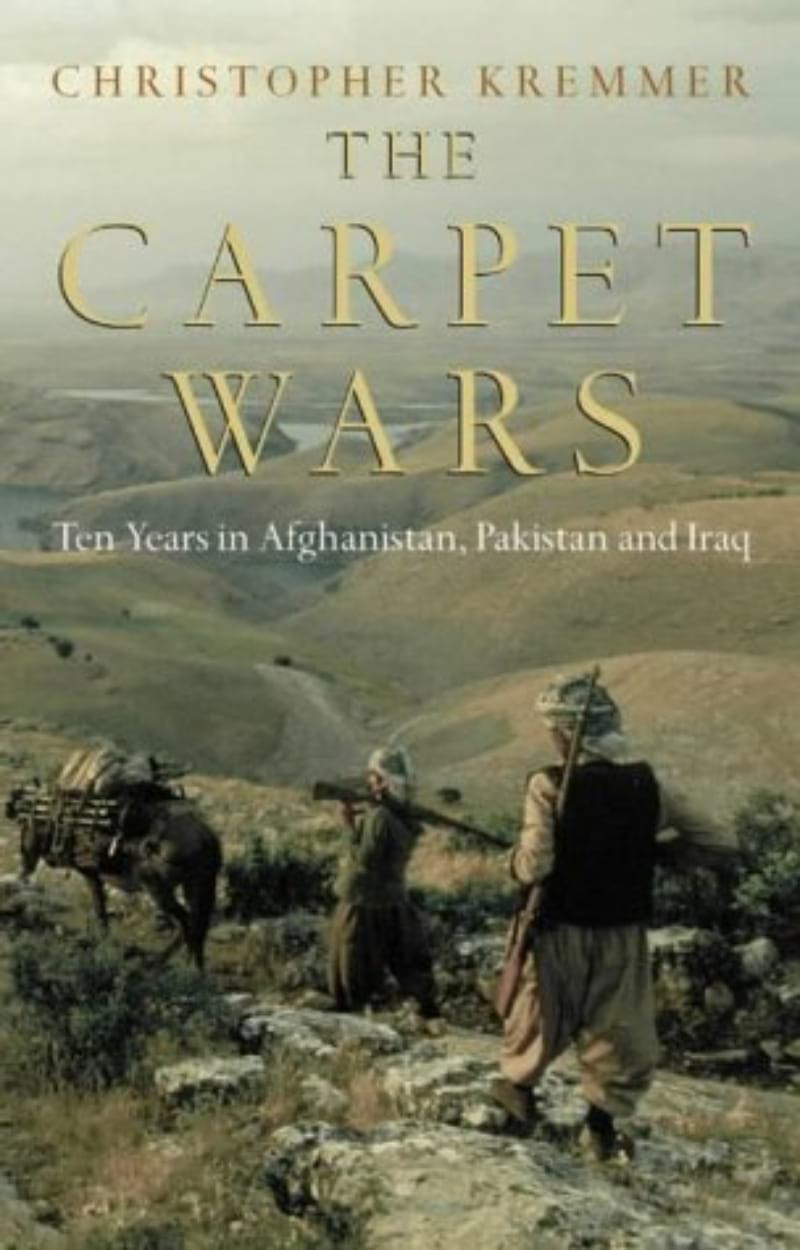
A personal odyssey through war, friendship and craftsmanship along the old Silk Route. A fascinating travel book that illuminates the contemporary story of southwest Asia and offers a unique insight into the characters of warlords, presidents and sheikhs.
#38 – The Wild Places
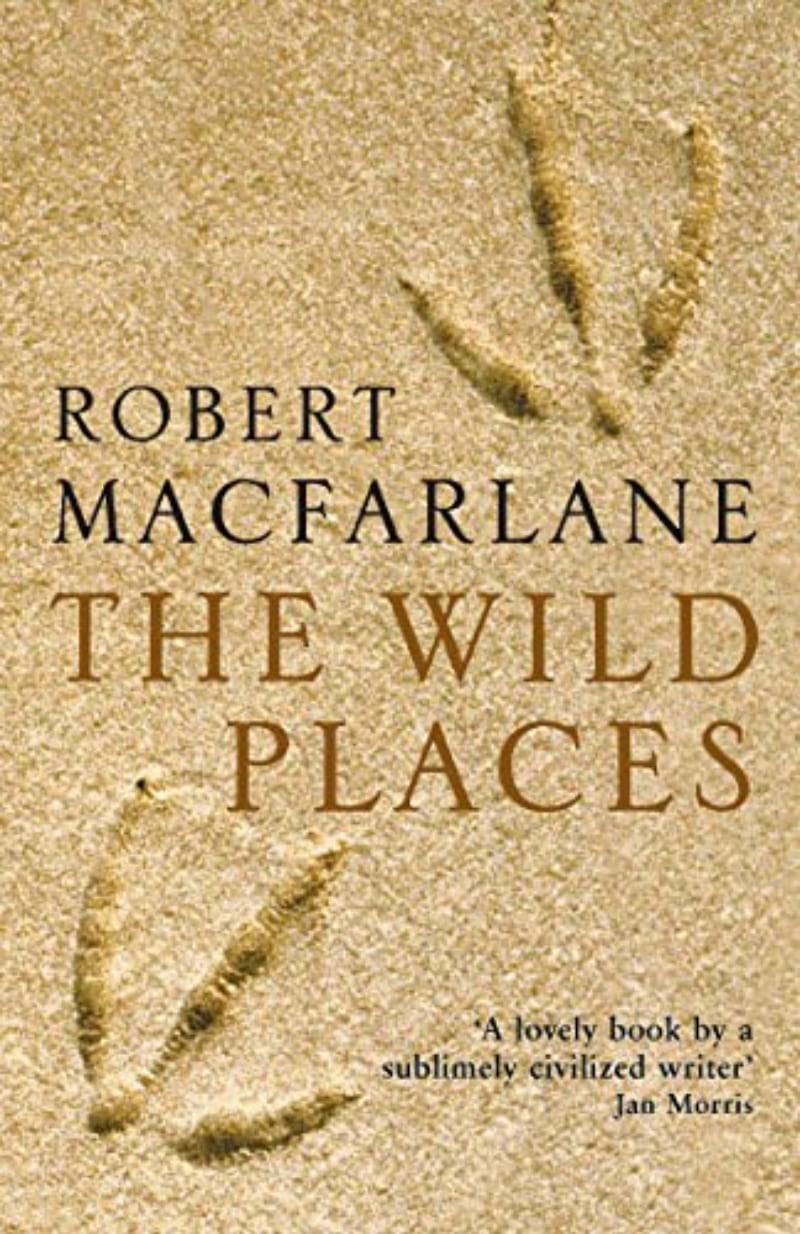
“The Wild Places” is both an intellectual and a physical journey, and Macfarlane travels in time as well as space. Guided by monks, questers, scientists, philosophers, poets and artists, both living and dead, he explores our changing ideas of the wild.
From the cliffs of Cape Wrath to the holloways of Dorset, the storm-beaches of Norfolk, the saltmarshes and estuaries of Essex, and the moors of Rannoch and the Pennines, his journeys become the conductors of people and cultures, past and present, who have had intense relationships with these places. One of the best books to read while travelling!
#39 – Extreme Survivors
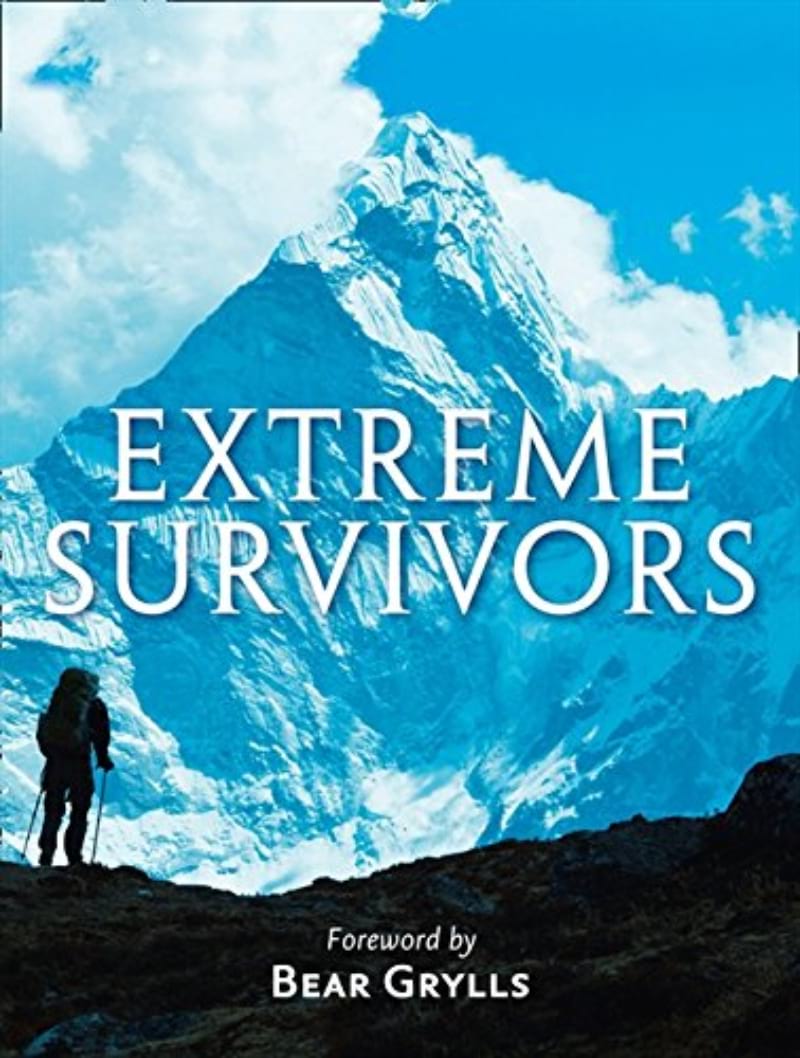
60 of the World’s most extreme survival stories. One of the scariest but best books to read while travelling. Plus it has a foreword by Bear Grylls!
#40 – Kon-Tiki, Across the Pacific by Raft
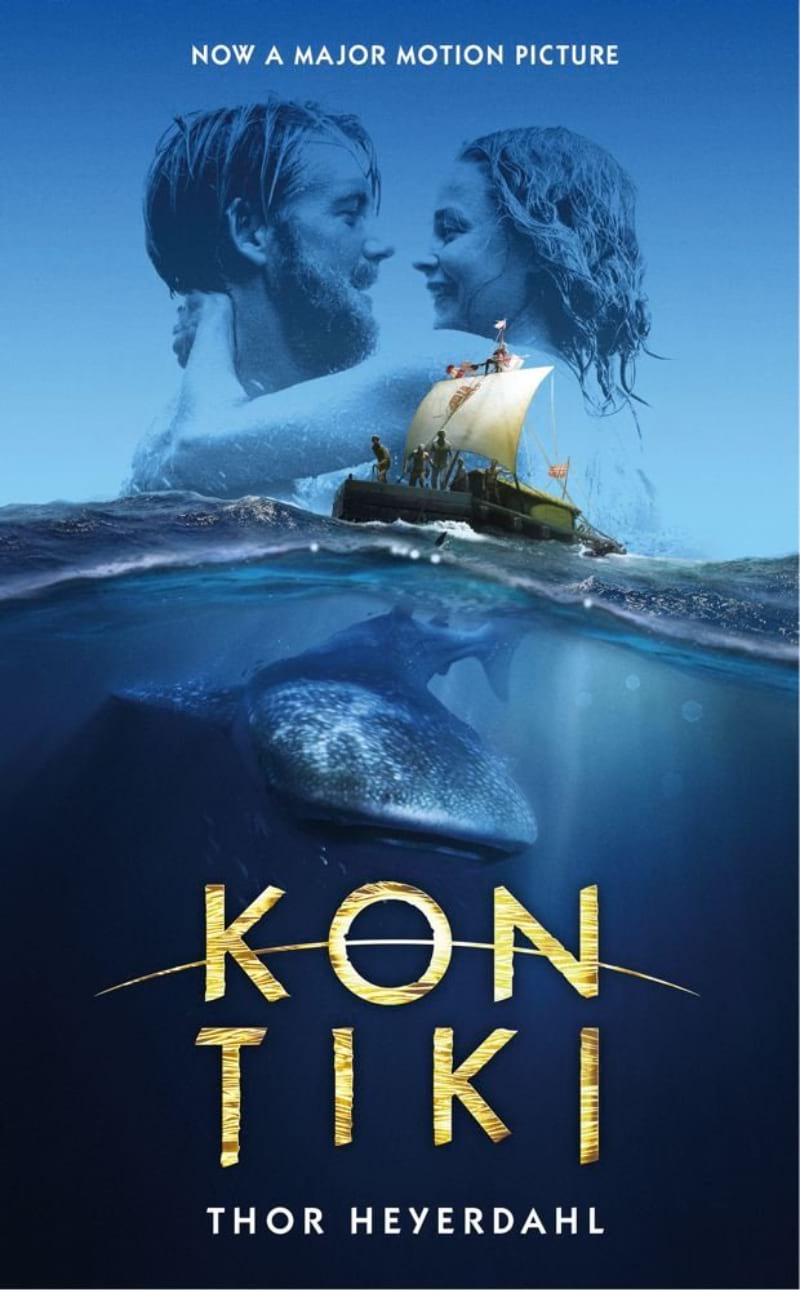
“Kon-Tiki” is the record of an astonishing adventure – a journey 4,300 nautical miles across the Pacific Ocean by raft. Intrigued by Polynesian folklore, biologist Thor Heyerdahl suspected that the South Sea Islands had been settled by an ancient race from thousands of miles to the east, led by the mythical hero Kon-Tiki.
He decided to prove his theory by duplicating the legendary voyage. On April 28, 1947, Heyerdahl and five other adventurers sailed from Peru on a balsa log raft. After three suspenseful months on the open sea, alone among raging storms, whales and countless sharks, they sighted land – the Polynesian island of Puka Puka.
#41 – Into the Wild
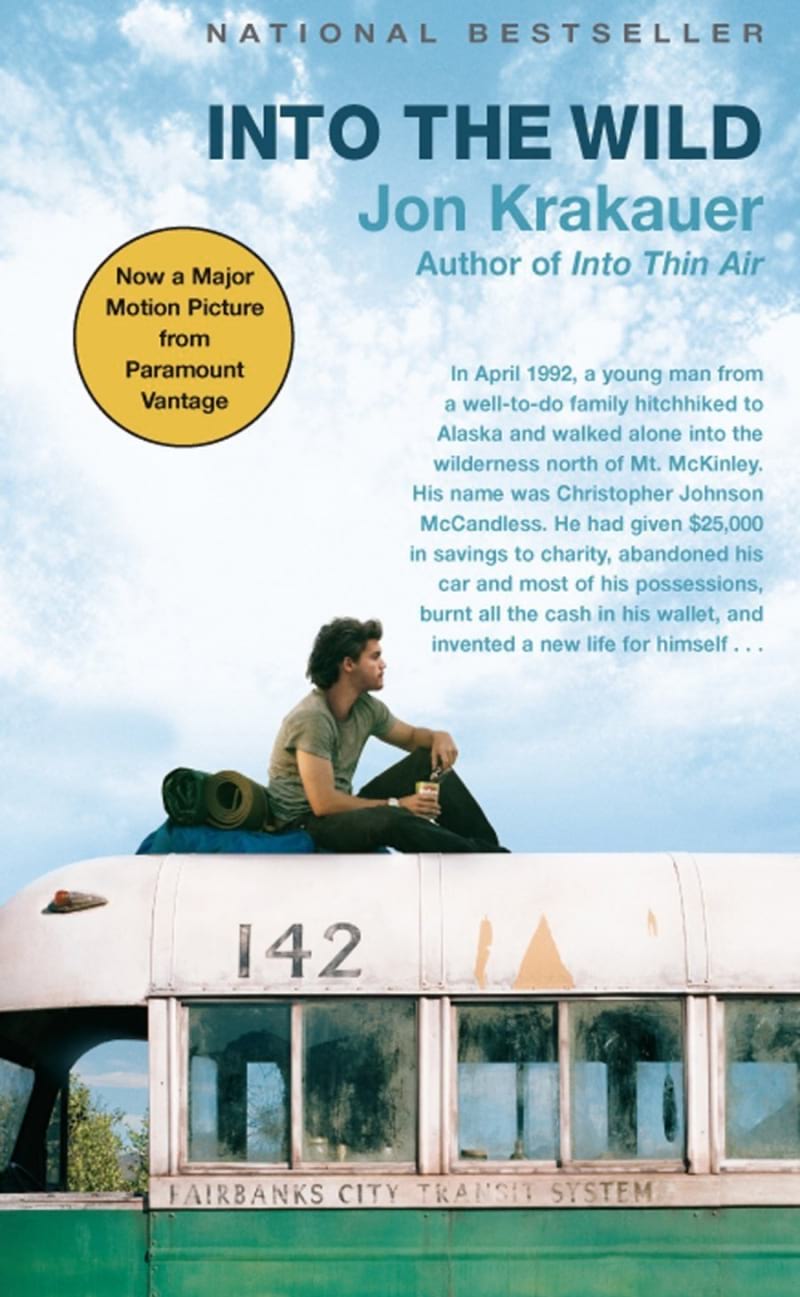
Perhaps one of the most popular books to read while travelling, although not one of my personal favourites. Into the Wild follows the true story of Chris McCandless, a young man who walked deep into the Alaskan wilderness in search of enlightenment. They also made a movie about it !
#42 – Honeymoon with my Brother
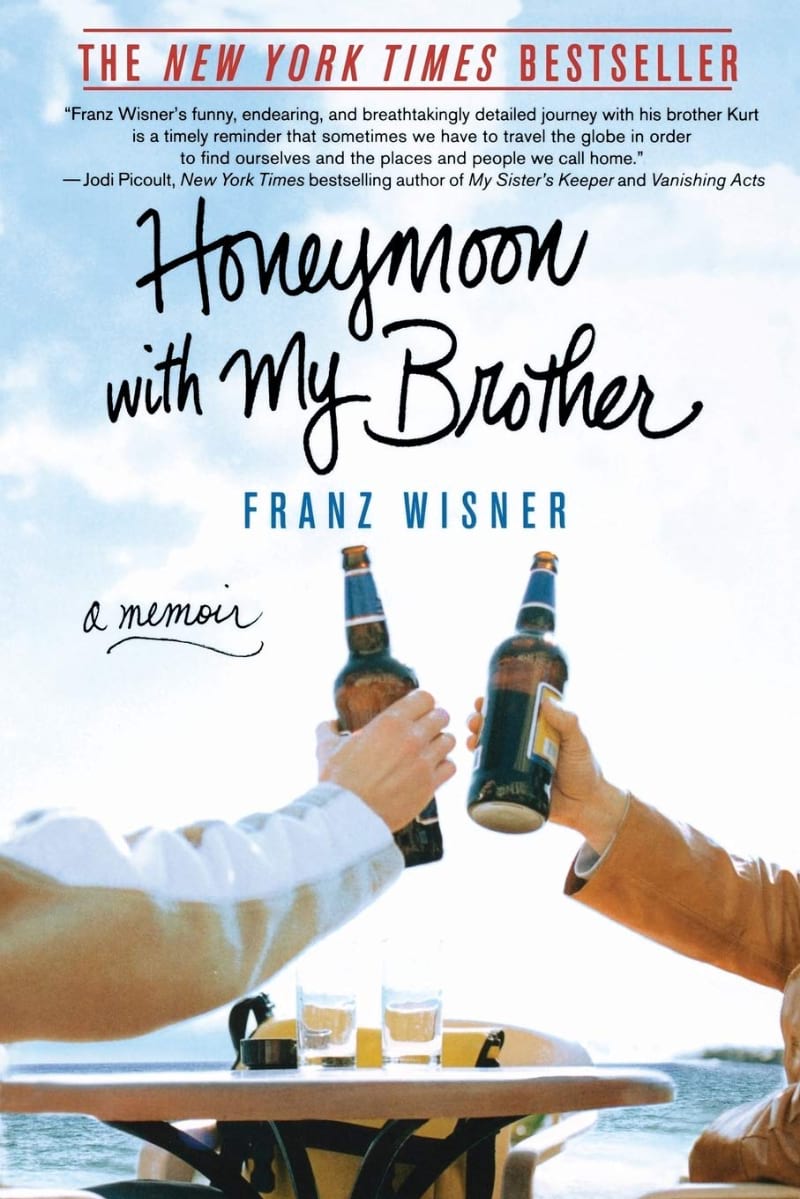
After being jilted at his wedding, the author heads off on his two-year, fifty-two country, honeymoon…. with a brother he barely knows. What follows is a series of emotional, amusing and unexpected adventures as the author battles to overcome his loss and reconnect with his brother. One of the most heart wrenching books to read while travelling.
#43 – Travels with Charley
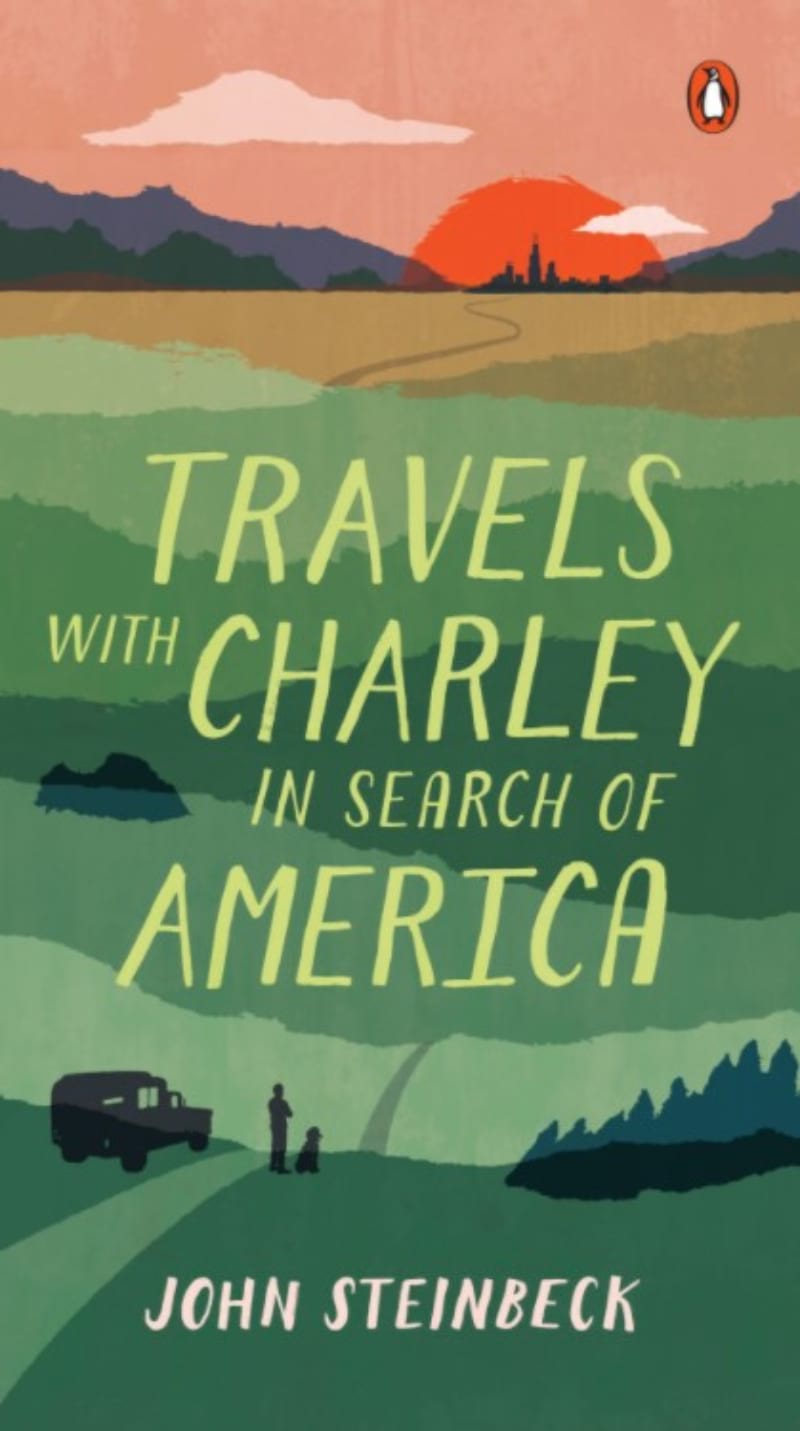
When he was almost sixty years old, worried that he might have lost touch with the sights, the sounds and the essence of America’s people, Steinbeck took note of his itchy feet and prepared to travel. He was accompanied by his French poodle, Charley, diplomat and watchdog, across the states of America from Maine to California.
Moving through the woods and deserts, dirt tracks and highways to large cities and glorious wildernesses, Steinbeck observed – with remarkable honesty and insight, with a humorous and sometimes sceptical eye – America, and the Americans who inhabited it. One of the most honest books to read while travelling.
#44 – The Alchemist
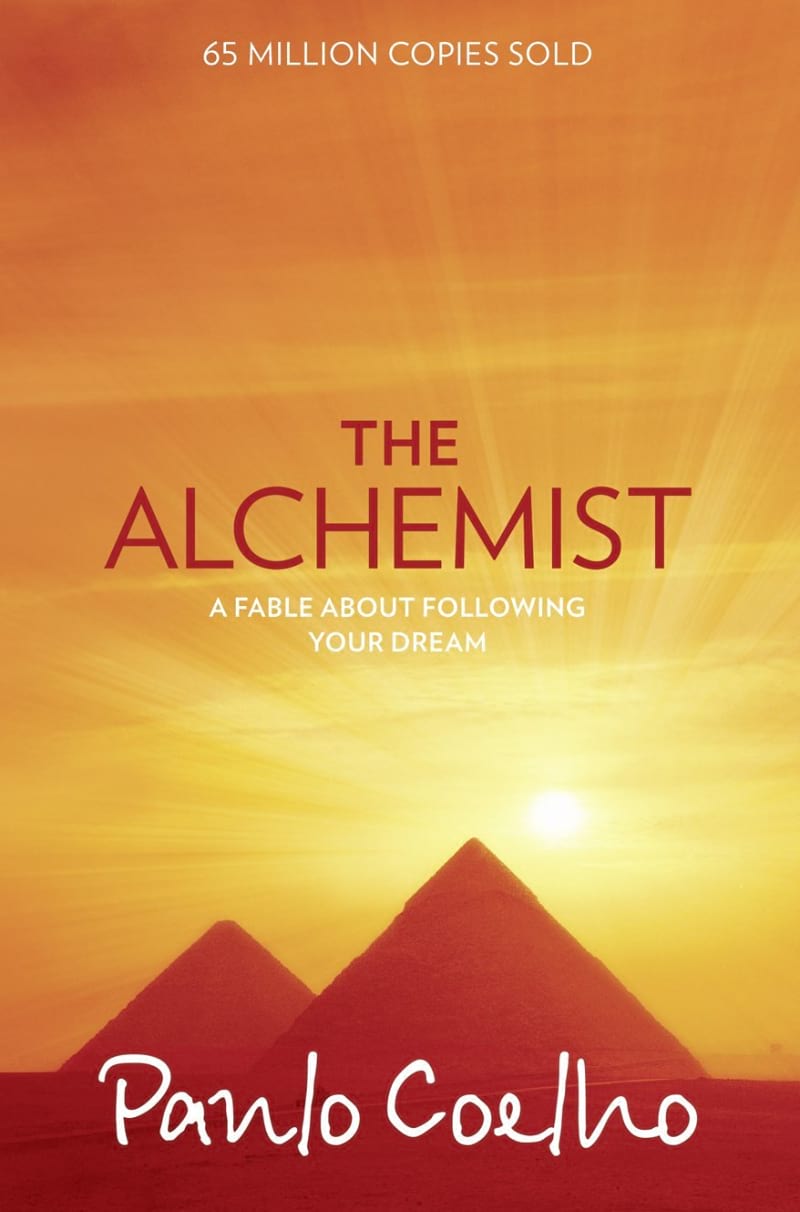
Santiago, a young shepherd living in the hills of Andalucia, feels that there is more to life than his humble home and his flock. One day he finds the courage to follow his dreams into distant lands, each step galvanised by the knowledge that he is following the right path: his own. The people he meets along the way, the things he sees and the wisdom he learns are life-changing.

Now, you could spend a fat chunk of $$$ on the WRONG present for someone. Wrong size hiking boots, wrong fit backpack, wrong shape sleeping bag… As any adventurer will tell you, gear is a personal choice.
So give the adventurer in your life the gift of convenience: buy them an REI Co-op gift card! REI is The Broke Backpacker’s retailer of choice for ALL things outdoors, and an REI gift card is the perfect present you can buy from them. And then you won’t have to keep the receipt. 😉
#45 – Siddhartha
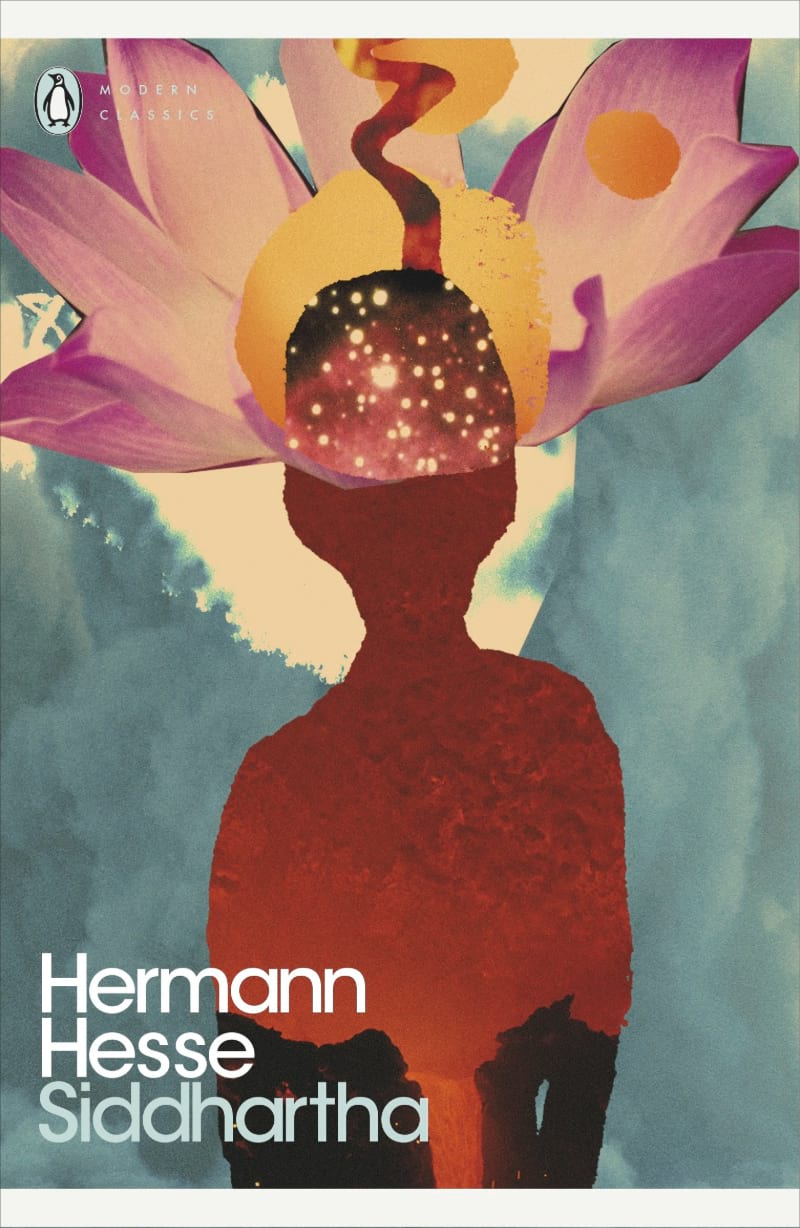
A travel classic, Siddhartha is perhaps the most important and compelling moral allegory our troubled century has produced. Integrating Eastern and Western spiritual traditions with psychoanalysis and philosophy, this strangely simple tale, written with a deep and moving empathy for humanity, has touched the lives of millions since its original publication in 1922. Set in India, Siddhartha is the story of a young Brahmin’s search for ultimate reality after meeting with the Buddha.
His quest takes him from a life of decadence to asceticism, from the illusory joys of sensual love with a beautiful courtesan, and of wealth and fame, to the painful struggles with his son and the ultimate wisdom of renunciation. Definitely, one of the most interesting books to read while travelling!
#46 – Full Tilt, Ireland to India with a Bicycle
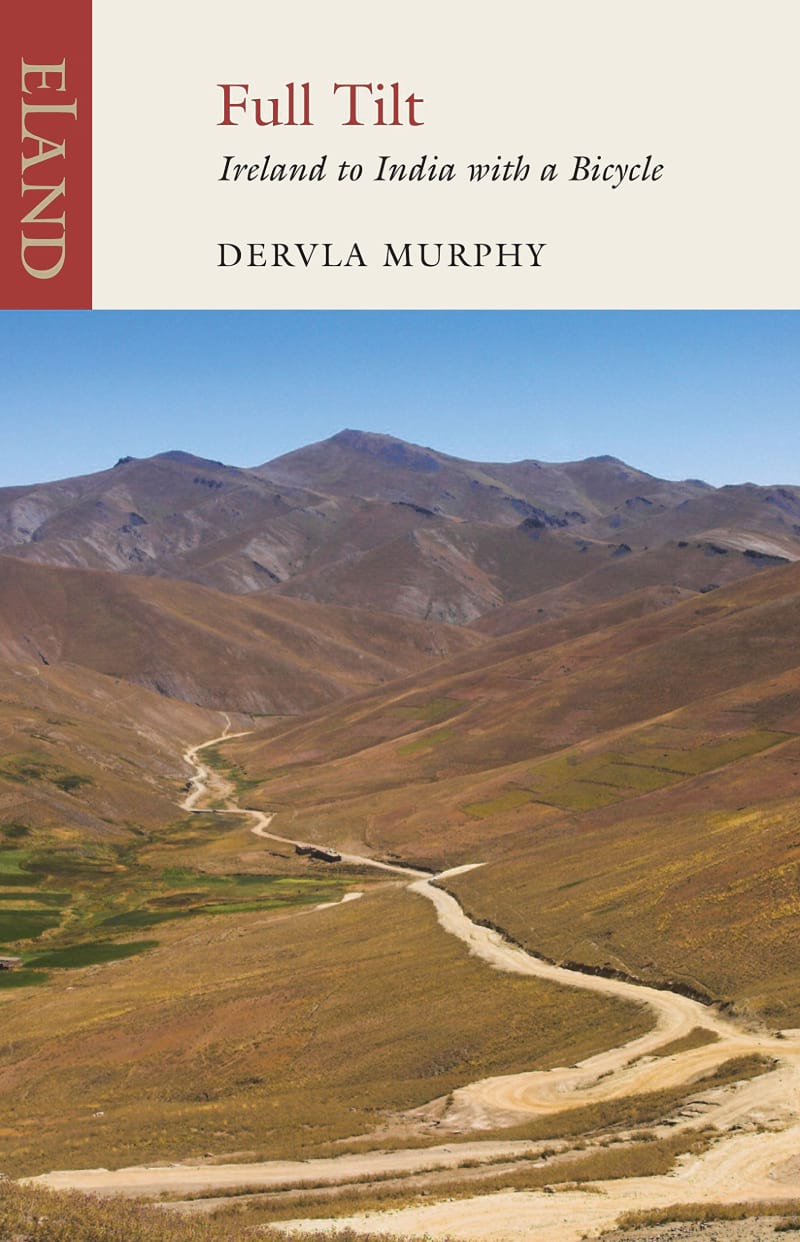
Shortly after her tenth birthday, Dervla Murphy decided to cycle to India. Almost 20 years later, she set out to achieve her ambition. Her epic journey began during the coldest winter in memory, taking her through Europe, Persia, Afghanistan , over the Himalayas to Pakistan, and into India. It’s one of the most epic books on backpacking through europe and beyond.
#47 – The Dogs of Nam: Stories from the Road and Lessons Learned Abroad
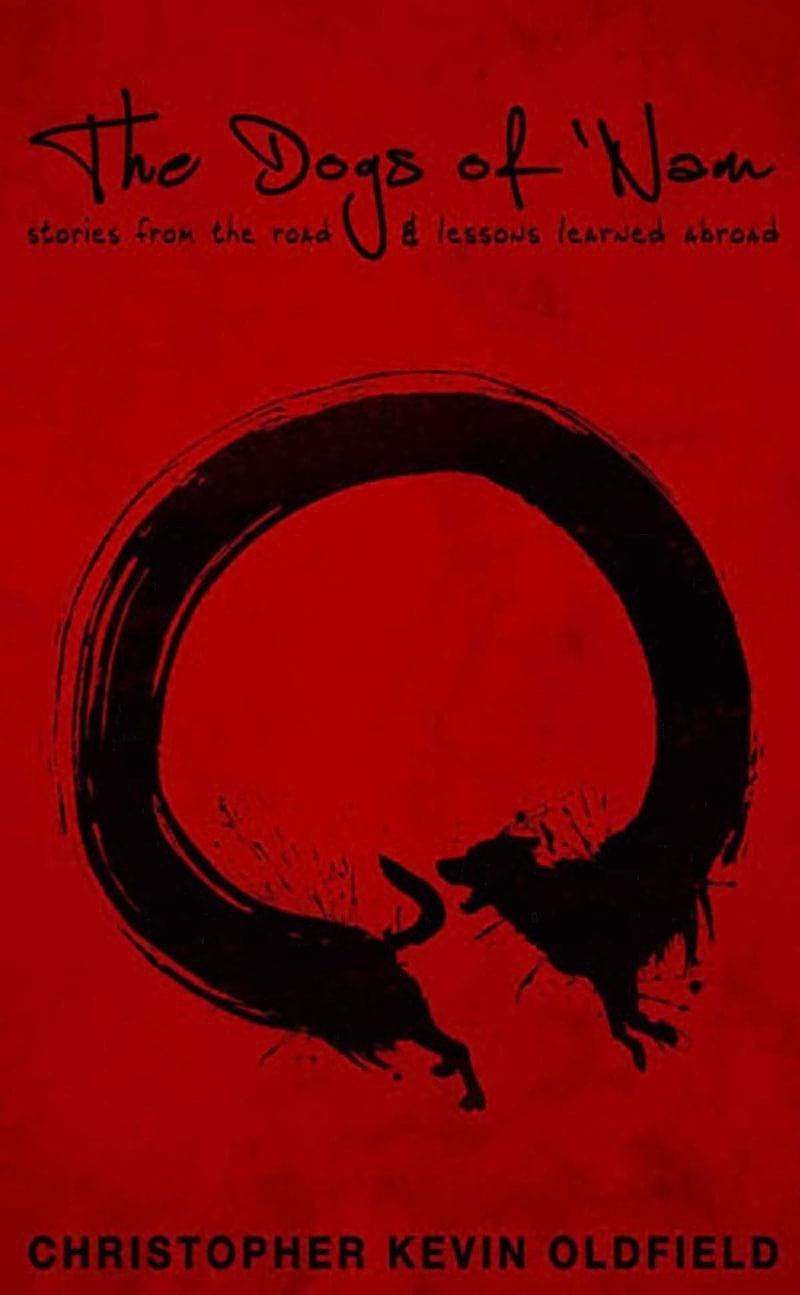
A collection of short stories from over a decade of travel. This is no glamorous tale of #wanderlust, but a true and honest accounting of what it means to be a traveller.
#48 – Dark Star Safari, Overland from Cairo to Cape Town
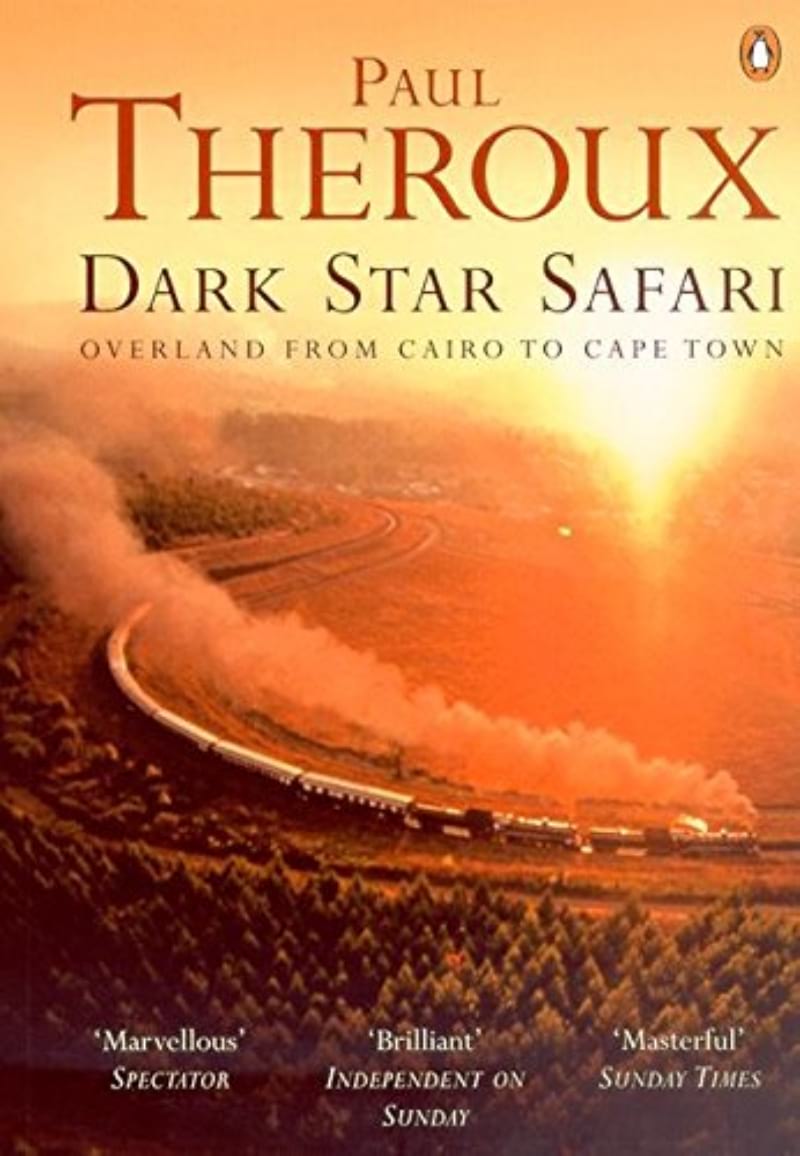
Travelling across bush and desert, down rivers and across lakes, and through country after country, Theroux visits some of the most beautiful landscapes on earth, and some of the most dangerous.
It is a journey of discovery and of rediscovery — of the unknown and the unexpected, but also of people and places he knew as a young and optimistic teacher forty years before.
#49 – 1491: New Revelations of the Americas Before Columbus
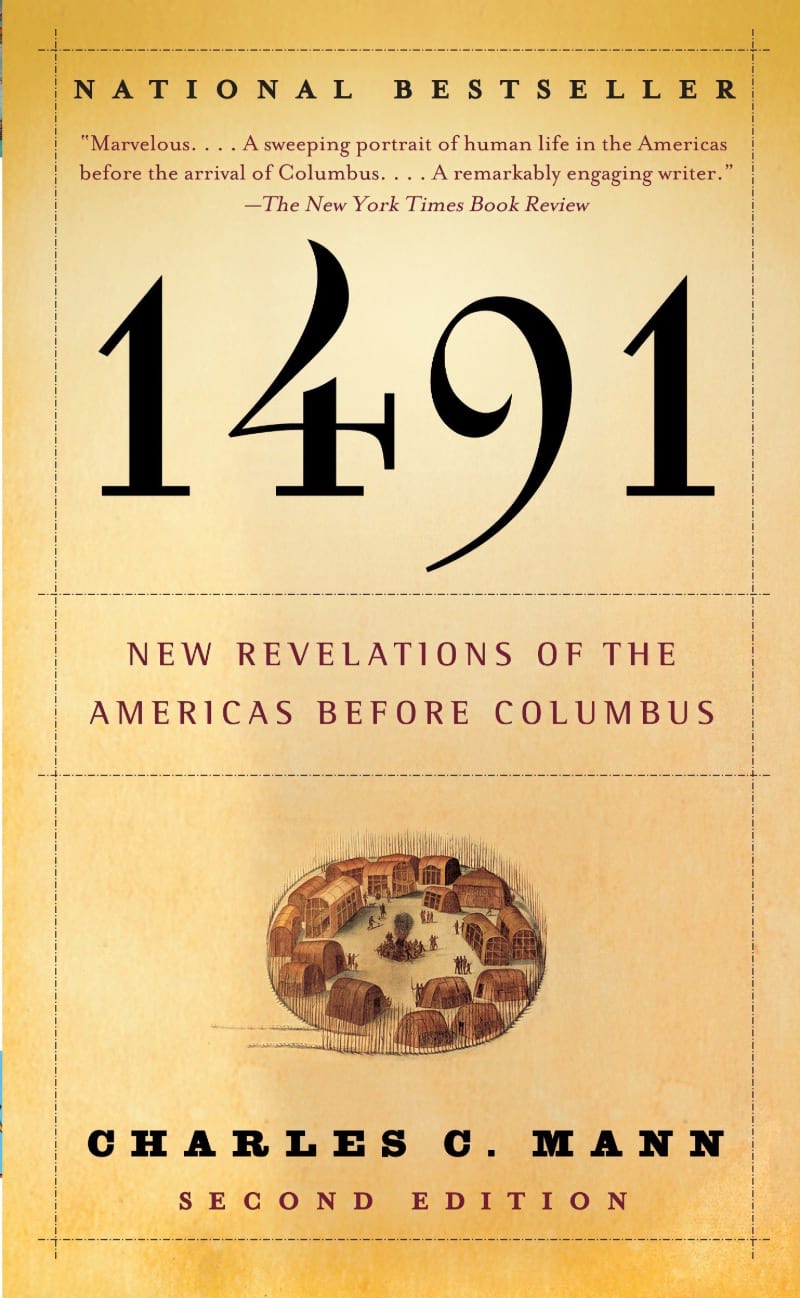
A great book to read while traveling the Americas because it corrects the incorrect history many were taught growing up.
Still have some questions? No problem! We’ve listed and answered the most commonly asked questions below. Here’s what people usually want to know:
What book would you take on a long journey?
The key is to choose a book that is absorbing but also relatively easy to read as your attention will often be divided. I always try to find a book relevant to the place I am visiting as it really helps me get into the trip!
Which book is very useful for travel?
A copy of the local Lonely Planet will usually come in useful and also be sure to pick up a copy of The Broke Backpackers Backpacker Bible which is full of money saving travel tips.
How do you travel with many books?
Books can be heavy and I dont like carying too many. I personally only carry 1 or 2 at a time and then swap them with other travellers. Alternativley, try a Kindle.
Is reading books good while Travelling?
So reading whilst literrally traveling on a bus or train can put some strain on your eyes. The key is to take frequence eye breaks and not to read too much for too long.

Our GREATEST Travel Secrets…
Pop your email here & get the original Broke Backpacker Bible for FREE.
So there you go! A great list of the best books to read while travelling. For even more reading inspiration, check out my buddy Chris’s new book What the Florida if you want to find the weird in Florida state!
My buddy James at Nomadic Note has put together another mammoth post on the best travel books to fuel your wanderlust, so check that out too if you’re looking for more of the best books to take on vacation.
If there are any I might have missed out, tell me in the comments section!

And for transparency’s sake, please know that some of the links in our content are affiliate links . That means that if you book your accommodation, buy your gear, or sort your insurance through our link, we earn a small commission (at no extra cost to you). That said, we only link to the gear we trust and never recommend services we don’t believe are up to scratch. Again, thank you!

Share or save this post
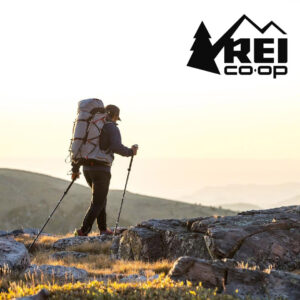
50 Comments
I thoroughly enjoyed the list and even sifted through comments to see if our reading tastes align. “The Dogs of Nam: Stories from the Road and Lessons Learned Abroad” is my favorite for long road trips.
I suppose that ‘Cambodia’ offers a captivating account of the nation, combining personal encounters with insightful analysis. Another must-read on my list is ‘The Motorcycle Diaries’ by Che Guevara. This travel classic takes readers on a journey through South America on a motorbike and is a constant presence on the list of best travel books. I enjoy reading it while traveling by train.
I miss traveling so much! As soon as things “go back to normal” a bit more I am heading to EUROPE! This is a great list and in the meantime I will definitely make due with good books about places that I can’t visit (just yet!). I read a super exciting thriller that takes place in the Greek Isles, U.S. and Europe that I thought did a fantastic job at making me feel like I was really there called “Cyclops Conspiracy” by author William McGinnis. It turns out that the author has a whitewater rafting company so when he describes sailing in Greece I could vividly picture it and even though the book is about terrorists smuggling in nuclear weapons this surprisingly scratched my itch for an international locale.
Curious, how do people usually read while travelling? A physical copy of the book or something like a Kindle? I, by far prefer reading physical books, though I wonder if second hand bookstores, book swapping, etc. with fellow travelers is a thing? On longer travels where I’d read more than 1 or 2 books, buying or carrying them with me is impractical. What do people usually do?
I also love a physical book, lots of places on the travel trail have second hand book stores and exchanges, still. If you’re in a particular area or country for a while, some book stores will buy the book back from you (tho for a lower price) if you keep it in good condition.
I’m late to this party, but readers might still appreciate the website Visit This Read That; a collaborative, crowd-sourced, effort, to determine what books best to read when visiting a place.
https://visitthisreadthat.com/
I would recommend Man Mission by Eytan Uliel, eytanuliel.com for his info. Got this for my husband who is not the biggest reader, just thought he might like it. He totally does, it’s clever and fun. He took it on a trip this week and said it’s hard not to want to just fly somewhere awesome and see it all!
This list is a treasure. Keep up the good work.
One of the greatest travellers of the modern era was Peter Penney who travelled mainly on foot with virtually no money. His travels took him from Europe to Australia on foot through Burma, right after WW2. His best books are “Dust on my shoes” and “Anywhere but here”. A not well known author Peter Penney has an innovative style of traveling with few resources, no passport and picking up food and money along the road. His playgrounds range from Africa which he traversed back and forth, Asia,the Pacific Islands, Australia, Papua New Guinea, etc. His books are a must read for anyone in love with travel, dry humour and adventure.
hey will, really liked your recommendations. however, just noted a small mistake, for the book absurdistan you are using the wrong book cover and the description is a straight copy paste from goodreads. I think for your readers (including me) it would be welcomed to hear about the book in your own words. Keep on doing what you are doing, I truly found your blog inspirational. Jan
Thanks Jan, I’ll look into that – some of these book descriptions were not added by me but my one of my other writers so maybe that’s the issue anyway 🙂
Will, it`s great list! love it.
about “The Alchemist” book…
This book was a life changing read for me. I was moved and spiritually uplifted by this remarkable story. I usually only read biographies and non-fiction stories, but this has become my favorite book because of the meaningful lessons that are taught throughout. I can’t say enough about this book other than the fact that my children will hear it over and over again and I believe every person should own this book.
Julie, https://www.julieannepeters.com/
Great recommendations here! I love a book that can help with my never-ending wanderlust. I have a historical fiction novel that should definitely be considered for this list called “The Jinn and The Sword” by authors Sara Cook and Robert Peacock. The book takes place during the 16th century imperial Ottoman court. There are some BEAUTIFUL descriptions of Istanbul and Venice. I really enjoyed the mental pictures the authors provided. Il Lupo, master swordswman, and his small posse crush an assassination attempt on the emperor and solve mysteries surrounding the theft of sacred relics. It is exciting, suspenseful, fun, and beautifully written. Check out the website for more info: http://www.thejinnandthesword.com/ Hope you will check it out!
I read “On the road” and was very impressed!
So many good books. Thank you for the list.
Ahhhh reading the Kite Runner in Pakistan = <3
Also, anything else by Khaled Hosseini, and The Alchemist are among my favourites!
I thought Shantaram was great, but frustrating in many ways…
‘Nice one Will!
I’ve read “Shantaram” a few times ‘cos it was just so inspiring and an exciting read! As well as “Just a Little Run Around the World.” I very much like the sound of “Honeymoon With My Brother: A Memoir.”
Have you ever read “Kevin and I in India” and “Rupee Millionaire” by Frank Kusy who is hilarious. In fact, I bought all his books! And “It’s on the Meter: One Taxi, Three Mates and 43,000 Miles of Misadventures around the World” a true story about three young British men who decide to travel the world in a London cabbie. It’s such a great read that not only did they make it, but they ended up breaking two world records along the way too!
I’ve read ‘its on the metre’, awesome book! 🙂
Good list mate. Shantaram and White Tiger enriched my experience in India for sure while of course Kerouac had a huge influence (Lonesome Traveller, Big Sur, Desolation Angels, Visions of Cody).. How about Jupiters Travels by Ted Simon.. he spends four years going 60,000 miles round the world on a Triumph in the 1970s. It’s epic and inspired me to travel in a big way. I read it twice. Also Ringolevio by Emmett Grogan, about the San Francisco Digger movement he helps put together after wild adventures in Europe. Good to see you spring back from that UK immigration dept pisstake and best of luck ….
Like you Will, I love to read books set in the country that I am travelling in. I love the feel of paper books but my kindle is more practical. I am looking forward to reading some of these from your list
Hi Will – A great list of books, many are personal favourites of mine. Would just like to add two follow up books of ones previously mentioned that might be of interset. Firstly, The Mountain Shadow, the follow up book to Shantaram (probably my favourite book). Obviously not as good as Shantaram but definitely worth a read. And secondly, Banco, the follow up book to Papillon, which details his adventures once he has found his freedom.
Will, if you didn’t know already, the film is out this year around April of Percy Fawcett and the lost city of Z. ,Was a great read and the film trailer looks awesome.
Holy shit but I did not know that, that is insanely exciting… thanks for telling me!
Can I add Marching Powder by Rusty Young for anyone going to Bolivia?!
Yes you most definitely can, epic book!
I am not fan reading while on travel, but I get interested with these books that you suggested. Gonna try this out.
Nice, a potential convert…happy reading on the road, Greg.
I love Bill Bryson! Check out Indonesian writer Agustinus Wibowo. His works have been translated into English. “Point Zero” is one of the best piece of travel literature I’ve ever read!
What a brilliant list! Some of the best books I’ve read and I imagine the rest are equally great. Thanks 🙂
Glad you like it, Jennie! More to come as I discover new favourites!
Great list – there’s lots I’m interested in reading. I completely disagree with Walking the Amazon, though. That book was very poorly written, which was so disappointing because it should be a fascinating story.
I would also suggest The Unconquered by Scott Wallace to learn about the uncontacted tribes in the Amazon. An incredible story.
For a book about South American, you can try to find ‘The Wizard of the Upper Amazon” which I read almost 40 years ago. About ayawasca and other jungle drugs.
Hi Will. Great site! Which book do you recommend to get ideas about places to visit? thanks 🙂
Hmmm… there’s a few around like ’50 places to visit before you die’ for example but really, it depends on what you want to see… I tend to do a bit of research online first and then simply pack my bag and head out on an adventure! 🙂
Hi – one of the books that inspired me when first travelling was Papillion – the tale of a French convict imprisoned on Devils Island off the coast of South America and his multiple escape attempts (sometimes to live with tribes in Venezuela) and solitary confinement for years on end. Also love the Tim Butcher books but my favourite African travel book is “Congo Journey” by Redmond O’Hanlon…he captures the Africa I know and love.
Papillion is now downloading to my kindle, it sounds absolutely awesome!! 🙂
there is also the film Dude, 1973 with Dustin Hoffman and Steve McQueen. You will probably love the bit when Stevie has to tattoo a tribesman using a mirror to copy the one on his chest. happy travels
I love this, a good book is so important on your travels! Which one is your favourite?
I always carry a copy of Illusions by Richard Bach…. Recently though, I read the Electric Cool Aid Acid Test – a great book, truly inspirational. I’m also a big fan of ‘Mad, Bad and Dangerous to Know’ – Rannulph Fiennes is my hero! 🙂
I’m loving this list. Some excellent reads for the road on there. I particularly liked the underrated Travels on my elephant By Mark Shand. But dude I have a couple of bones to pick with you … How can you not include Notes from a small island, the Bryson classic!?! Or a single William Dalrymple book?! Time to update the list dude!
Hi man! There is Dalrymple in there! He’s one of my favourite writers around, I popped in ‘Nine Lives’ – a great book! Hmmm, it appears I did indeed miss out a Byron classic but you can’t have everything man; 50 is a shatteringly small number when it comes to trying to put every decent book up! 🙂
So many great books! Thanks for sharing – my Amazon wishlist just got a whole lot longer 🙂
I have actually read some of these. Many more to add to my to-read list.
This list is AMAZING!! Now to just get my hands on some of these titles while I am on the road…. hmmm… 🙂
Thanks Lina!! I’m currently working my way through a whole bunch of books on South America! Any recommendations?
51: Jupiter’s Travels 52: Dreaming of Jupiter
Thanks for the list; have read about half of them so time to crack on with the rest!
Shantaram has got to be one of the best books I’ve read so far! Love your blog and sorry about the Nepalese monster 🙂
Cheers Eve! I love Shantaram, I read it right before I headed to India and it somehow prepared me! Regarding the Nepalese monster… I still have the scar to tell of my tale down the pub!
I recently found the White Tiger on a book swap shelf. It’s such a great book!
I just discovered your blog today and have been really enjoying reading back though your articles. Thanks!
The white tiger was one of the first books I read whilst backpacking in India, it’s awesome -really describes the country well! Have you been to India yet?
Leave a Reply Cancel reply
Your email address will not be published. Required fields are marked *
Save my name, email, and website in this browser for the next time I comment.
Notify me of followup comments via e-mail.

Best books about gardens to read in 2024
The art of gardening has existed for as long as human beings have been able to cultivate the earth.
From ancient Mesopotamian civilisations to the groundskeepers of royal households throughout history, gardens simultaneously represent the power to provide sustenance and the awe-inspiring power of the natural world. Taming and controlling nature reflect a fascinating ability to be at one with the forces that allow our planet to exist.
Gardens have long been a metaphor for paradise. It’s no wonder, then, that we as a society consider well-kept botanical gardens, green spaces and personal allotments revered spaces.
Perhaps our desire to explore the magnificent gardens of Kew and Versailles reflects an inner desire to return to antediluvian peace. Yet with cross-dimensional time travel out of the question and nil ability to fly-kick that apple out of Eve’s hand, we must make do instead with the very real, marvellously beautiful gardens of the contemporary world.
Whether it be the personal gardens of individuals or public gardens attached to stately homes and kitchens, pieces of kept land have inspired writers and artists for centuries.
From Monet’s Giverny garden, which gave the world paintings like The Water-Lily Pond, to the gardens of Great Maytham Hall which are believed to have inspired Frances Hodgson Burnett’s The Secret Garden, we have nature to thank for much of the world’s most prized works.
We’ve curated a selection of the best books about gardens for those who may not necessarily have a natural green thumb, but greatly appreciate all shades of nature’s beauty. Keep scrolling to get lost in botanical houses and arboretums.
The Secret Garden by Frances Hodgson Burnett
Whether read this book as a child or an adult, there’s nothing quite like the sense of mystical wonder evoked in Burnett’s beloved novel. The Secret Garden is the story of a young girl named Mary Lennox who, after losing her parents, must leave India to live in her uncle’s mansion on the wild English moors.
Lonely and confined to the grounds of her uncle’s abode, Mary one day discovers a key hidden in a flowerbed which leads her to a hidden door. Once she turns the key in the lock, Mary discovers a bucolic paradise that should only exist in dreams.
Buy now £13.17, Amazon
In the Garden: Essays on Nature and Growing
In this wonderful collection of essays, fourteen writers share the ways in which you needn’t have access to a garden in order to become a gardener. With pieces that touch on the shared language of gardening and nature, as well as short treatises on the radical power of communal gardens, it’s a self-reflective read which is perfect for the spring and summertime.
Buy now £9.19, Amazon
The Writer's Garden by Jackie Bennett
Illustrated with specially commissioned photography by Richard Hanson, Jackie Bennett’s The Writer’s Garden details the botanical gardens, vegetable plots, rolling hills and hermitages belonging to 30 of the world’s greatest authors. From Louisa May Alcott’s ‘Orchard House’ where Little Women was written to the Massachusetts home of Edith Wharton, explore the symbiotic relationship your favourite writes had with their natural surroundings.
Buy now £24.21, Amazon
Life in the Garden by Penelope Lively
On one hand, Life in the Garden is a highly unique memoir which covers Lively’s existence through the gardens of her childhood and beyond. We begin in the garden at her childhood home in Cairo before moving to her grandmother’s garden in Somerset, followed by the author’s own successive gardens in Oxfordshire and North London. Yet Lively also covers famous literary gardens from the likes of Paradise Lost and Alice in Wonderland to reveal the symbolic power of nature.
Buy now £9.39, Amazon
The Gardener of Versailles by Alain Baraton
Master gardener Alain Baraton has been the gardener-in-chief at the Palace of Versailles since 1982. As such, his relationship with the meticulous hedgerows and sloping flower beds of the historical landscape is almost otherworldly. In The Gardener of Versailles , Baraton details his life within the living and breathing monument while drawing attention to the unique relationship between gardeners and the earth they tend to – no matter how big or small.
Buy now £22.71, Amazon
A Shakespearean Botanical by Margaret Willes
A lovely pocket botanical by Margaret Willes, this precious book is for those whose special interests involve both gardening and Shakespeare. Willes takes fifty quotations from Shakespeare’s works which reference flowers before delving into their botanical history, societal relevance and symbolic meanings.
Buy now £11.85, Amazon
Royal Gardens of the World by Mark Lane
Though more of a coffee table book than a holiday read, Mark Lane’s glorious volume covers the bustling gardens of 21 royal homes across the globe in fascinating detail. From Highgrove to the Taj Mahal, Lane writes of the architectural significance of the homes themselves before moving into details of the scrupulous design and upkeep of the gardens which surround them.
Buy now £35.00, Waterstones
Kew - Plant Words by Emma Wayland and Joe Richomme
Those with a natural curiosity for the incredibly variety of plants and their fascinating history will rejoice for Kew’s Plant Words by Emma Wayland and Joe Richomme. The beautifully illustrated volume explores the etymological roots of plant names before delving into their deeper meaning, historical value and the stories which surround them.
Buy now £12.99, Waterstones
Register now for one of the Evening Standard’s newsletters. From a daily news briefing to Homes & Property insights, plus lifestyle, going out, offers and more. For the best stories in your inbox, click here .

7 of the best all-inclusive experiences to book this year, from a travel planner
- As a travel planner, my clients seem to be increasingly interested in all-inclusive trips .
- Some of my favorite luxury resorts are in Costa Rica, the Maldives, and Isla Mujeres.
- Cruises, group tours, and adults-only lodgings can also come with all-inclusive options.

As a travel planner at Marvelous Mouse Travels , I know vacations are expensive — especially if you're looking to go somewhere this summer . But all-inclusive travel is often a great way to get the most value out of a luxury experience.
I've been on several all-inclusive vacations with my family, friends, and work, and I've helped other people book them in destinations around the world .
Here are some of the best all-inclusive experiences I'm recommending to my clients this year.
Try a split-stay vacation to see the best of Costa Rica.
Costa Rica is one of the most sought-after vacations , and for good reason. It's great for both relaxation and adventure.
I recommend booking a split stay, starting at an all-inclusive resort in Guanacaste near the beach for some fun in the sun and moving to a resort near the famous Arenal Volcano for a jungle adventure.
Some of my favorite resorts in Costa Rica are the Westin Reserva Conchal and the Dreams Las Mareas. And if you're looking for an even more unique experience, check out the glorious swim-out suites with private pools at Dreams.
Baglioni Maldives is one of my favorite all-inclusive resorts.
The Maldives, a remote set of islands in the Indian Ocean, offers a plethora of resort options for couples and families, but Baglioni Maldives is my favorite.
For many in the US, getting to the islands can be daunting — there are very few direct commercial flights, and it can take almost an entire day. But it's hard to beat the country's luxury accommodations and gorgeous landscape.
The Maldives also has some of the most beautiful marine life and coveted spots for snorkeling and scuba diving.
No matter where you go, overwater bungalows are the ultimate all-inclusive splurge.
Overwater bungalows — villas standing on poles over open ocean water — are prevalent at all-inclusive resorts in destinations like the Maldives, Fiji, and Bali.
But I've also come across the luxurious accommodations at select adults-only Sandals Resorts throughout the Caribbean.
I think having a private villa on the water is the perfect way to unwind and relax.
Adults-only vacations are on the rise.
Traveling with kids can be a blast, but I also think it's important for adults to take a much-needed break on their own.
Adults-only resorts have been a total respite for me and my husband after hectic months of juggling work with our kids' school and sports schedules.
If you're looking to unwind with a partner, relax on a girls' trip, or even connect with your adult children, there are countless adults-only, all-inclusive resorts to choose from, depending on where you're looking to visit.
Some properties, including Sandals and Beaches Resorts, also offer butler service. Designated staff members can help with anything from room requests and dining reservations to cabana rentals and transportation coordination.
I upgraded to the service at my favorite adults-only spot, Le Blanc Los Cabos, and I felt totally pampered.
Isla Mujeres is pure luxury.
Isla Mujeres, a small island off the coast of Cancún, is known for its crystal-clear, turquoise water and peaceful vibe. It's also home to Playa Norte, one of the best beaches in Mexico .
Impressions Isla Mujeres by Secrets is a gorgeous all-inclusive resort on the island. It offers luxury at its finest, but with only 125 rooms, it has a boutique feel.
One of my favorite features of the resort is the waterslide that leads right into the beautiful ocean.
There are plenty of all-inclusive packages at sea.
Cruising is one of the most popular vacations , whether it's an epic adventure on a Royal Caribbean Cruise, a couples-only journey on Virgin Voyages, or a regal tour of Europe on Viking River Cruises.
Although cruises aren't traditionally considered all-inclusive, with the right booking, they can have the same feel as a luxury resort.
Most cruise bookings include food, nonalcoholic drinks, and live entertainment. If you add beverage packages and excursions in advance, your trip should be fully paid for before you depart.
Book a small-group or private tour if you're looking for adventure.
Group travel is a great way to explore new places while soaking up culture and history.
Popular destinations include Italy, Japan, Costa Rica, and Alaska, and many travel companies take care of everything for you, essentially making it all-inclusive.
I like Adventures by Disney , which offers small-group travel all over the world facilitated by seasoned guides. All the trip details are taken care of, including experiences, food, lodging, and transportation.
Additionally, Kensington Tours offers luxury private travel where every facet of the trip is meticulously planned for you.
- Main content

Enjoy fast, free delivery, exclusive deals, and award-winning movies & TV shows with Prime Try Prime and start saving today with fast, free delivery
Amazon Prime includes:
Fast, FREE Delivery is available to Prime members. To join, select "Try Amazon Prime and start saving today with Fast, FREE Delivery" below the Add to Cart button.
- Cardmembers earn 5% Back at Amazon.com with a Prime Credit Card.
- Unlimited Free Two-Day Delivery
- Streaming of thousands of movies and TV shows with limited ads on Prime Video.
- A Kindle book to borrow for free each month - with no due dates
- Listen to over 2 million songs and hundreds of playlists
- Unlimited photo storage with anywhere access
Important: Your credit card will NOT be charged when you start your free trial or if you cancel during the trial period. If you're happy with Amazon Prime, do nothing. At the end of the free trial, your membership will automatically upgrade to a monthly membership.
Buy new: .savingPriceOverride { color:#CC0C39!important; font-weight: 300!important; } .reinventMobileHeaderPrice { font-weight: 400; } #apex_offerDisplay_mobile_feature_div .reinventPriceSavingsPercentageMargin, #apex_offerDisplay_mobile_feature_div .reinventPricePriceToPayMargin { margin-right: 4px; } $33.34 $ 33 . 34 FREE delivery Monday, May 6 on orders shipped by Amazon over $35 Ships from: Amazon Sold by: iWatch LLC
Return this item for free.
Free returns are available for the shipping address you chose. You can return the item for any reason in new and unused condition: no shipping charges
- Go to your orders and start the return
- Select the return method
Save with Used - Good .savingPriceOverride { color:#CC0C39!important; font-weight: 300!important; } .reinventMobileHeaderPrice { font-weight: 400; } #apex_offerDisplay_mobile_feature_div .reinventPriceSavingsPercentageMargin, #apex_offerDisplay_mobile_feature_div .reinventPricePriceToPayMargin { margin-right: 4px; } $10.98 $ 10 . 98 FREE delivery Tuesday, May 7 on orders shipped by Amazon over $35 Ships from: Amazon Sold by: TFavio

Download the free Kindle app and start reading Kindle books instantly on your smartphone, tablet, or computer - no Kindle device required .
Read instantly on your browser with Kindle for Web.
Using your mobile phone camera - scan the code below and download the Kindle app.

Image Unavailable

- To view this video download Flash Player

Follow the author

DK Eyewitness Travel Guide: Chile & Easter Island Paperback – February 2, 2016
There is a newer edition of this item:.

Purchase options and add-ons
DK Eyewitness Travel Guide: Chile and Easter Island takes you by the hand, leading you straight to the best attractions this country has to offer.
DK's insider travel tips and essential local information will help you discover the best of Chile and Easter Island, from festivals and markets to gorgeous beaches and national parks. Experience the Tapati festival, explore the spectacular Parque Nacional Torres del Paine in Chilean Patagonia, or simply take in the most transparent skies in the southern hemisphere.
Discover DK Eyewitness Travel Guide: Chile and Easter Island .
With hundreds of full-color photographs, hand-drawn illustrations, and custom maps that illuminate every page, DK Eyewitness Travel Guide: Chile and Easter Island truly shows you this country as no one else can.
Series Overview: For more than two decades, DK Eyewitness Travel Guides have helped travelers experience the world through the history, art, architecture, and culture of their destinations. Expert travel writers and researchers provide independent editorial advice, recommendations, and reviews. With guidebooks to hundreds of places around the globe available in print and digital formats, DK Eyewitness Travel Guides show travelers how they can discover more.
DK Eyewitness Travel Guides: the most maps, photographs, and illustrations of any guide.
- Print length 344 pages
- Language English
- Publisher DK Eyewitness Travel
- Publication date February 2, 2016
- Dimensions 5.13 x 0.75 x 8.75 inches
- ISBN-10 9781465441010
- ISBN-13 978-1465441010
- See all details

Frequently bought together

Similar items that may deliver to you quickly

Editorial Reviews
"Known… for its four-color maps, photos and illustrations, the [DK] Eyewitness Guides are extremely user-friendly for travelers who want their information delivered in a concise, visual way." – Chicago Tribune
"The best option… Color photos, maps, and diagrams bring the place to life." – The Philadelphia Inquirer
About the Author
Product details.
- ASIN : 1465441018
- Publisher : DK Eyewitness Travel; Revised edition (February 2, 2016)
- Language : English
- Paperback : 344 pages
- ISBN-10 : 9781465441010
- ISBN-13 : 978-1465441010
- Item Weight : 1.25 pounds
- Dimensions : 5.13 x 0.75 x 8.75 inches
- #95 in Chilean History
- #142 in Chile Travel Guides
- #4,340 in Tourist Destinations & Museums Guides
About the author
We believe in the power of discovery. That's why we create books for everyone that explore ideas and nurture curiosity about the world we live in.
From first words to the Big Bang, from the wonders of nature to city adventures, you will find expert knowledge, hours of fun and endless inspiration in the pages of our books.
Customer reviews
Customer Reviews, including Product Star Ratings help customers to learn more about the product and decide whether it is the right product for them.
To calculate the overall star rating and percentage breakdown by star, we don’t use a simple average. Instead, our system considers things like how recent a review is and if the reviewer bought the item on Amazon. It also analyzed reviews to verify trustworthiness.
- Sort reviews by Top reviews Most recent Top reviews
Top reviews from the United States
There was a problem filtering reviews right now. please try again later..
Top reviews from other countries
- Amazon Newsletter
- About Amazon
- Accessibility
- Sustainability
- Press Center
- Investor Relations
- Amazon Devices
- Amazon Science
- Sell on Amazon
- Sell apps on Amazon
- Supply to Amazon
- Protect & Build Your Brand
- Become an Affiliate
- Become a Delivery Driver
- Start a Package Delivery Business
- Advertise Your Products
- Self-Publish with Us
- Become an Amazon Hub Partner
- › See More Ways to Make Money
- Amazon Visa
- Amazon Store Card
- Amazon Secured Card
- Amazon Business Card
- Shop with Points
- Credit Card Marketplace
- Reload Your Balance
- Amazon Currency Converter
- Your Account
- Your Orders
- Shipping Rates & Policies
- Amazon Prime
- Returns & Replacements
- Manage Your Content and Devices
- Recalls and Product Safety Alerts
- Conditions of Use
- Privacy Notice
- Consumer Health Data Privacy Disclosure
- Your Ads Privacy Choices
Every product was carefully curated by an Esquire editor. We may earn a commission from these links.
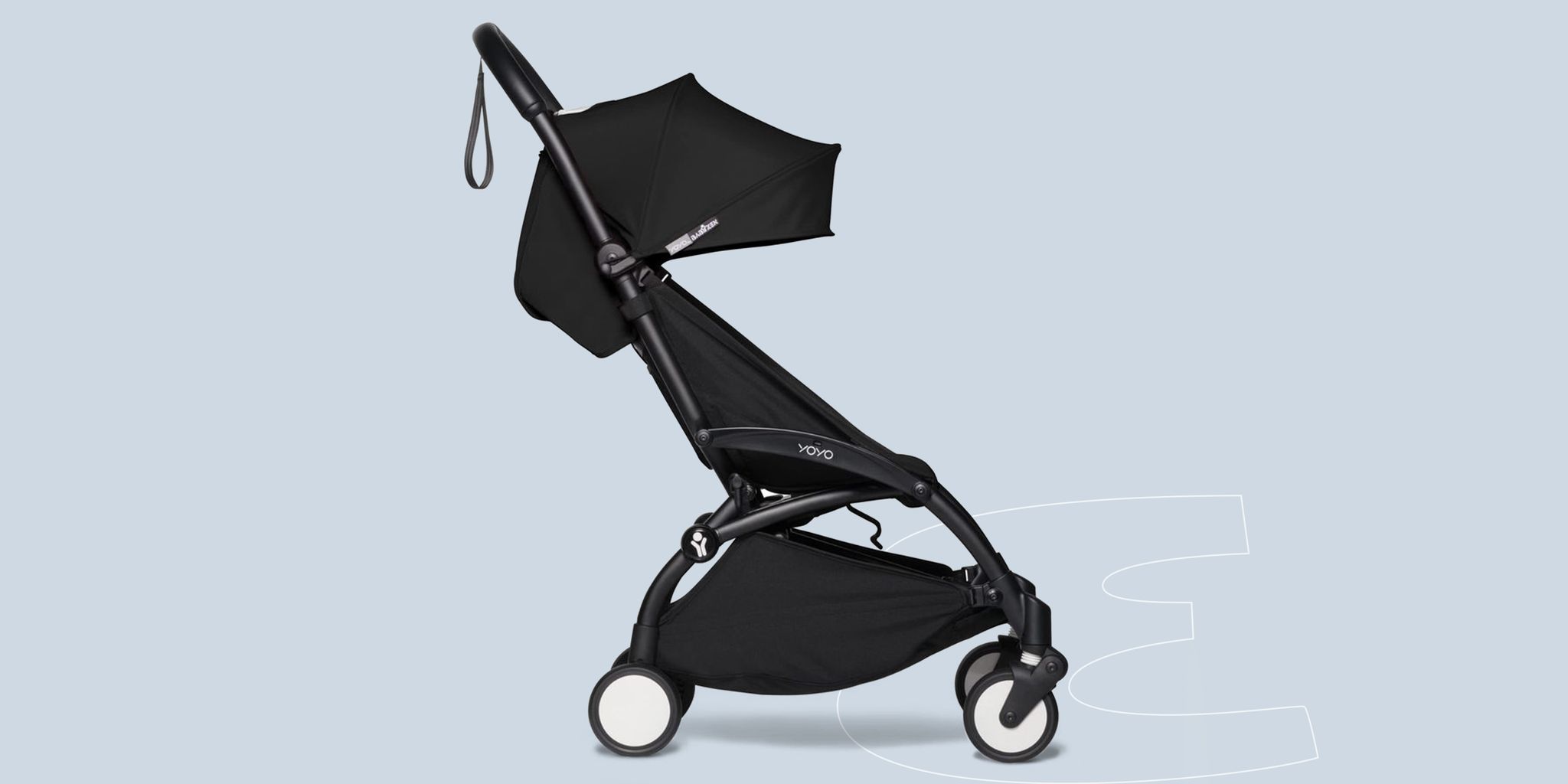
The 8 Best Travel Strollers for Dads Navigating Airports and City Streets
These are the ones that’ll make your life easy and your kids happy.
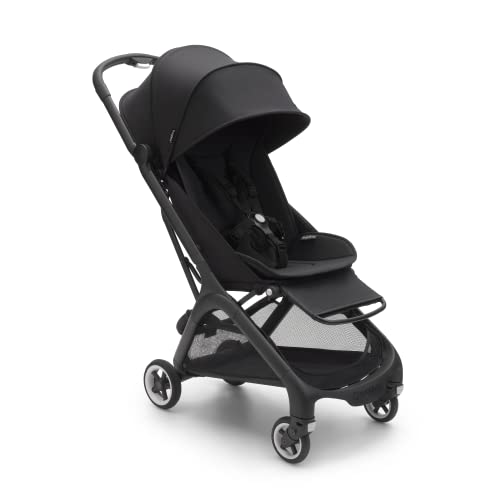
Best Overall Travel Stroller
Bugaboo butterfly stroller.

Comfiest Stroller
Gb qbit+ all-city stroller.

Best Budget Stroller
Babygap classic stroller.
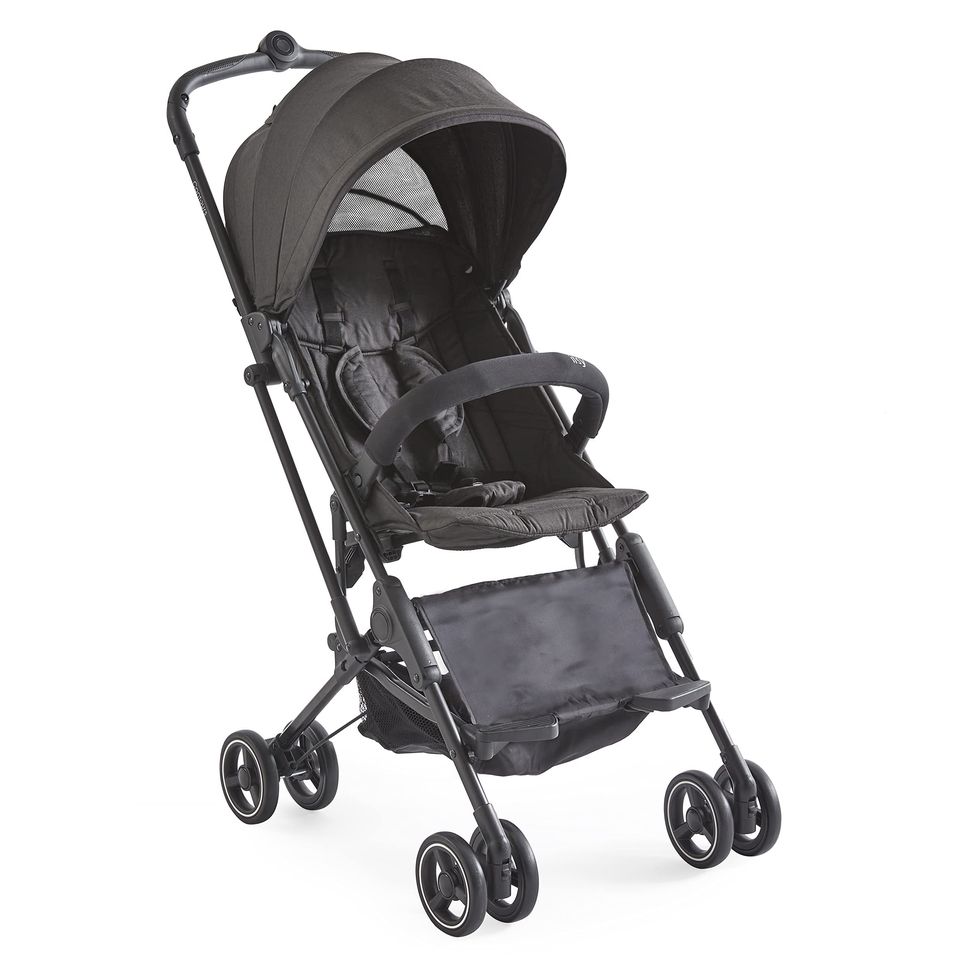
Easiest Stroller to Carry
Contours itsy lightweight travel stroller.
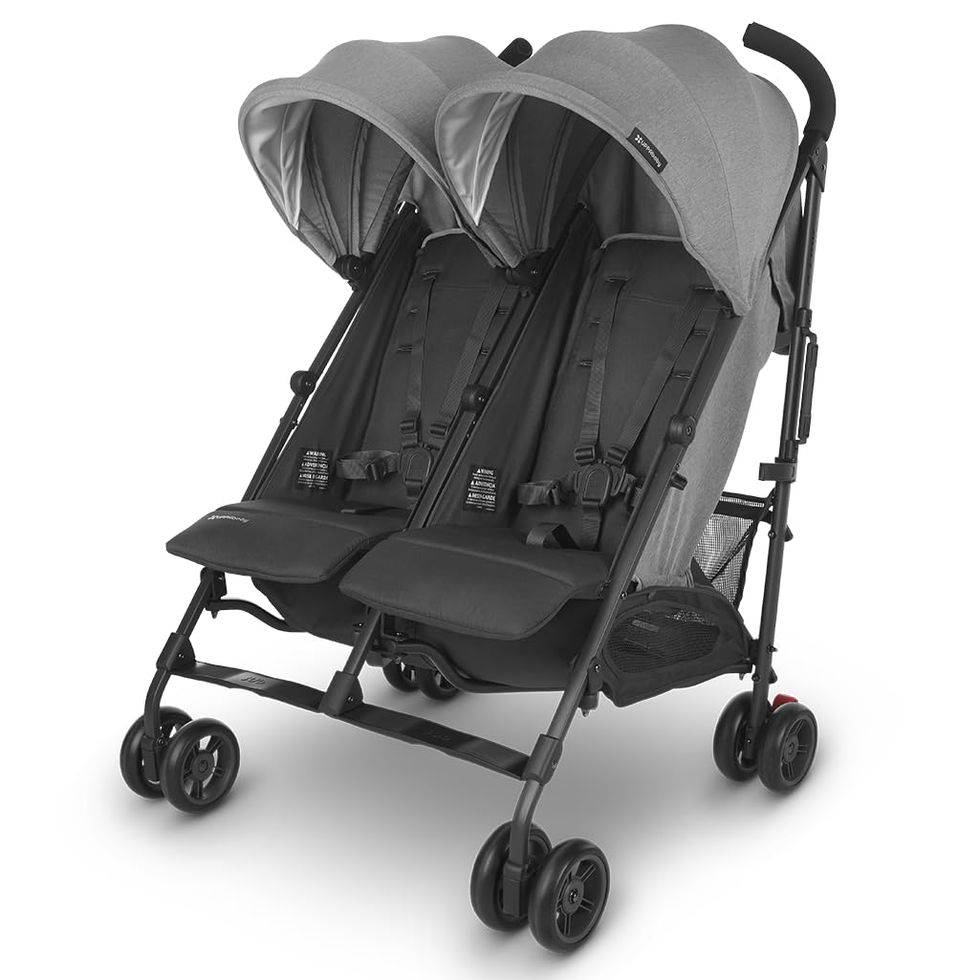
Best Stroller for Twinning
Uppababy g-link v2 stroller.
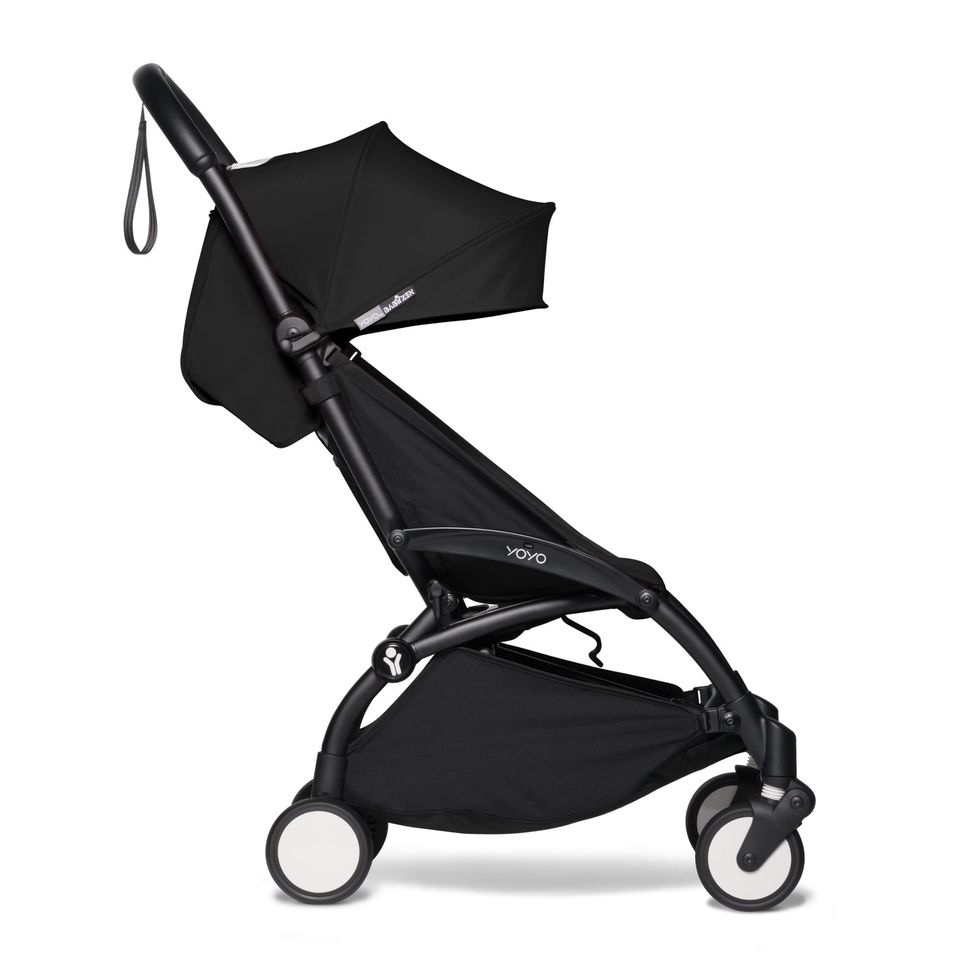
Best Stroller for City Dwellers
Babyzen yoyo2 stroller.
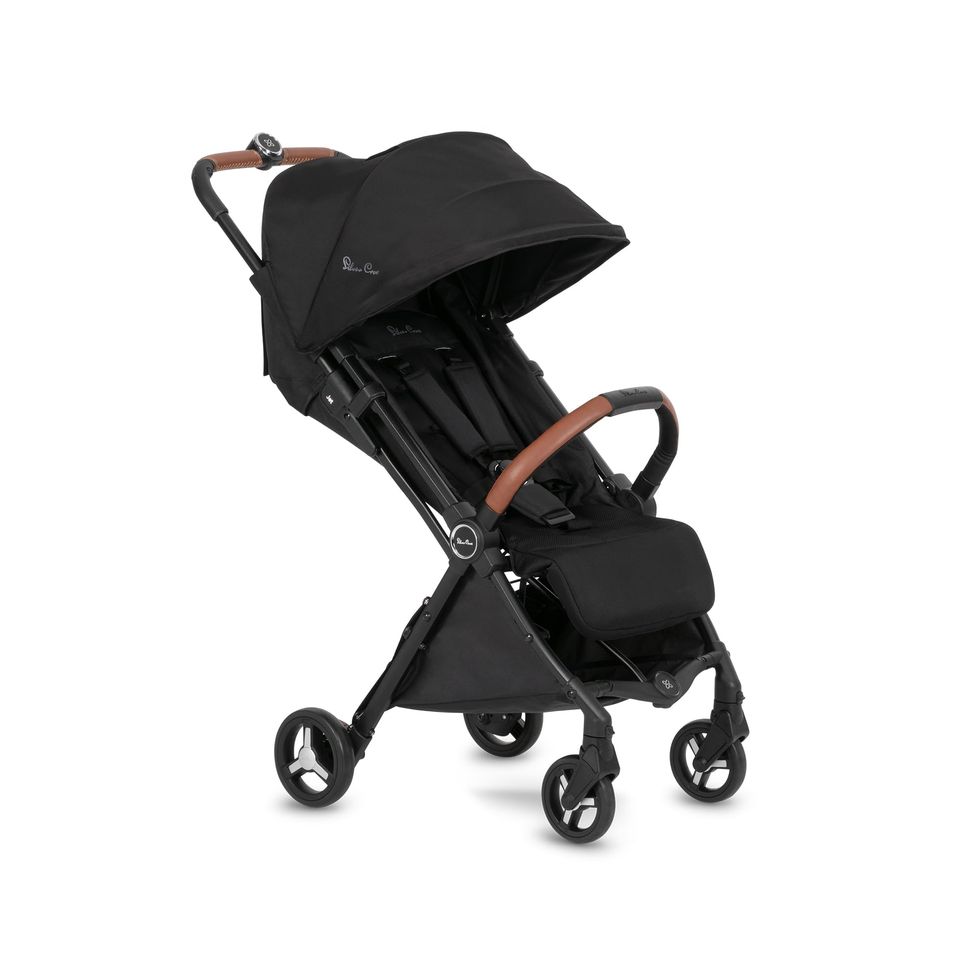
Smoothest Handling Stroller
Silver cross jet 3 super compact stroller.

Best Stroller for Flying with Infants
Doona infant car seat and stroller.
Thankfully, my wife and I come prepared. The Bugaboo Butterfly travel stroller is a godsend when running around with small humans . It opens quickly and easily, it’s light and portable, and it holds kids up to fifty pounds. That means even though my two-year-old daughter is usually the one hitching the ride, when my five-year-old son’s legs get tired (or a sibling rivalry inevitably rears its head), he can hop in there, too.
All of which is to say that when the Koenig clan finally does arrive at the gate, all four of us are in relatively good spirits—even the two year old. The Bugaboo is a great get, but there are a number of other travel strollers out there that could be a good match for you and yours. Read our full breakdown of the varieties we’ve tested and reviewed.
The Butterfly is aptly named, as it feels like it is actually floating over the ground, even when on grass and gravel. The seat must be especially comfortable, because my two year old surely would have let me know in no uncertain terms were it not. The cargo space on the Bugaboo is good enough for emergency drinks, snacks, Mom’s bag, and Dad’s travel hoodie.
Opening and closing the Butterfly is a cinch, and with Irish blood on both sides, my kids appreciate the sun canopy as well. The stroller is small enough to keep as a carry-on, but if you do decide to check it, be sure to fold up the footrest so it doesn’t get damaged in transit.
There’s not much to dislike about the All-City stroller, and that includes its price point, which is a good chunk less than the Bugaboo’s (right in the $300 range, depending on when and where you shop).
This is a stroller with comfortable padding in the seating area and folding mechanisms that won’t induce public meltdowns (from dads, not toddlers). It’s also rather maneuverable and has a silky ride that is really impressive. The only bona fide knock against it is that at 17.6 pounds, it’s pretty bulky, and without a shoulder strap, heaving it around is a real workout.
For an item that costs around $100, the Classic Stroller from babyGap can take a beating. That’s a pleasant surprise for those of us dads who tend to hulk out on things from time to time. (Hi, it’s me. I’m the problem, it’s me.)
This stroller also has a comfortable seat with a five-point harness and a sun canopy overhead with a peekaboo window so you can keep an eye on Junior. The only thing not to like about it is that the folding lock on the bottom-right side takes a little getting used to, which might annoy impatient dads... Not that I know anyone like that.
The most minimalistic of the strollers on this list, the Contours Itsy Lightweight Travel Stroller reminds me of something my wife says every time I float the idea of buying a new car. She points out the window at the old beater in our driveway and says, “Does it still roll?”
This stroller has no cupholders and limited storage space. It also doesn’t recline, which might be an issue for bigger kids. But it does, in fact, still roll—rather smoothly at that. And at just 12.3 pounds and $170, this will be a sensible option for many.
Before I had kids, I used to think I wanted twins. What a sweet and innocent child I was. One kid at a time has been plenty for me, and for those dads in the trenches with twins, you have my respect.
For you guys, the Uppababy G-Link V2 Stroller is a very solid choice. I think of it as the Cadillac of travel strollers—comfortable, smooth, and (obviously) rather large. It’s actually too big to keep as a carry-on, so be prepared to check it. But realistically, there is very little not to like here.
Since I’m a full-fledged suburban dad now, car seats are my current worry. But I lived in cities for twenty years of my life, so I am very sympathetic to space concerns. The best travel stroller out there for the urban denizens among us needs to be small and easy to maneuver—enter the Babyzen YOYO2.
This zippy little thing is great for weaving through armies of commuters on busy city sidewalks. It also folds up teeny, and at 13.7 pounds, it’s an easy carry with a padded shoulder strap. The only downside is that it’s not fond of rough surfaces, which is not really a big deal as long as you avoid New York City potholes.
You know that feeling when you’re cutting wrapping paper and the scissors begin to glide? That’s how it feels to push the Silver Cross. It’s also got a five-point harness and an adjustable footrest, plus it fully reclines. The sun canopy is workable if not the largest I’ve seen.
A fun trick is that this stroller folds into a little rolling-suitcase-looking thing—the leather-wrapped bumper bar turns into the handle. The main drawback here is that cargo space is at a bare minimum. The Silver Cross Jet 3 is best thought of as the roadster of travel strollers.
Traveling with infants—and really doing anything with infants, now that I say it out loud—has an added degree of difficulty. Gently put: You’re going to want all the help you can get. That’s why I like this entry from Doona. It doubles as a car seat and stroller, so it gets high marks for versatility. It is also ready right out of the box for newborns (many other strollers need to be adapted for kids under six months). And, best of all, for you cosmopolites out there, it’s approved by both U.S. and European authorities for air travel.
The one issue with this stroller is that its max weight capacity is thirty-five pounds, so your child will likely outgrow it quickly. But it’s great to save for a second kid or to share with friends.
What to Consider When Buying a Travel Stroller

Don’t just trust our picks; see how we graded them.
Movement When you’re pushing around one, two, or (godspeed) three-plus kids, you want the stroller to make it easy on you. If you’re in the city, you only need it to be good on sidewalk asphalt and epoxied airport floors. If you’re in the burbs, gravel and dirt might come into the equation.
Weight When it’s folded up, you want it to be easy to handle. This is especially true for carry-on strollers.
Storage Everyone in the family has essentials: Baby’s snacks, Dad’s drink, Mom’s in-flight melatonin. A good stroller gives you space for all of it.
Ease of use Is it difficult to fold? Does it fit in an overhead bin? Is the carry-strap sufficient for its size? Stuff like this is important.
Versatility This is critical when you’ve got multiple kids and the older ones like to campaign for stroller privileges. What is the weight limit? Also, if a stroller can recline, it’ll be more comfortable for bigger kids.

@media(max-width: 73.75rem){.css-1ktbcds:before{margin-right:0.4375rem;color:#FF3A30;content:'_';display:inline-block;}}@media(min-width: 64rem){.css-1ktbcds:before{margin-right:0.5625rem;color:#FF3A30;content:'_';display:inline-block;}} What We're Buying

The 11 Best Bongs for Smoother Smoking

The Only 5 PC Gaming Controllers Worth Your Money

The 18 Best Places to Shop for Outdoor Furniture
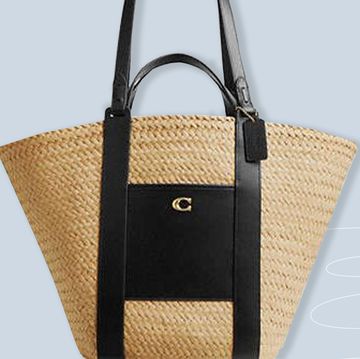
23 Great Mother's Day Gifts She Really Wants
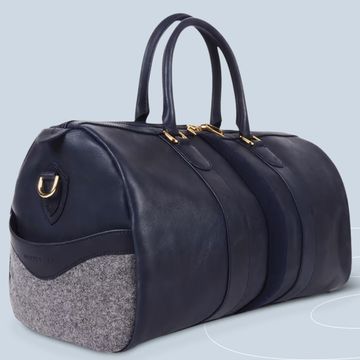
Who Knew Bespoke Post’s Sale Section Was This Good

The 4 Best Robot Mops for a Hassle-Free Life

75 Foolproof Gifts Your Wife Won’t Return

The 22 Best Gym Shorts for Men

The Best Swimsuits for All Your Aquatic Adventures

The 20 Best Khaki Pants Are More Than Just Chinos
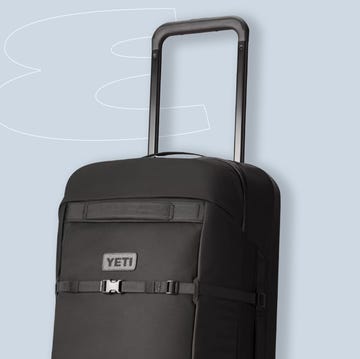
The 12 Best Checked Luggage Pieces for Traveling
- Search Please fill out this field.
- Manage Your Subscription
- Give a Gift Subscription
- Sweepstakes
- Destinations
The Best Hotels in Copenhagen
Book these editor-loved and T+L award-winning hotels in the Danish capital.
Amy Louise Bailey is a freelance content creator and media specialist. Her work has been published in Vogue , Harper’s Bazaar , Elle , Condé Nast Traveler, Bloomberg Pursuits , and Robb Report .
We independently evaluate all recommended products and services. If you click on links we provide, we may receive compensation. Learn more .
Hotel Danmark
Wander the streets of Copenhagen and you’ll discover why its residents are consistently ranked among the happiest people on earth. Everything is pristine and charming: rainbow-hued buildings line the canals; there are historic landmarks, Michelin-starred restaurants, cool cafes galore; and locals exude the laidback hygge mentality, cruising around on bicycles with flowers and freshly baked cinnamon buns in their baskets.
Sleek Scandinavian design and classical European grandeur is presented with equal enthusiasm, which is perhaps why it was named the World Capital of Architecture by UNESCO in 2023. And beyond the Danish capital’s aesthetic highlights, it boasts a variety of unique cultural attractions, from the whimsical Tivoli Gardens – the world’s oldest (and undoubtedly, the most elegant) theme park, to royal palaces, and The National Gallery of Denmark, where art aficionados admire Danish treasures alongside an impressive Matisse collection.
With a wave of hip new developments and Scandinavian Airlines flying direct from nine US cities, there has never been a better time to plan your trip. We’ve compiled this list of the best hotels in Copenhagen based on a combination of personal experience, editor-loved properties, and winners of T+L’s World’s Best Awards and It List. Read on to find our top picks.
Hotel d'Angleterre, Copenhagen
Hotel d'Angleterre Copenhagen
This luxurious hotel has been Copenhagen’s crown jewel for more than 250 years and is a center of celebration around Christmas, Easter, and key Danish holidays.
As you might expect, it is one of the more expensive options in the city.
Hotel d’Angleterre is to Copenhagen what Claridge’s is to London and The Carlyle is to New York : an iconic landmark that embodies the spirit of the city in the most elegant fashion. It has been a perennial favorite for over 250 years, hosting a revolving door of world leaders and luminaries that would accept nothing less than excellence. And excellence you are guaranteed, from the prime location in the center of Copenhagen’s largest public square, flanked by the Royal Danish Theater and Charlottenborg Palace, to luxurious rooms with sprawling marble bathrooms and every contemporary comfort that you could require.
Michelin-starred cuisine is on offer at the French-inspired Marchal, where you can order fine dining specialties like lobster topped with caviar and gougeres with truffle cream. And traditional Nordic spa treatments can be experienced at the hotel’s wellness center, Amazing Space, home to the only pool in inner Copenhagen. D'Angleterre seamlessly blends old-world grandeur with modern Scandinavian luxury, and it was ranked on Travel + Leisure’s World’s Best Awards in 2021 and 2023.
The Details:
- Neighborhood: Kongens Nytorv
- Distance From Airport: 6 miles
- Nearby Attractions: Royal Danish Theater, Charlottenborg Palace, Amalienborg Palace, Nyhavn
- Accessibility: Wheelchair accessible
- Rates: From $788 per night
- Wi-Fi: Complimentary
Also available to book at Expedia.com
This hotel takes sustainable hospitality to another level: it’s carbon negative, almost entirely plastic-free, and if you book a room on the hotel’s website, it will donate a tree on your behalf.
You’ll often find a DJ spinning decks in the courtyard at night – a dream for some, a nightmare for others.
Located in the hip Vesterbro neighborhood, this stylish 88-room hotel opened right before the pandemic and has since become one of the most coveted places to stay in Copenhagen. It featured on Travel + Leisure’s It List in 2022 and the World’s Best Awards in 2023, and as is often the case with any trendy new hotel, it is the destination du jour for professionals arriving for key cultural events, such as Copenhagen Fashion Week and 3daysofdesign.
Café Coco is located at the entrance of the hotel and is the primary dining offering on site, with a cool, casual atmosphere. But if you’re in the mood for something a bit more formal, Coco’s Mediterranean-inspired sister restaurant, Delphine, is located 30 steps away. Room sizes vary from singles at 150 square feet to junior suites at 270 square feet, and the larger rooms include a sitting area and bathtubs. Overall, it’s an excellent option for individuals, couples, and business travelers heading to Copenhagen.
- Neighborhood: Vesterbro
- Distance From Airport: 8 miles
- Nearby Attractions: The Glyptotek Museum, The Meatpacking District, Tivoli, Sankt Jørgens Park
- Rates: From $202 per night
Hotel Sanders
It’s full of mid-century character and is located just opposite the Royal Danish Theater.
Rooms do not have coffee machines or kettles.
Rendered in a calming neutral color palette, Hotel Sanders is a stylish boutique hotel with 53-rooms spread across four townhouses. It featured on Travel + Leisure’s It list in 2018 and is a popular option for design lovers, with rooms that look like they’ve been decorated over the decades rather than dressed in an artificial mid-century theme.
The location is ideal, right in the historic center by Nyhavn Canal (the picture that’s likely to come up when you Google “Copenhagen”), and it’s within walking distance to key attractions and cafes. On-site dining consists of Sanders Kitchen – an all-day eatery with a simple evening menu serving delicious seasonal fare (think: dishes like salt-baked celeriac, vol-au-vent, and stracciatella with pumpkin and sage), and it is also home to Tata – a vintage-style cocktail bar that comes alive at night with both locals and travelers alike.
- Neighborhood: Historic center, near Nyhavn Canal
- Distance From Airport: 5 miles
- Nearby Attractions: Nyhavn Canal, The Royal Theater, The New Opera House, Designmuseum Denmark, Amelienborg Palace
- Rates: From $255 per night
The Audo Residence
It feels like stepping into an interior design photoshoot, which is unsurprising, given it’s the hospitality branch of luxury furniture brand, Audo Copenhagen.
It’s not a traditional hotel, so it lacks some of the standard facilities that you may require (however, if you want a workout, it has a partnership with popular local gym Nordic Strong).
With only 10 well-edited rooms, The Audo Residence takes the concept of a boutique hotel to another level, feeling part concept store, part Airbnb. The rooms are spacious, with different residential-style configurations, ranging from the penthouse to studio suites, and it features stylish decor throughout, with pieces from Audo’s contemporary furniture collection, all available for purchase, should you be inspired to recreate the look at home.
Bathrooms follow the same Scandi luxe theme, and there is a restaurant on site, where organic sharing plates are served during the day and a seasonal three-course menu is offered at night (a favorite is the rib-eye sandwich on brioche with wasabi and leek mayo). Also within the same complex is the official showroom for Audo Copenhagen, so if you’re a design aficionado, this is an excellent option.
- Neighborhood: Nordhavn
- Nearby Attractions: Nordhavn Bassin, Rundetaarn, Strøget
- Rates: From $405 per night
Manon Les Suites
Also available to book at Agoda
It has a lovely tropical-style pool that feels more like Bali than Copenhagen – a unique culture mash.
If you’re seeking something that feels distinctly Scandinavian, this is not the place – it has a jungle-style theme rather than the classically minimalistic vibe that the city is known for.
Located in a former factory in the ultra-hip Vesterbro neighborhood, Manon Les Suites is unlike any other hotel in the city. The aesthetic takes inspiration from Bali, with a pool that is supremely photogenic and a rooftop that is perfect for sunbathing, should you want your city escape with a side of resort-esque relaxation. The 87 suites are generously sized, outfitted in eco-friendly furnishings with kitchenettes and sofa beds, making it a great option for families or groups of friends (especially if you don’t intend on having every meal out). The hotel’s restaurant, Chapung, is also notable, serving Asian fusion classics from the sixth floor overlooking the city.
- Distance From Airport: 9 miles
- Nearby Attractions: Tivoli, Rundetårn, Glyptoteket, Rosenborg Castle
- Accessibility : It is not ideal for wheelchair access given there are doorsteps in the rooms
- Rates: From $245 per night
It has a rooftop terrace with 360-degree views across the city, plus a complimentary wine hour.
Some of the smaller rooms are indeed small (as in, best suited for one person).
Hotel Danmark follows the classic Copenhagen formula of minimal decor, organic food, and a hipster-luxe vibe. Its standout attraction is the rooftop terrace, which offers impressive views across the city, and in the summer months, it hosts a series of events and musical acts, attracting a mix of local denizens and international guests. There are 89 rooms that are indeed compact: the largest of them all is the junior suite, which is 322 square feet, and the smallest is a mere 130 square feet – just enough space to undress and roll into bed. It also has a bunk room category, which is a great option for groups of friends touring the city and simply seeking a clean and modern crash pad with an abundance of photogenic backdrops.
- Neighborhood: Copenhagen Cultural District
- Distance From Airport: 4 miles
- Nearby Attractions: Tivoli, The National Museum, City Hall, Strøget
- Rates: From $112 per night
It is located at the edge of Tivoli – Copenhagen’s equivalent of Disneyland – so it is a great option for families with kids.
It is one of the more costly options in the city (but it is worth it in our opinion).
Tivoli is one of Copenhagen’s most beloved attractions and the Nimb Hotel sits right alongside its fairytale grounds on the western side of the gardens. The exterior looks more like an opulent Moorish palace rather than a historic Danish building, and it’s particularly enchanting at night, when it’s illuminated with glowing lights.
As for the actual accommodations, there are 38 spacious rooms with views across the theme park and the gardens, all furnished with elegant, modern interiors. Amenities are a step above standard, with Bang & Olufsen televisions, Nespresso machines, cocktail cabinets filled with spirit decanters, and some with fireplaces and balconies. It also has a rooftop swimming pool and six restaurants on-site, so there are options to suit everyone.
- Nearby Attractions: Tivoli, The Kings Gardens, Amalienborg Palace
- Accessibility: Nimb Hotel offers three rooms that are particularly suitable for wheelchair users: rooms 18, 21, and 37
- Rates: From $998 per night
Nobis Hotel
Nobis Copenhagen
Also available to book at Mr & Mrs Smith
This Swedish-owned property is centrally located and luxurious, with detail-oriented decor and service.
Some of the rooms are located on street level and people can peer in, so there is not a lot of privacy – we would suggest requesting something on a higher level.
Located in the building that formerly housed the Royal Danish Conservatory of Music , Nobis is the sister property of the luxurious Nobis Hotel Stockholm, marking the Swedish hospitality group’s first foray outside of Sweden. The interiors have been designed to respect the building’s heritage, blending original period details with modern Scandinavian minimalism.
It has 75 rooms, including four suites, all of which contain high ceilings that provide the illusion of having even more space. Interior highlights include plush furnishings, such as the Duxiana mattresses on steel four-poster bed frames, Italian marble bathrooms, and bath products by Byredo – certainly better than your average list of amenities. Modern renditions of Nordic fare can be found at the hotel’s restaurant, NOI, and you can enjoy elegant seasonal cocktails at the sleek Marble Bar (which does an excellent espresso martini with butterscotch foam). It also has a wellness center with a pool, sauna, gym, and lounge – ideal for all of those hygge moments.
- Nearby Attractions: Tivoli Gardens, Ny Carlsberg Glyptotek, Danish Architecture Center, City Hall
- Accessibility: Wheelchair accessible with two adapted rooms available
- Rates: From $810 per night
Hotel Ottilia
Also available to book at Travelocity
It’s a dream destination for beer lovers, housed in the former Carlsberg brewery building. And in the spirit of imbibing, it has a wine hour and a nightcap hour, on the house for all guests.
The area is still being developed, so there aren’t as many shops and cafes nearby as there are in other neighborhoods.
This industrial hotel is housed in the former Carlsberg brewery building in the up-and-coming Carlsberg City district. It has a distinct façade lined with giant Instagram-worthy gold circles, and inside, you’ll find original architectural details, including steel beams and concrete walls.
The raw, minimalist theme continues throughout the hotel’s 155 rooms, dressed with herringbone floors with metal tables and clean, simple furnishings rendered in a mosaic of block-colored neutrals – think charcoals, tans, and icy whites. On top of the hotel, you’ll find Tramonto Rooftop – an Italian restaurant and bar with impressive 360-degree views across the city – a popular place for both locals and travelers during the warmer months. It also features a small fitness room and in-room fitness kits are available as well.
- Neighborhood: Carlsberg City District
- Nearby Attractions: Copenhagen Zoo, Carlsberg Visitor Center, The Hillhouse Museum, Cisterns in Søndermarken Museum
- Rates: From $138 per night
- Wi-Fi: Complimentary, once you sign up for the newsletter
Villa Copenhagen
Also available to book at Hotels.com
It’s a travel industry favorite, renowned for running a slick operation and for its spacious suites.
It has 390 rooms, which is on the larger side for any hotel.
Since opening its doors in 2020, Villa Copenhagen has made a favorable impression among travel industry insiders, including Jaclyn Sienna India, founder and CEO at Sienna Charles, a luxury travel concierge. “My go-to accommodation is Villa Copenhagen, housed in a gorgeous century-old building. Their designer-furnished suites typically feature a master bedroom, a dining area, and a bathroom complete with a spacious freestanding bathtub.” Rooms are indeed more spacious than most in the city. As for the other highlights? “I highly recommend trying the pastries at their on-site bakery and the fish at the brasserie, which uses only locally-sourced ingredients,” India adds. “And I love starting my mornings doing yoga in the fitness room, and occasionally wrapping up the day with a session in the sauna."
- Nearby Attractions: Ny Carlsberg Glyptotek, Nyhavn, Tivoli, Rosenborg Castle
- Rates: From $303 per night
The Darling
It has a homey ambiance; plus, complimentary slippers and a bottle of champagne are served on arrival.
There is no elevator as the building dates back to the early 1700s.
This exclusive guest house contains two beautifully decorated residences that feel like you’re staying in the private apartment of a hip Danish friend rather than a hotel that you’re paying for. There are abstract artworks, whimsical wallpapers, and stylish examples of Danish decor throughout – everything looks like it’s been carefully collected over time by someone with good taste.
If you’re looking for more of a residence-style accommodation, where you have all the facilities that a private apartment would offer, this is a great option, given it includes a kitchen, living room, dining room, and a study, in addition to a spacious bedroom and bathroom. The inaugural residence named “The Grand,” also has a private outdoor terrace overlooking The Church of the Holy Spirit – a tranquil place to enjoy coffee in the morning. And despite the residential-style set up, it has a concierge that can provide all the services you would be able to access at a luxury hotel, including a driver, a chef, a masseuse, and even a florist.
- Neighborhood: Amagertorv
- Nearby Attractions: Strøget, Rundetaarn, Copenhagen University
- Accessibility: Not wheelchair accessible
- Rates: The Classic begins at $1,028 and The Grand begins at $1,352 per night
Hotel Skt. Annae
It has an authentic Scandinavian vibe and is located close to many of the city’s star historic attractions.
Like many of the hotels in the city, rooms are on the smaller side and can feel a bit cramped.
This authentic hotel is located in Frederiksstaden – an area known for its architectural beauty and well-preserved buildings from the Rococo era. Nearby you will find notable historic attractions, including Amalienborg Palace, where the Danish royal family resides, as well as the Marble Church (Frederik's Church), Amalie Garden, and the Nyhavn neighborhood is just a three-minute walk away.
Accommodations vary from the penthouse to apartments, suites, and rooms that are suitable for solo travelers and couples, and the decor has a warm, lived-in feel.
- Neighborhood: Frederiksstaden
- Nearby Attractions: Amaliehaven, Amalienborg Castle, Kongens Nytorv, Christiansborg Palace, Rundetårn, Castle Rosenborg
- Rates: From $173 per night
Hotel CPH Living
It is a floating hotel located on a boat – a unique option for anyone who is interested in experiencing an unconventional stay.
Given it's on the water, it is not for everyone, and it's not ideal for anyone who suffers from motion sickness.
For something totally unique, consider this floating boutique hotel docked in Copenhagen’s city center. It has 12 rooms throughout, designed with wooden floors, simple furnishings, and large windows with front-row views of the water – it feels like being on a very small cruise ship.
A basic breakfast is provided in the mornings, but there is no restaurant on site, so you’ll need to venture out for dining. One of the highlights is the terrace with sun loungers, which is lovely if you’re visiting over the summer months. If you’re a maritime enthusiast or enjoy hotels that are a bit more unconventional, this could be the place for you.
- Neighborhood: Christianshavn
- Nearby Attractions: Danish Royal Library, National Museum of Denmark, Christiansborg Palace, Tivoli Gardens
- Accessibility: It is not suitable given it is on a boat
- Rates: From $123 per night
It’s a lively social hub, where you won’t feel the need to leave for dinner or drinks in the evening for a taste of the nightlife scene.
If you want some peace and quiet, this may not be the place, as it can be noisy with DJs and concerts on weekends.
SP34 is a hip establishment from the hoteliers behind some of Copenhagen’s most revered design hotels, and the group’s signature style is evident throughout, with Nordic decor and a cool, minimalist vibe. The 188-room hotel opened in 2014, with three restaurants (including an organic burger joint, a plant-focused bistro, and a casual eatery, Din Nye Ven), four bars, a private cinema, and a terrace across three connected apartment buildings.
There are exposed brick walls, calming neutral tones, and clean, minimal Scandinavian furniture is featured throughout. It’s a great place for creatives that thrive in a lively scene, and on Friday nights, there are DJs and musical acts, which is ideal if you want to immerse yourself in the local nightlife culture without having to leave the property.
- Neighborhood: Latin Quarter
- Nearby Attractions: City Hall Square, Strøget, gourmet food market, Torvehallerne
- Rates: From $119 per night
Radisson Collection Hotel, Royal Copenhagen
Rickard L. Eriksson
It is located in Copenhagen’s first skyscraper, and as such, it provides great views across the city.
For a hotel chain brand, prices can be steep.
Business travelers gravitate toward this popular hotel located within Copenhagen’s first skyscraper (as you might expect from a corporate-friendly hotel chain like the Radisson), which has all of the big hotel amenities one could need: conference rooms, event spaces, fitness facilities, and conveniences like dry cleaning.
Rooms have sprawling views across the city, given they’re positioned high in the sky, and the hotel underwent a renovation in 2018, so everything feels fresh and polished. There are a variety of room types, but the hotel’s crown jewel is the Panorama Suite, which is almost 550 square feet and resembles a retro airport lounge. For dining, there is a Peruvian Japanese restaurant, ISSEI Copenhagen, that is not to be missed, as well as a classic breakfast selection. It is conveniently located near key transport hubs, vibrant neighborhoods, and key attractions, including Tivoli.
- Nearby Attractions: Christiansborg Palace, Tivoli Gardens, Rundetaarn
- Rates: From $191 per night
Know Before You Go
Embrace the concept of hygge.
“The essence of hygge is something that is very unique, though hard to pinpoint, especially in the English language where it often gets translated to cozy,” says Mads Østergaard, U.S. head of PR and Press for VisitDenmark. “Hygge is more like a state of mind, an ambiance, a feeling, or a vibe. Think cozy sweaters, a warm fireplace, good friends around you, a laid-back feeling, family, the feeling of being sheltered. Though all that is not uniquely Danish, the Germans call it ‘Gemütlichkeit,’ the Norwegians call it ‘Koselig,’ and the Dutch call it ‘Gezelligheid,’ we are probably the only ones who use it as a verb. We can 'hygge' with each other. We can ask a good friend if we want to 'hygge.' As an adjective or an adverb, it constantly gets thrown around in the Danish language as a way of saying ‘nice.’ Was it a good party? Yes, it was ‘hygge-ligt.’ That shows how highly valued hygge is.”
Most people speak English
“Undskyld, jeg forstår ikke, hvad du siger! Just kidding!” Østergaard jokes. “Practically everyone in Denmark speaks English. Nowadays, we start learning in first grade, but my grandparents’ generation spoke English very well, too. As a tiny nation that wants its voice to be heard on the world stage, we quickly realized that we needed to speak English.”
The best way to get around is by bicycle
“About 50 percent of Copenhageners bike to work every day, including politicians and on rare occasions, the royals,” Østergaard says. “Biking is a safe, affordable, and green way to get around in the city, and continued municipal investment has made this number rise over the last years. Copenhageners might bike fast to get from point A to B, so watch out in rush hour. Luckily, most of our designated biking lanes are quite spacious. And if you’re not comfortable on the ‘iron horse’ as we call it, our new subway system will get you anywhere in the city with new improvements getting you to places like Sydhavnen in the southern part of Copenhagen.”
Experience the city like a local
Østergaard recommends experiencing Copenhagen like a local. “Ride a bike through the biking lanes that snake through the city like green highways. Share a meal with Copenhageners at one of our great communal dining destinations. And if the temperature allows it, jump in the water in our clean canals at some of our designated harbor-baths. As a former Copenhagener, these were all part of my everyday life,” he explains. “And don’t just stay in the city center. Explore the many neighborhoods like the new Carlsberg neighborhood on the former brewing grounds of the beer giant with an eclectic mix of new and old architecture or the vibrant and multicultural neighborhood of Nørrebro. Or go even further – with a train ride of 30 minutes you can experience idyllic fishing villages with colorful houses like Dragør or see King Hamlet’s Elsinore with the Majestic Kronborg Castle overlooking the narrow strait between Denmark and Sweden.”
How We Chose These Hotels
This story was written by T+L contributor Amy Louise Bailey who has spent time in Copenhagen and has family and friends that are currently living in the city. She also interviewed Mads Østergaard , U.S. head of PR and Press for VisitDenmark and a former resident of Copenhagen, and spoke with Jaclyn Sienna India , founder and CEO at Sienna Charles, a luxury travel concierge. Several of these properties were featured on our coveted World’s Best Awards List and It Lists, in which Travel + Leisure readers vote on their favorite hotels. Furthermore, the key attributes we consider when recommending hotels are aligned with our core values, which can be viewed here .

IMAGES
VIDEO
COMMENTS
Here are 5 of our favourite non-fiction Chile travel books and guides, including both classics and recent releases. Lonely Planet Chile & Easter Island (2018) The latest edition of Lonely Planet's Chile & Easter Island guide is as comprehensive as we've come to expect from the iconic travel publisher. Covering the entire country, from its ...
The 20 best chile travel guide books, such as Chile, Moon Chile, Insight Guides China and Fodor's Essential Chile.
Best Sellers in Chile Travel Guides. #1. The Wager: A Tale of Shipwreck, Mutiny and Murder. David Grann. 15,134. Hardcover. 85 offers from $14.69. #2. The Wager: A Tale of Shipwreck, Mutiny and Murder (Random House Large Print)
Fodor's "Essential" guides have been named by Booklist as the Best Travel Guide Series of 2020! Fodor's Essential Chile travel guide includes: AN ILLUSTRATED ULTIMATE EXPERIENCES GUIDE to the top things to see and do; MULTIPLE ITINERARIES to effectively organize your days and maximize your time
The House of the Spirits. Isabel Allende. CATEGORIES: Classic/Culturally Significant. Often called "the world's most widely read Spanish-language author," Allende has written numerous instant classics and was awarded the U.S. Presidential Medal of Freedom in 2014.
Accommodation - Hostel dorms start around 9,800 CLP per night and private rooms come in at around 22,000-30,000 CLP. Free breakfast and free Wi-Fi are common, and many hostels have self-catering facilities if you want to cook your own food. Budget hotels are inexpensive in Chile with prices starting at 25,000-35,000 CLP per night for a basic double or twin bed (though expect to pay closer to ...
Discover the best books in Amazon Best Sellers. Find the top 100 most popular Amazon books.
The best books on Chile: The House of the Spirits by Isabel Allende, A Nation of Enemies by Pamela Constable and Arturo Valenzuela, and José Donoso's Curfew. World library Global development ...
1. Travels In A Thin Country by Sara Wheeler. This first-person account of traveling through Chile by British journalist and writer Sara Wheeler follows her adventures from the tippy top of Chile all the way down to Patagonia in the south, and then even further, to Chile's outpost in Antarctica, Villa de las Estrellas.
Every month, we release lots of new books into the wild - from brand new guides and the latest editions to exciting new coffee table, gift and children's titles ... This successful series is perfect for travel enthusiasts with a passion for wine. Discover the most interesting wineries and the best places to stay and where to eat in wine ...
Planning Your Trip . Best Time to Visit: Most trips are timed to make the most of fine weather in Patagonia in the south, with the austral spring, summer, and early autumn (October through April) good months for clear, warm days. Language: Chileans speak Spanish but thanks to their penchant for slang and dropping constants at the end of words, bringing a phrasebook is recommended even for ...
Read expert recommendations. "A story from Chile, mainly Santiago. It's highly original, very political, with a totally wonderful use of words. The words are perfectly turned. It's one of those books where the skill of the wordsmithery tumbles you into new stories, into shared experiences. Again, a very, very lyrical translation as well.".
Chile Travel Guide 2023-2024: Discover Chile A First-Timers Guide to the country's Must-see Destinations. $1999. Ayahuasca Handbook: A Beginner's Guide to Spiritual Awakening, Inner Wisdom & Personal Transformation-Includes Step-by-Step Preparation For Your Ceremony, Finding Your Shaman, Integration & Aftercare. 31.
Bruce Chatwin. In Patagonia is a travel book written by Bruce Chatwin, first published in 1977. The book is not a traditional travel guide but rather a literary exploration of the landscapes, people, and legends that define Patagonia. Chatwin weaves together his own experiences, encounters with locals, historical anecdotes, and his reflections ...
Return to Calama and take a flight to Santiago. Buses leave from the Terminal Alameda (Av. Alameda 3750) and the Terminal San Borja (San Borja 235) in the city center for Valparaíso (two hours, $3,000 CLP/$4 USD), a historic harbor city set across 42 hills and home to a wealth of street art.
Family Travel. 8 of the best things to do in Chile with kids. Sep 23, 2023 • 7 min read. With some patience - and a bit of basic Spanish - the thin South American nation of Chile can be the perfect setting for a family adventure. ... Book popular activities in Chile. Guidebooks Purchase our award-winning guidebooks. Get to the heart of ...
Get information on Santiago Travel Guide - Expert Picks for your Vacation hotels, restaurants, entertainment, shopping, sightseeing, and activities. Read the Fodor's reviews, or post your own.
OCLC Number: 562108429. 364pp. Maisie's Discovery. Bessie Marchant. "In a remote part of Chile, Maisi is left alone when her Uncle Edwin dies, and she is taken in by the local English clergyman, John Graily and his sister Sue. Maisie learns secrets about her past, and John and Sue get caught up in a local revolution."
From Hunter S. Thompson's 1972 acid trip Fear and Loathing in Las Vegas to Herodotus's 440 b.c. Histories, these are the writer-approved best travel books.
The Absent Sea by Carlos Franz. This striking novel by Carlos Franz includes vivid details of the brutality experienced during Chile's 1973 military coup. The book's protagonist - the youthful and passionate judge Laura - is forced to flee her hometown in northern Chile after enduring unspeakable acts of violence.
Jack Kerouac's seminal novel should be compulsory reading for all nomads, backpackers and folks who want to live off the grid. In 'On The Road' discover 1950s underground America as Kerouac hitches backwards and forwards across the states in search of Jazz, drugs, sex and the meaning of life. Definitely, one of my favourite books to read ...
To book a Southwest flight via Chase, log in to your account on the Chase Travel web page or select "Book travel" on the "Benefits & travel" tab in the Chase mobile app. Select "Flights ...
Discover the best Chile & Easter Island Travel in Best Sellers. Find the top 100 most popular items in Amazon Kindle Store Best Sellers. ... (2024 TRAVEL GUIDE BOOKS Book 3) Wilbert F. Collins . Kindle Edition. 1 offer from $5.99 #20. CRUISING BETWEEN BUENOS AIRES AND VALPARAISO/SAN ANTONIO: 2021-22. Dr. Lew Deitch. 4.0 out of 5 stars ...
Illustrated with specially commissioned photography by Richard Hanson, Jackie Bennett's The Writer's Garden details the botanical gardens, vegetable plots, rolling hills and hermitages ...
Mid-to-late August is the best time for Americans to fly this summer, according to travel company Expedia. It's expected to be a less busy time, and Expedia says travelers can save up to $265 on ...
7 of the best all-inclusive experiences to book this year, from a travel planner. Kari Becker. 2024-04-19T14:14:02Z ... It's also home to Playa Norte, one of the best beaches in Mexico.
DK Eyewitness Chile and Easter Island (Travel Guide) $22.49. (38) Only 1 left in stock - order soon. DK Eyewitness Travel Guide: Chile and Easter Island takes you by the hand, leading you straight to the best attractions this country has to offer. DK's insider travel tips and essential local information will help you discover the best of Chile ...
The Silver Cross Jet 3 is best thought of as the roadster of travel strollers. Size Open: 35.4" x 17.7" x 39.5" Size Folded: 7.08" x 11.81" x 21.65" Weight: 13.6 lbs: Best Stroller for Flying with ...
These are the 15 best hotels in Copenhagen to book right now. ... The 50 Best Places to Travel in 2023. The 14 Best European Cities for Solo Travelers.